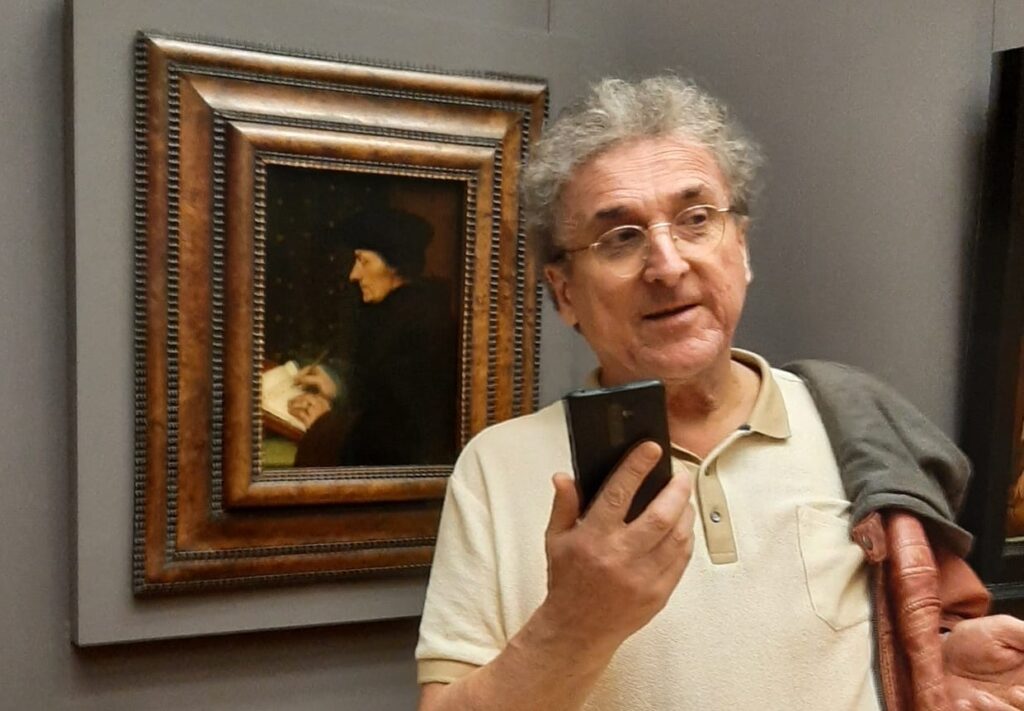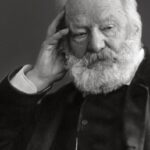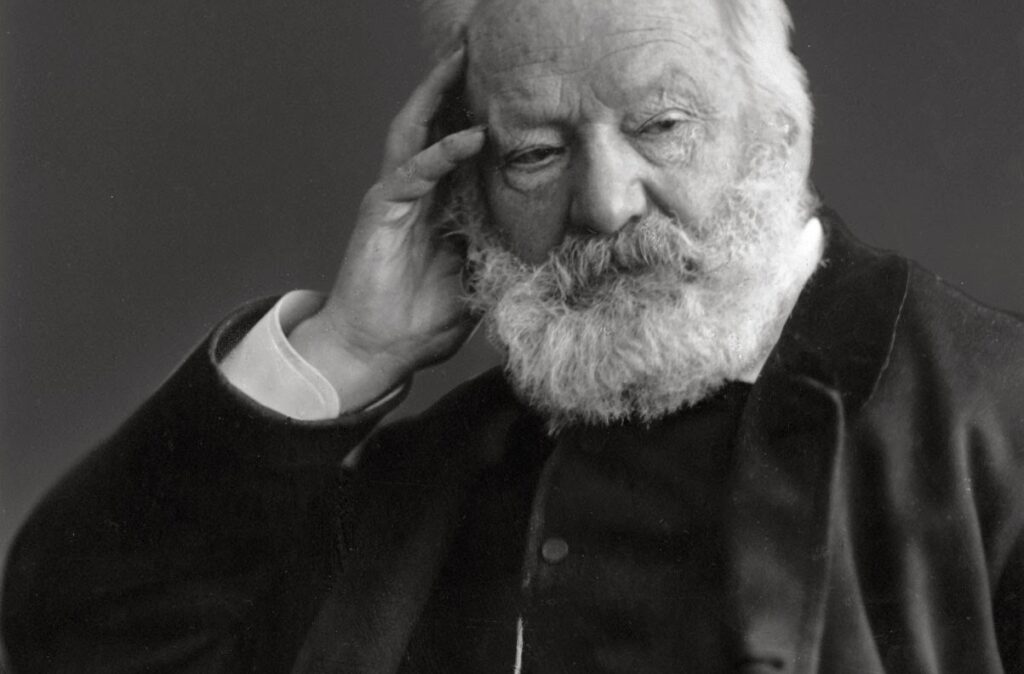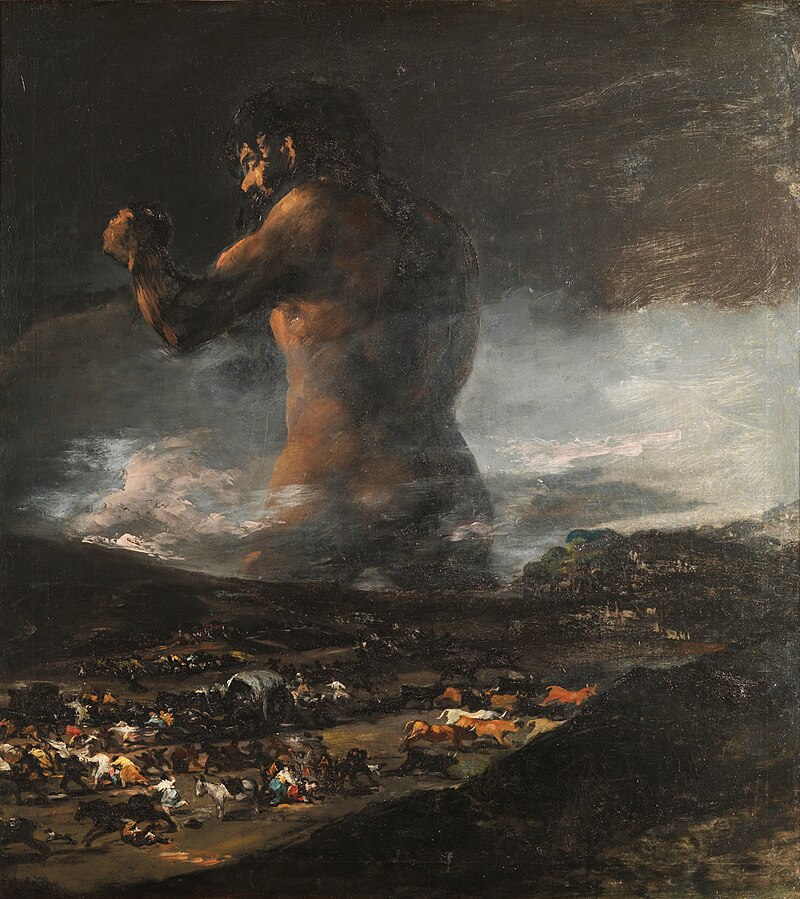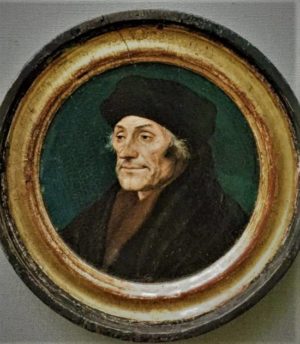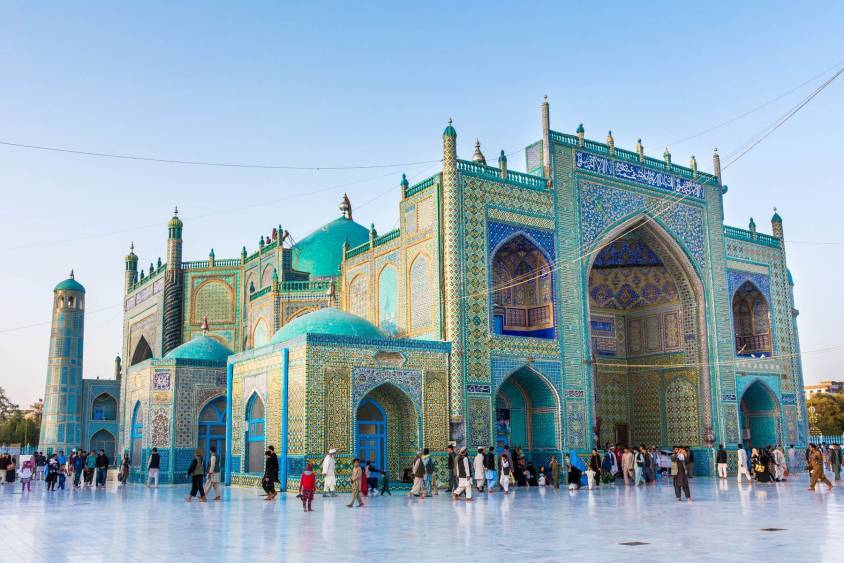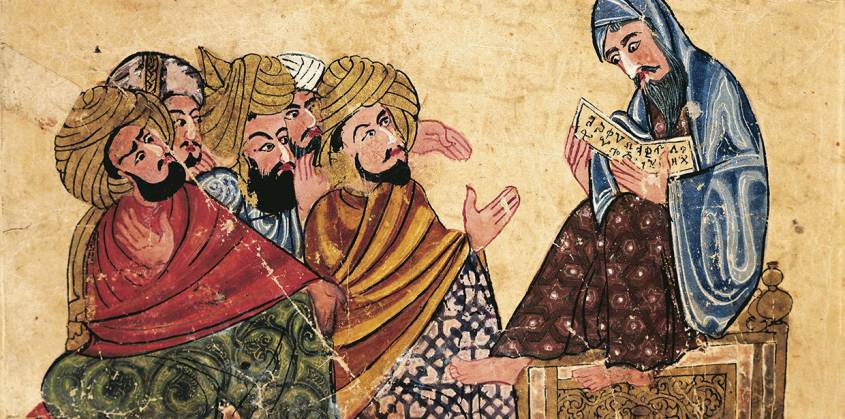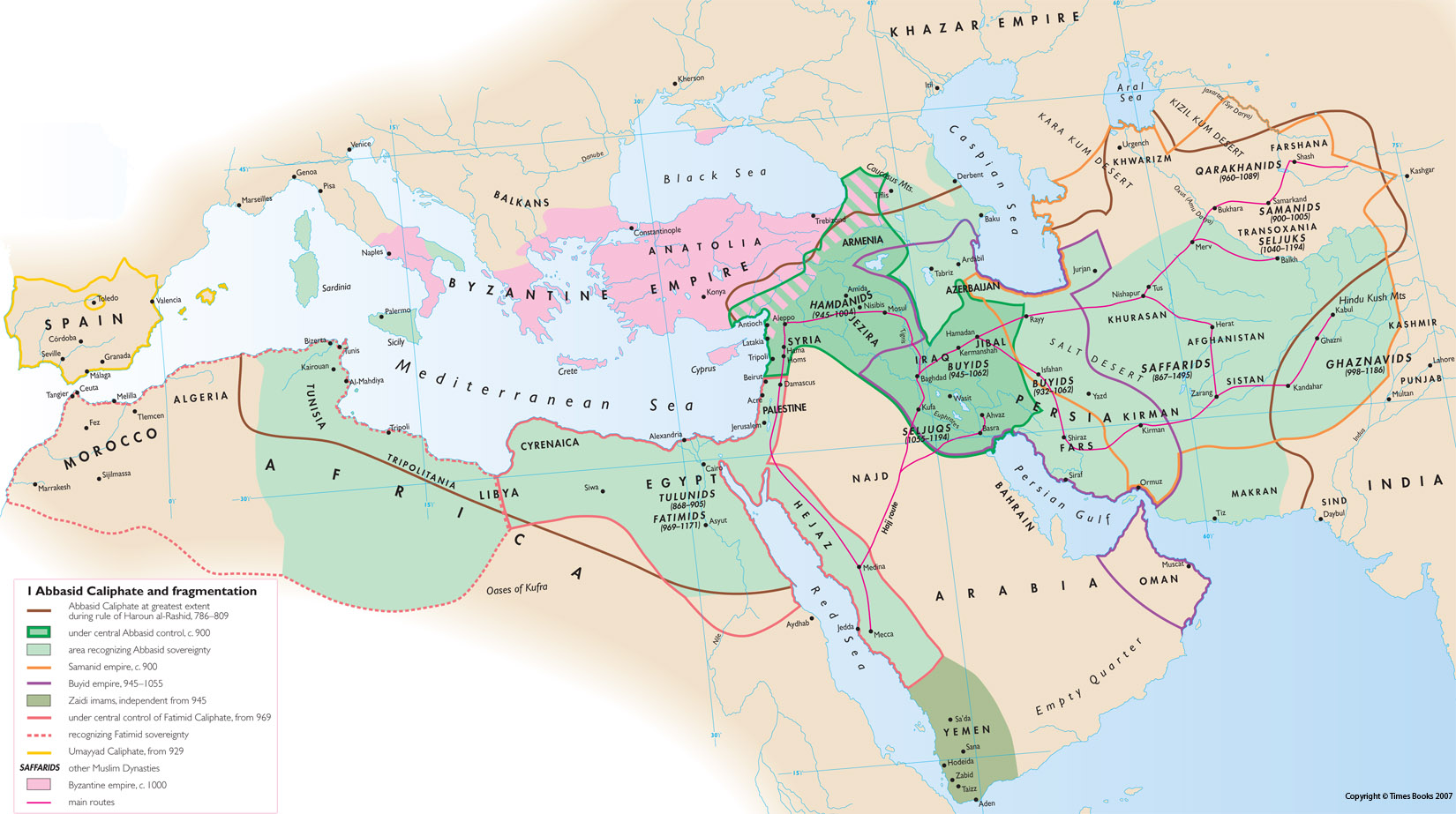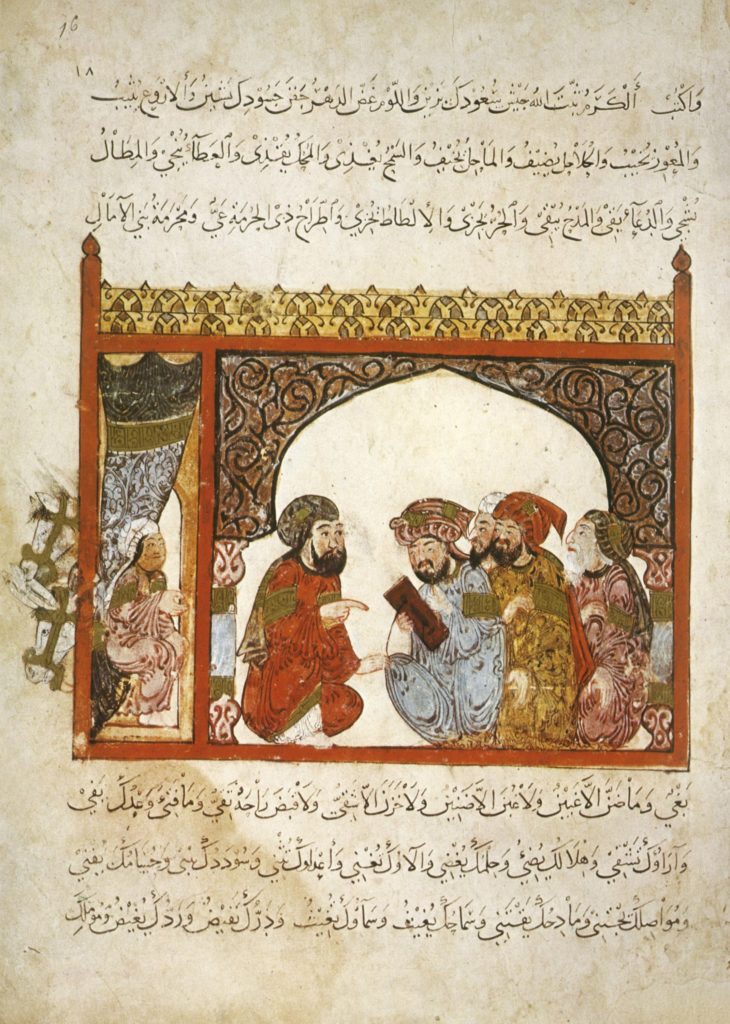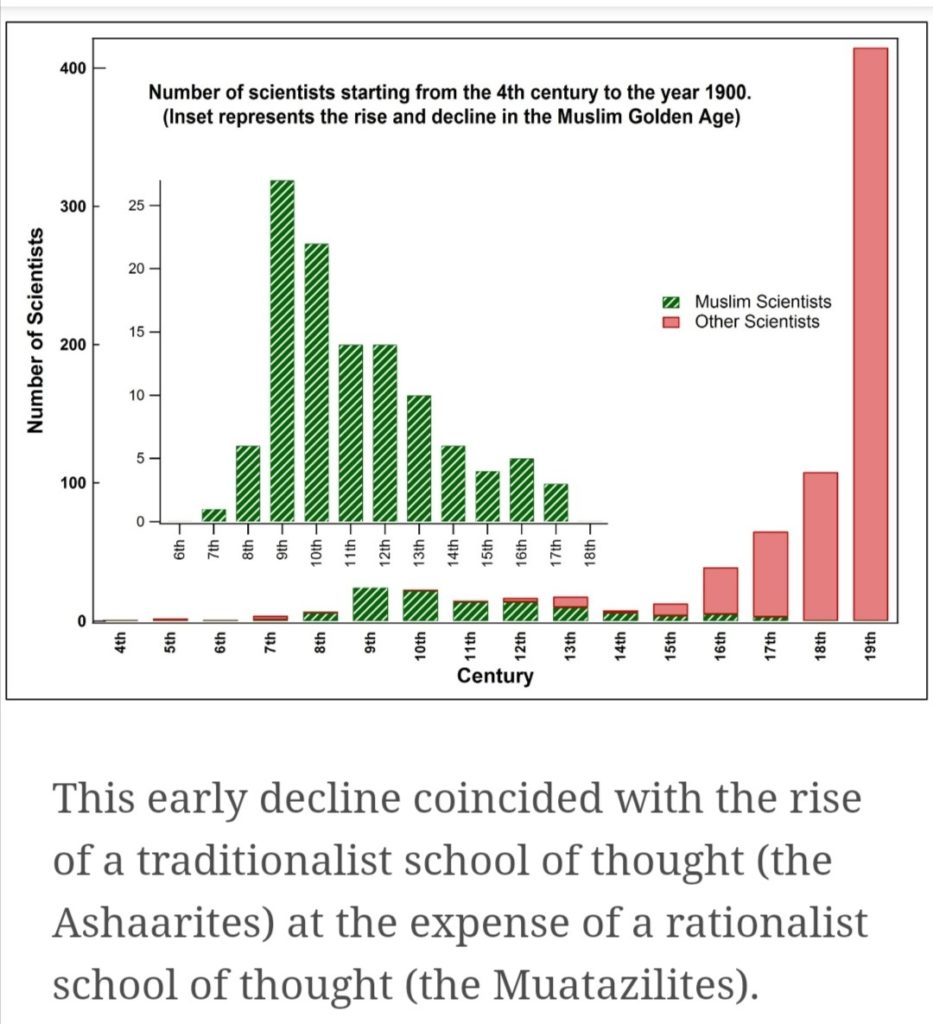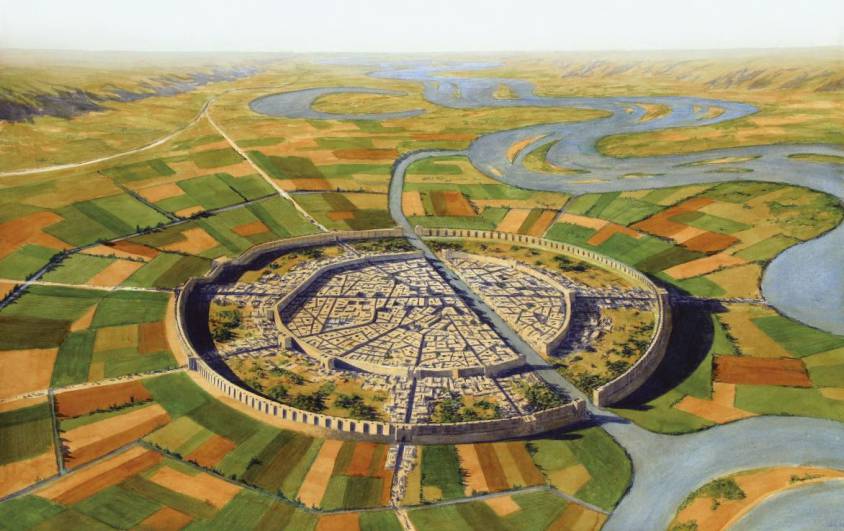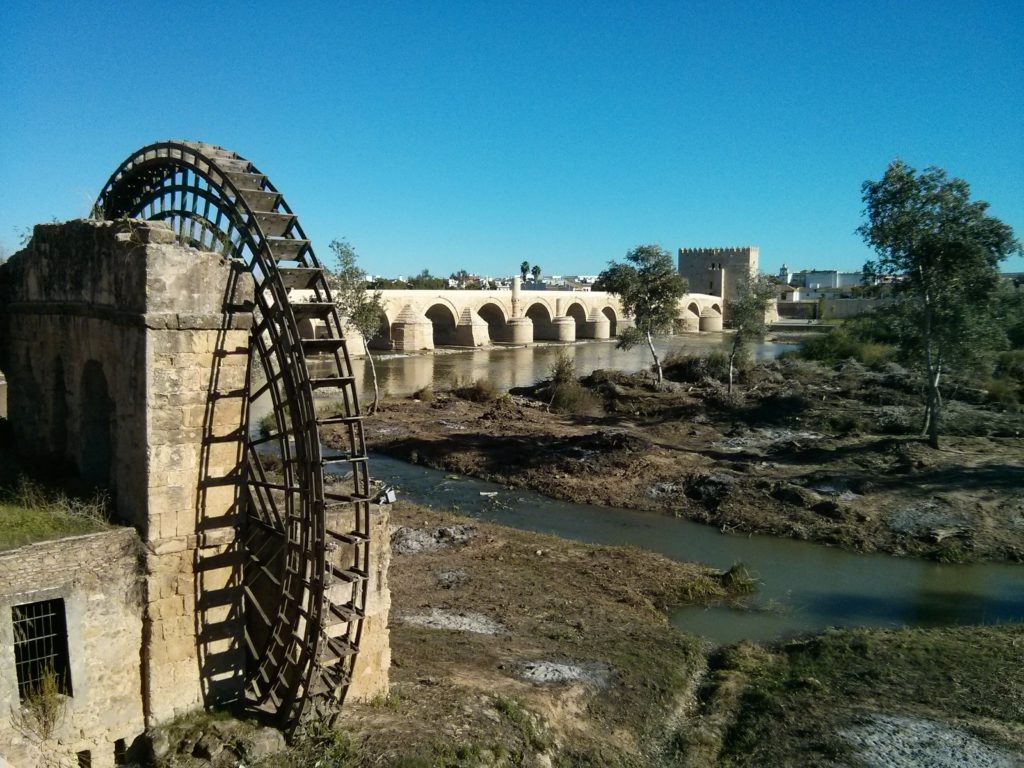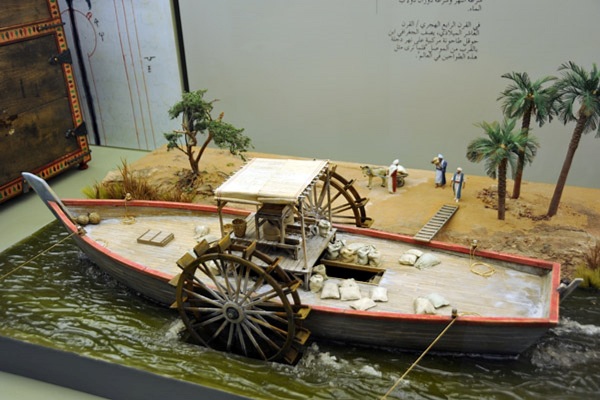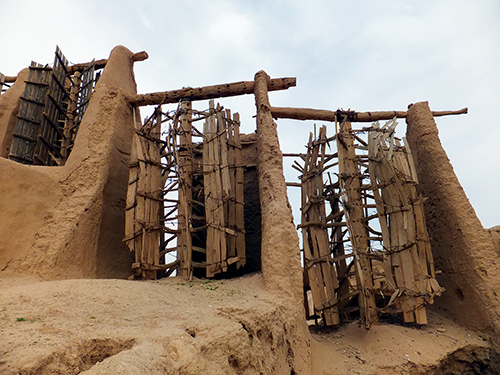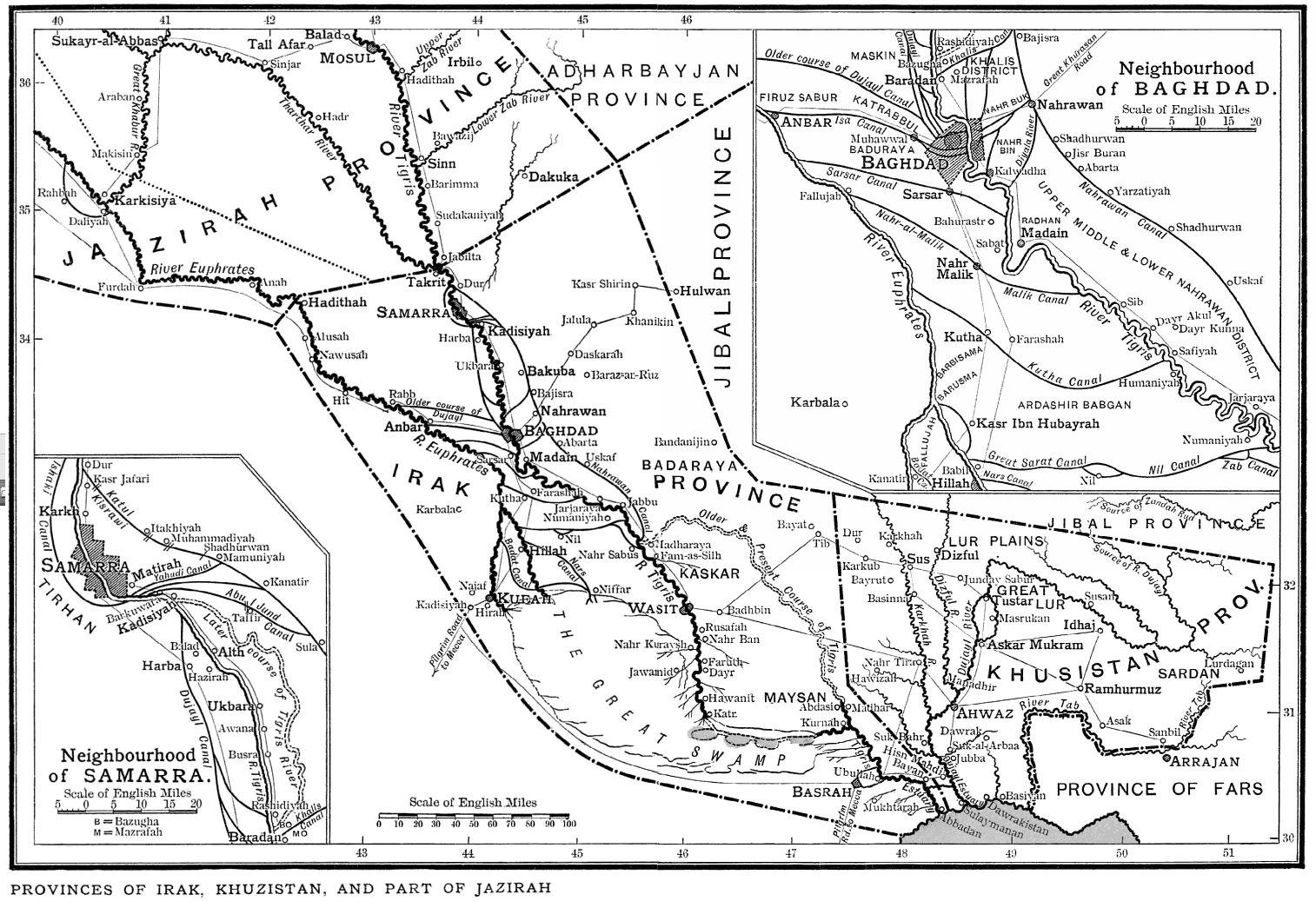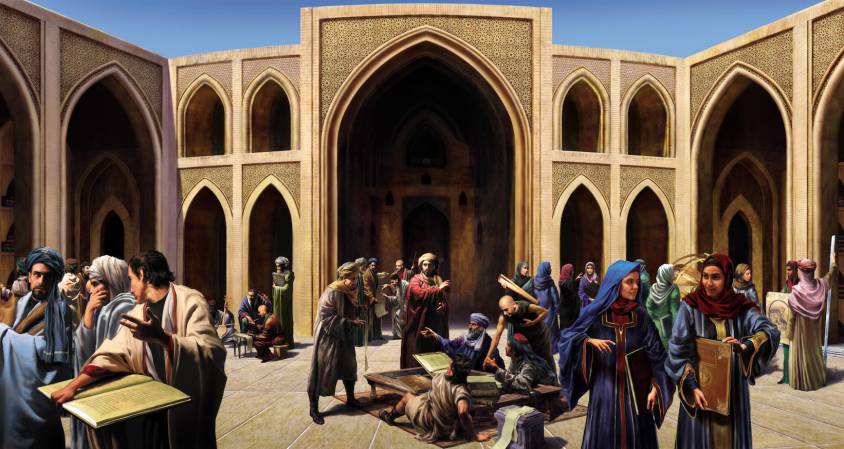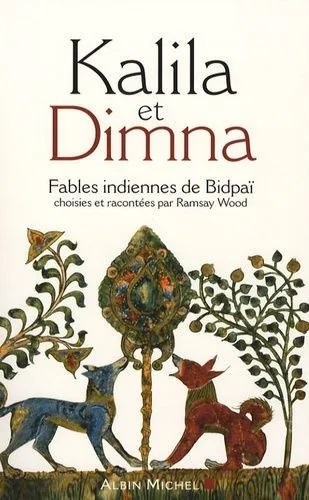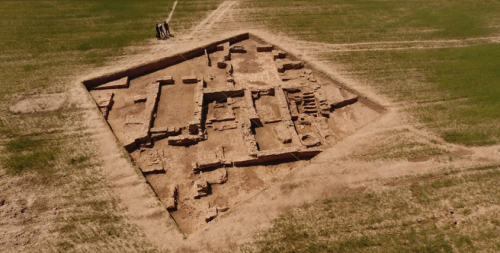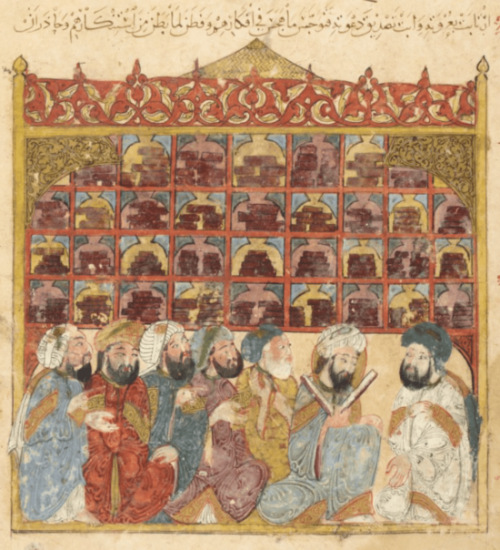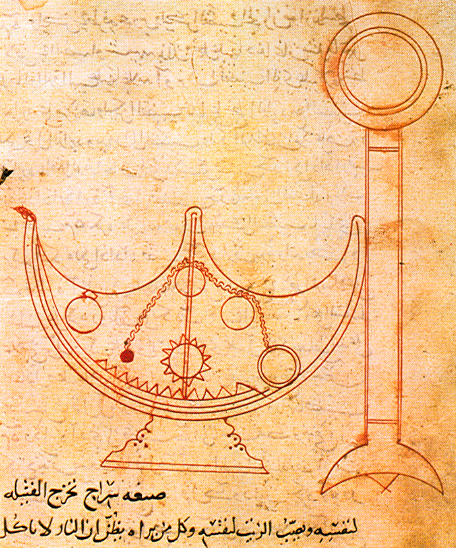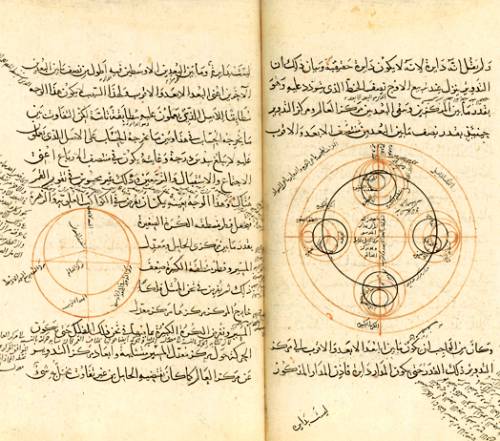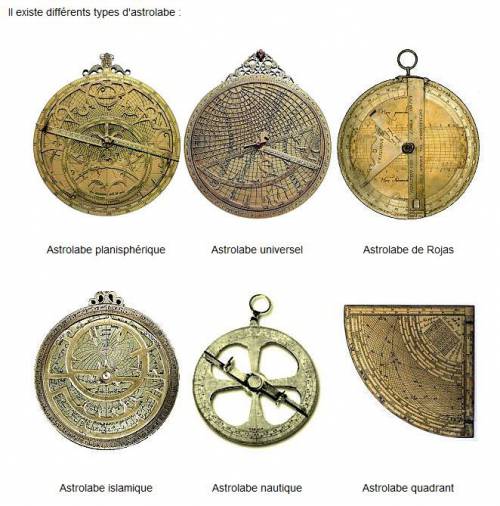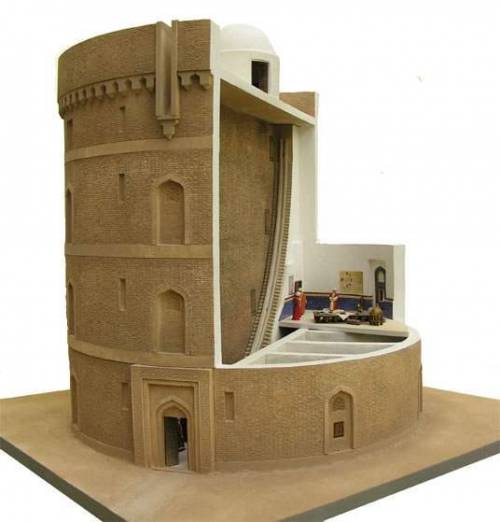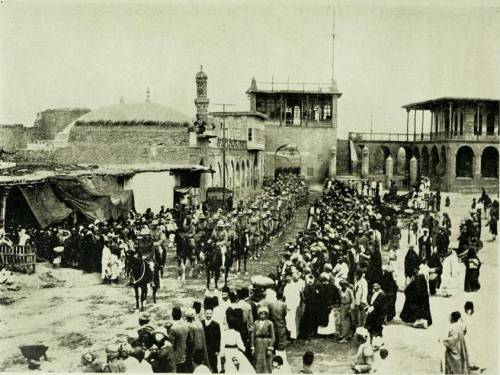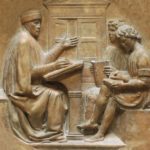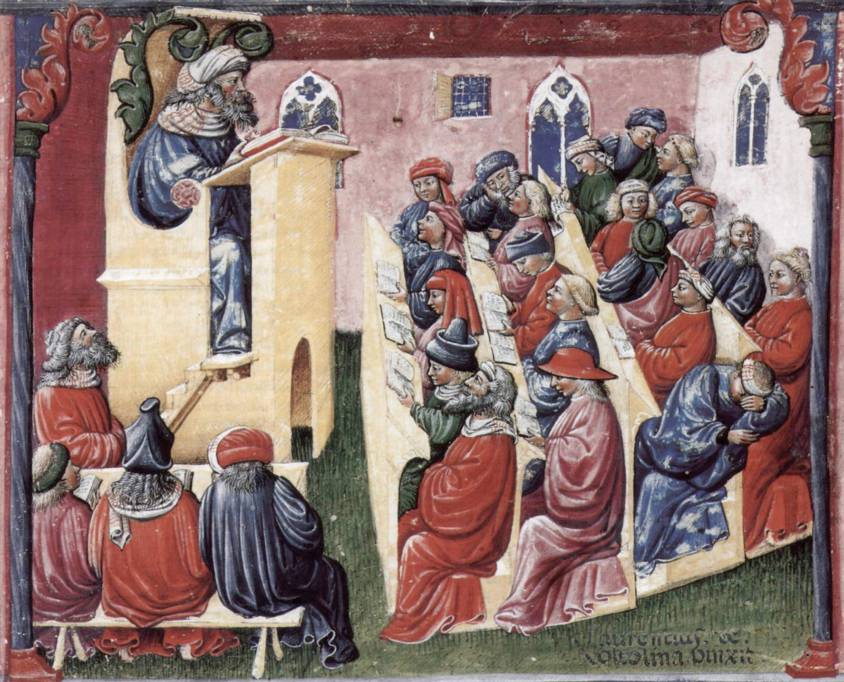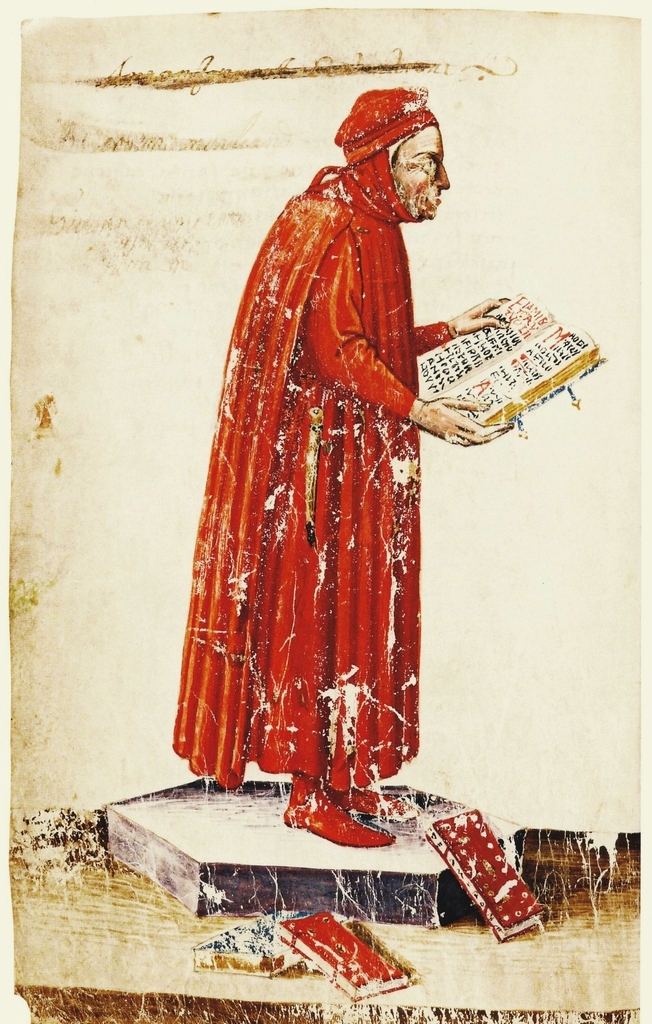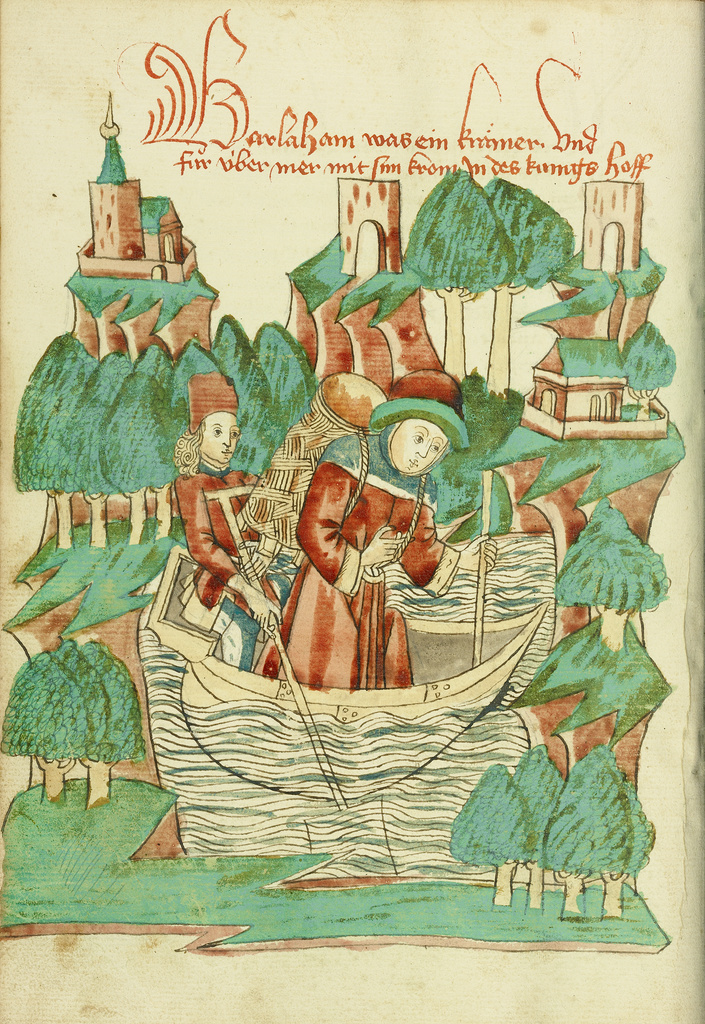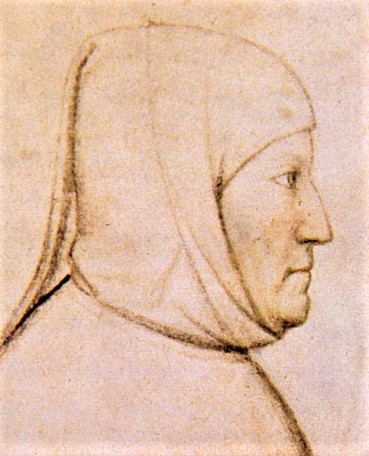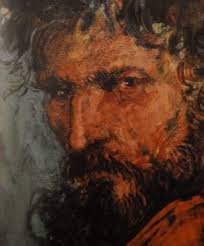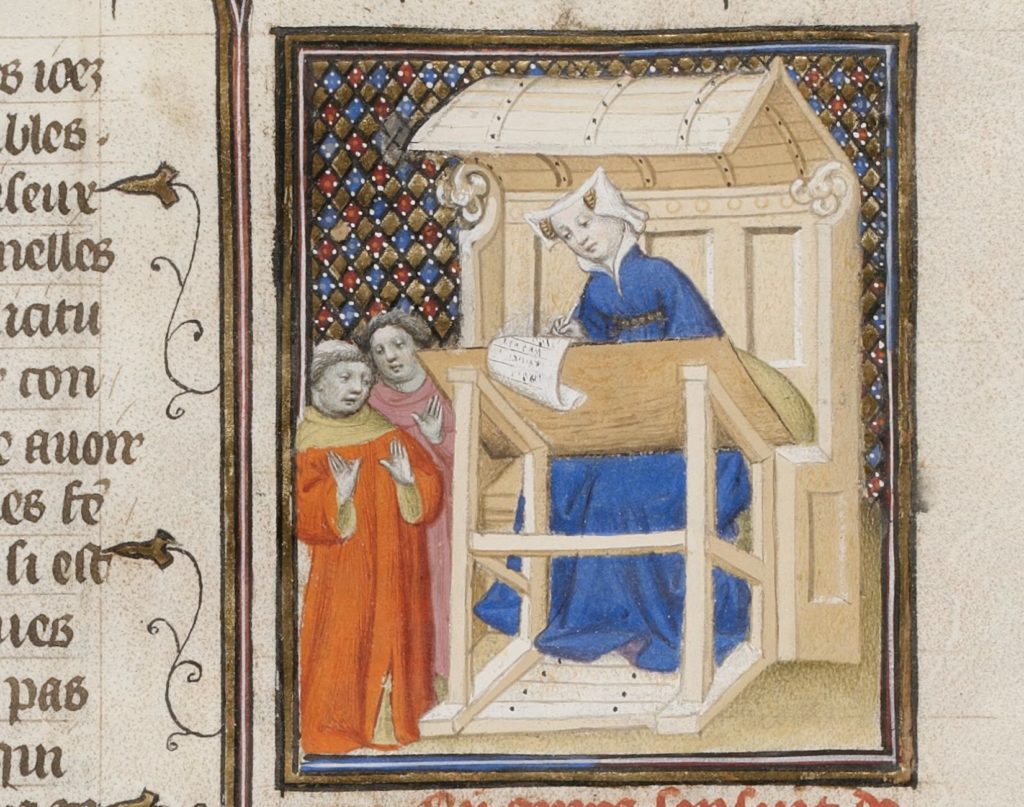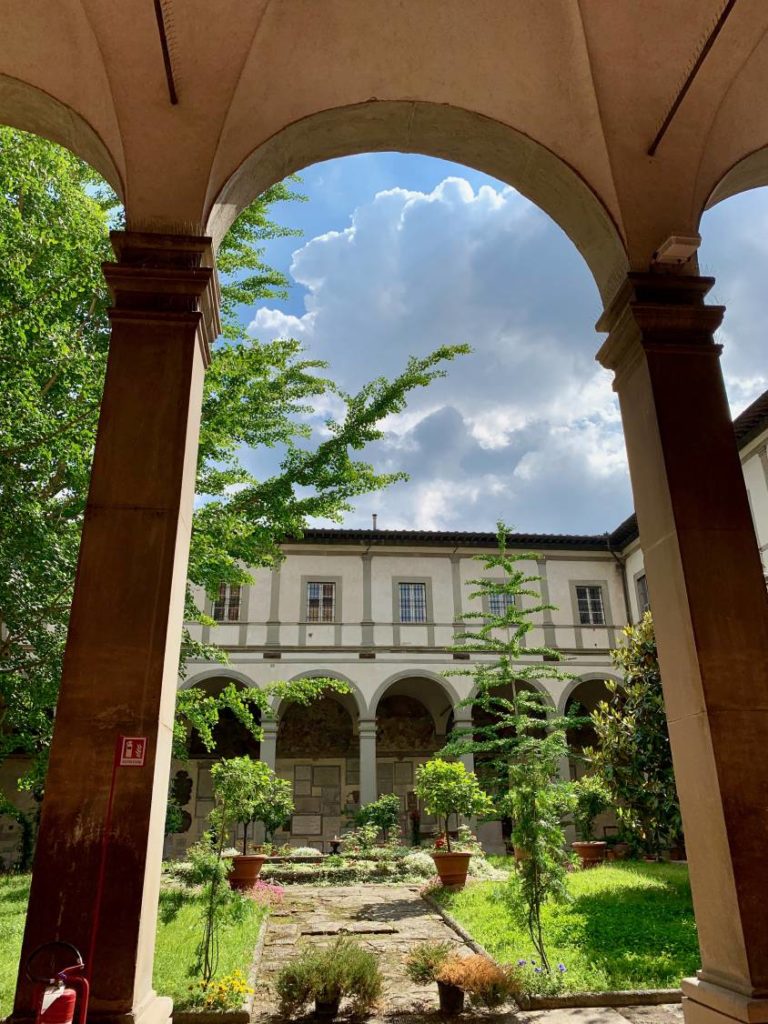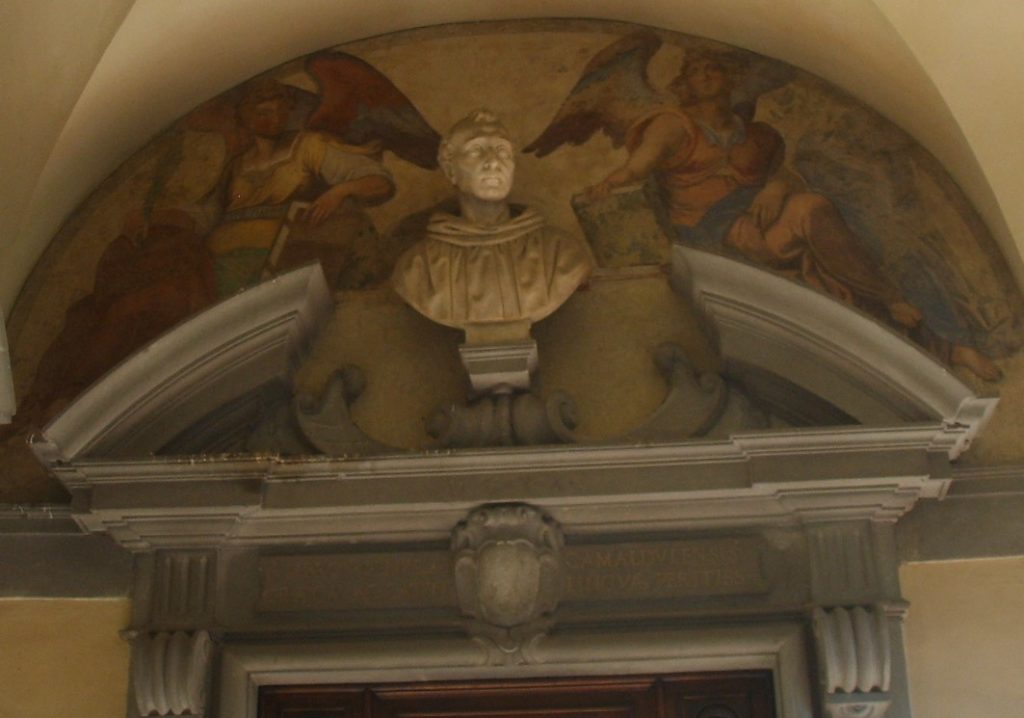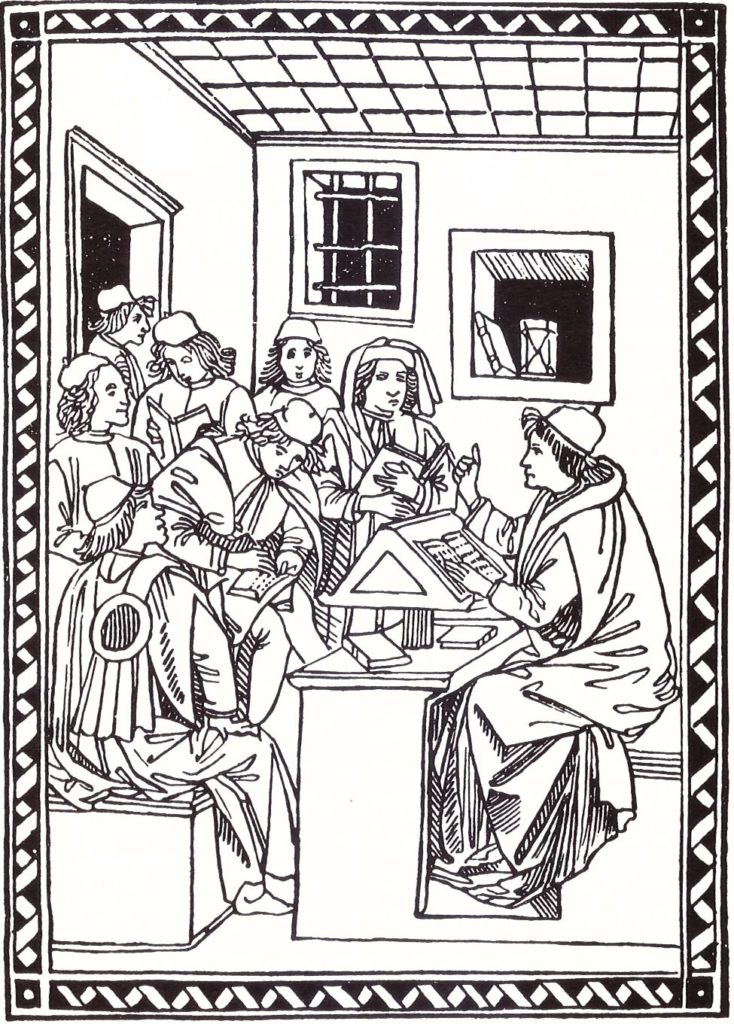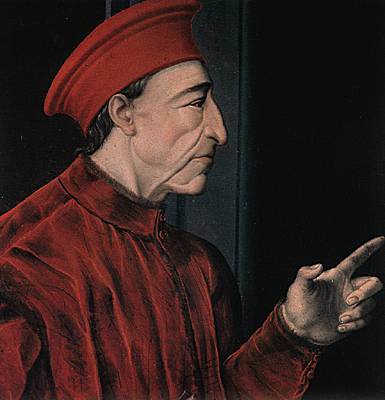Étiquette : Erasmus
LOUVRE AUDIO GUIDE: Why Vermeer was hiding his convictions

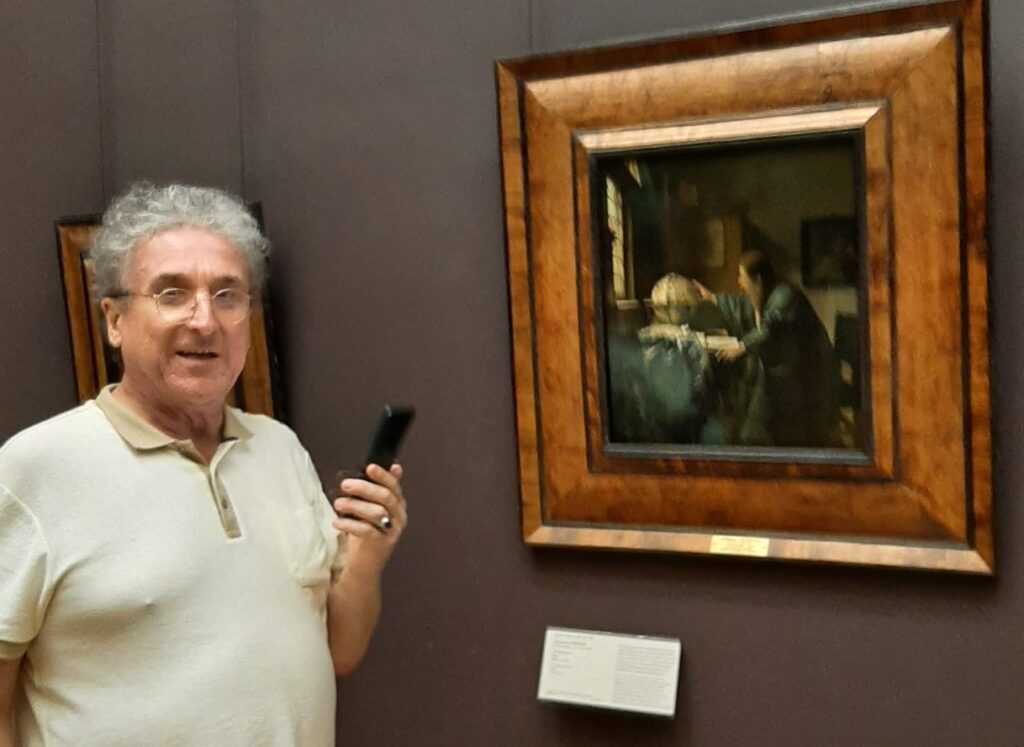
Listen:
To the audio on this website
Read:
LOUVRE AUDIO GUIDE: How Bosch’s Ship of Fools drove the Jester out of business
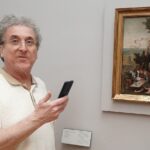

Liste:
To the audio on this website;
Read:
- With Hieronymous Bosh on the track of the Sublime;
- Comment la folie d’Erasme sauva notre civilisation (FR en ligne) + NL pdf (Agora Erasmus) + EN pdf (Schiller Institute Archive Website) + DE pdf (Neue Solidarität).
- Le rêve d’Erasme: le Collège des Trois Langues de Louvain (FR en ligne)
- Erasmus‘ dream: the Leuven Three Language College (EN online)
- ENTRETIEN: Jan Papy: Erasme, le grec et la Renaissance des sciences (FR en ligne)
- Dirk Martens, l’imprimeur d’Erasme qui diffusa le livre de poche (FR en ligne).
- 1512-2012 : Mercator et Frisius, des cosmographes aux cosmonautes + NL pdf (Agora Erasmus) + EN pdf (Schiller Institute Archive Website).
- La nef des fous de Sébastian Brant (FR en ligne), un livre d’une grande actualité !
- Avec Jérôme Bosch sur la trace du Sublime (FR en ligne) + EN pdf.
- Joachim Patinir et l’invention du paysage en peinture (FR en ligne).
- Joachim Patinir and the invention of landscape painting (EN online)
- Exposition de Lille : ce que nous apprennent les fabuleux paysages flamands (FR en ligne).
- Portement de croix: redécouvrir Bruegel grâce au livre de Michael Gibson (FR en ligne) + EN pdf (Fidelio).
- ENTRETIEN Michael Gibson: Pour Bruegel, le monde est vaste (FR en ligne) + EN pdf (Fidelio)
- Pierre Bruegel l’ancien, Pétrarque et le Triomphe de la Mort (FR en ligne) + EN online.
- A propos du film « Bruegel, le moulin et la croix » (FR en ligne).
- L’ange Bruegel et la chute du cardinal Granvelle (FR en ligne).
- Albrecht Dürer contre la mélancolie néo-platonicienne + EN pdf.
LOUVRE AUDIO GUIDE: Why Erasmus had no time to pause for portraits
Rembrandt: 400 years old and still young!

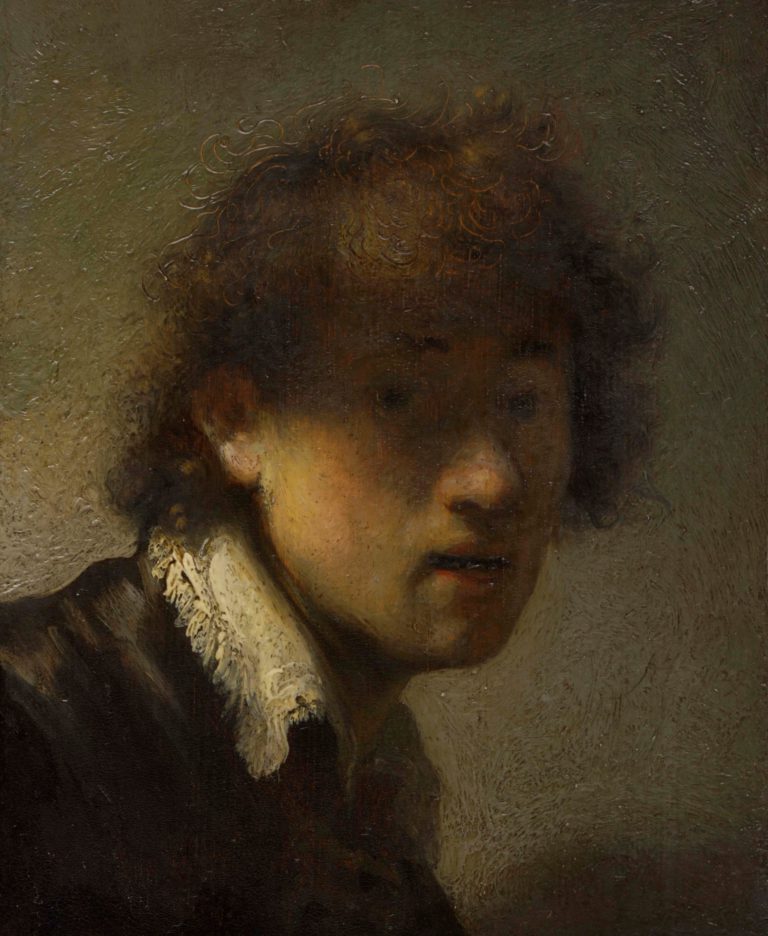
Rembrandt H. van Ryn, was born on July 15, 1606, as the son of a not so poor miller living in the revolutionary city of Leyden in the Netherlands.
Today (2006), four hundred years later, even without any knowledge of the specific historical context, few are those that remain indifferent to his artistic message and skill. Why Rembrandt? What particular quality of his paintings, engravings and drawings gave him the power to reach over centuries of time?
As we will document here, Rembrandt, a precocious intellectual, became already quite « universal » as a young adult. But let’s try to find out what « universal » means.
The Revolt of the Netherlands
The revolt of the Burgundian Netherlands (Note 1) against the tyranny the Fuggers, bankers at the helm of the Spanish and Austrian Habsburg empire, resulted in the tragic break-up of this « nation-state in the making » between the north (today’s Netherlands) and the south (the territory that today includes Belgium and part of northern France).
The Habsburg empire, while brutally sticking to the rich southern part (Flanders), cynically offered the « insurgents » that, if they wished to have a country, they could settle in the malaria-infested swamps of the North, where 75% of the territory lies below sea level, but nevertheless an area slowly domesticated by generations of hardworking farmers thanks to a vast system of canals, dikes and locks, patiently erected since the end of the thirteenth century.
But Charles V, and even worse, his son Philip II of Spain, didn’t believe in the power of mind or that of work. Instead, they believed in the power of the sword and the terror of the Inquisition. After a long war and much unnecessary bloodshed, their policies had reached an impasse, and on April 9, 1609, the semi-bankrupt Habsburgs were forced to sign a twelve-year truce with the new Republic of the Netherlands.
Education
That same year, Rembrandt, hardly 3 years old, entered basic school, where girls and boys learn to read, to write and to calculate. School opens at 6 a.m. in the summer, at 7 a.m. in winter, and finishes only at 7 p.m. Classes start with prayer, the reading and discussion of passages of the Bible and the singing of psalms. Here Rembrandt develops an elegant handwriting and more than rudiments of the Bible.
The Netherlands want to survive. Its leaders wisely used the 12 year truce (1609-1621) to fulfill their commitment to the general welfare. This way, early XVIIth century Holland became maybe the first country of the world where everybody got the chance to learn how to read, write and calculate.
That universal school system, whatever its inadequacies, offered to both poor and rich alike, was the secret of the Dutch « Golden Century ». It’s schooling will also create the generations of Dutch immigrants that will participate a hundred years afterwards in the American Revolution
Others would enter the secondary school at the age of 12, but Rembrandt precociously enters Leyden’s Latin School at the age of 7. There, pupils generally, besides rhetoric, logic and calligraphy, learn, not only Greek and Latin, but English, French, Spanish or Portuguese. Then, in 1620, at the age of 14, since no age limit in the Netherlands bridled young talents, Rembrandt inscribed at the Leyden University. His choice is not Theology, Law, Science, nor Medicine, but Literature.
Did Rembrandt want to add to his knowledge of Latin, the mastery of Greek and Hebrew philology and perhaps Chaldean, Coptic or Arabic? After all, Leyden was already publishing Arabic-Latin dictionaries, while the Netherlands were increasingly growing to become the book printing centre of the world.
From its foundation in 1585, after a historic battle for the city’s freedom, Leyden University became a rallying point for humanists worldwide and a center for new discoveries in optics, physics, anatomy and cartography, offering the world such famous scientists as Christian Huygens (1629-1695) and Antonie van Leeuwenhoek (1632-1723), both correspondents of Leibniz.
People flocked in from Flanders, Germany, Denmark, Sweden, England and even Hungary. By 1621, over fifty Frenchmen were teaching in Leyden. In a desperate effort to pollute this source of creativity, in 1630, René Descartes registered as a « mathematician » at the University of Leyden. (Note 2)
But the big trouble had already started way before. A disastrous theological « debate » degenerated into a conflict akin to civil war. On the one side, Jacob Arminius, founder of the « Remonstrant » current upholding the Erasmian-Rabelaisian concept of man endowed with a free will although that free will remained to be fine-tuned with the grace of God. This view was also held by the elder general and capable national leader, Johan van Oldenbarnevelt (1547-1619).
On the opposing side, one Franciscus Gomarus, defender of the fatalist Calvinist doctrine of « predestination », a doctrine adhered to by Prince Maurits, the young incoming son of the founder of the nation, William the Silent. While leaders were strongly divided, the 1619 « Dordrecht Synod » installed the radical Calvinist doctrine as the law.
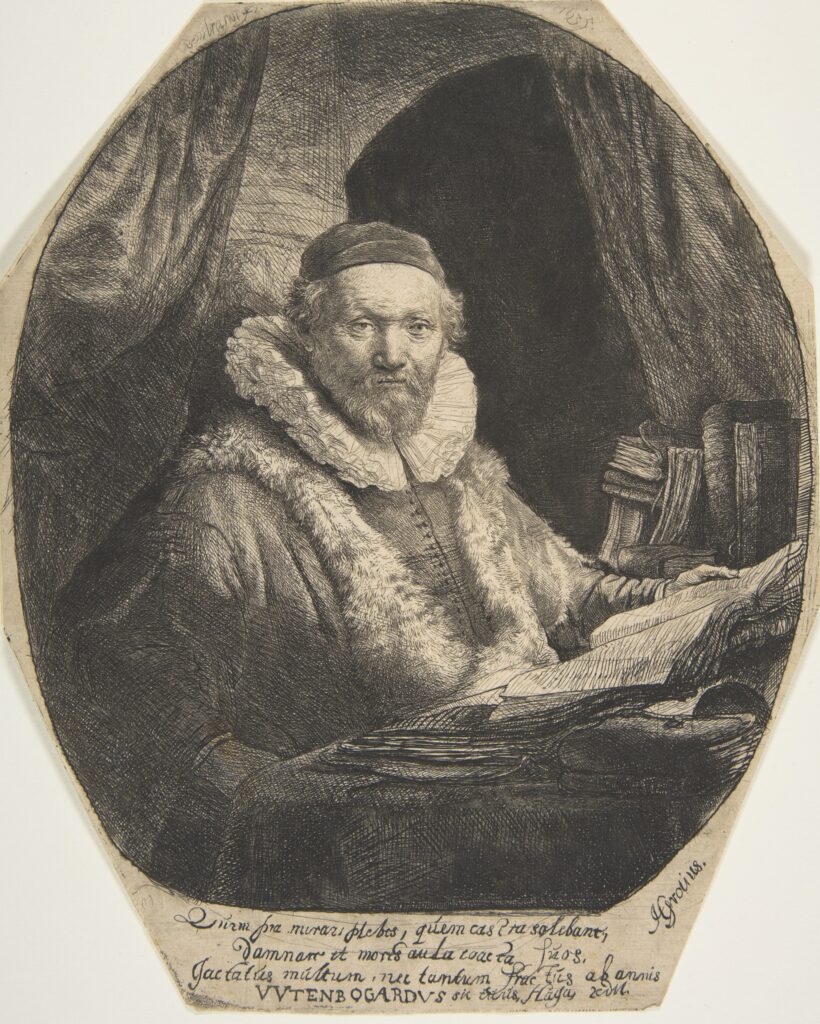
But Leyden was mostly « Arminian » and so was Rembrandt. Rembrandt’s 1633 and 1635 portraits of Johannes Uytenbogaert, the main reverend leading the Arminians who was obliged to spent several years of his life in exile to escape from persecution, show how closely Rembrandt was connected to this movement.
So, when Rembrandt entered University, the situation was very hot. Arminian-minded teachers are on the leave and often forced to do so. So was Rembrandt, and after two months, at age 14, he quitted University and went full time into painting and set up his own workshop.
By 1621, the truce had come to an end, and the Spanish army was once again conducting an all-out war against the Netherlands, which was accused, not without reason, of supporting the Bohemian revolt and harboring the leaders of its resistance. (Note 3)
As a young intellectual confronted with injustice and political and religious madness, Rembrandt entered the studio of Jacob Isaaczoon van Swanenburg, a learned Dutch painter who lived in Venice and Naples, where he worked from 1600 to 1617 before running into trouble with the Inquisition, which accused him of « painting on Sundays ».
Few works have survived from this master, renowned for his city views and portraits. But his subjects and style resemble those of the great humanist Hieronymus Bosch. For three long years, Rembrandt learned how to grind pigments, master essences, varnishes, brushes, canvases and panels.
But above all, Swanenburgh made his pupil a master in the art of engraving and etching.
Pelgrims of Emmaus
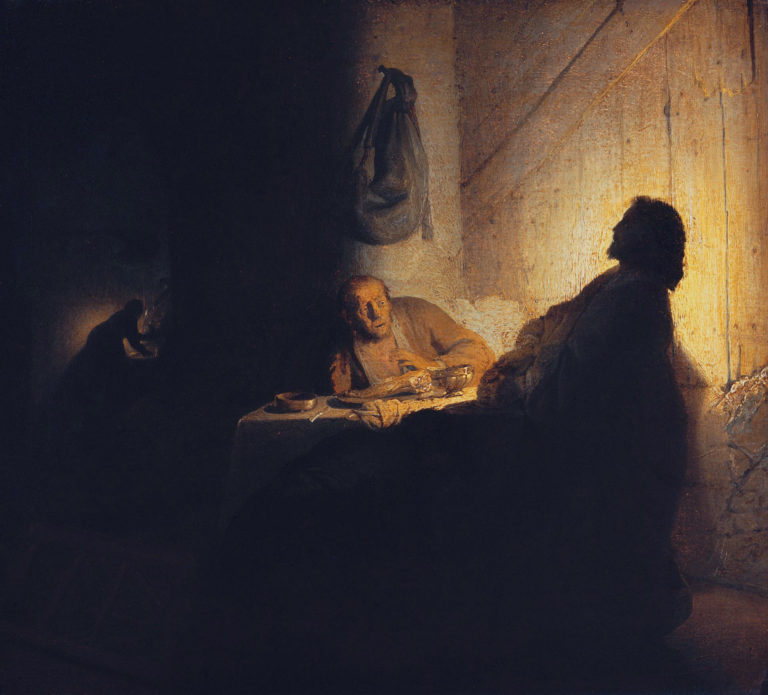
Rembrandt’s interest in the power of ideas clearly appears in the « Pilgrims at Emmaus », where an atmosphere of astonishment and horror break out when Christ reveals himself to the disbelievers.

Then, before setting up his studio, Rembrandt will spend six months in the workshop of Pieter Lastman in Amsterdam. With Lastman, Rembrandt finally finds a master that departs from the traditional Dutch landscapes, still-lives and boring group portraits.
Building on the theatrical settings of Caravaggio, Lastman paints biblical, Greek and Roman mythology. He paints history! And Rembrandt always desired to become a historieschilder. Now, Rembrandt finally found in painting the literature he was looking for when inscribing in the University.
Also, in Lastman’s workshop, he meets the talented Jan Lievens, with whom he will work for a while.
Knowing how to know thyself
Rembrandts reputation is largely the fruit of the near to one hundred multiform self-portraits, including about twenty engravings, covering the walls of numerous museums around the world. Some pragmatists tell us Rembrandt did that many self-portraits because he just was the cheapest model in town, and probably the most patient one. Others claim he was simply noting down his unending grimaces, the famous tronies, to prepare future dramatic historical paintings.
We think there is more to it and we approve Simon Schama who wrote that, « The reason for the multiplication of his self-image was not a relentless, almost monomaniacal assertion of the artistic ego but something like the exact opposite. »
The self-portrait, an art expression that has nearly disappeared from today’s practice, always throws an extremely daring challenge to the painter looking into the mirror. Is this me? I didn’t realize I look that way. I’ve changed again! What is wrong? The a priori ideas in the mind of the perceiver or the sense perceptions he’s confronted with? Real thinking, in essence, comes down to confronting not just those burning paradoxes, but the joy of overcoming them with self reflexive irony, and a truthful commitment to the permanent discovery and communication of that increasing irony through a Socratic dialogue.
Rembrandt, at the age of 22 starts training his first pupil, Gerrit Dou, only fifteen years old. Samuel van Hoogstraten, who was another young pupil, reported Rembrandt advising him:
« Try to learn introducing in your work what you know already. Then, very soon, you will discover what escapes you and want to discover. »
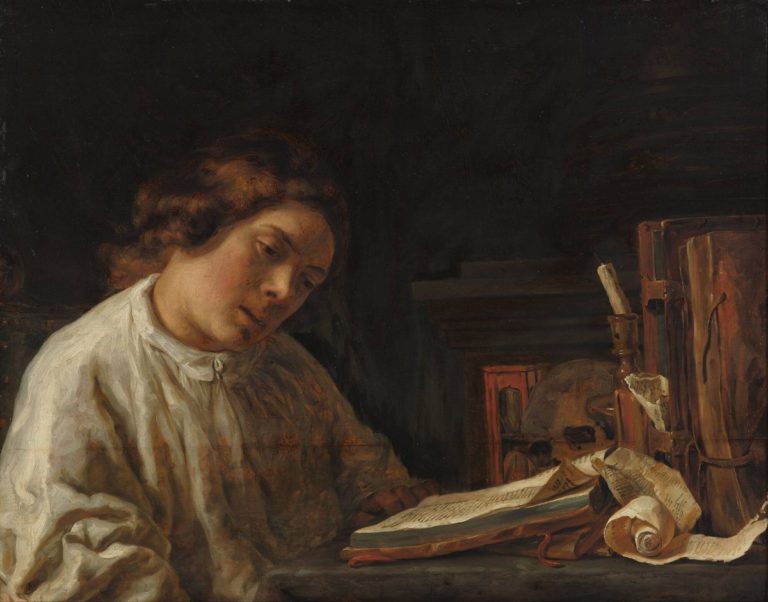
Hoogstraten’s self-portrait at age 17 demonstrates what a contagious genius Rembrandt became rapidly as a teacher.
But Rembrandt’s main problem was to show movement. Anima means soul and for Rembrandt animating the mind of the viewer was the art of making that viewer conscious of his own quality of moving the soul, i.e. moving the mover. Through this process of teaching and self-teaching Rembrandt works out various ways to tell his-stories.
One funny way to put faces into motion is to wrap them into clothing, put on jewelry, and choose a specific light setting that generates interesting eye-attracting shadows bringing into light the plastic volumes. Explore facial expressions evoking anger, fear, happiness, self-doubt, laughter, etc.
The real subject is not Rembrandt, but the discovery of human consciousness through self-consciousness. The mirror image permits oneself to look over one’s shoulder down on oneself. Leonardo and others advised artists to view their own work in a mirror, since the « fresh » mirror image offered the artist another « viewpoint », revealing those remaining imperfections that had escaped from his attention.

Also, the compassion and self esteem one is forced to develop in that process becomes a basic ingredient for promethean and agapic character formation. Then, Rembrandt’s joyful process of self-discovery spills naturally over into the portraits done of others.
Look how funny Saskia smiles, when she dresses up « as Rembrandt » with a feathered reddish hat, carrying a golden chain and with her little hand lost in Rembrandt’s large glove.
Then, there are also the self-portraits in assistenza, where the painter’s face pops up uninvited in a larger painting, such as in Velazquez‘ « Las Meninas ».
The Stoning of Saint-Stephen

One of Rembrandt’s grimacing faces appears behind the martyr in the first known painting by the young Rembrandt, The Stoning of Saint-Stephen. Executed at the age of 19, the work powerfully expresses the basis of Rembrandt’s ideas. Loaded with some twenty figures, the subject had previously been treated by Lastman and Adam Elsheimer, a young German Mannerist living in Rome, whose works Rembrandt had admired while contemplating reproductions in Swanenburgh’s studio.
But why Saint-Stephen? Rembrandt’s choice stems directly from the subject. This Greek-speaking Jewish convert, the first Christian martyr, was tried by a court of law for blasphemy. He unabashedly told the Sanhedrin judges that they were « stiff-necked and uncircumcised in heart and ears » and that they were people who had « received the law by the disposition of angels, and have not kept it… »
Stephen also told them that God could not be kept « locked up in a temple ». At one point, Stephen,
« being full of the Holy Spirit, and having his eyes fixed on heaven, saw the glory of God, and Jesus standing at the right hand of God, and he said: ‘Behold, I see the heavens opened, and the Son of Man standing at the right hand of God’.
« And crying aloud, they stopped their ears, and with one accord rushed upon him; and having pushed him out of the city, they stoned him; and the witnesses laid their garments at the feet of a young man called Saul. And they stoned Stephen, who prayed and said: Lord Jesus, receive my spirit. And kneeling down, he cried aloud: Lord, do not impute this sin to them. »
The painting leaves the left side entirely in shadow, in a partially failed attempt to evoke the idea of Stephen seeing the « open heavens. » Saul is in the shadows because he is the one encouraging the execution. Later, on the road to Damascus, he would have his own vision of the « heavens opening » and in turn convert to Christianity, since Saul is none other than the future St. Paul.
In short, as we have said, at the age of 19, Rembrandt powerfully asserts the principles for which he wants to live and for which he is prepared to die, ideas that he must have discovered at the age of fourteen during the great Sophist event, the great « theological debate » that was the beginning of the end of the Republic.
Ideas
Historians might scream there is no space here for political manifestos. They are right. Rembrandt’s ideas go far beyond simple minded militantism, and their political impact is much more profound.
In 1641, an artist, Philips Angel, adressing the painting guild, honored Rembrandt and underscored the artist’s « elevated and profound reflection ». What were these « elevated and profound » ideas all about?
- Truth. Somebody must mobilize the courage to stand up and tell the truth in front of established authorities or misleading public opinion. That theme comes regularly back, notably with « Suzanna and the Elders ». Daniel, a witness of injustice will speak up and saves Suzanna from the death sentence.
- Reason. Faith and religion do not always coincide with religious rites. Look to the angry angel preventing Abraham from killing his own son in « The sacrifice of Isaac ». Think before acting! Reason, love of God and love for mankind must guide any religious practice and on the basis of reason, a dialogue of cultures can enrich humanity.
- Self-perfection. Change, yes. People can find in themselves the means to identify their errors and change for the better. The example of Saint-Paul will stand as a permanent reference for Rembrandt, who painted him several times and even represented himself as the Church father.
- Love, Repentance, Pardon. In a period of permanent danger of « religious wars », Rembrandt strongly identifies with Saint Stephen’s demand « Lord, lay not this sin to their charge. » Rembrandt will paint several times « The return of the prodigal son ». The father gives a great feast for the returning son because he « who was dead came back to life ». The notion of pardon, and acting in the advantage of the other, will become the key concept for the success of the world Peace of Westphalia concluded in 1648 ending the thirty years war, including the recognition of the Netherlands as a sovereign state.
The Night Watch
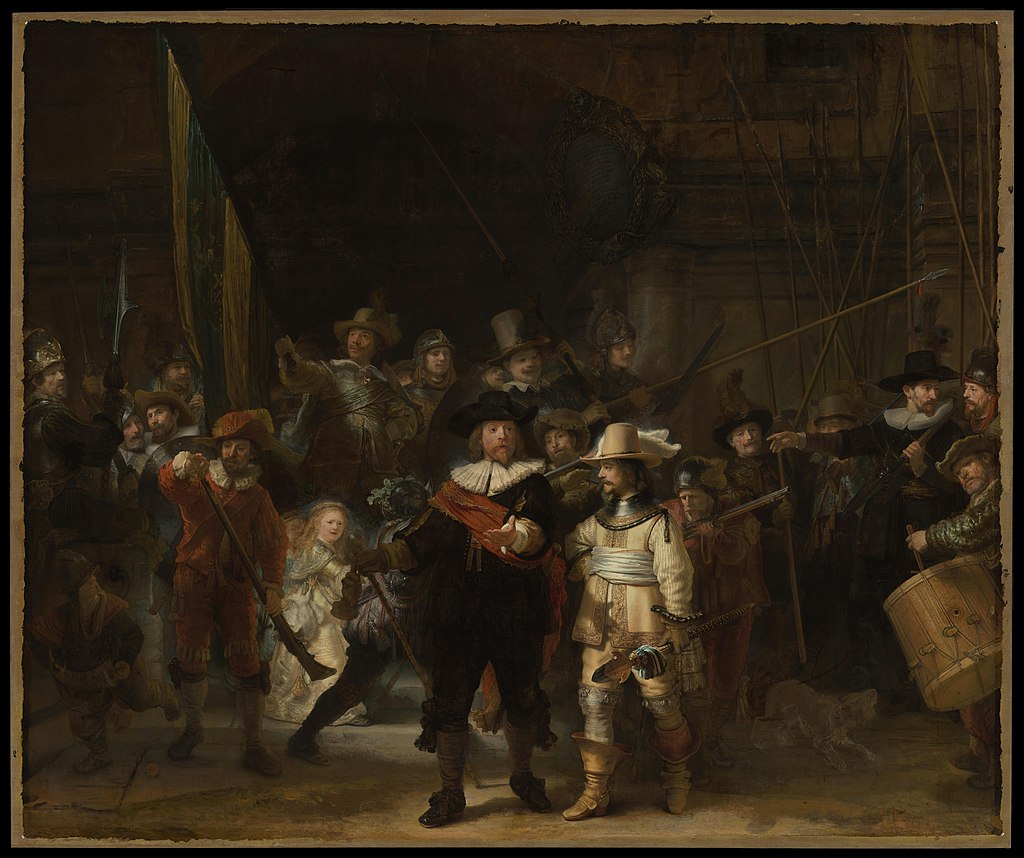
Misrepresented as a nocturnal scene, the Night Watch is probably one of the greatest intellectual provocations against cold Aristotelian classicism.
The Netherlands was at war. Amsterdam, like most major cities, maintained a considerable militia of archers, crossbowmen and harquebusiers. These small citizen armies had a firing range and a meeting hall, the Kloveniersdoelen, where soldiers could rest after training.
Obviously, such glorious gatherings deserved to be immortalized in vast group portraits, where all the members of the company was presented in such a way that, as van Hoogstraten put it, « you could, as it were, behead them all with a single cannon shot. »
Rembrandt completely overturned this traditional representation. Firstly, apart from the 2 captains and their 16 companions (who each paid for their presence on the canvas), Rembrandt added another third of figures to the original number.
Secondly, the revolutionary concept implemented is the idea of depicting the whole group as « on the march », not just advancing, but raising flags and weapons after passing under a circular arch seen just behind them.
Thirdly, a spectacular sense of movement emanates from the rapid oscillation of a chiaro-oscura, illuminating one part, casting another into shadow.
Finally, the show seems formally a confused, chaotic scene. People enter from all sides. In infinite heteronomy, one loads his rifle, another beats the drum, another raises his spear while another stares at his rifle.
Beyond this apparent hectic confusion, what remains is the spirit of a republican citizenry called to arms and moving from chaos to unity, a subject Rembrandt represented the same year in an allegorical oil sketch, Concord of the State.
Against narrow academic rigor, the spirit of inclusion of the multitude so common to Flemish painters like Bruegel was once again manifesting itself.
Van Hoogstraten, defending Rembrandt against these critics (as usual, those who were jealous of his brilliant performance) commented:
« Rembrandt observed this requirement [of unity] very well… and although in the opinion of many he went too far, making the painting more according to his personal taste than according to the individual portraits he had been commissioned to paint.
Nevertheless, the painting, no matter how harsh the critics, will stand, in my judgment, against all these rivals because it is so picturesque in its conception and because it is so powerful that, according to some, all the other doelen works look like playing cards in comparison. »
Immortality
We took here just a few examples to demonstrate that Rembrandts universal character derives directly from his ruthless commitment, directed to make us conscious of the creative potential given to all human beings, men and women, old and young, Christians, Jews, Muslims or others, a creative and creating human nature called the soul.
This commitment is once again available in today’s new generation and can therefore be mobilized for great achievements.
From this point of view, Rembrandt is in a good position to become a reference individual capable of leading us out of the current cultural « dark age », where video games teach our children to take perverse pleasure in gratuitous violence and push them to become « naturally born killers ».
In contrast, a Rembrandt who catches life and loves mankind will trace the divine in the slightest spark of light. As some sort of 5th apostel, without ever painting God directly, Rembrandt reveals the harmony of his creation.
Those who took time studying his paintings can tell themselves: « God exists, I just met Rembrandt », since through Rembrandt’s art God’s tender love and blessing power are revealed to us in our human reality.
That « immortal » nature of Rembrandt’s soul will doubtlessly nourish the « immortality » of the creative geniuses he will inspire. Let us not wait another four hundred years to celebrate such a genius, for what he brings us is living and not to be buried in the history of art
Notes:
- Friedrich Schiller, The revolt of the Netherlands; Karel Vereycken, How Erasmus Folly saved our Civilization; Karel Vereycken, « Rembrandt, bâtisseur de nations » in Nouvelle Solidarité, June 10 and 17, 1985.
- Years earlier, René Descartes, using his own funds, made a trip to Bohemia and in 1620 took part in the battle of Montagne Blanche, leading to the massacre of Prague, the capital of Bohemia. One biographer reports that Descartes, entering Prague, immediately appropriated Kepler’s Brahe scientific instruments.
- For a detailed report on the links between Rembrandt and Comenius and the Bohemian revolt, see Karel Vereycken, The light of Agapê, Rembrandt and Comenius versus Rubens, Ibykus N°85, 2003.
- Ernst van Wetering, director of the Rembrandt Research Project (RRP), on the basis of scientific examinations of Rembrandt’s works, estimates that the master required his models to pose for three hours a day for at least three months.
- Karel Vereycken, Leonardo, painter of movement, Fusion N°108, 2006.
Devotio Moderna, Brothers of the Common Life: the cradle of humanism in the North
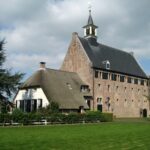
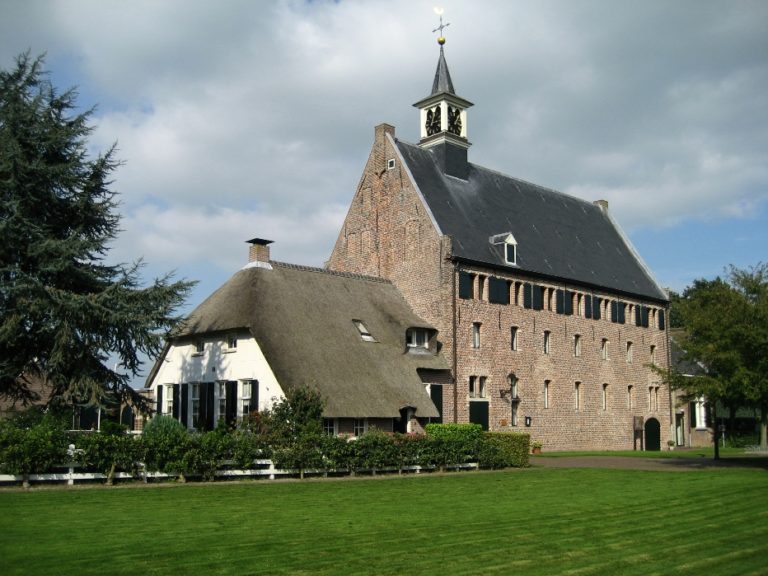
Presentation of Karel Vereycken, founder of Agora Erasmus, at a meeting with friends in the Netherlands on September 10, 2011.
The current financial system is bankrupt and will collapse in the coming days, weeks, months or years if nothing is done to end the paradigm of financial globalization, monetarism and free trade.
To exit this crisis implies organizing a break-up of the banks according to principles of the Glass-Steagall Act, an indispensable lever to recreate a true credit system in opposition to the current monetarist system. The objective is to guarantee real investments generating physical and human wealth, thanks to large infrastructure projects and highly qualified and well-paid jobs.
Can this be done? Yes, we can! However, the true challenge is neither economic, nor political, but cultural and educational: how to lay the foundations of a new Renaissance, how to effect a civilizational shift away from green and Malthusian pessimism towards a culture that sets itself the sacred mission of fully developing the creative powers of each individual, whether here, in Africa, or elsewhere.
Is there a historical precedent? Yes, and especially here, from where I am speaking to you this morning (Naarden, Netherlands) with a certain emotion. It probably overwhelms me because I have a rather well informed and precise sense of the role that several key individuals from the region where we are gathered this morning have played and how, in the fourteenth century, they made Deventer, Zwolle and Windesheim an intellectual hotbed and the cradle of the Renaissance of the North which inspired so many worldwide.
Let me summarize for you the history of this movement of lay clerics and teachers: the Brothers and Sisters of the Common Life, a movement that nurished our beloved Erasmus of Rotterdam, the humanist giant from whom we borrowed the name to create our political movement in Belgium.
As very often, it all begins with an individual decision of someone to overcome his shortcomings and give up those « little compromises » that end up making most of us slaves. In doing so, this individual quickly appears as a « natural » leader. Do you want to become a leader? Start by cleaning up your own mess before giving lessons to others!
Geert Groote, the founder
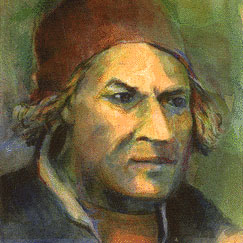
The spiritual father of the Brothers is Geert Groote, born in 1340 and son of a wealthy textile merchant in Deventer, which at that time, like Zwolle, Kampen and Roermond, were prosperous cities of the Hanseatic League.
In 1345, as a result of the international financial crash, the Black Death spread throughout Europe and arrived in the Netherlands around 1449-50. Between a third and a half of the population died and, according to some sources, Groote lost both parents. He abhorred the hypocrisy of the hordes of flagellants who invaded the streets and later advocated a less conspicuous, more interior spirituality.
Groote had talent for intellectual matters and was soon sent to study in Paris. In 1358, at the age of eighteen, he obtained the title of Master of Arts, even though the statutes of the University stipulated that the minimum age required was twenty-one.
He stayed eight years in Paris where he taught, while making a few excursions to Cologne and Prague. During this time, he assimilated all that could be known about philosophy, theology, medicine, canon law and astronomy. He also learned Latin, Greek and Hebrew and was considered one of the greatest scholars of the time.
Around 1362 he became canon of Aachen Cathedral and in 1371 of that of Utrecht. At the age of 27, he was sent as a diplomat to Cologne and to the Court of Avignon to settle the dispute between the city of Deventer and the bishop of Utrecht with Pope Urban V. In principle, he could have met the Italian humanist Petrarch who was there at that time.
Full of knowledge and success, Groote got a big head. His best friends, conscious of his talents, kindly suggested him to detach himself from his obsession with « Earthly Paradise ». The first one was his friend Guillaume de Salvarvilla, the choirmaster of Notre-Dame of Paris. The second was Henri Eger of Kalkar (1328-1408) with whom Groote shared the benches of the Sorbonne.
In 1374, Groote got seriously ill. However, the priest of Deventer refused to administer the last sacraments to him as long as he refused to burn some of the books in his possession. Fearing for his life (after death), he decided to burn his collection of books on black magic. Finally, he felt better and healed. He also gave up living in comfort and lucre through fictitious jobs that allowed him to get rich without working too hard.
After this radical conversion, Groote decides to selfperfect. In his Conclusions and Resolutions he wrote:
« It is to the glory, honor and service of God that I propose to order my life and the salvation of my soul. (…) In the first place, not to desire any other benefit and not to put my hope and expectation from now on in any temporal profit. The more goods I have, the more I will probably want more. For according to the primitive Church, you cannot have several benefits. Of all the sciences of the Gentiles, the moral sciences are the least detestable: many of them are often useful and profitable both for oneself and for teaching others. The wisest, like Socrates and Plato, brought all philosophy back to ethics. And if they spoke of high things, they transmitted them (according to St. Augustine and my own experience) by moralizing them lightly and figuratively, so that morality always shines through in knowledge… ».
Groote then undertakes a spiritual retreat at the Carthusian monastery of Monnikshuizen near Arnhem where he devotes himself to prayer and study.
However, after a three-year stay in isolation, the prior, his Parisian friend Eger of Kalkar, told him to go out and teach :
« Instead of remaining cloistered here, you will be able to do greater good by going out into the world to preach, an activity for which God has given you a great talent. »
Ruusbroec, the inspirer
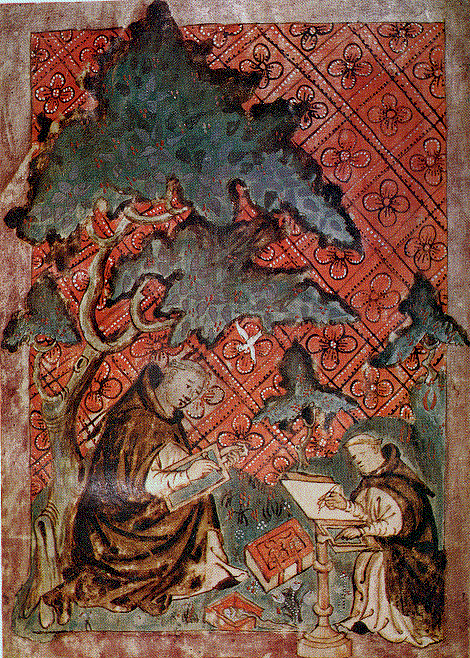
Groote accepted the challenge. However, before taking action, he decided to make a last trip to Paris in 1378 to obtain the books he needed.
According to Pomerius, prior of Groenendael between 1431 and 1432, he undertook this trip with his friend from Zwolle, the teacher Joan Cele (around 1350-1417), the historical founder of the excellent Dutch public education system, the Latin School.
On their way to Paris, they visit Jan van Ruusbroec (1293-1381), a Flemish “mystic” who lived in the Groenendael Priory on the edge of the Soignes Forest near Brussels.
Groote, still living in fear of God and the authorities, initially tries to make « more acceptable » some of the old sage’s writings while recognizing Ruusbroec as closer to the Lord than he is. In a letter to the community of Groenendael, he requested the prayer of the prior:
« I would like to recommend myself to the prayer of your provost and prior. For the time of eternity, I would like to be ‘the prior’s stepladder’, as long as my soul is united to him in love and respect.” (Note 1)
Back in Deventer, Groote concentrated on study and preaching. First he presented himself to the bishop to be ordained a deacon. In this function, he obtained the right to preach in the entire bishopric of Utrecht (basically the whole part of today’s Netherlands north of the great rivers, except for the area around Groningen).
First he preached in Deventer, then in Zwolle, Kampen, Zutphen and later in Amsterdam, Haarlem, Gouda and Delft. His success is so great that jealousy is felt in the church. Moreover, with the chaos caused by the great schism (1378 to 1417) installing two popes at the head of the church, the believers are looking for a new generation of leaders.
As early as 1374, Groote offered part of his parents’ house to accommodate a group of pious women. Endowed with a by-law, the first house of sisters was born in Deventer. He named them « Sisters of the Common Life », a concept developed in several works of Ruusbroec, notably in the final paragraph Of the Shining Stone (Van den blinckende Steen)
« The man who is sent from this height to the world below, is full of truth, and rich in all virtues. And he does not seek his own, but the honor of the one who sent him. And that is why he is upright and truthful in all things. And he has a rich and benevolent foundation grounded in the riches of God. And so he must always convey the spirit of God to those who need it; for the living fountain of the Holy Spirit is not a wealth that can be wasted. And he is a willing instrument of God with whom the Lord works as He wills, and how He wills. And it is not for sale, but leaves the honor to God. And for this reason he remains ready to do whatever God commands; and to do and tolerate with strength whatever God entrusts to him. And so he has a common life; for to him seeing [via contemplativa] and working [via activa] are equal, for in both things he is perfect.”
Radewijns, the organizer
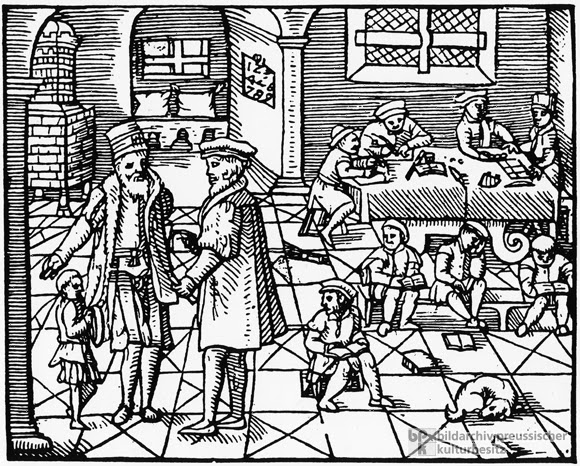
Following one of his first sermons, Groote recruited Florens Radewijns (1350-1400). Born in Utrecht, the latter received his training in Prague where, also at the early age of 18, he was awarded the title of Magister Artium.
Groote then sent him to the German city of Worms to be consecrated priest there. In 1380 Groote moved with about ten pupils to the house of Radewijns in Deventer; it would later be known as the « Sir Florens House” (Heer Florenshuis), the first house of the Brothers and above all its base of operation?
When Groote died of the plague in 1384, Radewijns decided to expand the movement which became the Brothers and Sisters of the Common Life. Soon it will be branded the Devotio Moderna (Modern Devotion).
Books and beguinages
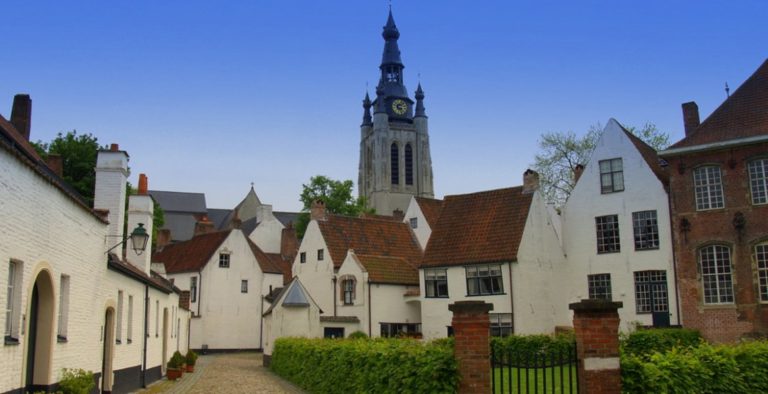
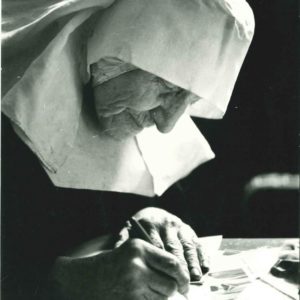
A number of parallels can be drawn with the phenomenon of the Beguines which flourished from the 13th century onward. (Note 2)
The first beguines were independent women, living alone (without a man or a rule), animated by a deep spirituality and daring to venture into the enormous adventure of a personal relationship with God. (Note 3)
Operating outside the official religious hierarchy, they didn’t beg but worked various jobs to earn their daily bread. The same goes for the Brothers of the Common Life, except that for them, books were at the center of all activities. Thus, apart from teaching, the copying and production of books represented a major source of income while allowing spreading the word to the many.
Lay Brothers and Sisters focused on education and their priests on preaching. Thanks to the scriptorium and printing houses, their literature and music will spread everywhere.
Windesheim
To protect the movement from unfair attacks and criticism, Radewijns founded a congregation of canons regular obeying the Augustinian rule.
In Windesheim, between Zwolle and Deventer, on land belonging to Berthold ten Hove, one of the members, a first cloister is erected. A second one, for women this time, is built in Diepenveen near Arnhem. The construction of Windesheim took several years and a group of brothers lived temporarily on the building site, in huts.
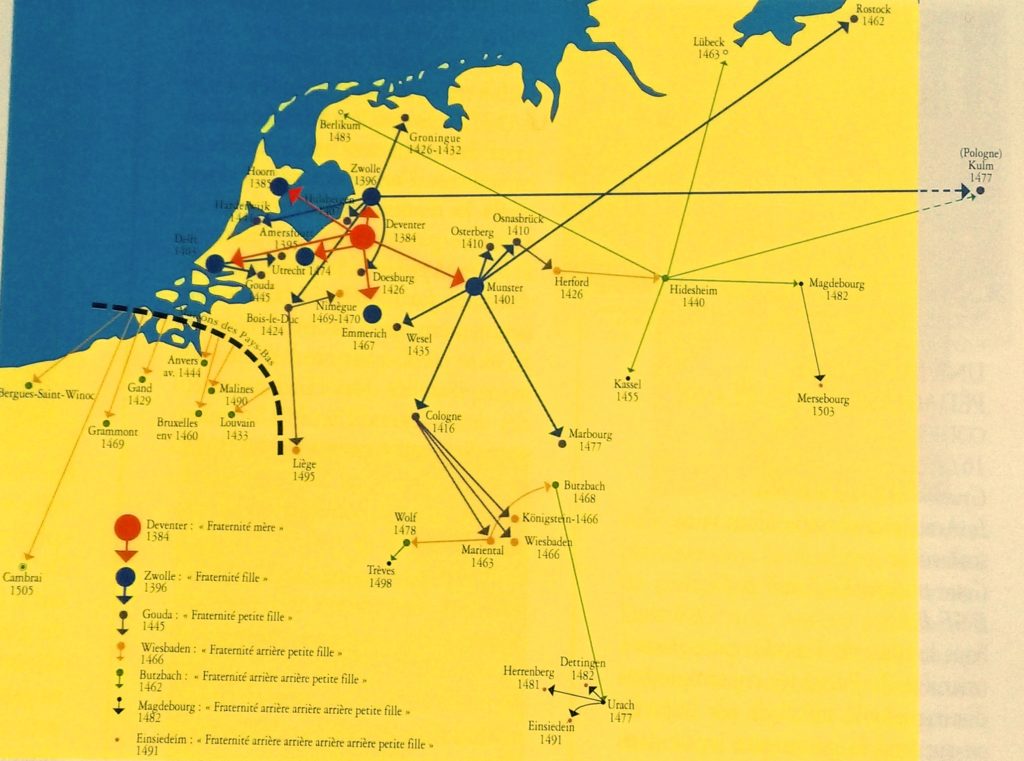
In 1399 Johannes van Kempen, who had stayed at Groote’s house in Deventer, became the first prior of the cloister of Mont Saint-Agnès near Zwolle and gave the movement new momentum. From Zwolle, Deventer and Windesheim, the new recruits spread all over the Netherlands and Northern Europe to found new branches of the movement.
In 1412, the congregation had 16 cloisters and their number reached 97 in 1500: 84 priories for men and 13 for women. To this must be added a large number of cloisters for canonesses which, although not formally associated with the Windesheim Congregation, were run by rectors trained by them.
Windesheim was not recognized by the Bishop of Utrecht until 1423 and in Belgium, Groenendael, associated with the Red Cloister and Korsendonc, wanted to be part of it as early as 1402.
Thomas a Kempis, Cusanus and Erasmus

Johannes van Kempen was the brother of the famous Thomas a Kempis (1379-1471). The latter, trained in Windesheim, animated the cloister of Mont Saint-Agnès near Zwolle and was one of the towering figures of the movement for seventy years. In addition to a biography he wrote of Groote and his account of the movement, his Imitatione Christi (The Imitation of Christ) became the most widely read work in history after the Bible.
Both Rudolf Agricola (1444-1485) and Alexander Hegius (1433-1498), two of Erasmus’ tutors during his training in Deventer, were direct pupils of Thomas a Kempis. The Latin School of Deventer, of which Hegius was rector, was the first school in Northern Europe to teach the ancient Greek language to children.

While no formal prove exists, it is tempting to believe that Cusanus (1401-1464), who protected Agricola and, in his last will, via his Bursa Cusanus, offered a scholarship for the training of orphans and poor students of the Brothers of the Common Life in Deventer, was also trained by this humanist network.
What is known is that when Cusanus came in 1451 to the Netherlands to put the affairs of the Church in order, he traveled with his friend Denis the Carthusian (van Rijkel) (1402-1471), a disciple of Ruusbroec, whom he commissioned to carry on this task.
A native of Limburg, trained at the famous Cele school in Zwolle, Dionysius the Carthusian also became the confessor of the Duke of Burgundy and is thought to be the “theological advisor” of the Duke’s ambassador and court painter, Jan Van Eyck. (Note 4)
Gansfort
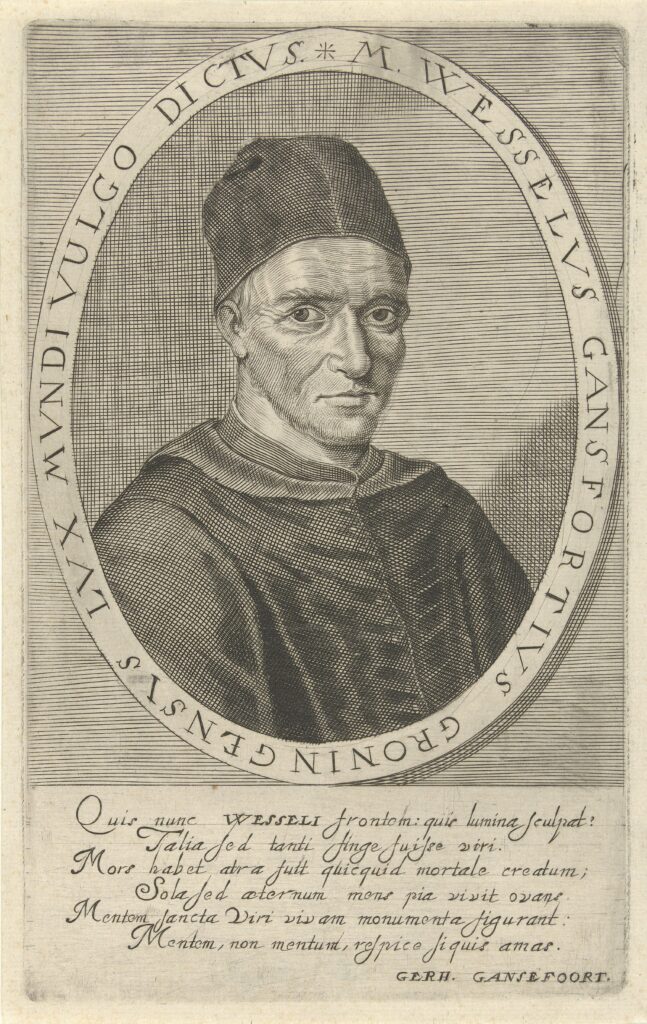
Wessel Gansfort (1419-1489), another exceptional figure of this movement was at the service of the Greek Cardinal Bessarion, the main collaborator of Nicolas of Cusa (Cusanus) at the Council of Ferrara-Florence of 1437. Gansfort, after attending the Brothers’ school in Groningen, was also trained by Joan Cele‘s Latin school in Zwolle.
The same goes for the first and only Dutch pope, Adrianus VI, who was trained in the same school before completing his training with Hegius in Deventer. This pope was very open to Erasmus’ reformist ideas… before arriving in Rome.
Hegius, in a letter to Gansfort, which he calls Lux Mundi (Light of the World), wrote:
« I send you, most honorable lord, the homilies of John Chrysostom. I hope that you will enjoy reading them, since the golden words have always been more pleasing to you than the pieces of this metal. As you know, I went to the library of Cusanus. There I found some books that I didn’t know existed (…) Farewell, and if I can do you a favor, let me know and consider it done.”
Rembrandt
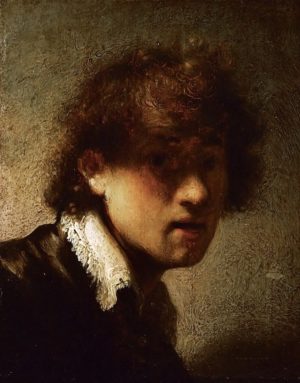
A quick look on Rembrandt’s intellectual training indicates that he too was a late product of this educational epic. In 1609, Rembrandt, barely three years old, entered elementary school where, like other boys and girls of his generation, he learned to read, write and… draw.
The school opened at 6 in the morning, at 7 in the winter, and closes at 7 in the evening. Classes begin with prayer, reading and discussion of a passage from the Bible followed by the singing of psalms. Here Rembrandt acquired an elegant writing style and much more than a rudimentary knowledge of the Gospels.
The Netherlands wanted to survive. Its leaders take advantage of the twelve-year truce (1608-1618) to fulfill their commitment to the public interest.
In doing so, the Netherlands at the beginning of the XVIIth century became the first country in the world where everyone had the chance to learn to read, write, calculate, sing and draw.
This universal educational system, no matter what its shortcomings, available to both rich and poor, boys and girls alike, stands as the secret behind the Dutch « Golden Century ». This high level of education also created those generations of active Dutch emigrants a century later in the American Revolution.
While others started secondary school at the age of twelve, Rembrandt entered the Leyden Latin School at the age of 7. There, the students, apart from rhetoric, logic and calligraphy, learn not only Greek and Latin, but also foreign languages such as English, French, Spanish or Portuguese. Then, in 1620, at the age of 14, with no laws restricting young talents, Rembrandt enrolled in University. The subject he chose was not Theology, Law, Science or Medicine, but… Literature.
Did he want to add to his knowledge of Latin the mastery of Greek or Hebrew philology, or possibly Chaldean, Coptic or Arabic? After all, Arabic/Latin dictionaries were already being published in Leiden at a time the city was becoming a major printing center in the world.
Thus, one realizes that the Netherlands and Belgium, first with Ruusbroec and Groote and later with Erasmus and Rembrandt, made an essential contribution in the not so distant past to the kind of humanism that can raise today humanity to its true dignity.
Hence, failing to extend our influence here, clearly seems to me something in the realm of the impossible.

Footnotes:
- Geert Groote, who discovered Ruusbroec’s work during his spiritual retreat at the Carthusian monastery of Monnikshuizen, near Arnhem, has translated at least three of his works into Latin. He sent The Book of the Spiritual Tabernacle to the Cistercian Cloister of Altencamp and his friends in Amsterdam. The Spiritual Marriage of Ruusbroec being under attack, Groote personally defends it. Thus, thanks to his authority, Ruusbroec’s works are copied in number and carefully preserved. Ruusbroec’s teaching became popularized by the writings of the Modern Devotion and especially by the Imitation of Christ.
- At the beginning of the 13th century the Beguines were accused of heresy and persecuted, except… in the Burgundian Netherlands. In Flanders, they are cleared and obtain official status. In reality, they benefit from the protection of two important women: Jeanne and Margaret of Constantinople, Countess of Flanders. They organized the foundation of the Beguinages of Louvain (1232), Gent (1234), Antwerp (1234), Kortrijk (1238), Ypres (1240), Lille (1240), Zoutleeuw (1240), Bruges (1243), Douai (1245), Geraardsbergen (1245), Hasselt (1245), Diest (1253), Mechelen (1258) and in 1271 it was Jan I, Count of Flanders, in person, who deposited the statutes of the great Beguinage of Brussels. In 1321, the Pope estimated the number of Beguines at 200,000.
- The platonic poetry of the Beguine, Hadewijch of Antwerp (XIIIth Century) has a decisive influence on Jan van Ruusbroec.
- It is significant that the first book printed in Flanders in 1473, by Erasmus’ friend and printer Dirk Martens, is precisely a work of Denis the Carthusian.
Erasmus’ dream: the Leuven Three Language College
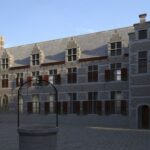
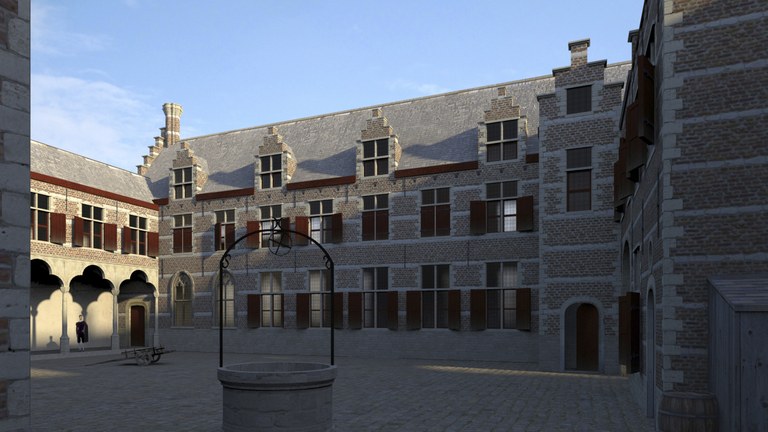
In autumn 2017, a major exhibit organized at the University library of Leuven and later in Arlon, also in Belgium, attracted many people. Showing many historical documents, the primary intent of the event was to honor the activities of the famous Three Language College (Collegium Trilingue), founded in 1517 by the efforts of the Christian Humanist Erasmus of Rotterdam (1467-1536) and his allies. Though modest in size and scope, Erasmus’ initiative stands out as one of the cradles of European civilization, as you will discover here.

Revolutionary political figures, such as William the Silent (1533-1584), organizer of the Revolt of the Netherlands against the Habsburg tyranny, humanist poets and writers such as Thomas More, François Rabelais, Miguel Cervantes and William Shakespeare, all of them, recognized their intellectual debt to the great Erasmus of Rotterdam, his exemplary fight, his humor and his great pedagogical project.
For the occasion, the Leuven publishing house Peeters has taken through its presses several nice catalogues and essays, published in Flemish, French as well as English, bringing together the contributions of many specialists under the wise (and passionate) guidance of Pr Jan Papy, a professor of Latin literature of the Renaissance at the Leuven University, with the assistance of a “three language team” of Latinists which took a fresh look at close to all the relevant and inclusively some new documents scattered over various archives.
“The Leuven Collegium Trilingue: an appealing story of courageous vision and an unseen international success. Thanks to the legacy of Hieronymus Busleyden, counselor at the Great Council in Mechelen, Erasmus launched the foundation of a new college where international experts would teach Latin, Greek and Hebrew for free, and where bursaries would live together with their professors”, reads the back cover of one of the books.
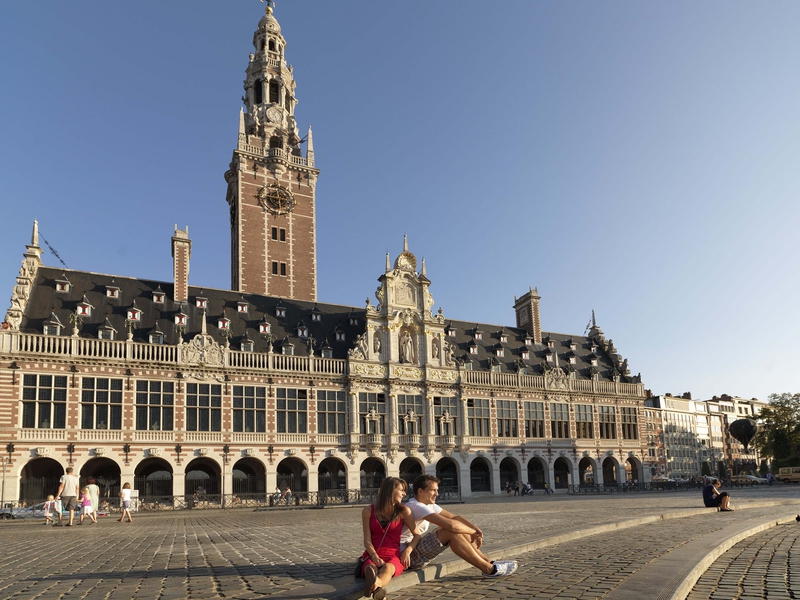
For the researchers, the issue was not necessarily to track down every detail of this institution but rather to answer the key question: “What was the ‘magical recipe’ which attracted rapidly to Leuven between three and six hundred students from all over Europe?”
Erasmus’ initiative was unprecedented. Having an institution, teaching publicly Latin and, on top, for free, Greek and Hebrew, two languages considered “heretic” by the Vatican, was already tantamount to starting a revolution.
Was it that entirely new? Not really. As early as the beginning of the XIVth century, for the Italian humanists in contact with Greek erudites in exile in Venice, the rigorous study of Greek, Hebraic and Latin sources as well as the Fathers and the New Testament, was the method chosen by the humanists to free mankind from the Aristotelian worldview suffocating Christianity and returning to the ideals, beauty and spirit of the “Primitive Church”.
For Erasmus, as for his inspirer, the Italian humanist Lorenzo Valla (1403-1457), the « Philosophy of Christ » (agapic love), has to come first and opens the road to end the internal divisions of Christianity and to uproot the evil practices of greed (indulgences, simony) and religious superstition (cult of relics) infecting the Church from the top to the bottom, and especially the mendicant orders.
To succeed, Erasmus sets out to clarify the meaning of the Holy Writings by comparing the originals written in Greek, Hebrew and Latin, often polluted following a thousand years of clumsy translations, incompetent copying and scholastic commentaries.
Brothers of the Common Life
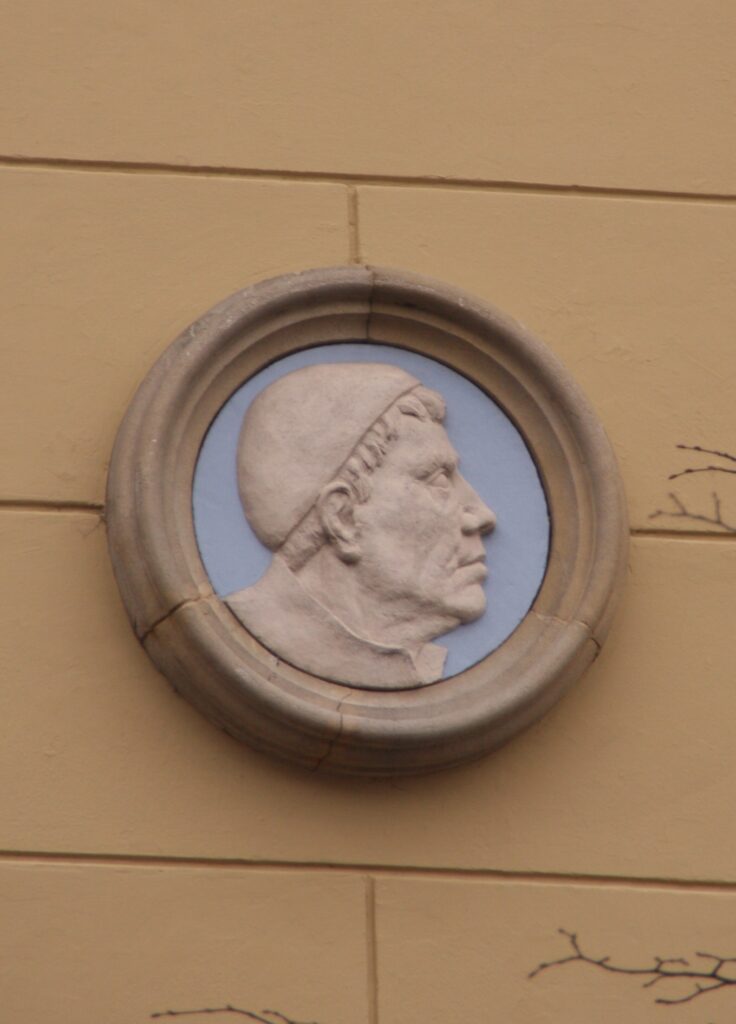
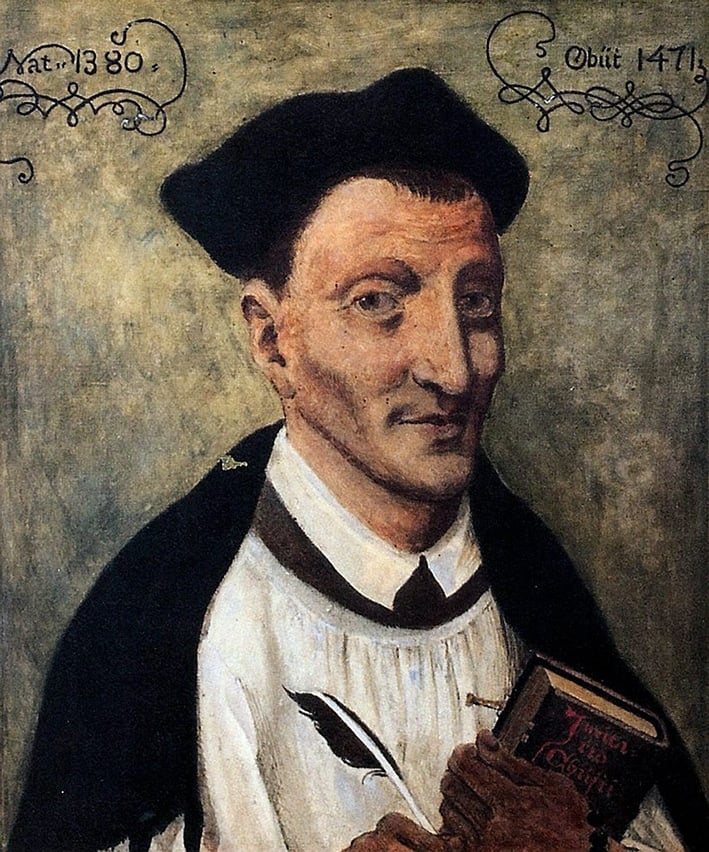

My own research allows me to recall that Erasmus was a true disciple of the Sisters and Brothers of the Common Life of Deventer in the Netherlands, a hotbed of humanism in Northern Europe. The towering figures that founded this lay teaching order are Geert Groote (1340-1384), Florent Radewijns (1350-1400) and Wessel Gansfort (1420-1489), all three said to be fluent in precisely these three languages.
The religious faith of this current, also known as the “Modern Devotion”, centered on interiority, as beautifully expressed in the little book of Thomas a Kempis (1380-1471), the Imitation of Christ. This most read book after the Bible, underlines the importance for the believer to conform one owns life to that of Christ who gave his life for mankind.
Rudolph Agricola
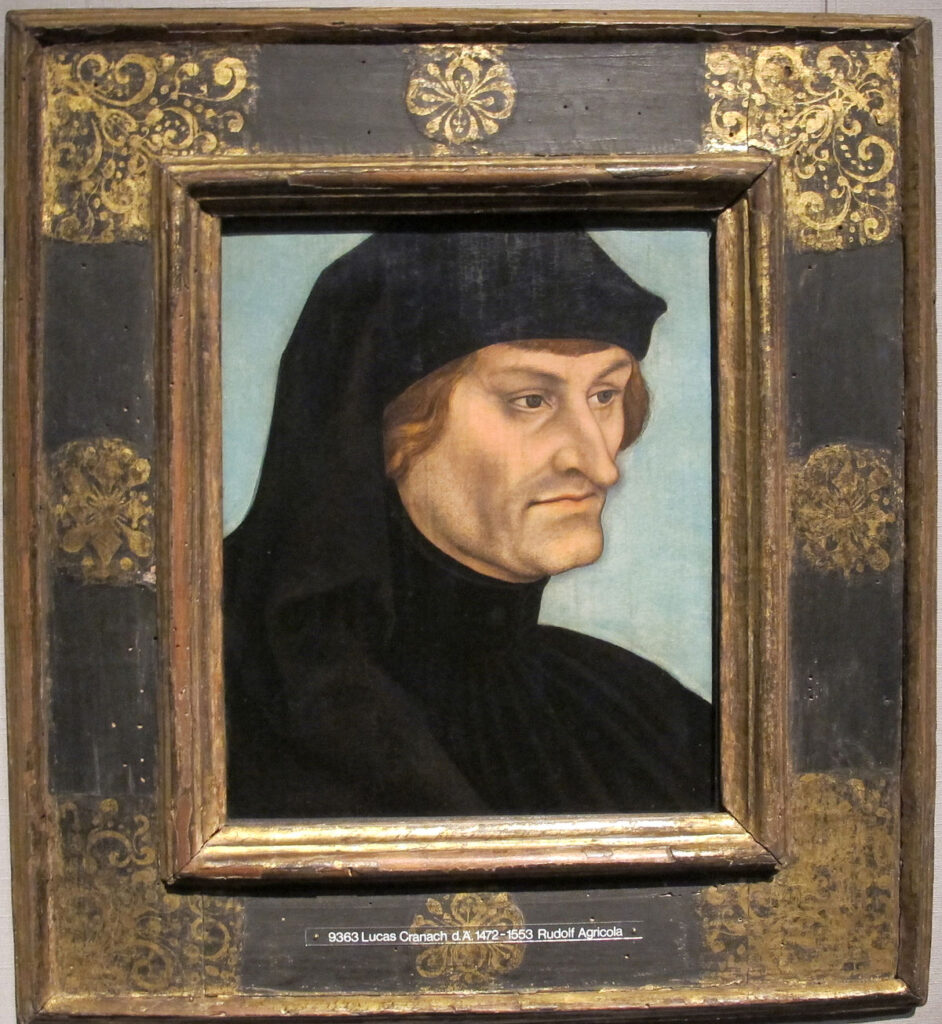
Hence, in 1475, Erasmus father, fluent in Greek and influenced by famous Italian humanists, sends his son to the chapter of the Brothers of the Common Life in Deventer, at that time under the direction of Alexander Hegius (1433-1499), himself a pupil of the famous Rudolph Agricola (1442-1485) which Erasmus had the chance to listen to and which he calls a “divine intellect”.
Follower of the cardinal-philosopher Nicolas of Cusa (1401-1464), enthusiastic advocate of the Italian Renaissance and the Good Letters, Agricola would tease his students by saying:
“Be cautious in respect to all that you learned so far. Reject everything! Start from the standpoint you will have to un-learn everything, except that what is based on your sovereign authority, or on the basis of decrees by superior authors, you have been capable of re-appropriating yourself”.
Erasmus, with the foundation of the Collegium Trilingue will carry this ambition at a level unreached before. To do so, Erasmus and his friend apply a new pedagogy. Hence, instead of learning by heart medieval commentaries, pupils are called to formulate their proper judgment and take inspiration of the great thinkers of the Classical period, especially “Saint Socrates”. Latin, a language that degenerated during the Roman Empire, will be purified from barbarisms.
With this approach, for pupils, reading a major text in its original language is only the start. An explorative work is required: one has to know the history and the motivations of the author, his epoch, the history of the laws of his country, its geography, cosmography, all considered to be indispensable instruments to put each text in its specific literary and historical context and allowing reading, beyond the words, the intention of their author.
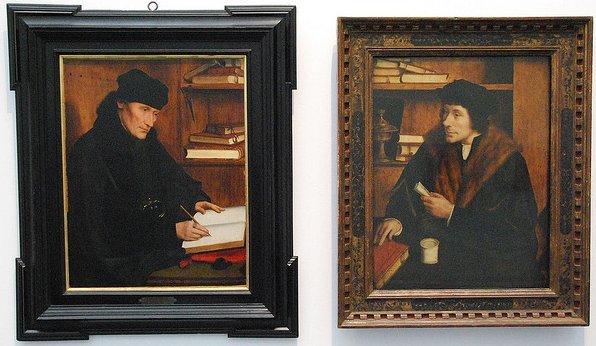
This “modern” approach (questioning, critical study of sources, etc.) of the Collegium Trilingue, after having demonstrated its efficiency by clarifying the message of the Gospel, will rapidly travel over Europe and reach many other domains of knowledge, notably scientific issues! By uplifting young talents, out of the small and sleepy world of scholastic certitudes, this institution rapidly grew into a hotbed for creative minds.
For the ignorant reader who often considers Erasmus as some kind of comical writer praising madness which lost it after an endless theological dispute with Martin Luther, such a statement might come as a surprise.
Scientific Renaissance
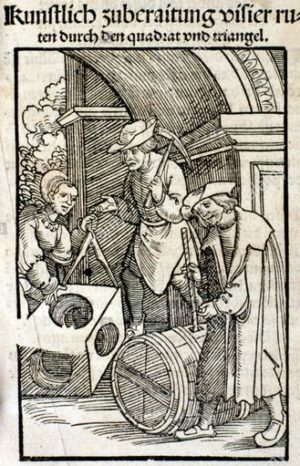
While Belgium’s contributions to science, under Emperor Charles Vth, are broadly recognized and respected, few are those understanding the connection uniting Erasmus with a mathematician as Gemma Frisius and his pupil and friend Gerard Mercator, an anatomist such as Andreas Vesalius or a botanist such as Rembert Dodonaeus.
Hence, as already thoroughly documented in 2011 by Professor Jan Papy in a remarkable article, the scientific renaissance which bloomed in the Netherlands and Belgium in the early XVIth century, could not have taken place if it were for the “linguistic revolution” provoked by the Collegium Trilingue.
Because, beyond the mastery of their vernacular languages (French and Dutch), hundreds of youth, by studying Greek, Latin and Hebrew, suddenly got access to all the scientific treasures of Greek Philosophy and the best authors in those newly discovered languages.
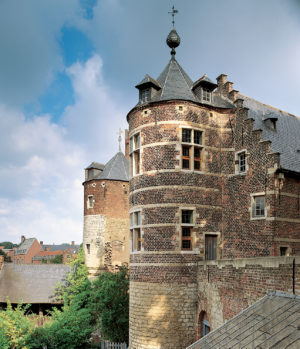
At last, they could read Plato in the text, but also Anaxagoras, Heraclites, Thales of Millet, Eudoxus of Cnidus, Pythagoras, Eratosthenes, Archimedes, Galen, Vitruvius, Pliny the elder, Euclid and Ptolemy whose work they will master and eventually correct.
As the books published by Peeters account in great detail, during the first century of its existence, the Collegium Trilingue had a rough time confronting political uproar and religious strife. Heavy critique came especially form the “traditionalists”, a handful of theologians for which the Greeks were nothing but schismatics and the Jews the assassins of Christ and esoterics.
The opposition was such that Erasmus himself never could teach at the Collegium and, while keeping in close contact, decided to settle in Basel, Switzerland, in 1521.
Despite all of this, the Erasmian revolution conquered Europe overnight and a major part of the humanists of that period were trained or influenced by this institution. From abroad, hundreds of pupils arrived to follow classes given by professors of international reputation.
27 European universities integrated pupils of the Collegium in their teaching staff: among them stood Jena, Wittenberg, Cologne, Douai, Bologna, Avignon, Franeker, Ingolstadt, Marburg, etc.
Teachers at the Collegium were secured a decent income so that they weren’t obliged to give private lectures to secure a living and could offer public classes for free. As was the common practice of the Brothers of the Common Life in Deventer, a system of bursa allowed talented though poor students, including many orphans, to have access to higher learning. “Something not necessarily unusual those days, says Pr Jan Papy, and done for the sake of the soul of the founder (of the Collegium, reference to Busleyden)”.
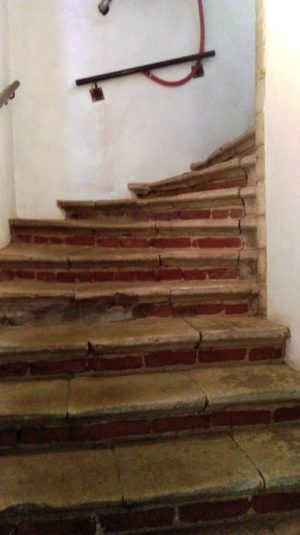
While visiting Leuven and contemplating the worn-out steps of the spiral staircase (wentelsteen), one of the last remains of the building that had a hard time resisting the assaults of time and ignorance, one can easily imagine those young minds jumping down the stairs with enthusiasm going from the dormitory to the classroom. Looking at the old shopping list of the school’s kitchen one can conclude the food was excellent with lots of meat, poultry but also vegetables and fruits, and sometimes wine from Beaune in Burgundy, especially when Erasmus came for a visit! While over the years, of course, the quality of the learning transmitted, would vary in accordance with the excellence of its teachers, the Collegium Trilingue, whose activity would last till the French revolution, gave its imprint in history by giving birth to what some have called the “Little Renaissance” of the first half of the XVIth century.
In France, the Sorbonne University reacted with fear and in 1523, the study of Greek was outlawed in France.
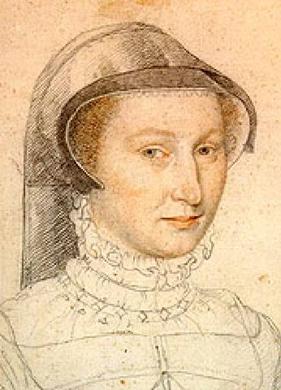
François Rabelais, at that time a monk in Vendée, saw his books confiscated by the prior of his monastery and deserts his order. Later, as a doctor, he translated the medical writings of the Greek scientist Galen from Greek into French. Rabelais’s letter to Erasmus shows the highest possible respect and intellectual debt to Erasmus.
In 1530, Marguerite de Navarre, sister of King Francis, and reader and admirer of Erasmus, at war with the Sorbonne, convinced her brother to allow Guillaume Budé, a friend of Erasmus, to create the “Collège des Lecteurs Royaux” (ancestor of the Collège de France) on the model of the Collegium Trilingue. And to protect its teachers, many coming directly from Leuven, they got the title of “advisors” of the King. The Collège taught Latin, Hebrew and Greek, and rapidly added Arab, Syriac, medicine, botany and philosophy to its curriculum.
Dirk Martens

Also celebrated for the occasion, Dirk Martens (1446-1534), rightly considered as one of the first humanists to introduce printing in the Southern Netherlands.
Born in Aalst in a respected family, the young Dirk got his training at the local convent of the Hermits of Saint William. Eager to know the world and to study, Dirk went abroad. In Venice, at that time a cosmopolite center harboring many Greek erudite in exile, Dirk made his first steps into the art of printing at the workshop of Gerardus de Lisa, a Flemish musician who set up a small printing shop in Treviso, close to Venice.
Back in Aalst, together with his partner John of Westphalia, Martens printed in 1473 the first book in the country with a movable type printing press, a treatise of Dionysius the Carthusian (1401-1471), a friend and collaborator of cardinal-philosopher Nicolas of Cusa, as well as the spiritual advisor of Philip the Good, the Duke of Burgundy and thought to be the occasional « theological » advisor of the latter’s court painter, Jan Van Eyck.
If the oldest printed book known to us is a Chinese Buddhist writing dating from 868, the first movable printing types, made first out of wood and then out of hardened porcelain and metal, came from China and Korea in 1234.
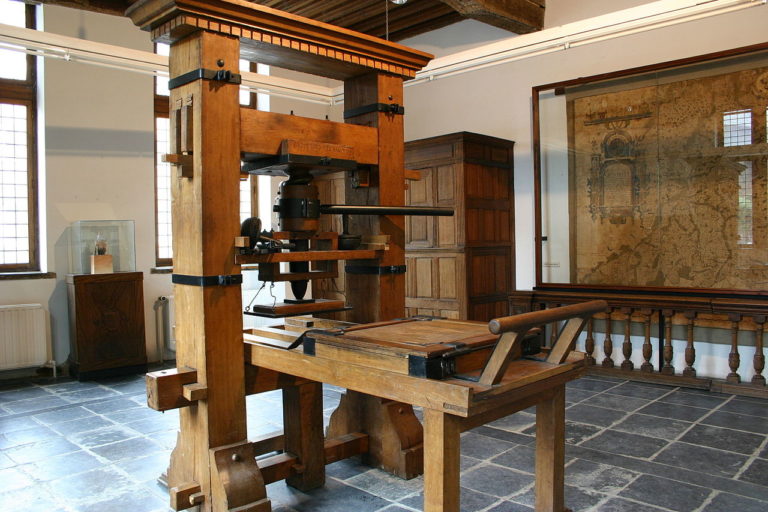
The history of two lovers, a poem written by Aeneas Piccolomini before he became the humanist Pope Pius II, was another early production of Marten’s print shop in Aalst.
Proud to have introduced this new technique allowing a vast increase in the spreading of good and virtuous ideas, Martens wrote in one of the prefaces: “This book was printed by me, Dirk Martens of Aalst, the one who offered the Flemish people all the know-how of Venice”.
After some years in Spain, Martens returned to Aalst and started producing breviaries, psalm books and other liturgical texts. While technically elaborate, the business never reached significant commercial success.
Martens then moved to Antwerp, at that time one of the main ports and cross-roads of trade and culture. Several other Flemish humanists born in Aalst played eminent roles in that city and animate its intellectual and cultural life. Among these:
—Cornelis De Schrijver (1482-1558), the secretary of the City of Aalst, better known under his latin name Scribonius and later as Cornelius Grapheus. Writer, translator, poet, musician and friend of Erasmus, he was accused of heresy and hardly escaped from being burned at the stake.
—Pieter Gillis (1486-1533), known as Petrus Aegidius. Pupil of Martens, he worked as a corrector in his company before becoming Antwerp’s chief town clerk. Friend of Erasmus and Thomas More, he appears with Erasmus in the double portrait painted by another friend of both, Quinten Metsys (1466-1530).
—Pieter Coecke van Aelst (1502-1550), editor, painter and scenographer. After a trip to Italy, he set up a workshop in Antwerp. Pieter will produce patrons for tapestries, translated with the help of his wife the works of the Roman architect Vitruvius into Dutch and trained the young Flemish painter Bruegel the Elder who will marry his daughter.
Invention of pocket books
In Antwerp, Martens became part of this milieu and his workshop became a meeting place for painters, musicians, scientists, poets and writers. With the Collegium Trilingue, Martens opens a second shop, this time in Leuven to work with Erasmus. In order to provide adequate books to the Collegium, Martens proudly became, in the footsteps of the Venetian Printer Aldo Manuce, one of the first printers to concentrate on in-octavo 8° (22 x 12 cm), i.e. “pocket” size books affordable by all and which students could take home !
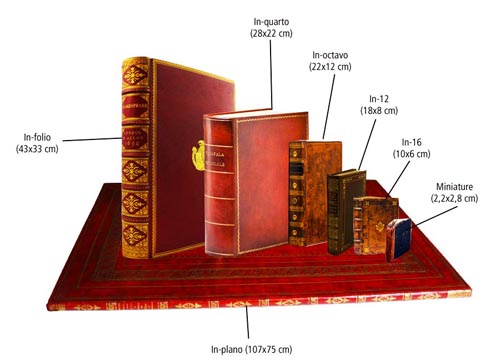
For the specialists of the Erasmus house of Anderlecht, close to Brussels,
“Martens innovated in nearly all domains. As well as in terms of printing types as lay-out. He was the first to introduce Italics, Greek and Hebrew letter types. He also generalized the use of ‘New Roman’ letter type so familiar today. During the first thirty years of the XVIth century, he also operated the revolution in lay-out (chapters and paragraphs) that gave birth to the modern book as we know it today. All this progress, he achieved in close cooperation with Erasmus”.
Thomas More’s Utopia

In 1516, it was Dirk Martens who printed the first edition of Thomas More’s Utopia. Among the hundreds of editions he printed mostly alone, 61 books and writings of Erasmus, notably In Praise of Folly. He also produced More’s edition of the roman satirist Lucian and Columbus’ account of the discovery of the new world. In 1423, Martens printed the complete works of Homer, quite a challenge!
In 1520, a papal bull of Leo X condemned the errors of Martin Luther and ordered the confiscation of his writings to be burned in public in front of the clergy and the people.
For Erasmus, burning books didn’t automatically erased their their content from the minds of the people. “One starts by burning books, one finishes by burning people” Erasmus warned years before Heinrich Heine said that “There, were one burns books, one ends up burning people”.
Printers and friends of Erasmus, especially in France, died on the stake opening the doors for the religious wars that will ravage Europe for the century to come.
What Erasmus feared above all, is that with the Vatican’s brutal war against Luther, it is the entire cultural renaissance and the learning of languages that got threatened with extinction.
In July 1521, confronted with the book burning, the German painter and engraver Albrecht Dürer, who made his living with bible illustrations, left Antwerp with his wife to return to his native Nuremberg.
Thirty years later, in 1552, the great cartographer Gerardus Mercator, a brilliant pupil of the Collegium Trilingue, for having called into question the views of Aristotle, went into exile and settled in Duisbourg, Germany.
In 1521, at the request of his friends who feared for his life, Erasmus left Leuven for Basel and settled in the workshop of another humanist, the Swiss printer Johann Froben.
In 1530, with a foreword of Erasmus, Froben published Georgius Agricola’s inventory of mining techniques, De Re Metallica, a key book that vastly contributed to the industrial revolution of Saxen, Switzerland, Germany and the whole of Europe.
Conclusion
If certain Catholic historians try to downplay the hostility of their Church towards Erasmus, the fact remains that between 1559 and 1900, the full works of Erasmus were on the “Index Vaticanus” and therefore “forbidden readings” for Catholics.
If Thomas More, whom Erasmus considered as his twin brother, was canonized by Pius XI in 1935 and recognized as the patron saint of the political leaders, Erasmus himself was never rehabilitated.
Interrogated by this author in a letter, the Pope Francis returned a polite but evasive answer.
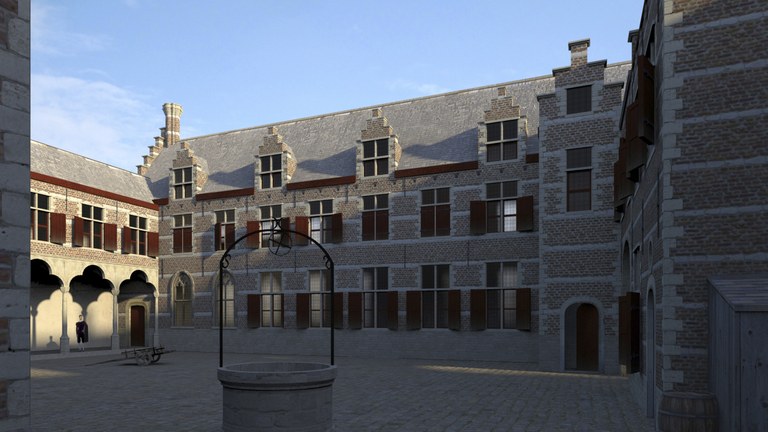
Let’s rebuild the Collegium Trilingue !
With the exception of the staircase, only a few stones remain of the historical building housing the Collegium Trilingue. In 1909, the University of Louvain planned to buy up and rebuild the site but the First World War changed priorities. Before becoming social housing, part of the building was used as a factory. As a result, today, there is no overwhelming charm. However, seeing the historical value of the site, we cannot but fully support a full reconstruction plan of the building and its immediate environment.
It would make the historical center of Leuven so much nicer, so much more attractive and very much more loyal to its own history. On top, such a reconstruction wouldn’t cost much and might interest private investors. The images in 3 dimensions produced for the Leuven exhibit show a nice Flemish Renaissance building, much in the style of the marvels constructed by architect Rombout II Keldermans.
Every period has the right to honestly “re-write” its own history, without falsifications, according to its own vision of the future.
It has to be noted here that the world famous “Rubenshuis” in Antwerp, is not at all the original building, but a scrupulous reconstruction of the late 1930s.
With Kondiaronk and Leibniz, re-inventing a society without oligarchy
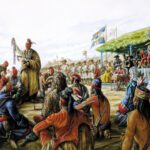

By Karel Vereycken, May 2023.
Helga Zepp-LaRouche, the founder of the Schiller Institute, in her keynote address to the Schiller Institute’s Nov. 22, 2022 videoconference, “For World Peace—Stop the Danger of Nuclear War: Third Seminar of Political and Social Leaders of the World,” called on world leaders to eradicate the evil principle of oligarchy.
Oligarchy is defined as a power structure in which power rests with a small number of people having certain characteristics (nobility, fame, wealth, education, or corporate, religious, political, or military control) and who impose their own power over that of their people.
To be precise, Zepp-LaRouche said :
“For 600 years, there has been a continuous battle between two forms of government, between the sovereign nation state and the oligarchical form of society, vacillating back and forth with sometimes a greater emphasis in this or that direction.
All empires based on the oligarchical model have been oriented towards protecting the privileges of the ruling elite, while trying to keep the masses of the population as backward as possible,
because as sheep they are easier to control (…)”
Now, unfortunately, most of the citizens of the transatlantic world and elsewhere will tell you that abolishing the oligarchical principle is “a good idea”, a “beautiful dream”, but that reality tells us “it can’t happen” for the very simple reason that “it never happened before”.
Societies, by definition, they argue, are in-egalitarian. Kings and Presidents of Republics, they argue, eventually might have “pretended” they ruled over the masses for their “common good”, but in reality, our fellow-citizens think, it was always the rule of a handful favoring their own interest over the majority.
The BRICS
Interesting for all of us, is that some leading thinkers involved in the BRICS movement, are trying to imagine new ways of collective rule excluding oligarchical principles.
For example, going in that direction, economist Pedro Paez, former advisor to Ecuador’s Rafael Correa, in his intervention at the April 15-16 Schiller Institute’s video conference, defended
“a new concept of currency based on monetary arrangements of clearing houses for regional payments, that can be joined into a world clearing house system, which could also prevent another type of unilateral, unipolar hegemony from arising, such as the one that was established with Bretton Woods, and that would instead open the doors to multipolar management”.
Also Belgian philosopher and theologian Marc Luyckx, a former member of the Jacques Delors famous taskforce « Cellule de Prospective » of the European Commission, in a video interview on the de-dollarization of the world economy, underlined that the BRICS countries are creating a world order whose nature makes it so that not a single member of their own group can become the dominant power.
The Dawn of Everything
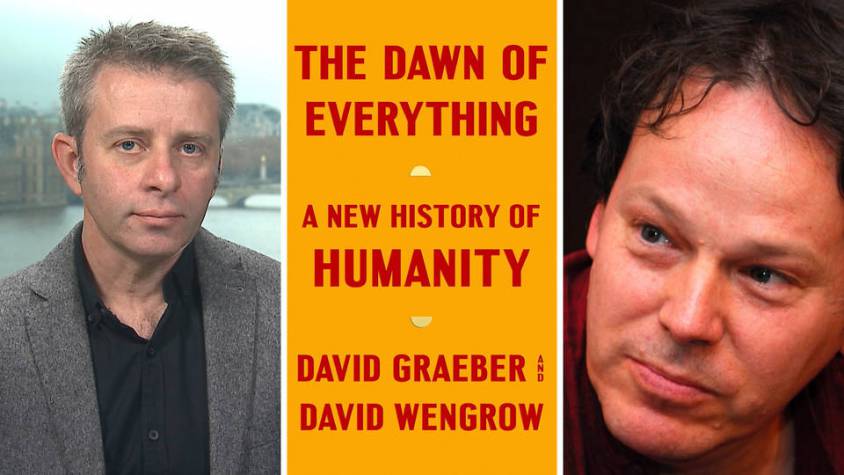
The good news is that a mind-provoking, 700-page book, titled “The Dawn of Everything: A New History of Humanity”, written and published in 2021 by the American anthropologist David Graeber and the British archaeologist David Wengrow, destroys the conventional notions of ancient human cultures making linear progress toward the neo-liberal economic model and therefore, by implication, high levels of inequality.
Even better, based on hard facts, the book largely debunks the “narrative” that oligarchical rule is somehow “natural”. Of course, the oligarchical principle ruled often and often for a long time. But, surprisingly, the book offers overwhelming indications and “hard facts” proving that in ancient times, some societies, though not all, which eventually prospered over centuries, through political choices, consciously adopted modes of governance preventing minority groups from permanently keeping a hegemonic grip over societies.
Zepp-LaRouche’s 10th point
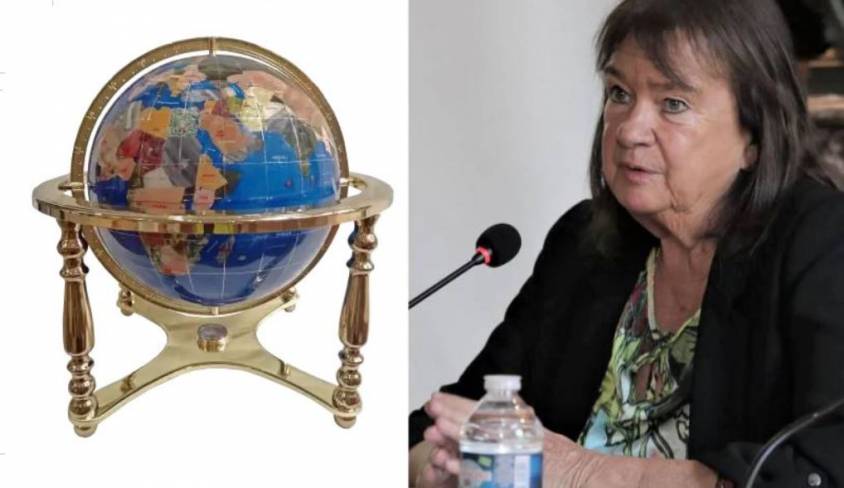
The subject matter of this issue is intimately linked to the 10th point raised by Helga Zepp-LaRouche, which, in order to demonstrate that all sources of evil can be eradicated by education and political decision, that man’s natural inclination, is intrinsically to do the good. The very existence of historical precedents of societies surviving without oligarchy over hundreds of years, is of course, the “practical” proof of man’s axiomatic inclination to do the good.
Unsurprisingly, some argue that the issue of “good” and “evil” is nothing but a “theological debate”, since the concepts of “good” and “evil” are concepts made up by humans in order to compare themselves with one another. They argue it would never occur to anyone to argue about whether a fish, or a tree, were good or evil, since they lack any form of self-conscience enabling them to measure if their deeds and actions fulfill their own inclination or that of their creator.
Now, part of the “Biblical answer” to this question, if man is bad or evil, claims that people “once lived in a state of innocence”, yet were tainted by original sin. We desired to be godlike and have been punished for it; now we live in a fallen state while hoping for future redemption.
Overturning the evil Rousseau and Hobbes
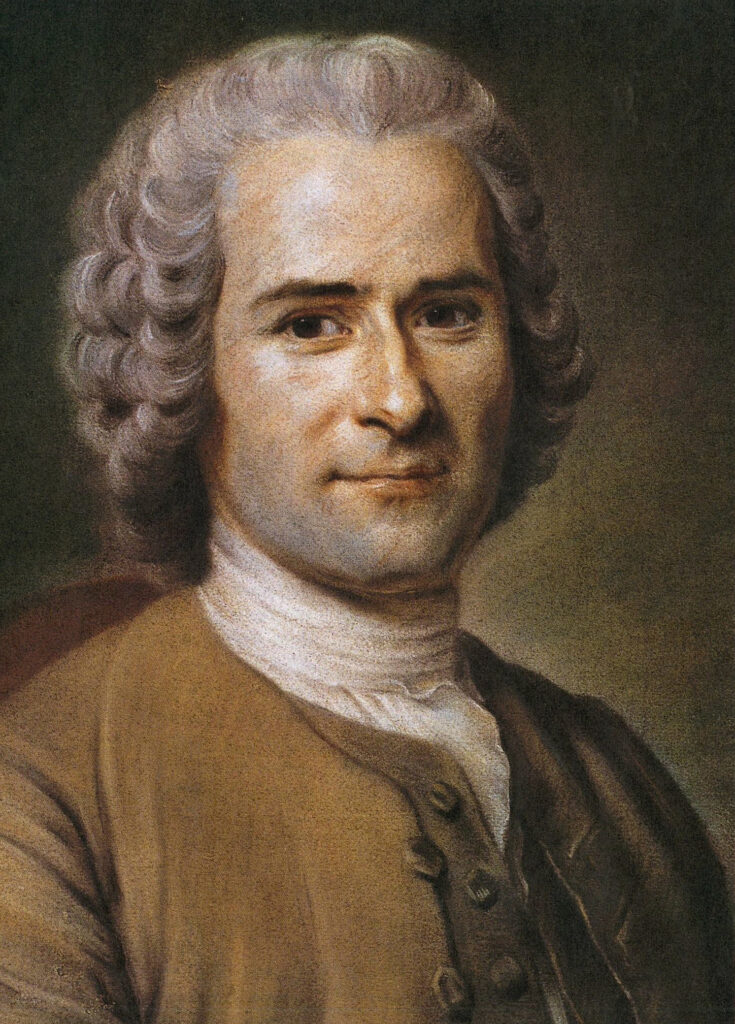
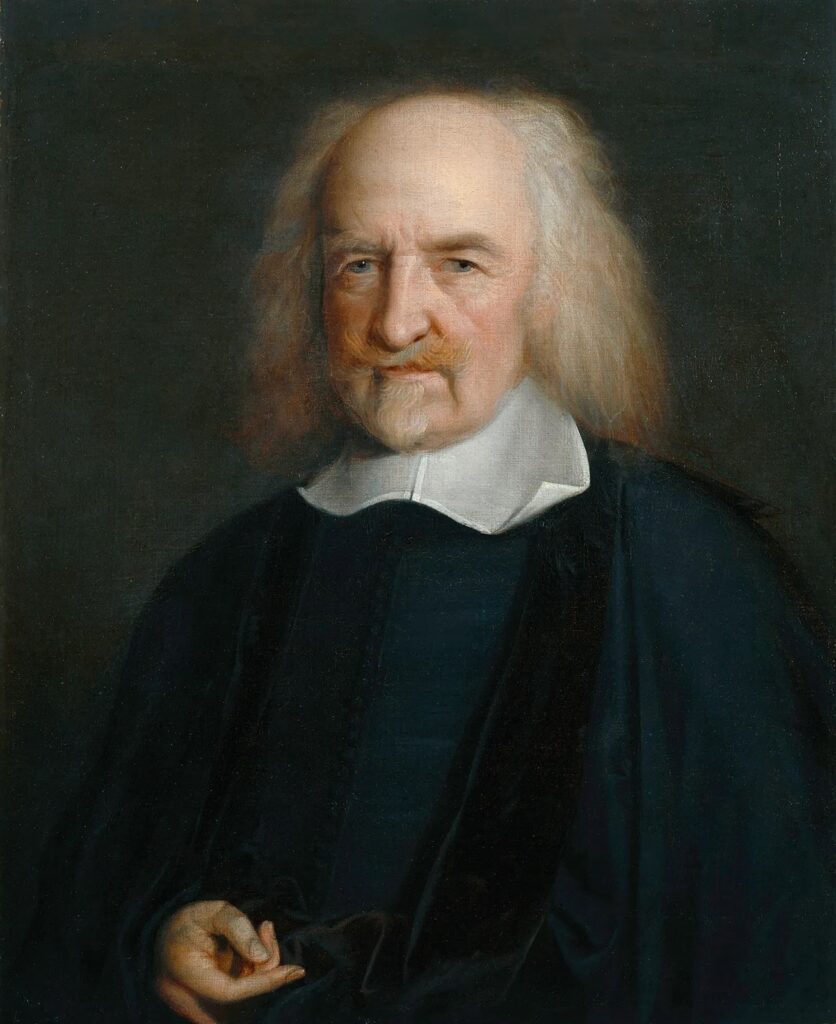
Graeber and Wengrow, establishing the core argument of their entire book, demonstrate in a very provocative way how we got brainwashed by the pessimistic and destructive oligarchical ideology, especially that promoted by both Rousseau and Hobbes, for whom inequality is the natural state of man, a humanity which might have eventually been good as “a noble savage”, before becoming “civilized” and a society only surviving thanks to a “social contract” (voluntary bottom-up submission) or a “Leviathan” (top down dictatorship) :
“Today, the popular version of this [biblical] story [of man thrown out of the Garden of Eden] is typically some updated variation on Jean-Jacques Rousseau’s Discourse on the Origin and the Foundation of Inequality Among Mankind, which he wrote in 1754. Once upon a time, the story goes, we were hunter-gatherers, living in a prolonged state of childlike innocence, in tiny bands. These bands were egalitarian; they could be for the very reason that they were so small. It was only after the “Agricultural Revolution,” and then still more the rise of cities, that this happy condition came to an end, ushering in ‘civilization’ and ‘the state’—which also meant the appearance of written literature, science and philosophy, but at the same time, almost everything bad in human life: patriarchy, standing armies, mass executions and annoying bureaucrats demanding that we spend much of our lives filling in forms.
“Of course, this is a very crude simplification, but it really does seem to be the foundational story that rises to the surface whenever anyone, from industrial psychologists to revolutionary theorists, says something like ‘but of course human beings spent most of their evolutionary history living in groups of ten or twenty people,’ or ‘agriculture was perhaps humanity’s worst mistake.’ And as we’ll see, many popular writers make the argument quite explicitly. The problem is that anyone seeking an alternative to this rather depressing view of history will quickly find that the only one on offer is actually even worse: if not Rousseau, then Thomas Hobbes.
“Hobbes’s Leviathan, published in 1651, is in many ways the founding text of modern political theory. It held that, humans being the selfish creatures they are, life in an original State of Nature was in no sense innocent; it must instead have been ‘solitary, poor, nasty, brutish, and short’—basically, a state of war, with everybody fighting against everybody else. Insofar as there has been any progress from this benighted state of affairs, a Hobbesian would argue, it has been largely due to exactly those repressive mechanisms that Rousseau was complaining about: governments, courts, bureaucracies, police. This view of things has been around for a very long time as well. There’s a reason why, in English, the words ‘politics’ ‘polite’ and ‘police’ all sound the same—they’re all derived from the Greek word polis, or city, the Latin equivalent of which is civitas, which also gives us ‘civility,’ ‘civic’ and a certain modern understanding of ‘civilization.
“Human society, in this view, is founded on the collective repression of our baser instincts, which becomes all the more necessary when humans are living in large numbers in the same place. The modern-day Hobbesian, then, would argue that, yes, we did live most of our evolutionary history in tiny bands, who could get along mainly because they shared a common interest in the survival of their offspring (‘parental investment,’ as evolutionary biologists call it). But even these were in no sense founded on equality. There was always, in this version, some ‘alpha-male’ leader. Hierarchy and domination, and cynical self-interest, have always been the basis of human society. It’s just that, collectively, we have learned it’s to our advantage to prioritize our long-term interests over our short-term instincts; or, better, to create laws that force us to confine our worst impulses to socially useful areas like the economy, while forbidding them everywhere else
“As the reader can probably detect from our tone, we don’t much like the choice between these two alternatives. Our objections can be classified into three broad categories. As accounts of the general course of human history, they:
1) simply aren’t true;
2) have dire political implications and
3) make the past needlessly dull.”
As a consequence of the victory of imperial models of political power, the only accepted “narrative” of man’s “evolution”, automatically validating an oligarchical grip over society, is that which allows “confirming” the pre-agreed-upon dogma erected as immortal “truth”. And any historical findings or artifacts contradicting or invalidating the Rousseau-Hobbes narrative will be, at best, declared anomalies.
Open our eyes
Graeber and Wengrow’s book is an attempt
“to tell another, more hopeful and more interesting story; one which, at the same time, takes better account of what the last few decades of research have taught us. Partly, this is a matter of bringing together evidence that has accumulated in archaeology, anthropology and kindred disciplines; evidence that points towards a completely new account of how human societies developed over roughly the last 30,000 years. Almost all of this research goes against the familiar narrative, but too often the most remarkable discoveries remain confined to the work of specialists, or have to be teased out by reading between the lines of scientific publications.”
To give just a sense of how different the emerging picture is:
“[I]t is clear now that human societies before the advent of farming were not confined to small, egalitarian bands. On the contrary, the world of hunter-gatherers as it existed before the coming of agriculture was one of bold social experiments, resembling a carnival parade of political forms, far more than it does the drab abstractions of evolutionary theory. Agriculture, in turn, did not mean the inception of private property, nor did it mark an irreversible step towards inequality. In fact, many of the first farming communities were relatively free of ranks and hierarchies. And far from setting class differences in stone, a surprising number of the world’s earliest cities were organized on robustly egalitarian lines, with no need for authoritarian rulers,
ambitious warrior-politicians, or even bossy administrators.”
Kondiaronk, Leibniz and the Enlightenment
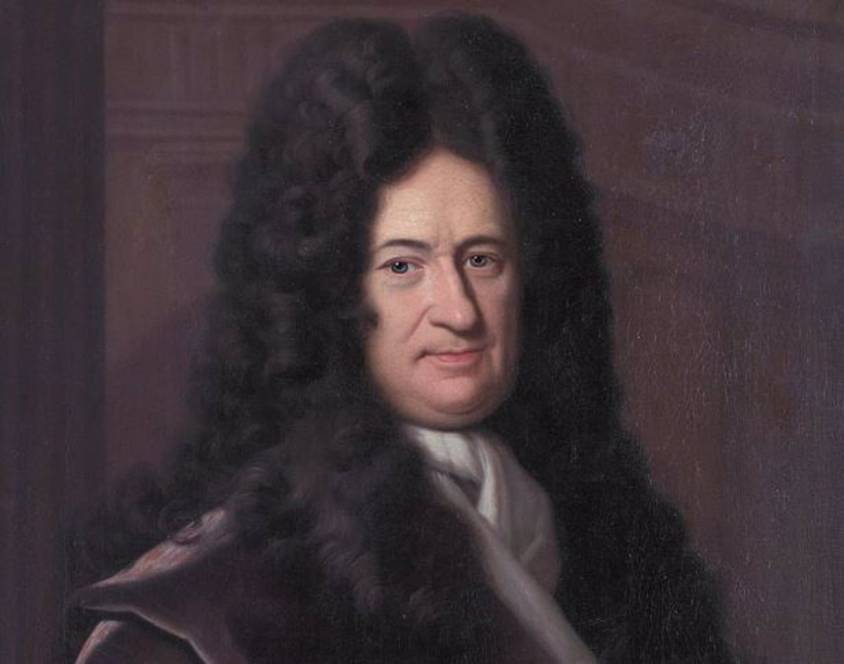
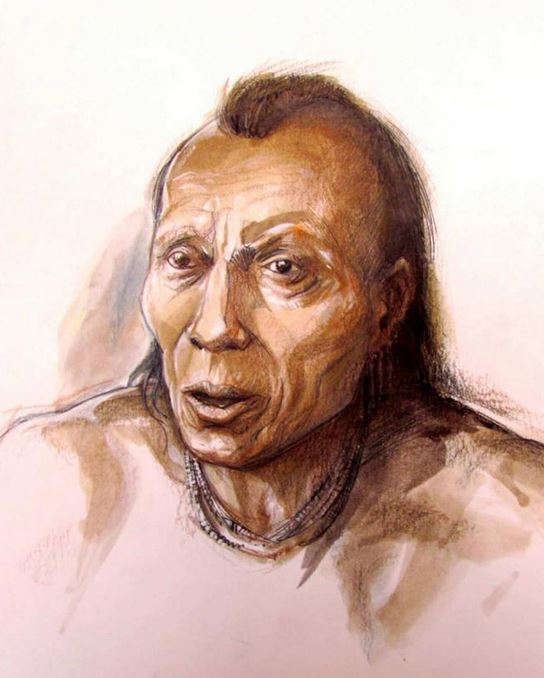
In fact, Rousseau’s story, argue the authors, was in part a response to critiques of European civilization, which began in the early decades of the 18th century. “The origins of that critique, however, lie not with the philosophers of the Enlightenment (much though they initially admired and imitated it), but with indigenous commentators and observers of European society, such as the Native American (Huron-Wendat) statesman Kondiaronk,” and many others.
And when prominent thinkers, such as Leibniz, “urged his patriots to adopt Chinese models of statecraft, there is a tendency for contemporary historians to insist they weren’t really serious”.
However, many influential Enlightenment thinkers did in fact claim that some of their ideas on the subject of inequality were directly taken from Chinese or Native American sources!
Just as Leibniz became familiar with Chinese civilization through his contact with the Jesuit missions, the ideas from Native Americans reached Europe by way of books such as the widely read seventy-one-volume report The Jesuit Relations, published between 1633 and 1673.
While today, we would think personal freedom is a good thing, this was not the case for the Jesuits complaining about the Native Americans. The Jesuits were opposed to freedom in principle:
“This, without doubt, is a disposition quite contrary to the spirit of the Faith, which requires us to submit not only our wills, but our minds, our judgments, and all the sentiments of man
to a power unknown to the laws and sentiments of corrupt nature.”
Jesuit father Jérôme Lallemant, whose correspondence provided an initial model for The Jesuit Relations, noted of the Wendat Indians in 1644: “I do not believe that there is a people on earth freer than they, and less able to allow to the subjection of their wills to any power whatever”.
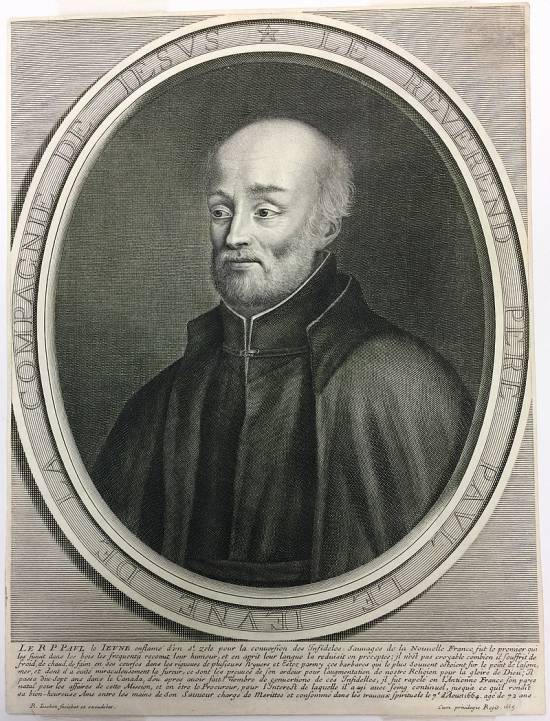
Even more worrisome, their high level of intelligence. Father Paul Le Jeune, Superior of the Jesuits in Canada in the 1630:
“There are almost none of them incapable of conversing or reasoning very well, and in good terms, on matters within their knowledge. The councils, held almost every day in the Villages, and on almost all matters, improve their capacity for talking”.
Or in Lallemant’s words:
“I can say in truth that, as regards intelligence, they are in no ways inferior to Europeans and to those who dwell in France. I would never have believed that, without instruction, nature could have supplied a most ready and vigorous eloquence, which I have admired in many Hurons (American Natives); or more clear-nearsightedness in public affairs, or a more discreet management in things to which they are accustomed”.
(The Jesuit Relations, vol. XXVIII, p. 62.)
Some Jesuits went much further, noting – not without a trace of frustration – that New World “savages” seemed rather cleverer overall than the people they were used to dealing with at home.
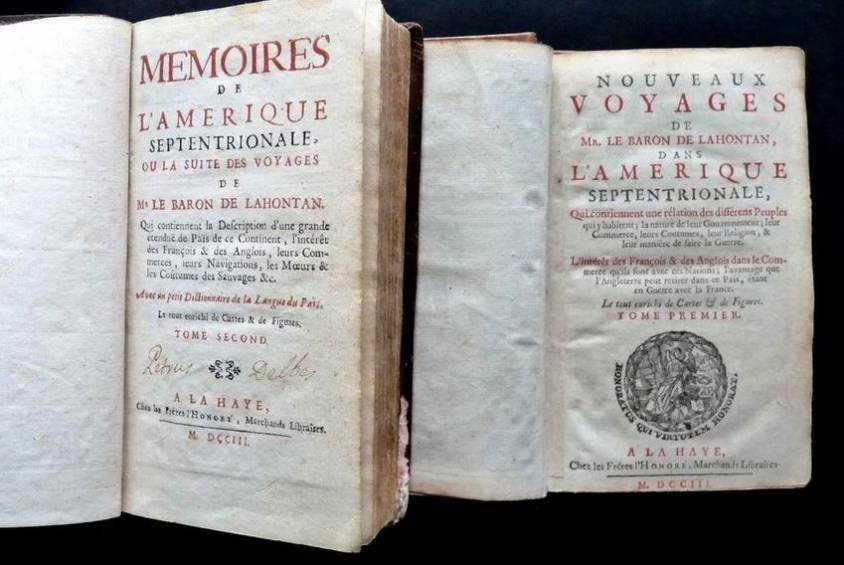
The ideas of Native Indian statesman Kondiaronk (c. 1649–1701), known as “The Rat” and the Chief of the Native American Wendat people at Michilimackinac in New France, reached Leibniz via an impoverished French aristocrat named Louis-Armand de Lom d’Arce, Baron de la Hontan, better known as Lahontan.
In 1683, Lahontan, age 17, joined the French army and was posted in Canada. In his various missions, he became fluent in both Algonkian and Wendat and good friends with a number of indigenous political figures, including the brilliant Wendat statesman Kondiaronk. The latter impressed many French observers with his eloquence and brilliance and frequently met with the royal governor, Count Louis de Buade de Frontenac. Kondiaronk himself, as Speaker of the Council (their governing body) of the Wendat Confederation, is thought to have been sent as an ambassador to the Court of the French King, Louis XIV, in 1691.
The Great Peace of Montreal


Even after being betrayed by the French, and obliged to conduct his own wars to secure his fellow men, Kondiaronk, played a key role in what is remembered as the “Great Peace of Montreal” of August 1, 1701, which ended the bloody Beaver Wars, in reality proxy wars between the British and the French, each of them using the native Indians as “cannon fodder” for their own geopolitical schemes
France was increasingly cornered by the British. Therefore, at the request of the French, in the summer of 1701, more than 1,300 Indians, from forty different nations, gathered near Montreal, dispite the fact that the city was ravaged by influenza. They came from the Mississippi Valley, the Great Lakes, and Acadia. Many were lifelong enemies, but all had responded to an invitation from the French governor. Their future and the fate of the colony were at stake. Their goal was to negotiate a comprehensive peace, among themselves and with the French. The negotiations dragged on for days, and peace was far from being guaranteed. The chiefs were wary. The main stumbling block to peace was the return of prisoners who had been captured during previous campaigns and enslaved or adopted.
Without Kondiaronk’s support, peace was unattainable. On August 1, seriously ill, he spoke for two hours in favor of a peace treaty that would be guaranteed by the French. Many were moved by his speech. The following night, Kondiaronk died, struck down by influenza at the age of 52.
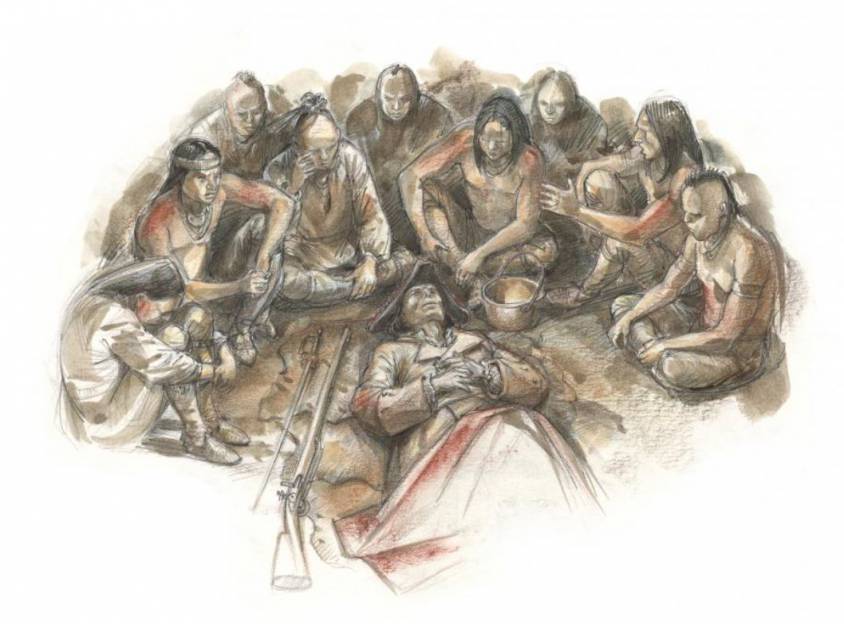
But the next day, the peace treaty was signed. From now on there would be no more wars between the French and the Indians. Thirty-eight nations signed the treaty, including the Iroquois. The Iroquois promised to remain neutral in any future conflict between the French and the Iroquois’ former allies, the English colonists of New England.
Kondiaronk was praised by the French and presented as a “model” of peace-loving natives. The Jesuits immediately put out the lie that, just before dying, he had “converted” to the Catholic faith in the hope other natives would follow his model.
Lahontan from Amsterdam to Hanover
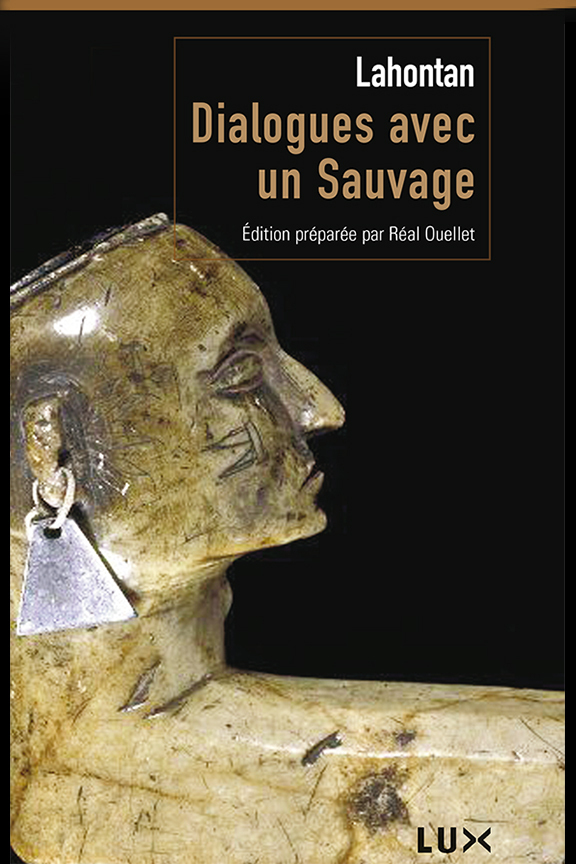
Now, following various events, Lahontan ended up in Amsterdam. In order to make a living he wrote a series of books about his adventures in Canada, the third one entitled Curious Dialogues with a Savage of Good Sense Who Has Travelled (1703), comprising four dialogues with a fictional figure, “Adario” (in reality Kondiaronk), which were rapidly translated into German, Dutch, English, and Italian. Lahontan, himself, gaining some sort of celebrity, settled in Hannover, where he befriended the great philosopher and scientist Wilhelm Gottfried Leibniz.
On the lookout for everything that was being discussed in Europe, the philosopher, then 64 years old, seems to have been put on the track of Lahontan by Dutch and German journalists, but also by the text of an obscure theologian from Helmstedt, Conrad Schramm, whose introductory lecture, the « The Stammering Philosophy of the Canadians », had been published in Latin in 1707. Referring first to Plato and Aristotle (which he abandoned almost immediately), Schramm used the Dialogues and the Memoirs of Lahontan to show how the « Canadian barbarians knock on the door of philosophy but do not enter because they lack the means or are locked into their customs”.

Far less narrow-minded, Leibniz saw in Lahontan a confirmation of his own political optimism, which allowed him to affirm that the birth of society does not come from the need to get out of a terrible state of war, as Thomas Hobbes believed, but from a natural aspiration to concord.
But what captured his main interest, was not so much whether the “American savages” were capable, or not, of philosophizing, but whether they really lived in concord without government.
To his correspondent Wilhelm Bierling, who asked him how the Indians of Canada could live “in peace although they have neither laws nor public magistracies [tribunals]”, Leibniz replied:
“It is quite true […] that the Americans of these regions live together without any government but in peace; they know neither fights, nor hatreds, nor battles, or very few, except against men of different nations and languages.
I would almost say that this is a political miracle,
unknown to Aristotle and ignored by Hobbes.”
Leibniz, who claimed to know Lahontan well, underlined that Adario, “who came in France a few years ago and who, even if he belongs to the Huron nation, judged its institutions superior to ours.”
This conviction of Leibniz will be expressed again in his Judgment on the works of M. le Comte Shaftesbury, published in London in 1711 under the title of Charactersticks:
« The Iroquois and the Hurons, savages neighboring New France and New England, have overturned the too universal political maxims of Aristotle and Hobbes. They have shown, by their super-prominent conduct, that entire peoples can be without magistrates and without quarrels, and that consequently men are neither sufficiently motivated by their good nature, nor sufficiently forced by their wickedness to provide themselves with a government and to renounce their liberty. But these savages shows that it is not so much the necessity, as the inclination to go to the best and to approach felicity, by mutual assistance, which makes the foundation of societies and states; and it must be admitted that security is the most essential point”.
While these dialogues are often downplayed as fictional and therefore merely invented for the sake of literature, Leibniz, in a letter to Bierling dated November 10, 1719, responded: « The Lahontan’s Dialogues, although not entirely true, are not completely invented either.”
As a matter of fact, Lahontan himself, in the preface to the dialogues, wrote:
“When I was in the village of this [Native] American, I took on the agreeable task of carefully noting all his arguments. No sooner had I returned from my trip to the Canadian lakes than I showed my manuscript to Count Frontenac, who was so pleased to read it that he made the effort to help me put these Dialogues into their present state.”
People today tend to forget that tape-recorders weren’t around in those days.
For Leibniz, of course, political institutions were born of a natural aspiration to happiness and harmony. In this perspective, Lahontan’s work does not contribute to the construction of a new knowledge; it only confirms a thesis Leibniz had already constituted.
A critical view on the Europeans and the French in particular
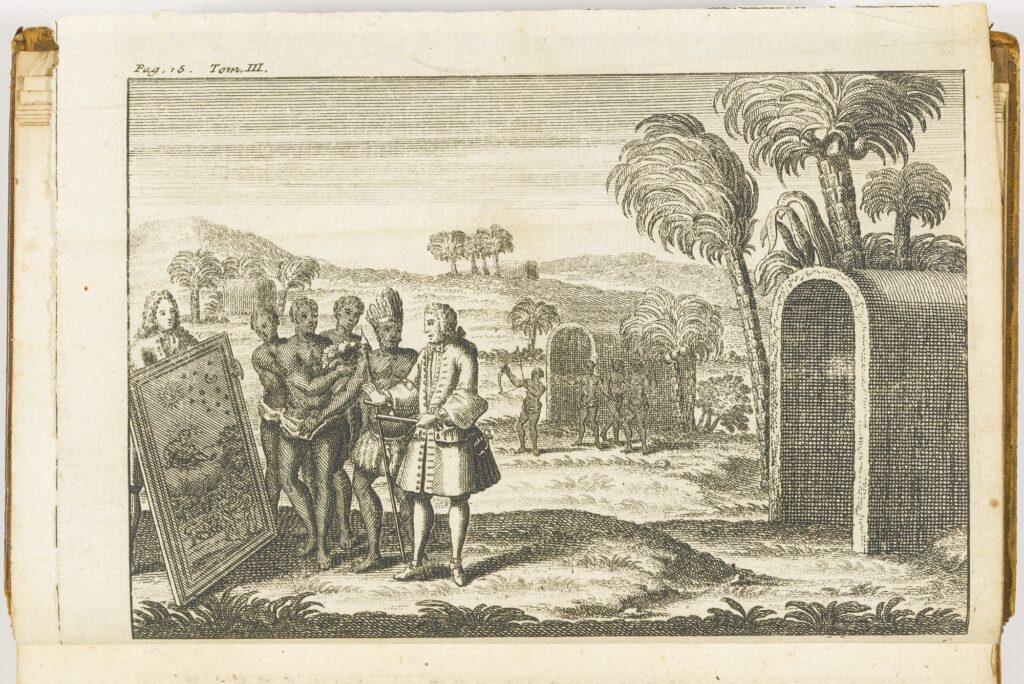
Hence, Lahontan, in his memoirs, says that Native Americans, such as Kondiaronk, who had been in France,
“were continually teasing us with the faults and disorders they observed in our towns, as being occasioned by money. There’s no point in trying to remonstrate with them about how useful the distinction of property is for the support of society: they make a joke of everything you say on that account. In short, they neither quarrel nor fight, nor slander one another; they scoff at arts and sciences, and laugh at the difference of ranks which is observed with us. They brand us for slaves, and call us miserable souls, whose life is not worth having, alleging that we degrade ourselves in subjecting ourselves to one man [the king] who possesses all power, and is bound by no law but his own will.”
Lahontan continues:
“They think it unaccountable that one man should have more than another,
and that the rich should have more respect than the poor.
In short, they say, the name of savages, which we bestow upon them, would fit ourselves better,
since there is nothing in our actions that bears an appearance of wisdom.”
In his dialogue with Kondiaronk, Lahontan tells him that if the wicked remained unpunished, we would become the most miserable people of the earth. Kondiaronk responds:
“For my part, I find it hard to see how you could be much more miserable than you already are. What kind of human, what species or creature, most Europeans be, that they have to be forced to do the good, and only refrain from evil because of fear of punishment?… You have observed we lack judges. What is the reason for that? Well, we never bring lawsuits against one another. And why do we never bring lawsuits? Well because we made a decision neither to accept or make use of money. And why do we refuse to allow money in our communities? The reason is this: we are determined not to have laws – because, since the world was a world, our ancestors have been able to live contentedly without them.”
Brother Gabriel Sagard, a French Recollect Friar, reported that the Wendat people were particularly offended by the French lack of generosity to one another:
“They reciprocate hospitality and give such assistance to one another that the necessities of all are provided for without there being any indigent beggar in their towns and villages;
and they considered it a very bad thing when they heard it said
that there were in France a great many of these needy beggars,
and thought that this was for lack of charity in us, and blamed us for it severely”.
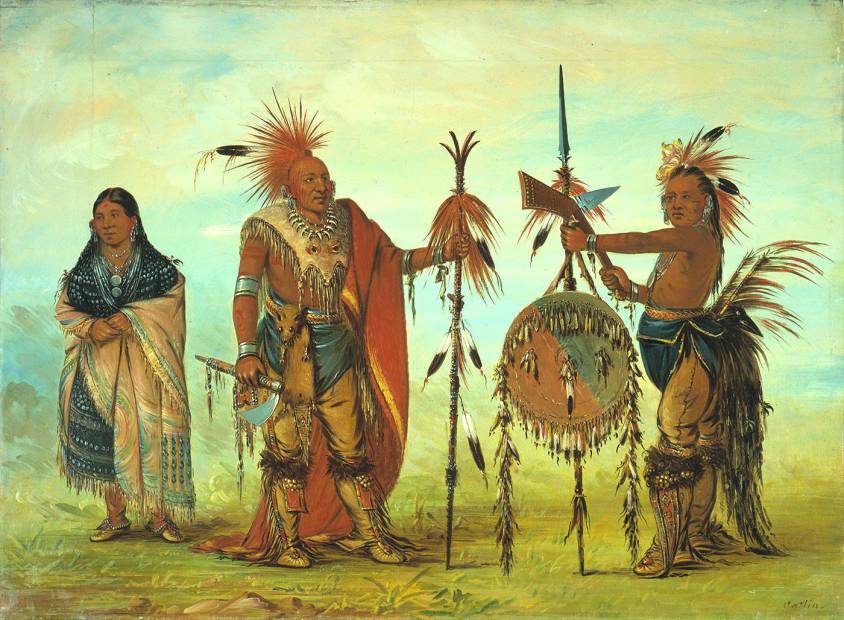
Money, thinks Kondiaronk, creates an environment that encourages people to behave badly:
“I have spent six years reflecting on the state of European society and I still can’t think of a single way they act that’s not inhuman, and I genuinely think this can only be the case, as long as you stick to your distinctions of ‘mine’ and ‘thine’. I affirm that what you call money is the devil of devils; the tyrant of the French, the source of all evils; the bane of souls and the slaughterhouse of the living. To imagine one can live in the country of money and preserve one’s soul is like imagining one could preserve one’s life at the bottom of a lake. Money is the father of luxury, lasciviousness, intrigues, trickery, lies, betrayal, insincerity, – all of the world’s worst behaviors. Fathers sell their children, husbands their wives, wives betray their husbands, brothers kill each other, friends are false, and all because of money. In the light of all this, tell me that we Wendat are not right in refusing to touch, or so much as to look at money?”
In the third footnote of his speech on the origins on inequality, Jean-Jacques Rousseau, who invented the idea of the “noble savage” presumably existing before man engaged in agriculture, himself refers to
“those happy nations, who do not know even the names of the vices
which we have such trouble controlling,
of those American savages whose simple and natural ways of keeping public order
Montaigne does not hesitate to prefer to Plato’s laws…”
Europeans refusing to return
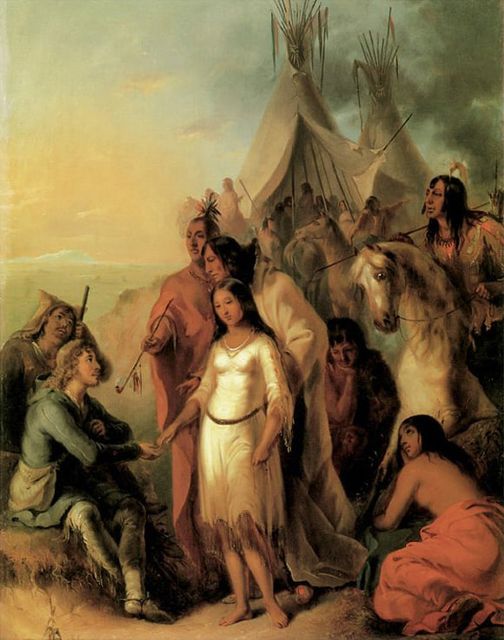
Another observation is that of Swedish botanist Peher Kalm, who, in 1749, was astonished by the fact that a large number of Europeans, exposed to Aboriginal life, did not want to return:
“It is also remarkable that the greater part of the European prisoners who, on the occasion of the war, were taken in this way and mixed with the Indians, especially if they were taken at a young age, never wanted to return to their country of origin afterwards, even though their father and mother or close relatives came to see them to try to persuade them to do so, and they themselves had every freedom to do so. But they found the Indians’ independent way of life preferable to that of the Europeans; they adopted native clothing and conformed in every way to the Indians, to the point where it is difficult to distinguish them from the Indians, except that their skin and complexion are slightly whiter. We also know of several examples of Frenchmen who have voluntarily married native women and adopted their way of life; on the other hand, we have no example of an Indian marrying a European woman and adopting her way of life; if he happens to be taken prisoner by the Europeans during a war, he always looks for an opportunity, on the contrary, to return home, even if he has been detained for several years and has enjoyed all the freedoms that a European can enjoy.”
Before Lahontan:
Thomas More’s Utopians

In 1492, as the joke goes, “America discovered Columbus, a Genoese captain lost at sea”. The mission he had been entrusted with was motivated by a variety of intentions, not least the idea of reaching, by traveling west, China, a continent thought to be populated by vast populations unaware of Christ’s inspiring and optimistic message, and therefore in urgent need of evangelization.
Unfortunately, two years later, a less theological interest arose when, on June 7, 1494, the Portuguese and Spanish signed the Treaty of Tordesillas at the Vatican, under the supervision of Pope Alexander IV (Borgia), dividing the entire world between two dominant world powers:
- the Spanish Empire under top-down control of the continental Habsburg/Venice alliance;
- the Portuguese Empire under that of the banking cartel of Genoese maritime slave traders.
This didn’t stop the best European humanists, two centuries before Lahontan, from raising their voices and showing that some of the so-called “savages” of the United States had virtues and qualities absolutely worthy of consideration and possibly lacking here in Europe.
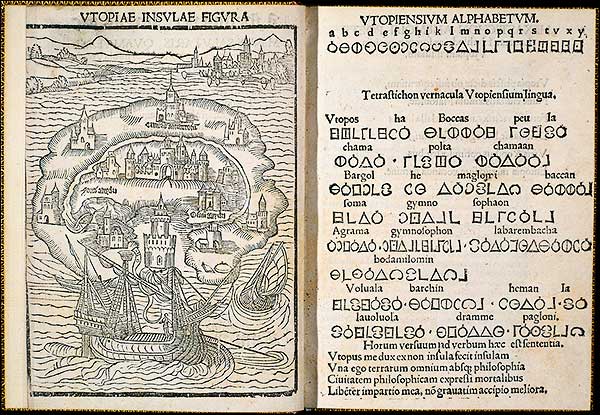
Such was the case with Erasmus of Rotterdam and his close friend and collaborator Thomas More, who shared what are thought to be their views on America in a little book entitled “U-topia” (meaning ‘any’ place), jointly written and published in 1516 in Leuven, Belgium.
By instinct, the reports they received of America and the cultural characteristics of its natives, led them to believe that they were dealing with some lost colony of Greeks or even the famous lost continent of Atlantis described by Plato in both his Timaeus and Critias.
In More’s Utopia, the Portuguese captain Hythlodeus describes a highly organized civilization: it has flat-hulled ships and “sails made of sewn papyrus”, made up of people who “like to be informed about what’s going on in the world” and whom he “believes to be Greek by origin”.
At one point he says:
“Ah, if I were to propose what Plato imagined in his Republic, or what the Utopians put into practice in theirs, these principles, although far superior to ours – and they certainly are –
might come as a surprise, since with us, everyone owns his property,
whereas there, everything is held in common.”
(no private property).
As far as religion is concerned, the Utopians (like the Native Americans)
“have different religions but, just as many roads lead to one and the same place, all their aspects, despite their multiplicity and variety, converge towards the worship of the divine essence. That’s why nothing can be seen or heard in their temples except what is consistent with all beliefs.
The particular rites of each sect are performed in each person’s home;
public ceremonies are performed in a common place;
Public ceremonies are performed in a form that in no way contradicts them.«
And to conclude :
“Some worship the Sun, others the Moon or some other planet (…) The majority, however, and by far the wisest, reject these beliefs, but recognize a unique god, unknown, eternal, in-commensurable, impenetrable, inaccessible to human reason, spread throughout our universe in the manner, not of a body, but of a power. They call him Father, and relate to him alone the origins, growth, progress, vicissitudes and decline of all things. They bestow divine honors on him alone (…) Moreover, despite the multiplicity of their beliefs, the other Utopians at least agree on the existence of a supreme being, creator and protector of the world.”
Exposing the trap of woke ideology
Does that mean that “all Europeans were evil” and that “all Native Americans were good”? Not at all! The authors don’t fall for such simplistic generalizations and “woke” ideology in general.
For example, even with major similarities, the cultural difference between the First Nation of the Canadian Northwest Coast and those of California, was as big as that between Athens and Sparta in Greek antiquity, the first a republic, the latter an oligarchy.
Different people and different societies, at different times, made experiments and different political choices about the axiomatics of their culture.
While in California, forms of egalitarian and anti-oligarchical self-government erupted, in some areas of the north, oligarchical rule prevailed:
“[F]rom the Klamath River northwards, there existed societies dominated by warrior aristocrats engaged in frequent inter-group raiding, an in which, traditionally, a significant portion of the population had consisted of chattel slaves. This apparently had been true as long as anyone living there could remember.”
Northwest societies took delight in displays of excess, notably during festivals known as “potlach” sometimes culminating in
“the sacrificial killing of slaves (…) In many ways, the behavior or Northwest Coast aristocrats resembles that of Mafia dons, with their strict codes of honor and patronage relations; or what sociologists speak of as ‘court societies’ – the sort of arrangement one might expect in, say, feudal Sicily, from which the Mafia derived many of its cultural codes.”
So, the first point made by the authors is that the infinite diversity of human societies has to be taken into account. Second, instead of merely observing the fact, the authors underline that these diversities very often didn’t result from “objective” conditions, but from political choices. That also carries the very optimistic message, that choices different from the current world system, can become reality if people rise to the challenge of changing them for the better.
Urbanization before agriculture

In the largest part of the book, the authors depict the life of hunter-gatherers living thousands of years before the agricultural revolution but able to create huge urban complexes and eventually ruling without a dominant oligarchy.
The book identifies examples in China, Peru, the Indus Valley (Mohenjo-Daru), Ukraine ((Taljanki, Maidenetske, Nebelivka), Mexico (Tlaxcala), the USA (Poverty Point), and Turkey (Catalhoyuk), where large-scale, city-level living was taking place (from about 10,000 BC to 6,000 BC).
But these didn’t involve a ruling caste or aristocratic class; they were explicitly egalitarian in their house building and market trading; made many innovations in plumbing and street design; and were part of continental networks which shared best practice. The agricultural revolution was not a “revolution”, the book argues, but rather a continual transformative process spread across thousands of years when hunter-gatherers were able to flexibly organize themselves into mega-sites (several thousand inhabitants), organized without centers or monumental buildings, but built with standardized houses, comfortable for daily life, all of this achieved without static hierarchies, kings, or overwhelming bureaucracy.
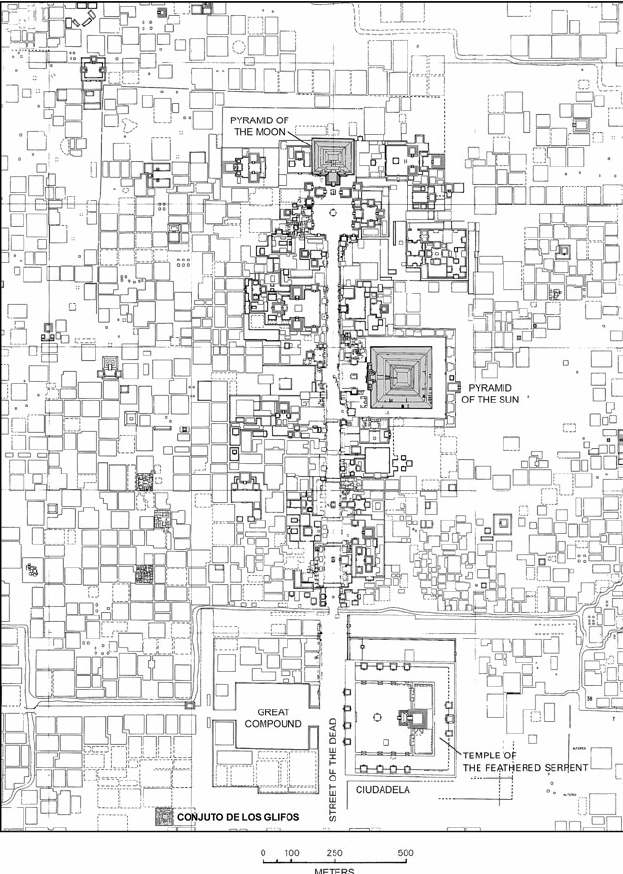
Another case in point is the example of Teotihuacan, which rivaled Rome in grandeur between about 100 BC and 600 AD, where, following a political revolution in 300 AD, an egalitarian culture embarked on a massive social housing program designed to give all residents decent quarters.
Conclusion
Living today, it is very difficult for most of us to imagine that a society, a culture, or a civilization, could survive over centuries without a centralized, forcibly hierarchical power structure.
While, as the authors indicate, archaeological evidence, if we are ready to look at it, tell us the contrary. But are we ready to challenge our own prejudices?

As an example of such self-inflicted blindness, worth mentioning is the case of the “King-Priest”, a small male carved figure showing a neatly bearded man, found during the excavation of the ruined Bronze Age city of Mohenjo-daro (Pakistan), dated to around 2000 BC and considered « the most famous stone sculpture » of the Indus Valley civilization. While in Mohenjo-Daro there exists neither a royal palace or tomb, nor a religious temple of any nature, British archaeologists immediately called it a “King-Priest”, because very simply “it can’t be otherwise”.
Reading Graeber and Wengrow’s book obliges us to adjust our views and become optimistic. They show that radically different human systems are not only possible but have been tried many times by our species. In a public talk in 2022, Wengrow presented what he sees as lessons for the political present from the past, where human beings were much more fluid, conscious and experimental with their social and economic structures :
“Now what do all these details amount to? What does it all mean? Well, at the very least, I’d suggest it’s really a bit far-fetched these days to cling to this notion that the invention of agriculture meant a departure from some egalitarian Eden. Or to cling to the idea that small-scale societies are especially likely to be egalitarian, while large-scale ones must necessarily have kings, presidents and top-down structures of management. And there are also some contemporary implications. Take, for example, the commonplace notion that participatory democracy is somehow natural in a small community—or perhaps an activist group—but couldn’t possibly have a scale-up for anything like a city, a nation or even a region. Well, actually, the evidence of human history, if we’re prepared to look at it, suggests the opposite. If cities and regional confederacies, held together mostly by consensus and cooperation, existed thousands of years ago, who’s to stop us creating them again today with technologies that allow us to overcome the friction of distance and numbers? Perhaps it’s not too late to begin learning from all this new evidence of the human past, even to begin imagining what other kinds of civilization we might create if we can just stop telling ourselves that this particular world is the only one possible.”
Raphael 1520-2020: What Humanity can learn from « The School of Athens »

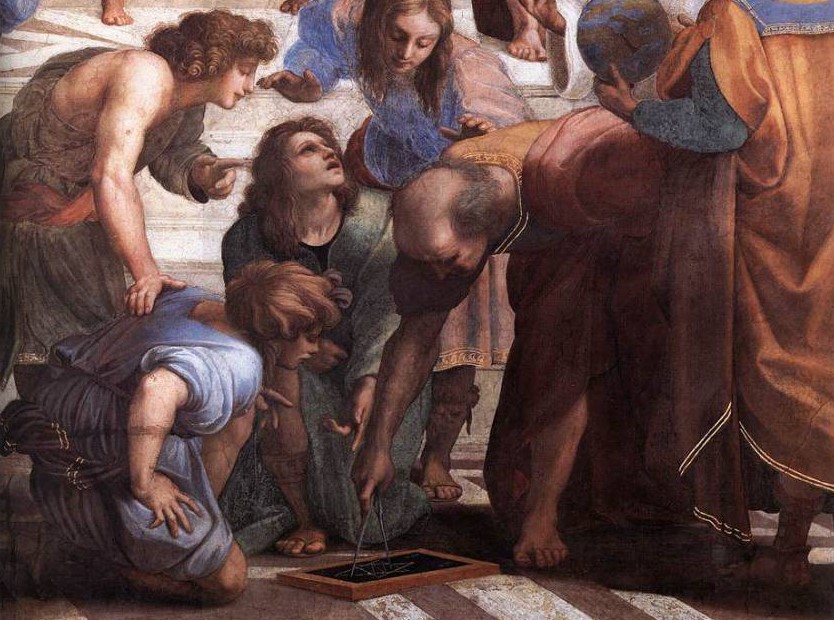
On the occasion of the five-hundredth anniversary of the death of the Italian painter Raffaello Sanzio da Urbino (1483-1520), several exhibitions are honoring this artist, notably in Rome, Milan, Urbino, Belgrade, Washington, Pasadena, London, and Chantilly in France.
The master is honored, but what do we really know about the intention and meaning of his work?
Introduction
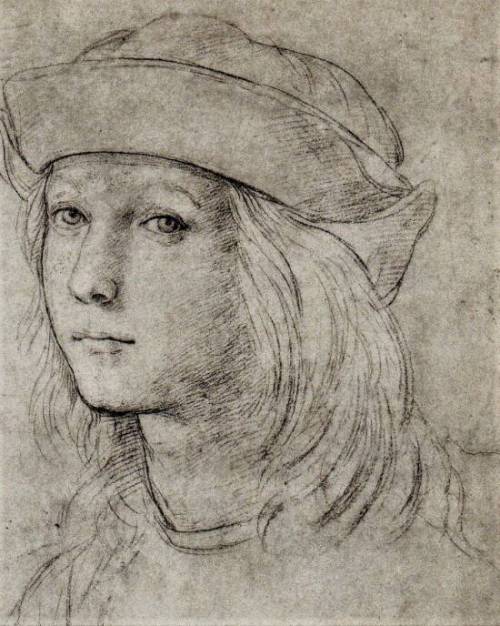
There is no doubt that in the collective mind of the West, Raphael, along with Michelangelo and Leonardo da Vinci, appears as one of the most brilliant artists and even as the best embodiment of the « Italian Renaissance”.
Although he died at the age of 37, Raphael was able to reveal his immense talent to the world, in particular by giving birth, between 1509 and 1511, to several monumental frescoes in the Vatican, the most famous of which, 7.7 meters long and 5 meters high, is known as The School of Athens.
The viewer finds himself inside a building that brings together the thoughts of all mankind: united in a timeless space, fifty philosophers, mathematicians and astronomers of all ages meet to discuss their vision of man and nature.
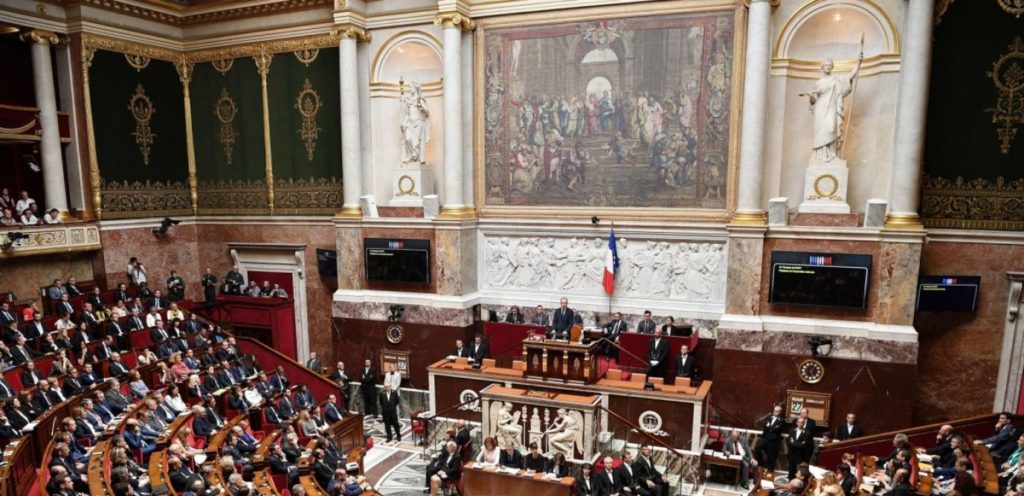
The image of this fresco embodies so powerfully the « ideal » of a democratic republic, that in France, during the February 1848 revolution, the painting representing Louis Philippe (till then hanging behind the President of the National Assembly) was taken down and replaced by a representation of Raphael’s fresco, in the form of a tapestry from the Manufacture des Gobelins, produced between 1683 and 1688 at the request of Jean-Baptiste Colbert, the founder of the French Academy of Sciences.
Then, in France, arrived the idea that Raphael, being « the Prince of painters », embodied « the ultimate artist ». Superior to Rubens or Titian, Raphael was thought to have achieved the subtle « synthesis » between the « divine grace » of a Leonardo da Vinci and the « silent strength » of a Michelangelo. What more can be said ? A true observation as long as one looks only at the purity of the « forms » and thus of the « style ». Adored or hated, Raphael was erected in France as a model to be imitated by every young talent attending our Academies of Fine Arts.
Hence, for five centuries, artists, historians and connoisseurs have not ceased to comment and often to confront each other, not on the intention or the meaning of the artist’s works, but on his style! In a way akin to some of our contemporaries who adore Star Wars and its special effects without paying attention to the ideology that, underhandedly, this TV series conveys…
For this brand of historians, « iconography », that branch of art history which is interested in the subjects represented, in the possible interpretations of the compositions or particular details, is only really useful to appreciate the « more primitive » paintings, that is to say that of the « Northern Schools »…
One knows well, especially in France, that once the « form » takes the appearance of perfection, it does not matter what the content is! This or that writer tells abject horrors, but « it is so well written! »
The good news is that in the last twenty years or so, a handful of leading historians and especially female art historians, have undertaken and published in depth new research.
I am thanking in particular of Marcia Hall (Temple University), Ingrid D. Rowland (University of Chicago), Reverend Timothy Verdon (Florence and Stanford), Jesuit historian John William O’Malley, and especially Christiane L. Joost-Gaugier.
The latter’s book Raphael’s Stanza della Signatura, Meaning and Invention (Cambridge University Press, 2002), which I was able to read (thanks to the pandemic lockdown), allowed me to adjust some of the leads and intuitions I had summarized in 2000 in, let’s be honest, a rather messy note.
If my work had consisted in trying to give some coherence to what is in the public domain, through their assiduous archival work in the Vatican and elsewhere, these historians, for whom neither Latin nor Greek have any secrets, have largely contributed to shed new light on the political, philosophical, cultural and religious context that contributed to the genesis of Raphael’s work.
Enriched by these readings, I have tried here, in a methodical way, to « make readable » what is rightly considered Raphael’s major work, The School of Athens.
Instead of identifying and commenting from the outset on the figures we see in the Stanza della Segnatura (« Room of the Segnatura” of the Vatican in Rome), I have chosen first to sketch a few backgrounds that serve as “eye-openers” to penetrate this work. For, in order to detect the painter’s intentions, actions and feelings, it is essential to penetrate the spirit of the epoch that engendered the artist’s: those days political and economic challenges, the cultural heritage of Rome and the Church, a close-up on the pope who commissioned the work, the philosophical convictions of the advisors who dictated the theme of the work, etc.
However, if all this seems too tedious for you dear reader, or if you are just eager to familiarize yourself with the work, nothing prevents you from going back and forth between the deciphering of the frescoes at the end of this article (Guided visit) and the contextualization that precedes them.
Cleaning our eyeglasses
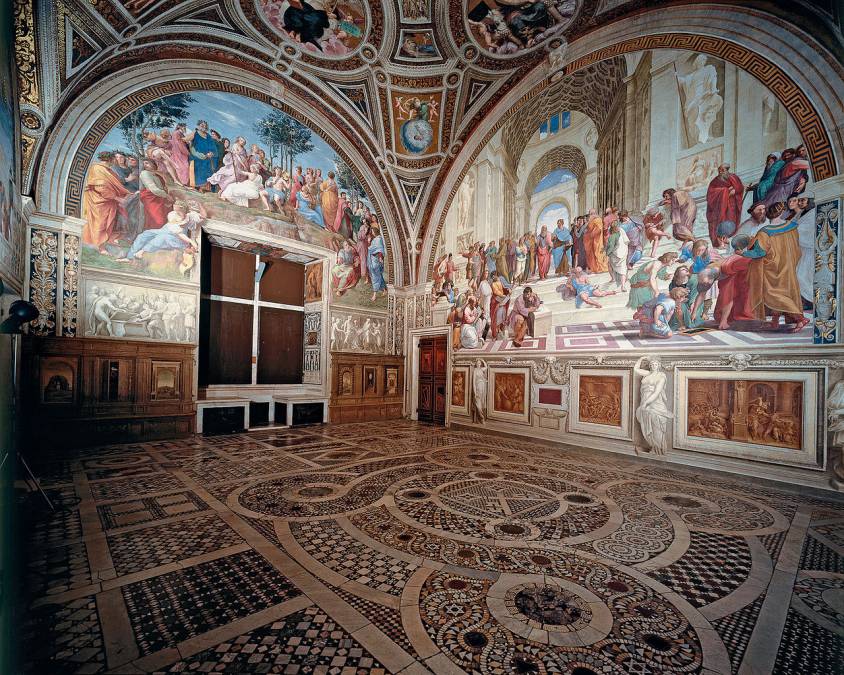
To see the world as it is, let’s wipe our glasses and stop looking at the tint of our glasses. For as is often the case, what « prevents » the viewer from penetrating a work, from seeing its intention and meaning, is not what his eyes see as such, but the preconceived ideas that prevents him from looking at the outside world. Learning to see usually starts by challenging some of our preconceptions.
1. It’s not a easel painting! Since the 16th century, we Europeans have been thinking in terms of « easel paintings » (as opposed to mural). The artist paints on a support, a wooden panel or a canvas, which the client then hangs on the wall. However, The School of Athens, as such, is not a « painting » of this type, but simply, in the strict sense, a part or a « detail » of what we would call today, « an installation ». I explain myself. What constitutes the work here is the whole of the frescoes and decorations covering the ceiling, the floor and the four walls of the room! We will explain them to you. The viewer is, in a way, inside a cube that the artist has tried to make appear as a sphere. So, to « explain » the meaning of The School of Athens, in isolation from the rest and without demonstrating the thematic and symbolic interconnections with the iconography of the other walls, the ceiling and the floor, is not only an exercise in futility but utter incompetence.
2. Error of title! Neither at the time of its commission, nor at the time of its realization or in the words of Raphael, the fresco carried the name “School of Athens”! That name was given later. Everything indicates that the entire room covered with frescoes was to express a divine harmony uniting Philosophy (The School of Athens), Theology (on the opposite side), Poetry (on its right side) and Justice (on its left side). We will come back to that.
3. The theme is not the artist’s choice! The only person who met both Raphael and Pope Julius II during his lifetime was the physician Paolo Giovio (1483-1552) who arrived in Rome in 1512, a year before the death of Julius II. According to Giovio, it was the pontiff himself who, as early as 1506, that is, two years before Raphael’s arrival, conceived the contents of the « Signing Chamber ». This is logical, since it was the place where he installed his personal library, a collection of some 270 books, arranged on shelves below the frescoes and classified according to the themes of each wall decoration (Philosophy, Theology, Poetry and Justice). However, given the complexity of the themes, and given Julius II’s poor literary culture, historians agree that the intellectual authorship of the frescoes was attributed to the pope’s advisors and especially to the one who would have been able to synthesize them, his chief librarian, Thomaso Inghirami (1470-1516).
Raphael, who seems to have constantly modified his preparatory drawings according to the feedback and comments he received from the commissioners, was able to translate this theme and program into images with his vast talent. In short, if you like the images, congratulate Raphael; if you like or don’t like the content, talk to the « boss ».

4. Painted by several people? What remains to be clarified is that, according to Vatican accounts, the entire decoration of the room was entrusted in mid-1508 to the talented fresco artist Giovanni Antonio Bazzi (1477-1549), six years older than Raphael and known as Il Sodoma. He appears to be the only person to have received any money for this work. Raphael does not appear in these accounts until 1513…
However, as the cycle of frescoes on the life of St. Benedict in the territorial abbey of Santa Maria in Monte Oliveto Maggiore testifies, Sodoma also had considerable talent, and above all, an incomparable know-how in fresco technique. Although he has never been honored, his style is so similar to Raphael’s that it is hard to mistake him.

It should also be noted that Sodoma, who came to Rome at the request of the pope’s banker Agostino Chigi (1466-1520), was asked to decorate the latter’s villa in 1508, which would have given Raphael free rein in the Vatican before joining him on the same site.
According to the french historian Bernard Levergeois, the sulphurous Pietro Aretino (1495-1556), a pornographic pamphleteer, before becoming the protégé and « cultural agent » of the banker Chigi in Rome, spent many years in Perugia.
There he took interest in the young pupils of Pietro Perugino (c. 1448-1523), Raphael’s master, and, says Levergeois, it was there that he
met the most prestigious painters of the day: Raphael, Sebastiano del Piombo, Julius Romano, Giovanni da Udine, Giovan Francesco Penni and Sodoma, all of whom took turns decorating the magnificent villa (the Farnesina) that Chigi had built in Rome. Some of them also worked on the no less famous Villa Madam (for pope Julius II), a grandiose project that was never completed.

As seen in the portrait painted by Titian, Aretino, nicknamed « the scourge of Princes », was a powerful, possessive and tyrannical character. A blackmailer, a flamboyant pansexual and well-informed about what was going on in the alcoves of the elites, he worked himself up, like FBI boss Edgar Hoover in the Kennedy era, as a king-maker, a power above power. Historians report that both Raphael and Michelangelo, before showing their works to the public, felt compelled to seek the advice of this pervert Aretino.
And in the Sistine Chapel, Michelangelo depicts St. Bartolomeo in the guise of the Aretino. The artist must have thought that the traditional attribute of the martyr flayed alive was a perfect fit for the one who was bullying him: he is wearing the remains of his own skin and holding in his hand the large knife that was used for the torture…
It is therefore tempting to think that it was Aretino, the favorite of the Pope’s banker, and not necessarily Renaissance architect Donato Bramante, as is commonly accepted, who may have played the role of intermediary in bringing both Sodoma and Raphael to Rome in order to revive the glory of his patron and the oligarchy that held the Eternal City in contempt.
To my knowledge, Raphael, neither in his own letters nor in the statements reported by his entourage, would have commented on the theme and intention of his work. Strange modesty. Did he consider himself a simple « decorative painter »?
Finally, if Sodoma‘s participation in the realization of the School of Athens remains to be clarified, his portrait does appear. He is in the foreground on the far right, standing side by side to a rather sad Raphael (both on the side of the Aristotelians). A double signature?
This makes the question arise: Can one continue to speak of the frescoes as painted « by Raphael »? Are they not rather the frescoes of the four men team composed of Julius II, Inghirami, Sodoma and Raphael?
An unusual patron, « the warrior pope » Julius II

Before talking about these famous « impresarios of the Renaissance » and understanding their motivations, it is necessary to explore the character of future pope Julius II: Giuliano della Rovere (1443-1513). He was appointed bishop of Carpentras by Pope Sixtus IV, his uncle. He was also successively archbishop of Avignon and cardinal-bishop of Ostia.
On October 31, 1503, 37 of the 38 cardinals composing the Sacred College, make him the head of the Western Church, under the name of Julius II, until its death in 1513, a moment Giuliano had been waiting for 20 years.
Before him, others had made their way. In fact, in 1492, his personal enemy, the Spanish Rodrigo de Borgia (1431-1503), succeeded in getting himself elected as pope Alexander VI. True to the legendary corruption of the Borgia dynasty, he was one of the most corrupt popes in the history of the Church. Jealous and angry at his own failure, Giuliano accused the new pope of having bought a number of votes. Fearing for his life, he leaves for France to the court of King Charles VIII, whom he convinces to lead a military campaign in Italy, in order to depose Alexander VI and to recover the Kingdom of Naples… Accompanying the young French king in his Italian expedition, he enters Rome with him at the end of 1494 and prepares to launch a council to investigate the pope’s actions. But Alexander VI managed to circumvent the machinations of his enemy and preserved his pontificate until his death in 1503.
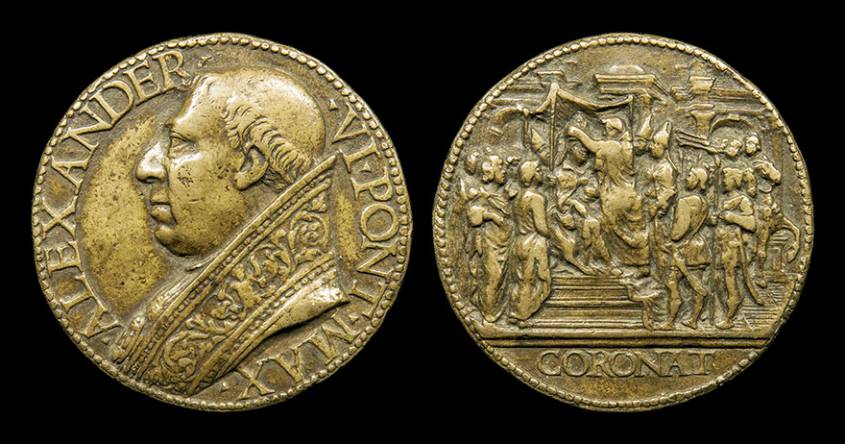
From the moment of his accession, Giuliano della Rovere confessed that he had chosen his name as pope, Julius II, not after Pope Julius I, but in reference to the bloodthirsty Roman dictator Julius Caesar. He asserts from the start his firm will to restore the political power of the popes in Italy. For him, Rome must once again become the capital of an Empire much larger than the Roman Empire of the past.
When Julius II took office, decadence and corruption had brought the Church to the brink. The territories that would later become Italy were a vast battlefield where Italian condottieri, French kings, German emperors and Spanish nobles came to fight. The ancient city of Rome was nothing more than a vast heap of ruins systematically plundered by rapacious entrepreneurs in the service of princes, bishops and popes, each one seeking to monopolize the smallest column or architrave likely to come and decorate their palace or church. Reportedly, out of the 50,000 inhabitants of the city, there were 10,000 prostitutes and courtesans…
Obviously, Julius II was the pope chosen by the oligarchy to restore a minimum of order in the house. For, particularly since 1492, the extension of Catholicism in the New World and then in the East, required a « rebirth », not of « Christian humanism », as during the Renaissance of the early 15th century, but of the authority of the Church.

For us today, the word « Renaissance » evokes the heyday of Italian culture. However, for the powerful oligarchs of Raphael’s time, it was a matter of resurrecting the splendor of Greco-Roman antiquity, embodied in the glory of the Roman « Republic », mistakenly idealized as a great and well-administered state, thanks to efficient laws, capable civil servants possessing a great culture, based on the assiduous study of Greek and Latin texts.
And it is well to this rebirth of the Roman authority that Julius II is going to dedicate himself. In first place by the sword. In less than three years (1503-1506), the rebellious César Borgia is reduced to impotence. He was the illegitimate son of Pope Alexander VI who, at the head of an army of mercenaries, waged war in the country and terrorized the Papal States,
In 1506, Julius II, quickly nicknamed « the warrior pope » at the head of his troops, took back Perugia and Bologna.
As the humanist Erasmus of Rotterdam (1467-1537), who was present in Italy and was an eyewitness to the sacking of Bologna by the papal troops, reproached him, Julius II preferred the helmet to the tiara. Questioned by Michelangelo in charge of immortalizing him with a bronze statue, to know if he did not wish to be represented with a book in his hand to underline his high degree of culture, Julius II answers:
Why a book? Rather, show me a sword in hand.
Originally from the region of Genoa (Liguria), Julius II undertook to chase the Venetians, whom he abhorred, out of Romagna, which they occupied. « I will reduce your Venice to the state of hamlet of fishermen from which it left, » had said one day the Ligurian pope to the ambassador Pisani, to which the proud patrician did not fail to retort:
And we, Holy Father, we will make of you a small village priest,
if you are not reasonable…
This language gives the measure of the bitterness to which one had arrived on both sides. In the bull of excommunication launched shortly afterwards (April 27, 1509) against the Venetians, these were accused of « uniting the habit of the wolf with the ferocity of the lion, and of flaying the skin by pulling out the hairs… ».
The League of Cambrai

Against the rapacious practices of Venice, on December 10, 1508, in Cambrai, Julius II officially rallies to the « League of Cambrai », a group of powers (including the French King Louis XII, the regent of the Netherlands Margaret of Austria, King Ferdinand II of Aragon and the German Emperor Maximilian I).
For Julius II, the happiness is total because Louis XII comes in person to expel the Venetians of the States of the Church. Better still, on May 14, 1509, after its defeat by the League of Cambrai at the battle of Agnadel, the Republic of Venice agonizes and finds itself at the mercy of an invasion. However, at that juncture, Julius II, fearing that the French would establish their influence on the country, made a spectacular turnaround. He organized, from one day to the next, the survival of Venice!
His treasurer general, the Sienese banker Agostino Chigi (a Sienese billionaire close to the Borgias, to whom he had lent colossal sums of money and later Raphael’s patron), set the conditions:
- In order to pay for the Swiss mercenaries capable of repelling the attackers of the Ligue of Cambrai, Chigi granted the Venetians a substantial loan.
- In exchange, the Serenissima agreed to give up its monopoly on the trade of alum that it imported from Constantinople. At the time, alum, an irreplaceable mineral used to fix fabric dyes, represented a real « strategic » issue.
- Once Venice stopped importing alum, the entire Mediterranean world was forced, from one day to the next, to obtain supplies, not from Venice, but from the Vatican, that is to say, from Chigi, who was in charge of exploiting the « alum of Rome » for the Papacy, located in the mines of the Tolfa mountains, northwest of Rome in the heart of the Papal States.
- Aware that its very survival was at stake, and for lack of an alternative, Venice grudgingly accepted the golden deal.
In his biography on Jules II, french historian Ivan Cloulas specifies:
Above all stands out Agostino Chigi, the banker from Siena, farmer of the pontifical mines of alum of Tolfa since the reign of Alexander VI. The favor that this character enjoyed with Julius II is surprising, since he was a banker who had long served Caesar Borgia. The pontiff, according to the tradition, conferred at the time of his accession the load of ‘depositary’ to one of his Genoese compatriots, Paolo Sauli, charged to carry out all the financial transactions of the Holy See in connection with the cardinal camerlingue Raffaelo Sansoni-Riario. But Chigi did not suffer disgrace, because he advanced Julian della Rovere considerable sums of money to buy electors [cardinal members of the Sacred College], and he made the exploitation and export of alum extracted from the pontifical mines a success. The experience and value of the Sienese made him a partner of the various bankers of the papacy, notably the Sauli and the Fugger, who gained new wealth as the fruitful trade in indulgences developed in Germany.
Hence, now in alliance with Venice, Julius II, in what appears to the naive as a spectacular « reversal of alliance », set up the « Holy League » to « expel from Italy the Barbarians » (Fuori i Barbari!). A coalition in which he made enter the Swiss, Venice, the kings Ferdinand of Aragon and Henri VIII of England, and finally, the emperor Maximilian. This league will then drive out the French out of Italy. Julius II said with irony:
If Venice had not existed,
it would have been necessary to invent it.
In response, Louis XII, the King of France, attempted to transpose the struggle into the spiritual realm. Thus, a national council, meeting in Orleans in 1510, he declared France exempt from the obedience of Julius II. A second council was convened in Italy itself, in Pisa, then in Milan (1512) trying to depose the pope. Julius II opposed to the King of France the Vth ecumenical council of the Lateran (1512) where he will welcome warmly those who abandoned that of Milan…
Maritime Empires
Julius II was determined to re-establish his authority both on land and on the oceans. A bit like in ancient Greece, Italy experienced a rather particular phenomenon, that of the emergence of « maritime republics ». If the « Republic of Venice » is famous, the maritime republics of Pisa, Ragusa (Dubrovnik on the Dalmatian coast), Amalfi (near Naples) and Genoa are less known.
In each case, operating from a port, a local oligarchy built a maritime empire and above all poisoned its competitors. However, maritime activity, by its very nature, implies taking risks over time. Hence the need for skillful, robust and forward-looking finance, offering insurance and purchase options on future assets and profits. It is therefore no coincidence that most financial empires developed in symbiosis with maritime empires, notably the Dutch and British, and with the West and East India Companies.
At the end of the 15th century, it was essentially Genoa and Venice that were fighting for control of the seas. On the one hand, Venice, historically the bridgehead of the Byzantine Empire and its capital Constantinople (Istanbul), was by far the largest city in the Mediterranean world in 1500 with 200,000 inhabitants. Since its heyday in the 13th century, the Serenissima has defended tooth and nail its status as a key intermediary on the Silk Road to the West. On the other hand, Genoa, which, after having established itself in the Levant thanks to the crusades, by taking control of Portugal, financed all the Portuguese colonial expeditions to West Africa from where it brought back gold and slaves.
Two maritime achievements will exacerbate this rivalry a little more:
- 1488. Although the works of the Persian scholar Al Biruni (11th century) and old maps, including that of the Venetion monk Fra Mauro, made it possible to foresee the bypassing of the African continent by the Atlantic Ocean to reach India, it was not until 1488 that Portuguese sailors passed the Cape of Good Hope. Thus, Genoa, without any intermediary, could directly load its ships in Asia and bring its goods back to Europe;
- 1492. Seeking to open a direct trade route to Asia without having to deal with the Venetians or the Portuguese (Genoese), Spain sent the Genoese navigator Christopher Columbus west in 1492. More than a new route to Asia, Columbus discovered a new continent that would be the object of covetousness.

as signed on by Pope Alexander VI Borgia with the treaty of Tordesillas in 1494
Two years later, on June 7, 1494, the Portuguese and Spanish signed the Treaty of Tordesillas to divide the entire world between them. Basically, all of the New World for Spain, all of the old one (from the Azores to Macao) for Portugal. To delimit their empires, they drew an imaginary line, which Pope Alexander VI Borgia set in 1493 at 100 leagues west of the Azores and the Cape Verde Islands.
Later, the line was extended, at the request of the Portuguese, to 370 leagues. Any land discovered to the east of this line was to belong to Portugal; to the west, to Spain. At the same time, any other Western maritime power was denied access to the new continent. However, in 1500, to the horror of the Spaniards, it was a Portuguese who discovered Brazil. And given its geographical position, to the west of the famous line, this country fell under the control of the Portuguese Empire!
Julius II, a child of Liguria (region of Genoa, therefore linked to Portugal) and vomiting Alexander VI Borgia (Spanish), in 1506, takes great pleasure in confirming, by the bull Inter Cætera, the treaty of Tordesillas of 1494 allowing to fix the dioceses of the New World, obviously to the advantage of the Portuguese and therefore to his own.
The ultimate weapon, culture
On the « spiritual » and « cultural » level, if Julius II spent most of his time at war, posterity retains essentially the image of « one of the great popes of the Renaissance » as a great protector and patron of the arts.
Indeed, to re-establish the prestige (the French word for soft power) and therefore the authority of Rome and its Empire, culture was considered a weapon as formidable as the sword. To begin with, Julius II opened new arteries in Rome, including the Via Giulia. He placed in the Belvedere courtyard the antiques he had acquired, in particular, the « Apollo of Belvedere » and the « Laocoon », discovered in 1506 in the ruins of Nero’s Imperial Palace.
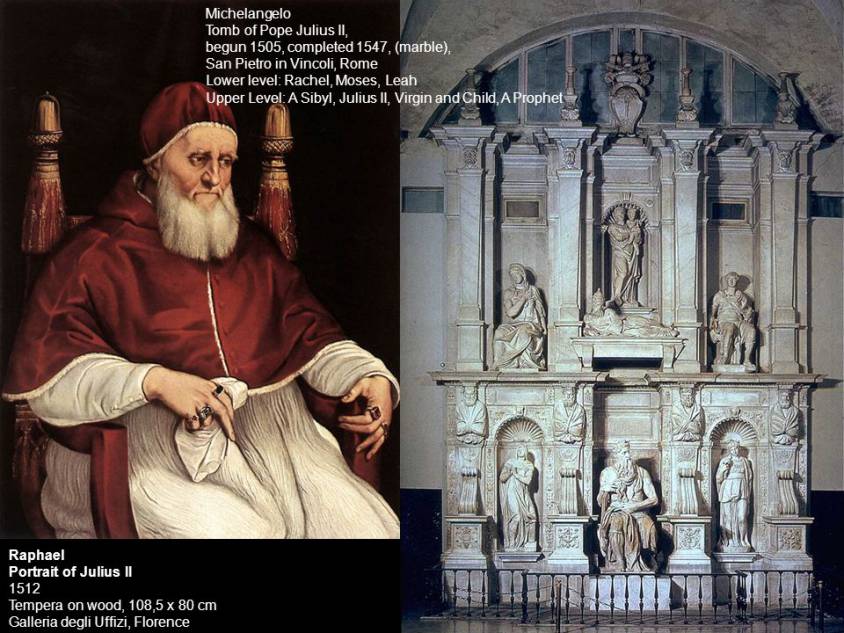
In the same year, that is to say six years before the end of the military operations, Julius II also launched great projects, some of which were only partially or entirely completed after his death:
- The reconstruction of St. Peter’s Basilica, a task entrusted to the architect and painter Donato Bramante (1444-1514) ;
- The tomb of Julius II, which the sculptor Michelangelo was entrusted with in the apse of the new basilica and of which his famous statue of Moses, one of the 48 bronze statues and bas-reliefs originally planned, should have been part;
- The decoration of the vault of the Sistine Chapel built by Pope Sixtus IV, the uncle of Julius II, was also entrusted to Michelangelo. Julius II let himself be carried away by the creative spirit of the sculptor. Together, they worked on ever more grandiose projects for the decoration of the Chapel. The artist gave free rein to his imagination, in a different artistic genre that did not please the pope. Until October 31, 1512, Michelangelo painted more than 300 figures on the vault;
- The frescoes decorating the personal library of the pope will be entrusted to the painter Raphael, called to Rome in 1508, probably at the suggestion of Chigi, Aretino or Bramante. The Stanza was the place where the pope signed his briefs and bulls. This room later became the private library of the pontiff Julius II, then the room of the Tribunal of Apostolic Signatures of Grace and Justice and later, that of the Supreme instance of appeal and cassation. Before the arrival of Julius II, this room and « the room of Heliodorus », were covered with frescoes by Piero della Francesca (1417-1492), a painter protected by the great Renaissance genius cardinal philosopher Nicolaus of Cusa (1401-1464), immortalizing the great ecumenical council of Florence (1438). Decorations by Lucas Signorelli and Sodoma were added later. Following his election, Julius II, anxious to mark his presence in history, and to re-establish the authority of the oligarchy and the Church, had the frescoes of the Council of Florence covered with new ones. Convinced by his advisors, the pope agreed to entrust the direction of the work to Raphael. Officially, it is said that Raphael spared some of the frescoes on the ceiling, notably those executed by Sodoma, so as not to antagonize him entirely. But, as we have said, the content, the very elaborate theme and part of the iconography of the frescoes were decided upon as early as 1506, even before Raphael’s arrival in 1508;
- To modernize the city of Rome. Julius II, undoubtedly advised by the architect Bramante, singularly transformed the road system of Rome. In order for all the roads to converge towards St. Peter’s Basilica, he ordered the Via Giulia to be pierced on the left bank and the Lungara, the paths that meandered along the river on the right bank, to be transformed into a real street. His death interrupted the great works he had planned, in particular the construction of a monumental avenue leading to St. Peter’s and that of a new bridge to relieve the congestion of the bridge over St. Angelo, to which he had also facilitated access by widening the street leading to it. The extent of the work undertaken poses the problem of materials; although it was, in principle, forbidden to attack the ancient monuments, the reality was quite different. Ruinante, became the nickname of Bramante.

These major construction projects, patronage and military expenses drained the Holy See’s revenues. To remedy this, Julius II multiplied the sale of ecclesiastical benefits, dispensations and indulgences.
In the twelfth century, the Roman Catholic Church established the rules for the trade of « indulgences » (from the Latin indulgere, to grant) through papal decrees. They provided a framework for the total or partial remission before God of a sin, notably by promising, in exchange for a given amount of money, a reduction in the time spent in purgatory to the generous faithful after their death. In the course of time, this practice, essentially exploiting a form of religious superstition, turned into a business so lucrative that the Church could no longer do without it.
In northern Europe, particularly in Germany, the Fugger bankers of Augsburg were directly involved in organizing this trade. This practice was strongly denounced and fought against by the humanists, in particular by Erasmus, before Luther made it an essential part of the famous 95 theses that he posted, in 1517, on the doors of the church in Wittenberg.
In his book Erasmus and Italy, french historain Augustin Renaudet writes that Erasmus, after having met the highest authorities of the Vatican, was not fooled:
He was not long in understanding that apart from the Holy See, the services of the Curia and the Chancellery, apart from the cardinals, the innumerable prelates on mission and in charge, apart from a motley crowd of civil servants and scribes, who populated the administrative or financial offices and the courts, there was nothing in Rome. In all the cities he had known, in Brussels, in Paris, in London, in Milan, in Florence, and recently in Venice, an active economy, fed by industry, commerce, and finance, supported a strong urban bourgeoisie, or as in Venice, an aristocracy of shipowners. In Rome, all the economy, all the trade, all the finance, were in the hands of foreigners: Florentine or Genoese merchants, Florentine or Genoese bankers. These foreigners held in their dependence a people of small merchants, of small craftsmen who sold in the back room, of money changers and Jewish traffickers. Very little industry, the Roman population lived at the service of the Curia, the prelates and the convents. Erasmus marveled at the pride with which the descendants of the people-king pretended to maintain their ancient majesty.
The word of the Roman people was no longer an empty word; Erasmus was to write one day that, in the modern world, a Roman citizen counted less than a burgher of Basel.
Historians André Chastel and Robert Klein, in L’Humanisme, l’Europe de la Renaissance, share this observation:
Another trend, favorable to Caesar and Augustus, had emerged: Rome becoming again more and more the ‘imperial’ capital of all the powerful borrowed or sought to borrow a style from it.
This new style associates besides more and more arma and litterae, the sword and the book.
(…) Rich or poor, any sovereign of the Renaissance will occupy the artists and the scholars insofar as he needs prestige: the greatest patrons of the Renaissance were the ambitious and the warriors, Maximilian, Julius II, Henry VIII, François I, Charles V.
Raphael’s « impresarios »
If, from a contemporary point of view, it seems close to unthinkable for an artist to be « dictated » the theme of his work, this was not the case at the time of the Renaissance and even less so in the Middle Ages. For example, although he was a high-level diplomat of the Duke of Burgundy Philip the Good, the Flemish painter Jan Van Eyck (, one of the first painters to sign his works with his name, was advised on theology by the Duke’s confessor, the erudite Dionysus the Cartusian (1401-1471), a close friend of Cardinal Nicolaus of Cusa. And no one will dare say that Van Eyck « did not paint » his masterpiece The Mystic Lamb.
Raphael’s position was more delicate. In his time, painters still had the status of craftsmen. Including Leonardo da Vinci, who was known for his superior intelligence, declared himself to be a « man without letters », that is to say, unable to read Latin or Greek. Raphael could read and write Italian, but was in the same condition. And when, towards the end of his short life, he was asked to work on architecture (St. Peter’s Basilica) and urban planning (Roman antiquities), he asked a friend to translate the Ten Books of the Roman architect Vitruvius into Italian. Now, any visitor to the « Chambers of the Signature » is immediately struck by the great harmony uniting several dozen philosophers, jurists, poets and theologians whose existence was virtually unknown to Raphael before his arrival in Rome in 1508.

Moreover, with the exception of The Marriage of the Virgin, painted in 1504 at the age of 21, based on the way his master Pietro di Cristoforo Vannucci, known as Pietro Perugino (c. 1448-1523) had treated the same subject, Raphael had not yet had to meet the kind of challenge that the Stanza would pose to him.
As we have already said, the cartoons and other preparatory drawings, sometimes quite different from the final result, also suggest that, following the « commission, » discussions with one or more impresarios led the artist to modify, improve or change the iconography to arrive at the final result.
As for the theme, as we have already mentioned, the ideas and concepts seem to have emerged during a long period of maturation and were undoubtedly the result of multiple exchanges between Pope Julius II and several of his advisors, librarians, and « orators » of the papal court.
According to historian Ingrid D. Rowlands, the archival documents unquestionably indicate the decisive contribution of three very different personalities of the time:
- Battista Casali ;
- Giles of Viterbo;
- Tommaso « Fedra » Inghirami.
The thorough investigation of the historian Christiane L. Joost-Gaugier has established the predominant role of Inghirami. He was the only one in a position, and in a position, as the pope’s chief librarian, to set the program of the rooms. Raphael, will be his enthusiastic collaborator and will undoubtedly end up being « recruited » to the orientations and vision of his commissionners. This is evidenced by the fact that he demanded to be buried in the Roman Pantheon, considered the most Pythagorean, and believed to be the most neo-Platonic, temple of the Roman era.
Battista Casali
As documented by the Jesuit historian John William O’Malley, it was on January 1, 1508, the year of his appointment to St. John Lateran, a few months before Raphael’s arrival in Rome, that Battista Casali (1473-1525), a professor at the University of Rome, evoked the image of The School of Athens in an oration delivered in the Sistine Chapel in the presence of Julius II:
One day (… ) the beauty of Athens inspired a contest between the gods, where humanity, learning, religion, primacies, jurisprudence and law came into being before being distributed in every country, where the Athenaeum and so many other gymnasiums were founded, where so many princes of knowledge trained their youth and taught them virtue, fortitude, temperance and justice – all of this destroyed in the whirlwind of the Mohaematan war machine… ) However, just as [your illustrious uncle Pope] Sixtus IV [who ordered the construction of the Sistine Chapel], in a way, laid the foundations of education, you laid the cornice. Here is the Vatican library which he erected as if it had come from Athens itself, gathering the books he was able to save from the wreckage, and created in the image of the Academy. You, now, Julius II, supreme pontiff, have founded a new Athens when you invoke the downtrodden world of letters as if it were rising from the dead, and order it, surrounded by threats of suspended work, that Athens, its stadiums, its theaters and its Athenaeums, be restored.
Giles of Viterbo
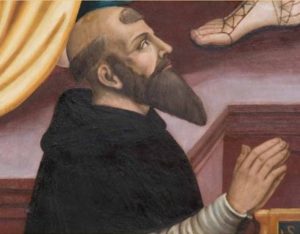
Another major influence on the theme, Giles of Viterbo (1469-1532) of which we will say more below.
- An outstanding orator, he was called to Rome in 1497 by Pope Alexander VI Borgia ;
- In 1503, he became the Superior General of the Order of Hermits of Saint Augustine; with 8000 members, it was the most powerful order of its time;
- He is known for the boldness and seriousness of the speech he gave at the opening of the Fifth Lateran Council in 1512;
- He severely criticized the bellicose policy of Julius II and urged him to triumph by culture rather than by the sword;
- After the death of the latter, he became the preacher and theologian of Pope Leo X who appointed him cardinal in 1517.
Tommaso Inghirami

Finally, the prelate Tommaso Inghirami (1470-1516), who spoke both Latin and Greek, was also a formidable orator. The man owed his fortune to Lorenzo the Magnificent (1449-1492).
Educated by the Neoplatonic philosopher Marsilio Ficino, Lorenzo the Magnificent was the patron of both Botticelli and Michelangelo who lived with him for three years.
Born in Volterra, Inghirami was also taken in by the Magnificent after the sacking of that city. He carefully supervised his studies and later sent him to Rome where Alexander VI Borgia welcomed him. Inghirami was a handsome and well-dressed man.
At 16, Inghirami earned the nickname « Phaedra » after brilliantly playing the role of the queen who commits suicide in a Seneca tragedy performed in a small circle at the residence of the influential Cardinal Raphael Riario, cousin of Julius II or nephew of Pope Sixtus IV and therefore cousin of Julius II. Thereafter, Phaedra, bon vivant and for whom the celestial and terrestrial pleasures were happily completed, gained in political and especially… physical weight.
- In 1475, he accompanied the nuncio of Pope Alexander VI to the court of Emperor Maximilian I of the Holy Roman Empire, who named him Count Palatine and poet laureate;
- On January 16, 1498, Inghirami delivered an oration in the Spanish Church of Rome in honor of the Infant Don Juan, the murdered son of the King of Spain. Inghirami, in the name of Alexander VI Borgia, fully endorsed the Spanish policy of the time: to extend Christianity as well as imperial looting into the New World, to drive the Moors out of Europe and to strengthen the colonial plunder of Africa. If Julius II hated Alexander VI, he will continue this policy;
- In 1508, Julius II nominates Inghirami to head the Library of the Vatican to be installed in the Stanza;
- In 1509, while he was heavily involved in the realization of the frescoes of the Stanza, Raphael made his portrait. Raphael shows us a man suffering from divergent strabismus who seems to turn his gaze towards the sky in order to signify where this « humanist » drew his inspiration from;
- In 1510, the Pope appointed him Bishop of Ragusa;
- Finally, in 1513, he became papal secretary and at the urgent request of the dying pope, Inghirami delivered his funeral oration: « Good God! What a mind this man had, what sense, what ability to manage and administer the Empire! What a supreme and unshakable strength! »
Inghirami soon served as secretary to the conclave electing Pope Leo X (John of Medici, second son of Lorenzo de Medici, also a great protector of neo-Platonists and « culture »), another pope whose portrait Raphael will paint.
In 1509, eager to reform the Catholic church on the basis of the study of the three languages (Latin-Greek-Hebrew) to settle the religious conflicts which were looming and announced the religious wars to come, Erasmus of Rotterdam meets Inghirami in Rome. The latter exposes to him the imposing cultural building sites which he directed. Erasmus does not say a word about it.
However, a long time after the death of Inghirami, Erasmus complained that the Vatican and the oligarchy recruited among the humanists. He notably fingerpointed the sect of “the Ciceronians”, omnipresent in the Roman Curia and of which Inghirami was one of the leaders.
Thus, in 1528, in a pamphlet titled The Ciceronians, Erasmus quoted Inghirami’s oration on Good Friday of 1509. He denounced the fact that the members of this sect, on the grounds of the elegance of the Latin language, only used Latin words that appeared as they were in the works of Cicero! As a result, all the new language of evangelical Christianity, enshrined in the Council of Florence, which Erasmus wished to promote, was either banned or « re-translated » into pagan terms and words of the Roman era! For example, in his sermon, Inghirami had presented Christ on the cross as a pagan god sacrificing himself heroically rather than as a redeemer.
Finally, shortly after Raphael’s death, Cardinal Jacopo Sadoleto (1477-1547) wrote a treatise on philosophy in which Inghirami (meanwhile tragically deceased) defended rhetoric and denied the value of philosophy, his main argument being that everything written was already contained in the mystical and mythological texts of Orpheus and his followers…
Plato and Aristotle, the impossible synthesis
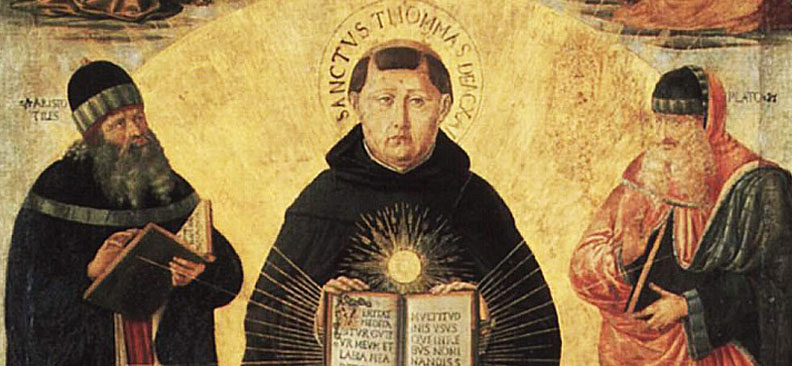
Now, in order to be able to « read » the theme deployed by Raphael in the « Chamber of the Signature, » let us examine this Florentine « neo-Platonism » that animated both Giles of Viterbo and Tommaso Inghirami.
The approach of these two orators consisted above all in putting their « neo-Platonism » and their imagination at the service of a cause: that of asserting with force that Julius II, the pontifex maximus at the head of a triumphant Church, embodied the ultimate outcome of a vast line of philosophers, theologians, poets and humanists. At the origin of a civilizational and theological « big bang » presumed to lead to the immeasurable lustre of the Catholic Church under Julius II, not only Plato and Aristotle themselves, but those who had preceded them including Apollo, Moses and especially Pythagoras.
From 1506 onwards, Giles de Viterbo, in an exercise that can be described as « beyond” impossible, wrote a text entitled Sententia ad mentem Platonis (« Sentences with the mind of Plato »). In it, he tried to combine into one ideology the Sentences of Peter Lombard (1096-1160), the scholastic text par excellence of the 13th century and the starting point for the commentaries of the Dominican Saint Thomas Aquinas (1225-1274) for his Summa Theologica, and the esoteric Florentine neo-Platonism of Marsilio Ficino (1433-1499) * of whom Giles de Viterbe was a follower.
All this could only please a pope who, in order to establish his authority on earthly and spiritual matters, warmly welcomed this agreement between Faith and Reason defended by Thomas Aquinas who says that “the Truth being one”, reason’s only role is to confirm faith’s superiority.
The very idea to present the wedding of Aristotelian scholasticism (logic presented as « reason ») with Florentine neo-Platonism (Plotinus’ emanationism dressed as « faith ») as a source of poetry and justice as « The Signing Room » does, comes from this.
Let us recall that in the middle of the 13th century, two mendicant Orders, the Franciscans and the Dominicans, were contesting the drift of a Church that had become, above all, the simple manager of its earthly possessions. The one who would later be called St. Thomas Aquinas, opposed on this point (his competitor) St. Bonaventure (1221-1274), founding figure of the Franciscan Order.
For his part, Aquinas relies on Aristotle, whom Albert the Great (1200-1280), whose disciple he was in Cologne, had made known to him, to establish the primacy of « reason ». For the man who was nicknamed « the dumb ox », faith and human reason, each managing their own domain, had to move forward together, hand in hand while of course, the Church had the last word.
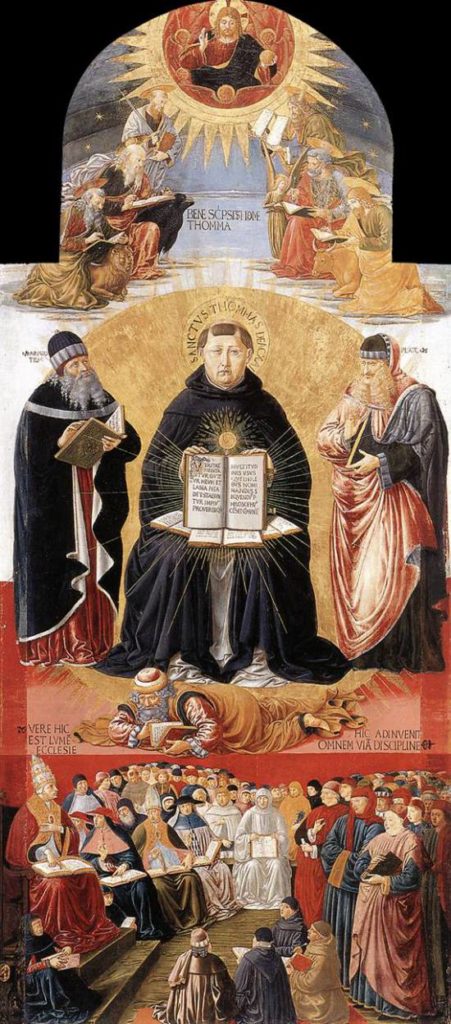
Several paintings (the great fresco of 1366 in the Spanish chapel of Santa Maria Novella in Florence; the painting by Filippino Lippi of 1488 in the Carafa chapel in Rome; or the painting by Benozzo Gozzoli (1421-1497), painted around 1470, in the Louvre in Paris), have immortalized the “Triumph of Thomas Aquinas”.
Gozzoli’s painting in the Louvre is of particular importance because several elements prefigure the iconography of the Signing Chamber, notably the three levels found in Theology (Trinity, Evangelists and religious leaders) as well as the couple Plato and Aristotle found in Philosophy.
In Gozzoli’s painting, we see Aquinas, standing between Plato and Aristotle, throwing down before him the Arab philosopher Averroes (1126-1198) (Ibn-Rushd of Cordoba) expelled for having denied the immortality and the thought of the individual soul, in favor of a « Single Intellect » for all men that activates in us the intelligible ideas.
In the West, before the arrival of Greek delegations in Italy to attend the Council of Ferrara-Florence in 1438, if several works of Plato, including the Timaeus, were known to a handful of scholars, such as those of the School of Chartres or Italians as Leonardo Bruni in Florence, most of the West’s knowledge of Greek thought came down to the works of Aristotle.
For the Aristotelians, who became dominant in the Catholic Church with Aquinas, Plato had to be considered as incompatible with Christianity.
On the other hand, for the Platonists, including Augustine, Jerome and especially Nicholas of Cusa and Erasmus, who honored and adorned him that Erasmus called « Saint Socrates », Plato was to be venerated by Christians: he was monotheistic, believed in the immortality of the soul and venerated, in the form of the Pythagorean triad, the mystery of the Trinity.

In the 15th century, for lack of epistemological clarity and some confusion on the authorship of certain manuscripts, some humanists, in particular Nicolaus of Cusa‘s friend and close collaborator Cardinal John Bessarion (1403-1472), one of the key organizers of the reunification of the Eastern and Western Churches, presented Plato as the « equal » of Aristotle, the latter’s disciple, with the sole purpose of making Plato « as acceptable as possible » to the Catholic Church.
Hence Bessarion‘s now famous phrase « Colo et veneror Aristotelem, amo Platonem » (I cultivate and venerate Aristotle, I love Plato) which appears in his In Calumniatorem Platonis (republished in 1503), a rejoinder to the virulent charge against Plato elaborated by the Greek Georges Trébizond.
Thus, in the School of Athens painted by Raphael, Plato and Aristotle appear side by side, not confronting each other but complementing the other with their respective wisdom : the first holding his book the Timaeus (on the creation of the universe) in one hand, and with the other, pointing to the sky (To the One, to God), the second holding his Ethics (the science of the good in personal life) in one hand, and raising the other arm horizontally to indicate the earthly realm (Physics).
If the commissioners had wanted to underscore the opposition of both philosophers, Plato would have rather been portrayed with his Parmenides (On Ideas) and Aristotle with his Physics (On natural sciences). That is clearly not the case.
Giles de Viterbo in his Sententia ad mentem Platonis will mobilize extreme sophism to erase the irreconcilable and very real oppositions (see box below) between the Platonic thought and that of Aristotle.
Why Plato and Aristotle are not complementary
By Christine Bierre
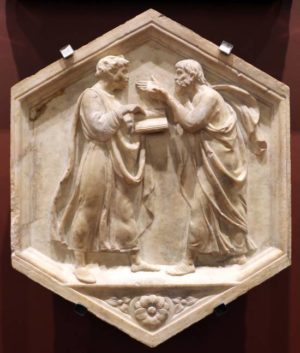
The fundamental concepts that gave birth to our European civilization can be traced back to classical Greece, and through it, to Egypt and other even more ancient civilizations.
Among the Greek thinkers, Plato (-428/-347 B.C.) and Aristotle (-385/-323 B.C.) asked all the great questions that interest our humanity: who are we, what are our characteristics, how do we live, where are we situated in the universe, how can we know it?
The accounts that have come down to us from this distant period speak of the disagreements that led Aristotle to leave Plato’s Academy, of which he had been a disciple. History then bears witness to the violence of the oppositions between the disciples of the one and the other. During the Renaissance, the most reactionary Catholic currents, the Council of Trent in particular, were inspired by Aristotle, whereas Plato reigned supreme in the camp of humanism, in the hands of some of the greatest, such as Erasmus and Rabelais.
There were various attempts, however, to make them complementary, as discussed in this article by Karel Vereycken. If Plato represents the world of Ideas, Aristotle represents the world of matter. Impossible to build a world without both, we are told. It seems so obvious!
The Greek philosopher, Plato.

All this starts, however, from a false idea opposing these two characters. For Plato, we are told, reality is found in the existence of ideas, universal concepts which represent, in an abstract way, all the things which participate of this concept. For example, the general concept of man contains the concept of particular men such as Peter, Paul and Mary; similarly for good, which includes all good things whatever they are. For Aristotle, on the contrary, reality is located in matter, as such.
What is false in this reasoning is the concept that the Platonic Ideas are abstractions. The Platonic Ideas are, on the contrary, dynamic entities that generate and transform reality. In the myth of the cave in The Republic, Socrates says that at the origin of things is the sovereign Good. In The Phaedo, he explains that it is through « Ideas » that this sovereign Good has generated the world.
In the myth of the cave, Socrates uses an offspring of the idea of the good, the Sun, to help us understand what the sovereign Good is. The Good, he says, has generated the Sun, which is, in the visible world, in relation to sight and objects of sight, what the Good is in the intelligible world in relation to intelligence and intelligible objects. The prisoners in the cave saw only the shadows of reality, and then, on coming out, they saw, thanks to the Sun, the real objects, the firmament and the Sun. After this, they will come to the conclusion about the Sun, that it is he who produces the seasons and the years, that he governs everything in the visible world and that he is in some way the cause of all those things that he and his companions saw in the cave.
The Sun not only gives objects the ability to be seen, but is also the cause of their genesis and development. In the same way for the knowable objects, they hold from the Good the faculty to be known but, in addition, they owe him their existence and their essence. The idea of the Good is thus for Plato the dynamic cause of the things: material and immaterial and not dead universals.
Aristotle’s splintered « One »

For Aristotle, as for all the empiricist current which followed him, reality is situated at the level of the objects knowable by the senses. Nature sends us its signals that we decode with our mental faculties. Ideas are only abstractions of the sensible universe which constitutes reality. For him the universals have no real existence: man « in general », does not generate anything. It is only an abstraction of all the men in particular. The particular man is generated by the particular man; Peter is generated by Paul.
It is also said of Aristotle that he « exploded » Plato’s One. There are two ways of conceiving the One. One can think of it either as an absolute One (God or first cause), depending on whether one is a religious person or a philosopher, a purely intelligible principle but a dynamic cause that has generated all things; or one can think of it as the number « one » that determines each particular thing: the number one when we say: a man, a chair, an apple.
Aristotle‘s One simply becomes a particular unity, characteristic of all things that participate in unity. It is not the cause of what « is » but only the predicate of all the elements that are found in all the categories. The Being and the One, he will say, are the most universal of predicates. The One, he will say again, represents a definite nature in each kind but never the nature of the One will be the One in itself. And the Ideas are not the cause of change.
What is the point of all this?
Does this discussion make more sense than all the never-ending debates about the sexes of angels that gave scholasticism such a bad name in the Middle Ages? The One or the many, what does it matter in our daily lives?
This point is however essential. The fact of being able to go back to the intelligible causes of all that exists, puts the human species in a privileged situation in the universe. Unlike other species, it can not only understand the laws of the universe, but also be inspired by them, in order to improve human society. This is why, in history, it is the « Platonic » current that was at the origin of the great scientific, technological and cultural breakthroughs in astronomy, geometry, mechanics, architecture, but also the discovery of proportions that allow the expression of beauty in music, painting, poetry and dance.
As for Aristotle, it must be said that his conceptions of man and knowledge only led him to establish categories defining a dozen possible states of being. Aristotle was also the founder of formal logic, a system of thought that does not claim to know the truth, but only to define the rules of a correct reasoning. Logic is so little interested in the search for truth that one can consider that a judgment that is totally false in relation to reality can be said to be right if all the rules of « good reasoning » of logic have been used.
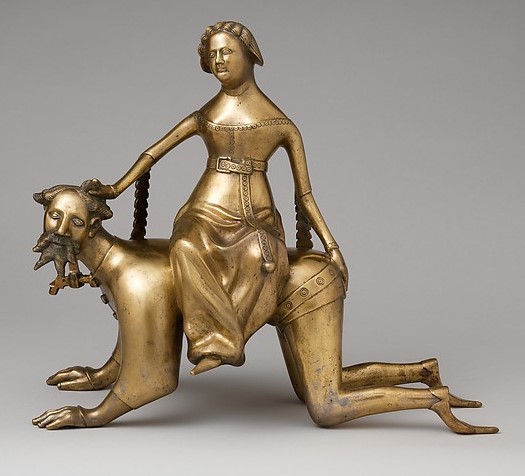
Suite
To begin with, Giles de Viterbo underlines that Aristotle is a « pupil » of Plato and that the « two princes of philosophy » could be reconciled. Very much imbued with the neo-Pythagorean spirit, and for whom Plato was only one of the greatest disciples of Pythagoras, the author argues that both philosophers agree that, contrary to the pagan pantheon, the « One » is the ultimate expression of the divine. Clearly, they were both monotheists and thus their convictions anticipated those of Christianity.
Giles of Viterbo:
Philosophy, which traces and examines all things, judges that all number and multiplicity are absent from God, as Plato and his pupil Aristotle say. Humanity has as its goal the understanding of divine things, as even Aristotle admits in his Ethics.
Thus, if it is necessary to pursue this goal, it is necessary to arrive at the understanding of God.
And he continues:
Now these princes of Philosophy [Plato and Aristotle] can be reconciled, and no matter how much they disagree about creation, the Ideas, or the goal of the Good, these points [of agreement] can be identified and demonstrated (…) [Then], they appear not to disagree with each other at all (…) These great princes can be reconciled if we postulate the double nature of things, one which is free from matter and the other which is within matter (…) Plato follows the first, Aristotle the second, and because of this, these two great leaders of philosophy hardly differ from each other. If you think that we are making this up, listen to them yourselves. For if we speak of humanity, after all the subject of our conversation, then Plato says the same thing, he says humanity is the soul, in the (First) Alcibiades; and in the Timaeus, he says that humanity has two natures, and we know one of these natures by means of the senses, and the other by means of reason. Also, in the same book, he teaches us that each part in us does not exist in isolation from the other, that each nature is concerned with the other nature. Aristotle, in the tenth book of his Ethics, calls humanity Understanding. So you can know that each philosopher (Plato and Aristotle) feels the same way, no matter how much it seems to you that they are not saying the same thing.
Pico della Mirandola the Neo-Platonist

Giles of Viterbo, like Tommaso Ingharimi, seems to have taken up the gauntlet thrown to them by John Pico della Mirandola (1463-1494), the young disciple of Ficino.
A precocious scholar, a protégé of Lorenzo de’ Medici (like Inghirami), this man of omniscience was fearless. Thus, in 1485, at the age of 23, he announced his project to gather, at his own expense, in the eternal city and capital of Christianity, the greatest scholars of the world to debate the mysteries of theology, philosophy and foreign doctrines. The objective was to go back from scholasticism to Zoroaster, passing by the Arabs, the Kabbalah, Aristotle and Plato, to expose to the eyes of all, the concordance of wisdom. The affair failed. His initiative, which reserved an important place for magic, could only arouse distrust. For the Vatican, all this could only smell of sulfur, and the initiative was discarded at the time.
However, it will mark the minds of a generation. For his Oratio de hominis dignitate, his inaugural speech written in an elegant and almost Ciceronian style, intended for the presentation of his nine hundred theses, published together after his death, was a great success, especially among young scholars like… Inghirami.
Pico’s achievement, which was not well received by the authorities, was to give humanistic studies (studia humanitatis) a new purpose: to seek the concordance of doctrines and define the dignity of the human being. The aim was, by bringing out what unites them despite their differences, to discover their common ground and, by a coincidence of opposites, to have them meet in a unity that transcends them.
Pico della Mirandola:
That is why, not content with having added to the common doctrines a quantity of remarks on the primitive theology of Mercury Trismegistus, on the teachings of the Chaldeans and Pythagoras, on the most secret mysteries of the Jews, we have also proposed for discussion a certain number of discoveries and conceptions of our own in the physical and theological fields. First of all, we have argued that Plato and Aristotle agree: many have thought so before us, no one has proved it sufficiently. Among the Latins, Boethius had promised himself to do so, but there is no indication that he ever realized what was always his project. Among the Greeks, Simplicius had given himself the same program: heaven forbid that he should have lived up to his intentions! Augustine himself, in his work Against the Academicians, writes that many authors have conceived, with great finesse in argumentation, the project of establishing this same point, namely that the philosophies of Plato and Aristotle are one. Thus John the Grammarian [The Hellenist John Lascarus] affirms well that only those who do not hear the words of Plato believe him to be in disagreement with Aristotle, but it is to his successors that he left the care of the demonstration. We have also added various developments where the concordance between the opinions – reputedly discordant – of Scotus and Thomas on the one hand, of Averroes and Avicenna on the other hand, is affirmed. Secondly, our considerations on Aristotelian and Platonic philosophy have been enriched by seventy-two new physical and metaphysical propositions: by making them one’s own, if I am not mistaken (and I will soon be sure of this), one will be able to solve any problem of a natural or theological nature, according to a philosophical method which is quite different from the one taught orally in schools and which is in honor among the doctors of our time.
In a manuscript found unfinished at the time of his death in 1494 and entitled Concordia Platonis et Aristotelis, Pico della Mirandola explicitly mentions Plato’s Timaeus and Aristotle‘s Ethics, precisely the two books that appear as attributes of their authors in Raphael’s fresco.
Then, in his Heptaplus, a work he completed in 1489, Pico della Mirandola asserted that the writings of Moses and the Mosaic Law, according to him the foundation of all wisdom, were the basis of Greek civilization before becoming that of the Church of Rome. The Timaeus, the major work of Plato, says Pico, demonstrates that its author was an “attic Moses” (from Athens).
Cicero the Neo-platonist
For Inghirami, fascinated by the eloquence and the style of Cicero (-106/-43 BC) of whom he believed himself the reincarnation, the challenge launched by Pico della Mirandola to reconcile Apollo, Pythagoras, Plato and Aristotle, appeared almost as a divine test and the frescoes of Raphael decorating the Stanza will be above all his answer.
In addition, Cicero himself claimed to be a neo-Platonist. In the first volume of his work, the Academica, after condemning Socrates for continually asking questions without ever « laying the foundations of a system of thought », Cicero asserts, several centuries before Pico della Mirandola, that the ideas of Plato and Aristotle, in essence, « had the same principles »:
In the shadow of Plato’s genius, a fertile, varied, universal genius, a unique philosophy was established under the double banner of the academicians and the peripatetics, who, agreeing on things, differed only on the terms. For Plato, who had made Speusippus, son of his sister, the heir of his philosophy, also left two disciples of great talent and rare science, Xenocrates of Chalcedony and Aristotle of Stagire: those who followed Aristotle, were named peripatetics, because they discussed while walking in the Lyceum; whereas those who, according to the institution of Plato, held their assemblies and disserted in the Academy, the other gymnasium of Athens, received from this place the name of Academicians. But both of them, all penetrated by Plato’s fertile genius, formulated philosophy into a certain complete and finished system, and abandoned the universal doubt of Socrates, and his habit of discussing everything without affirming anything. There was then what Socrates entirely disapproved of, a philosophical science, with regular divisions and a whole methodical apparatus. This philosophy, as I have said, under a double name, was one; for between the doctrine of the peripatetic [Aristotle] and the ancient Academy [Plato] there was no difference. Aristotle prevailed, in my opinion, by the richness of his genius; but the one and the other had the same principles, and judged the goods and the evils in the same way.
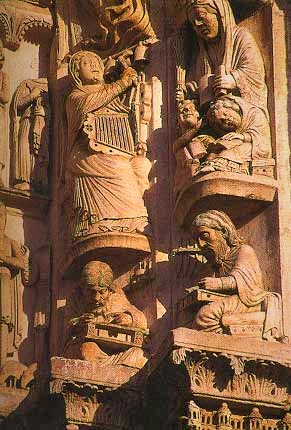
Inghirami was also strengthened by the reading of countless Christian authors in this sense, such as the Frenchman, Bernard of Chartres (12th century), a Neoplatonist philosopher who played a fundamental role in the Chartres school, which he founded. He was appointed master (1112) and then became chancellor (1119) responsible for the teaching of the cathedral school.
You wonder the sculptures of Pythagoras and Aristotle appear side by side on the western portal of the cathedral?
Historian Etienne Gilson writes:
Bernard of Chartres was first of all influenced by Boethius, whose Platonism he adapts. He then set out to reconcile Plato’s thought with that of Aristotle, which made him the greatest Aristotelian and Platonic thinker of the 12th century. John of Salisbury affirmed, in the most formal terms, that Bernard of Chartres and his disciples did not believe that they were simply expounding Plato’s thought by explaining in this way the relation of ideas to things, but that they had the pretension of putting Aristotle in agreement with Plato. That the trouble they took was wasted, is what John of Salisbury clearly states. With a very British humor he notes that these philosophers arrived too late and that they worked uselessly to reconcile dead men who had been arguing all their lives.
Inghirami will have read St. Bonaventure (1217-1274), one of the founders of the Franciscan order, who pointed out that Plato and Aristotle each excelled in their own field:
And so it appears that among philosophers, Plato’s gift is to speak of wisdom, Aristotle‘s of science.
Or the Florentine Marsilio Ficino, this neo-Platonic philosopher of the XVth century whose « Platonic Academy » had put in saddle Pico della Mirandola. Ficino, had he not written in his Platonic Theology that
Plato treats natural things divinely while Aristotle treats even divine things naturally.
In the preface he wrote for The Fable of Orpheus, a play written by his disciple Poliziano (1454-1494), Ficino, referring to Saint Augustine, makes the mythical Hermes Trismegistus (Mercury) the first of the theologians: his teaching would have been transmitted successively to Orpheus, Aglaophemus, Pythagoras, Philolaos and finally Plato.
Thereafter, Ficino will place Zoroaster at the head of these prisci theologi, to finally attribute to Zoroaster and Mercury an identical role in the genesis of the ancient wisdom: Zoroaster teaches this one among the Persians at the same time as Trismegistus taught it among the Egyptians.
Preceding Plato, Pythagoras

In Raphael’s School of Athens, the figure of Pythagoras of Samos (580-495 B.C.), surrounded by a group of admirers, takes a major place. He is clearly identifiable by a tablet on which the musical chords and the famous Tetraktys appear, which we will discuss here.
While historians have so far mainly explored the influence of the Platonic and Neo-Platonic currents on the Italian Renaissance, historian Christiane L. Joost-Gaugier, in her book Pythagoras and Renaissance Europe, has highlighted the extent to which the ideas of the great pre-Socratic thinker Pythagoras influenced the thought and art of the Renaissance.
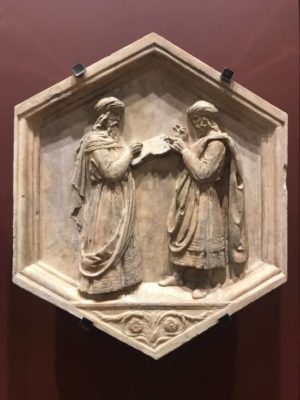
In art, Pythagoras inspired the Roman architect Vitruvius (90-15 BC), and later such theorists of the golden mean such as the Franciscan monk Luca Pacioli (1445-1517), whose treatise, De Divina Proportiona, illustrated by Leonardo da Vinci, appeared in Venice in 1509.
However, if a theorem, probably from India, bears his name (attributed to Pythagoras by Vitruvius), little is known of his life. Just like Confucius, Socrates and Christ, if we are sure that he really existed, no writing from his hand has come down to us.
By necessity, Pythagoras
became a living legend, and even very active during the Renaissance, so much so that most people saw Plato as a mere « disciple » of the « divine Pythagoras ».
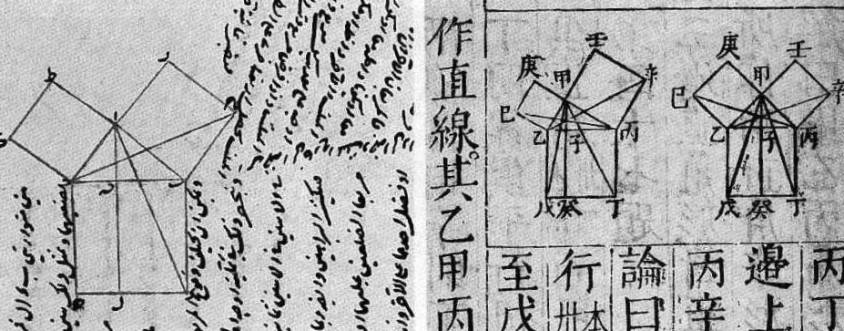
Born in the first half of the 6th century B.C. on the island of Samos in Asia Minor, Pythagoras was probably in contact with the school of geometer’s founded by Thales of Miletus (-625/-548 B.C.).
Around the age of 40, he left for Crotone in southern Italy to found a society of friends, both philosophical, political and religious, whose chapters were to multiply.
For Pythagoras, the issue is to build a bridge between man and the divine and on this basis to transform society and the city. When asked about his knowledge, Pythagoras, before Socrates and Cusa, asserted that he knew nothing, but that he sherished « the love of wisdom ». The word philo-sophy would have thus been born.
No Christian humanist, reading Saint Jerome (347-420), one of the Fathers of the Catholic Church, could escape the praise that the latter gives to Pythagoras.
In his polemic Apology against the Books of Rufinus, Jerome, in order to evoke an exemplary behavior, quotes what two disciples of Pythagoras would have said:
We must by all possible means avoid softness of the body, ignorance of the spirit, intemperance, civil dissensions, domestic dissensions and in general excess in all things.
And Jerome invokes the « Precepts of Pythagoras » :
Everything must be common among friends; a friend is another ourselves. We must consider two periods in life, the morning and the evening, that is, what we have done and what we must do. After God, we must seek the truth, which alone can bring men closer to the Creator.”
Secondly, Jerome believes that Pythagoras, in affirming the concept of the immortality of the soul, preceded Christianity:
Listen to what Pythagoras was the first to find in Greece, Jerome says: That souls are immortal, that they pass from one body into another, and, it is Virgil himself who tells us in the sixth book of the Aeneid: When they have made a revolution of a thousand years, God calls them in great numbers to the banks of the river Lethe, so that they may undoubtedly see again the heaven they no longer remember; it is then that they begin again to revive a new body, which first was Euphorbus, then Calide, then Hermoticus, then Perhius and finally Pythagoras ; and that after a certain time what has existed begins to be born again, that there is nothing new in the world, that philosophy is a collection of meditations on death, that every day it strives to free the soul from the chains that bind it to the body and to give it back its freedom. Plato communicates many other ideas in his writings, especially in the Phaedo and in the Timaeus.
The hidden geometry of numbers
For Pythagoras « the beginning is half of everything ». According to Theon of Smyrna (v. 70/v. 135), for the philosopher, « numbers are, so to speak, the principle, the source and the root of all things ».
Aristotle, in his Metaphysics reports:
The Pythagoreans first applied themselves to mathematics… Finding that things [including musical sounds] model their nature mainly on the set of numbers and that numbers are the first principles of the whole of nature, the Pythagoreans concluded that the elements of numbers are also the elements of everything that exists, and they made the world a harmony and a number.
And as Cleinias of Tarantum (4th century BC), a Pythagorean friend of Plato, said:
When these things, therefore, are at rest, they give birth to mathematics and geometry, when they are in motion to the harmonica and astronomy.
The idea of the « monad », a dynamic unity participating in the One, perfected several centuries later by the philosopher and scientist Gottfried Wilhelm Leibniz (1646-1716) in his « Monadology« , comes to us from this period. Etymologically meaning « unity » (monas), it is the supreme unity (the One, God, the principle of numbers) which, while being at the same time the minimal unity, reflects in the microcosm the same dynamic activity that the One represents in the macrocosm.
Already, just the name of Apollo (a god considered as « the father » of Pythagoras) means, as Plato, Plutarch and other ancient authors point out: free of all multiplicity (Pollo = multiplicity; a-pollo = non-multiple).
Xenophanes of Colophones (born around 580 BC), asserts the existence of a unique God governing all things by the power of his intelligence. It is about a god not similar to the men, because eternal, incorporeal and spherical.
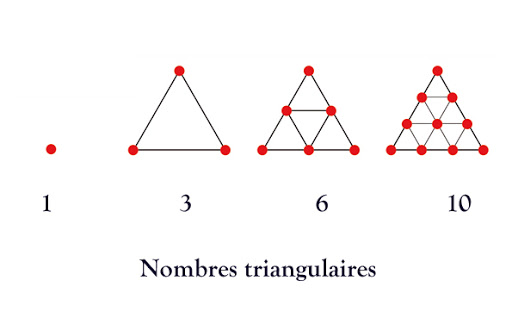
As much as this conception of a dynamic One has sometimes provoked an explosion of esoteric interpretations, it has stimulated the most creative minds and terrorized the formalists of thought.
When speaking about simple things, arithmetic numbers, Pythagoras uses the terms of one, two, three, four, five, ten…, while to evoke ideal numbers and their power, he speaks about: monad, dyad, triad, tetrad, decad, etc. Thus, by conceiving numbers in a non-linear but figurative way, he offers an arithmetic applicable to astronomy, music and architecture. By arranging these numbers, like marbles, in a particular way, Pythagoras discovered the famous « geometry of numbers ». For example, in the case of triangular numbers, three points form a triangular surface. If we add three points below, we find the number 6, but it is still a triangle. And if we add four more points, we get the number 10, still a triangular number.
The Patriarch of Constantinople Photius (810-893) confirms that :
The Pythagoreans proclaimed that the complete number is ten.
The number ten, is a compound of the first four numbers that we count in their order. That is why they called Tetraktys the whole constituted by this number.
Besides the plane and triangular numbers (1, 3, 6, 10, etc.), Pythagoras explored the square numbers (1, 4, 9, 16, …), rectangular, cubic, pyramidal, star-shaped, etc. In doing so, Aristoxenus said, Pythagoras had « raised arithmetic above the needs of merchants ». This approach, that of seeing harmony above and within the multiple, has inspired many scientists throughout history. One thinks of Mendeleev for the elaboration of his table of elements or of Einstein.
The power of numbers was also well understood by the cardinal-philosopher Nicolaus of Cusa, who evokes Pythagoras in the first chapter of his treatise De Docta Ignorantia (1440), when he states that :
All those who search, judge the uncertain by comparing it to a certain presupposition by a system of proportions. All research is therefore comparative, and uses the means of proportion: if the object of research can be compared to the presupposition by a small proportional reduction, the judgment of apprehension is easy; but if we need many intermediaries, then difficulty and pain arise. This is well known in mathematics: the first propositions are easily brought back to the first principles which are very well known, whereas the following ones, because they need the intermediary of the first ones, have more difficulty. Therefore, all research consists of a comparative proportion, easy or difficult, and this is why the infinite, which escapes, as infinite, from all proportion, is unknown. Now, the proportion which expresses agreement in a thing on the one hand and otherness on the other hand, cannot be understood without the number. This is why the number encloses all that is susceptible of proportions. Therefore, it does not create a proportion in quantity only, but in everything that, in some way, by substance or by accident, can agree and differ. Therefore, Pythagoras strongly believed that everything was constituted and understood by the power of numbers. Now, the precision of combinations in material things and the exact adaptation of the known to the unknown are so far above human reason that Socrates considered that he knew nothing but his ignorance; at the same time as the very wise Solomon affirms that all things are difficult and that language cannot explain them.
The Geometry of numbers,
the secret of mental calculations
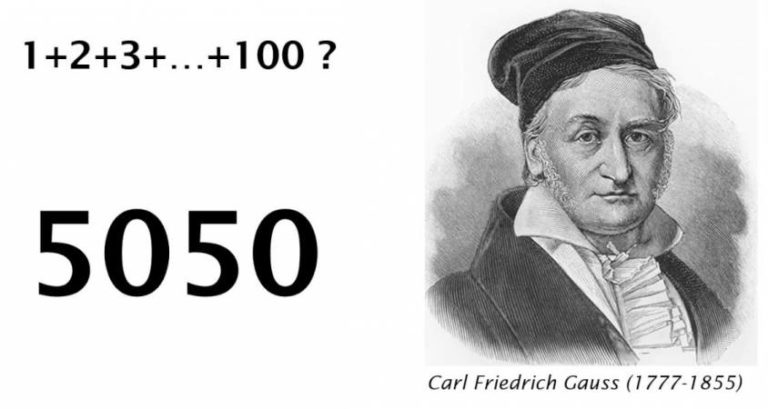
Here is a simple example.
One day, in Göttingen, the teacher of the young German mathematician Carl Gauss (1777-1855) asked his students to calculate the sum of all the numbers from one to one hundred. The students did so and began to add the numbers 1 + 2 + 3 + 4 + 5, etc.
The young Gauss raises his hand and, following a mental calculation, announces the result of the operation: « 5050, Sir! »
The teacher, surprised, asks him how he arrived at the result so quickly. The young Gauss explains: to see if there is a geometry in the number 100, I added the first digit (1) with the last (100). This gives 101. Now, if I add the second digit (2) with the second to last one (99), it also makes 101. I concluded that within the number 100 there are fifty pairs of even and odd numbers whose sum is 101 each time. Thus, by multiplying 101 by the number of couples (50), I immediately arrive at 5050.
From Pythagoras to Plato

For Pythagoras, the most perfect surface is the circle and the ideal volume is the sphere since regular polyhedra can be inscribed. According to one of his disciples, the Italian Philolaus of Croton (-470/-390 BC), Pythagoras would have been the first to define the five regular polyhedrons:
- the cube,
- the tetrahedron (a pyramid with 4 triangular faces),
- the octahedron (composed of 8 triangles),
- the icosahedron (64 triangles) and
- the dodecahedron (composed of 12 pentagons).
Since Plato describes them in his work, the Timaeus, these regular polyhedra took the name of « Platonic solids ». Let’s recall that Plato went to Italy several times, notably to meet his close friend, the great Pythagorean scientist, astronomer, musical theorist and political leader, Archytas of Tarantum (-428/-387), considered today as « the father of robotics ».
A direct disciple of Philolaos, Archytas became the mathematics teacher of the brilliant Greek astronomer and physician Eudoxus of Cnidus (-408/-355).
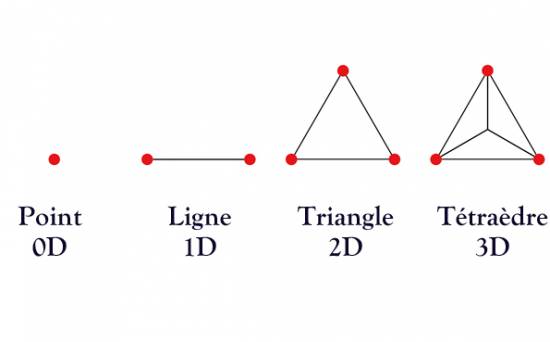
Starting with Archytas, the Pythagoreans associate the 1 to the point, the 2 to the line, the 3 to the surface (the two-dimensional geometrical figure: circle, triangle, square…), the 4 to the solid (the three-dimensional geometrical figure: tetrahedron, cube, sphere, etc.).
Let’s add that in the Timaeus, one of Plato’s last dialogues, after a brief exchange with Socrates, Critias and Hermocrates, the Pythagorean philosopher Timaeus of Locri (5th century BC) exposes a reflection on the origin and the nature of the physical world and of the human soul seen as the works of a demiurge while addressing the questions of scientific knowledge and the place of mathematics in the explanation of the world.
Cicero (Republic, I, X, 16) specifies that Timaeus of Locri was an intimate of Plato:
No doubt you have learned, Tuberon, that after the death of Socrates, Plato went first to Egypt to learn, then to Italy and Sicily, in order to learn all about the discoveries of Pythagoras.
There he lived for a long time in the intimacy of Archytas of Taranto and Timaeus of Locri, and had the chance to obtain the Commentaries of Philolaos.
The music of the spheres
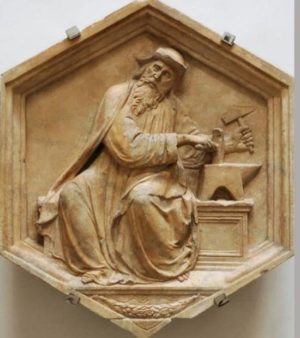
A magnificent bas-relief on the campanile of the Florence cathedral reflects what the early Italian humanists knew about Pythagoras.
Luca della Robbia (1399-1482), the sculptor working on the instructions of the humanist chancellor of Florence Leonardo Bruni (1370-1444), shows Pythagoras, a large hammer in one hand, a small hammer in the other, striking an anvil and concentrating his mind on the difference in the sounds he produces.
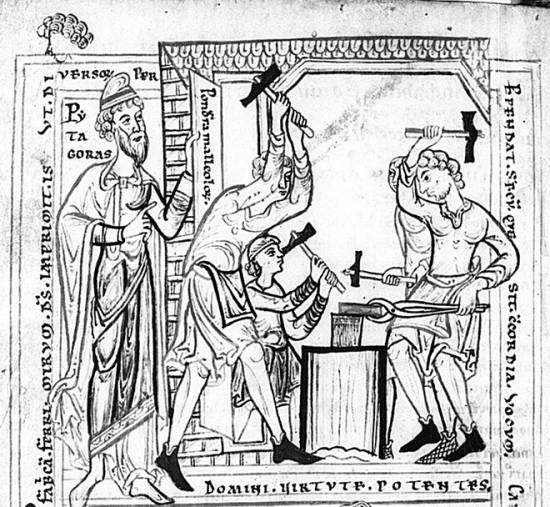
According to the legend, Pythagoras was walking near a forge when his attention was caught by the sound of hammers striking the anvil. He discerned in his ear the same consonances as those he could produce with his lyre. His intuition led to a fundamental discovery: musical sounds are governed by numbers.
This is how Guido d’Arezzo (992-1050), the Benedictine monk who created the system of musical notation still in use, relates the event in the last chapter (XX) of his book Micrologus around 1026:
A certain Pythagoras, a great philosopher, was traveling adventurously; he came to a workshop where an anvil was being struck with five hammers. Amazed by the pleasant harmony [concordiam] they produced, our philosopher approached them and, believing at first that the quality of sound and harmony [modulationis] lay in the different hands, he interchanged the hammers. When this was done, each hammer retained its own sound. After having removed one that was dissonant, he weighed the others, and, admirably, by the grace of God, the first weighed twelve, the second nine, the third eight, the fourth six of I don’t know what unit of weight. He thus knew that the science [scientiam] of music resided in the proportion and ratio of numbers [in numerorum proportione et collatione] […] What can we say about the science of music? […] What more can be said? By arranging the notes according to the intervals mentioned above, the illustrious Pythagoras was the first to perfect the monochord. As it is not lasciviousness that one finds there, but a fast revelation of the knowledge of our art, it met a general assent among the scholars. And this art has gradually been affirmed and developed to this day, for the Master himself always illuminates the human darkness and his supreme Wisdom endures for all centuries. Amen.
Here, the diagram (found on a slate placed at the feet of Pythagoras in Raphael’s fresco), which visualizes the musical harmonies obtained by dividing a string. Dividing it in two gives the octave, in three the fifth and in four the fourth. Finally, epogdoon (from the prefix epi- meaning above and ogdoon meaning the eighth) translates the interval of 9/8, which here corresponds to the tone.
IMAGE
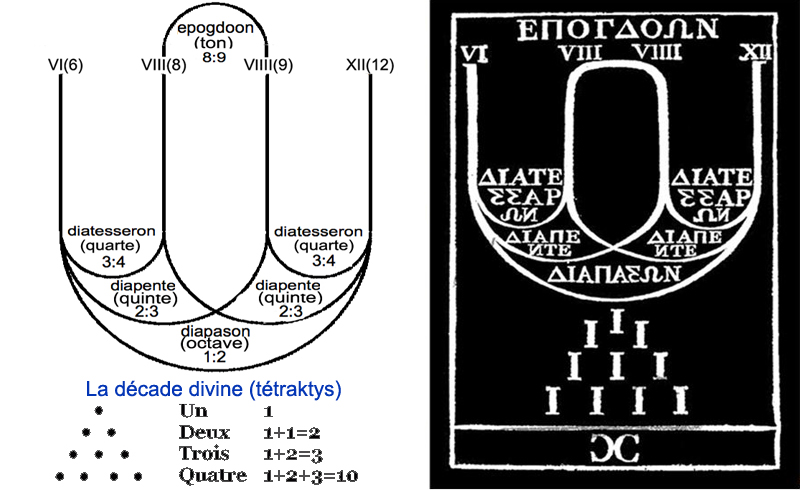
Let’s go back to the harmonic ratios that Pythagoras discovered from the weights of the hammers: 12, 9, 8 and 6.
- The ratio between 12 and 6 is the half and corresponds to the octave (diapason). It is found on a musical instrument by vibrating half a string;
- The ratio between 12 and 8 is a ratio of two thirds, which corresponds to the fifth (diapente);
- The ratio between 8 and 6, is a ratio of three quarters, which corresponds to the fourth (diatessaron);
- Finally, the ratio between 8 and 9 gives the interval of a tone (epogdoon, the prefix epi- meaning above and ogdoon meaning the eighth).

Later, the Pythagoreans transposed the same proportions to other objects, including volumes of water in glasses, the size of bells as well as bronze disks or the length of strings of musical instruments or flutes. For Pythagoras, this experience is fundamental because it corroborates the basic intuition of his philosophy: everything that exists is number, including phenomena as immaterial as musical intervals. In a famous passage of the Timaeus (35-36), Plato describes the fabrication of the proportions of the World Soul by the Demiurge. This passage is based on the numerical series 1, 2, 3, 4, 9, 8, 27, which corresponds to the fusion of the series of the first powers of 2 (2, 4, 8) and the series of the first powers of 3 (3, 9, 27). Now, from this series, we can derive the numerical relationships on which the musical intervals are based.
In his Metaphysics, Aristotle also notes :
The Pythagoreans noticed that the whole of the modes of musical harmony and the relations which compose it are resolved in proportional numbers.
With the French philosopher Pierre Magnard, we would rather say:
If to know is to measure, music is the art of pursuing measurement beyond the threshold of incommensurability. When numerical, metric and weight standards are no longer capable of establishing proportions between natural realities, harmony comes to the rescue of its own scales – diatonic, chromatic, enharmonic – and of its intervals – fifth, fourth, third, octave – to make up for the lack of calculation.
Finally, as the Roman musicologist Theon of Smyrna (70-135) stated:
The Pythagoreans assert that music is a harmonic combination of opposites, a unification of multiples and an agreement of opposites.
In addition, for the Pythagoreans, music also had an ethical and medical value:
He started education with music, using certain melodies and rhythms, thanks to which he healed the character traits and passions of men, and brought harmony between the faculties of the soul.
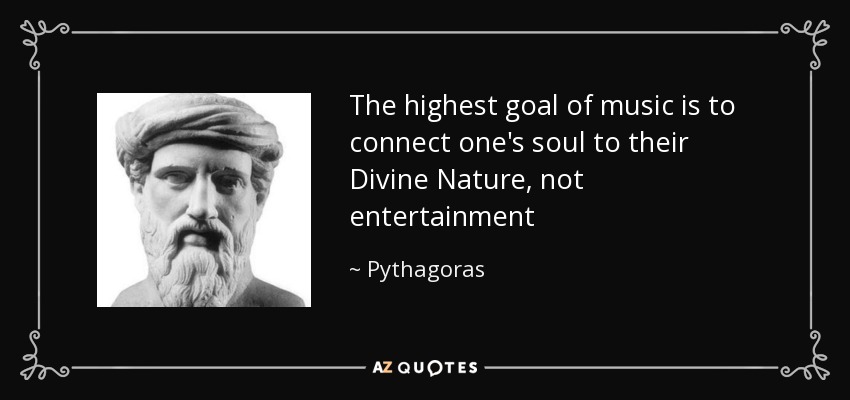
All this made Pythagoras the incarnation of a cosmic and universal harmony**. Moreover, he would have been the first to have used the word « cosmos » (perfection, order).
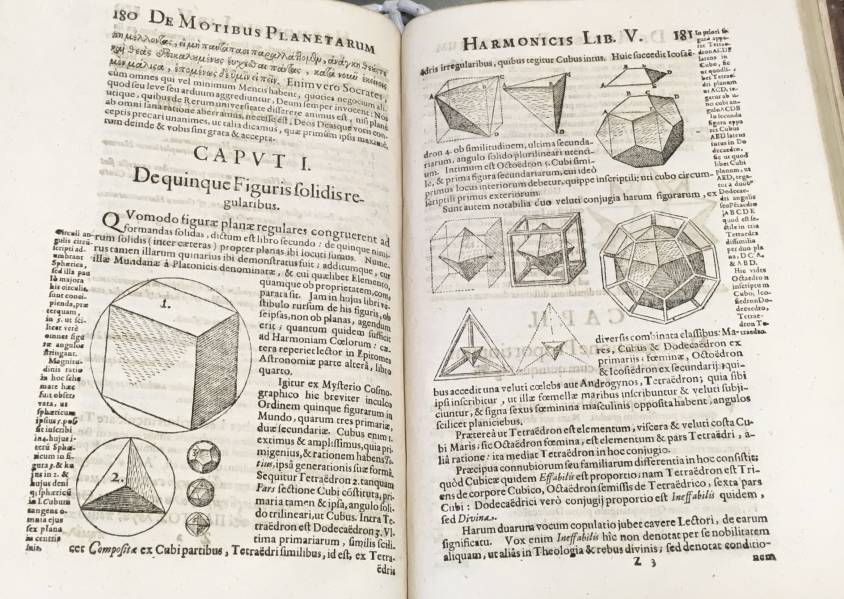
Pythagoras, praised by the first true astrophysicist Johannes Kepler (1571-1630), is said to have been the first to coin the concept of « the music of the spheres » or « the harmony of the spheres ».
For, as Sextus Empiricus (towards the end of the second century) states in his Pyrrhonian sketches, Pythagoras would have noted that the distances between the orbits of the Sun, the Moon and the fixed stars correspond to the proportions regulating the intervals of the octave, the fifth and the fourth. In the Republic, Plato states that astronomy and music are « sister sciences ».
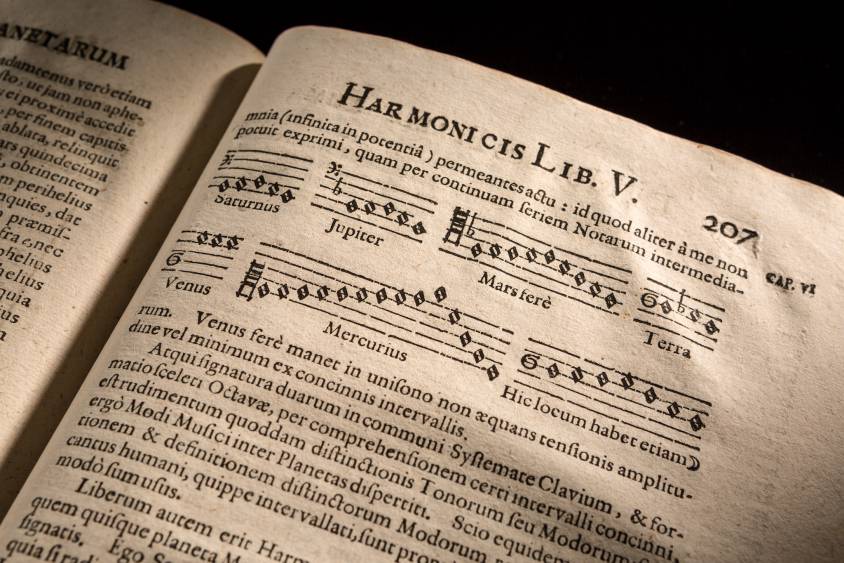
Copernicus admits that the work of the Pythagoreans inspired his own research:
Others think that the Earth moves. Thus, Philolaos the Pythagorean says that the Earth moves around the Fire in an oblique circle, as do the Sun and the Moon. Heraclitus of Pontus and Ecphantos the Pythagorean do not, it is true, give the Earth a translational motion [motion around the Sun, heliocentrism]… Starting from this, I too began to think of the mobility of the Earth
(Copernicus, letter to Pope Paul III, preface to De revolutionibus orbium caestium [On the Revolutions of the Celestial Orbs], 1543).
The name Pythagoras (etymologically, Pyth-agoras: « he who was announced by the Pythia », the goddess), derives from the announcement of his birth made by the oracle to his father during a trip to Delphi. However, legend has it that Pythagoras was the son of Apollo, the god of light, poetry and music.
According to the oldest pre-Socratic traditions, Apollo had conceived a plan to control the universe. This plan was revealed in « the music of the spheres » under the wise supervision of Apollo, the sun god and god of music; a Greek god who passed to the Romans without changing his name. Apollo is represented with a crown of laurels and a lyre, surrounded by the nine muses.
GUIDED TOUR
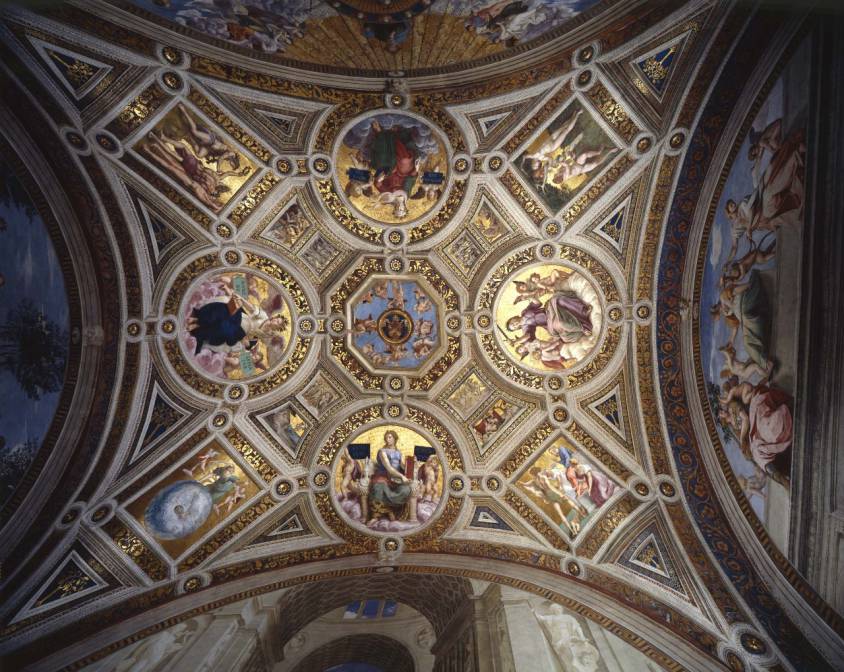
After reviewing the political situation of the time, the motivations of Pope Julius II and his advisors seeking to re-establish the authority of a « Triumphant Church, » the ultimate culmination for centuries to come of a culture that goes back to Apollo, Moses, Pythagoras, Plato, Cicero and their disciples, the viewer now has some solid « keys » (the « codes ») in hand that will allow him or her to « read » Raphael’s frescoes adorning the Stanza.
Without Raphael’s account of his work, this reading remains an obstacle course. For example, the identification of the figures remains uncertain, since, with a few rare exceptions, no tablet tells us this. The idea, in any case, is that the spectator, by analyzing the appearance and gestures of each one, discovers for himself who is represented.
As we said, when entering the room, the viewer is immediately asked to appreciate each fresco not in isolation, but as an expression of a coherent whole.
When entering the Stanza, as if inside a painted cube, one immediately realizes that one is facing a theatrical setting. For the great vaults that the spectator discovers are only painted images and do not respond to any structural reality of the building. Inghirami was a speaker, an actor and a director who knew who should appear where, with what attitude and dressed in what way. Thanks to this imagination, a room that was at first sight rectangular and boring, was transformed into a spherical cube because the corners of the room were « rounded » with stucco.
A. THE CEILING

From the thematic point of view, the visual path, as one might expect, begins on the ceiling and ends on the floor. In the center of the ceiling, a small circle with the coat of arms of Julius II. Around it, an octagon surrounded by four circles connected by four rectangles. Each of the four circles touches the top of one of the four vaults painted on the four walls and shows an allegorical figure and a text announcing the theme of the large frescoes below.
Each time, it is a question of emphasizing the harmony uniting all the opposing (circle, square) parts. While the real incompatibilities are left to the checkroom, the oppositions and the formal differences will even be strongly emphasized, but exclusively to show that one can accommodate them by submitting them to a higher design.
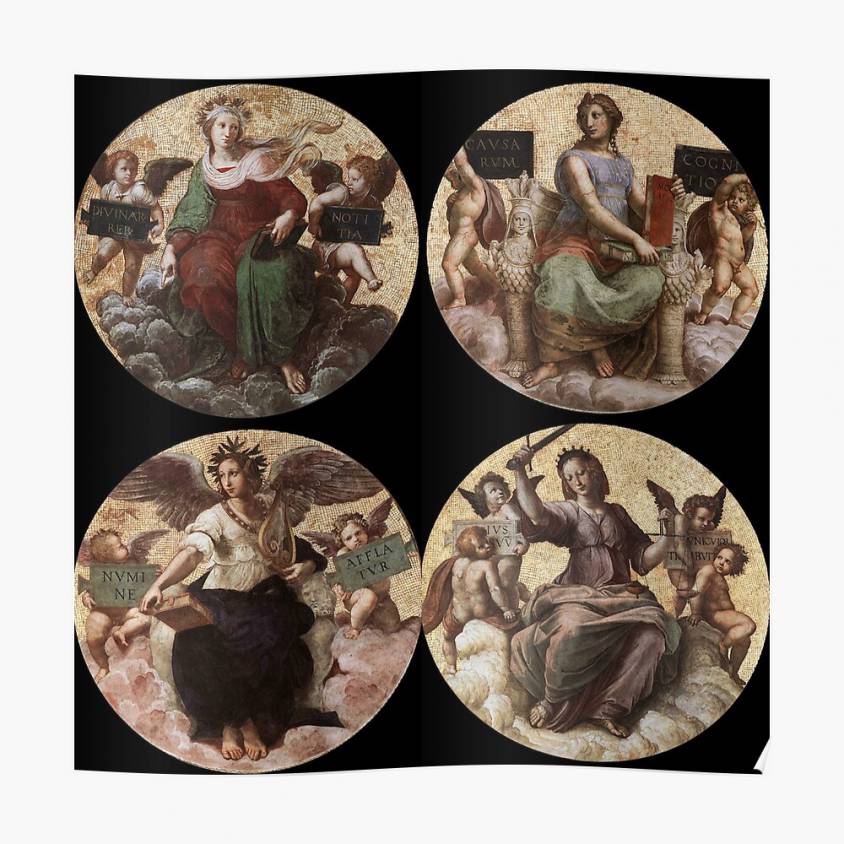
Thus two double themes (2 x 2) are articulated:
- Philosophy (the true accessible by reason), nicknamed The School of Athens, and Theology (the Truth accessible by divine revelation), nicknamed since the Council of Trent, the « Dispute of the Holy Sacrament »; a theme common to Aquinas and the neo-Platonists.
- Poetry and music (the Beautiful), and Justice (the Just), a theme of Ciceronian origin.
- Above the theme Philosophy, in one of the four circles, is represented by a woman wearing a dress with each of the four colors symbolizing the four elements evoked by a motif: blue illustrates the stars, red the tongues of fire, green the fish and golden brown the plants. Philosophy holds two books entitled « Morality » and « Nature », while two small genius (geniuses) carry tablets on which one can read « CAUSARUM » and « COGNITO », read together meaning « To know the causes ». Clearly, the aim of moral and natural philosophy is to know the causes, that is to say to go back to God.
- Above Theology, a woman dressed in red and green, colors of the theological virtues. In her left hand, she holds a book, her right hand points to the fresco below. Two geniuses carry tablets saying « DIVINAR.RER » and « NOTITIA », « The revelation of sacred things ».
- Above Poetry, the winged figure of the Poetry carrying lyre and crown of laurels. Two putti (cherubs) present us with tablets on which are inscribed the words of Virgil: « Inspired by the spirit » (NVMINE AFFLATVR). Since we are dealing with puttis and not geniuses, there is a clear reference to the Christian spirit that inspires the arts.
- Finally, above the last fresco, Justice, a woman holds the attributes of justice: the scales and the sword. Two putti carry tablets with the words of the Emperor Justinian: « IVS SVVM VNICUMQUE », that is, « to each his just punishment ».
Then, still on the ceiling, as we have indicated, there are four rectangular frescoes connecting the four circles whose theme we have just specified. Again, these are two pairs that complement each other.

A. A first rectangular fresco, linking Philosophy with Poetry, shows us a woman (wisdom, the first mover) here as the first cause and setting a celestial globe in motion and thus the universe in action. It may be the mythical Sibyl mentioned by Heraclitus, a superhuman incarnation of the prophetic voice. Philosophically, it is an allegory of the creation of the universe (or Astronomy). The constellation that appears on the globe has been identified. It corresponds to the sky map of the night of October 31, 1503, the date of the election of Julius II… which of course the date he became the “prime mover” of the universe.
B. The second rectangle, diametrically opposed to the first one and linking Justice to Theology, represents « Adam and Eve driven out of Paradise ». Considered as the beginning of theology, « The Fall of Man », will be repaired by the « redemption » that the Church and Pope Julius II will bring, embodied by the creative wisdom putting the universe back into motion.
C. The third rectangle, linking Philosophy and Justice, represents « The Judgment of Solomon, » a scene showing King Solomon’s wise judgment when two mothers claimed the same child.
D. And finally, the fourth, at the other end of the diagonal, connecting Poetry and Theology, represents, not « The Flogging of Marsyas » as has been claimed, but another rather rare scene, « The Triumph of Apollo over Marsyas » in the struggle for the lyre. The latter receives a crown of laurels. The two judgments are based on different bases for their mutual appreciation. While King Solomon, representing the Old Testament, judges on the basis of the divine law, Apollo, who represents antiquity here, prevails thanks to the rules of the pagan pantheon, his will power.
B. THEOLOGY
(THE DISPUTE OF THE HOLY SACRAMENT)
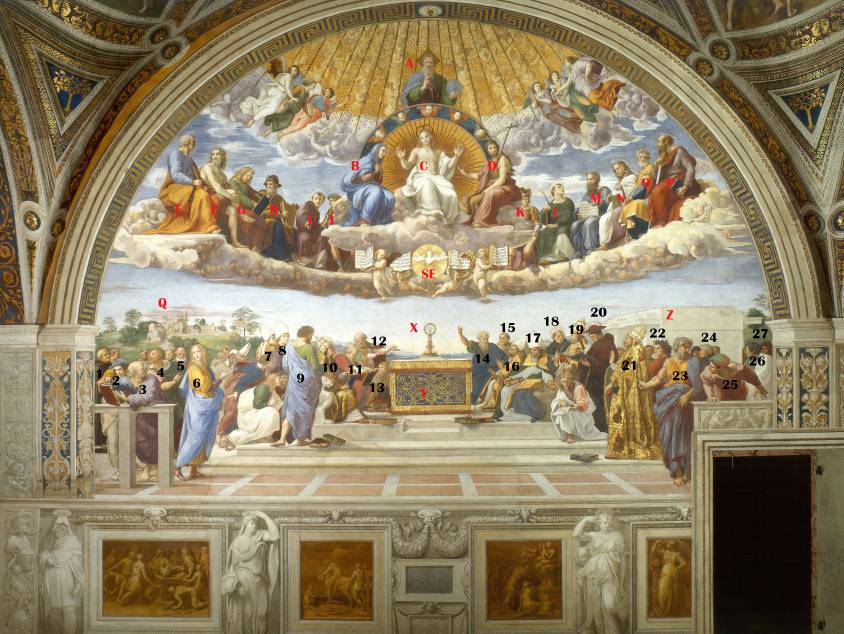
*In the upper (celestial) register :
A. God the Father, B. Jesus Christ, C. Mary, D. St. John the Baptist, E. Apostle Peter, F. Adam, G. St. John the Evangelist, H. King David, I. St. Lawrence, J. Judas Maccabaeus, K. St. Stephen, L. St. Stephen, M. Moses, N. James the Greater, O. Abraham, P. St. Paul, SE. Holy Spirit.
*In the lower (earthly) register:
1. Fra Angelico, 2. ?, 3. Donato Bramente, 4. ?, 5. ?, 6. Pico della Mirandola, 7. ?, 8. ?, 9. ?, 10. Saint Gregory, 11. Saint Jerome, 12. ?, 13. ?, 14. ?, 15. ?, 16. Saint Ambrose, 17. Saint Augustine, 18. Saint Thomas of Aquinas, 19. pope Innocent III, 20. Saint Bonaventure, 21. pope Sixtus IV, 22. Dante Alighieri, 23. ?, 24. ?; 25. a mason, 26. ?, 27. ?
Historians tell us that it was the first fresco to be made. The core subject here is the Trinity and « transubstantiation », a supernatural phenomenon signifying the conversion of one substance into another, in the case of Christians, the conversion of bread and wine into the body and blood of Christ in the Eucharist under the action of the Holy Spirit. This meant a « real presence » of God at mass and thus a major attraction to attract the faithful and a precondition to obtain « indulgences » from him. For some humanists, such as the Swiss Protestant Ulrich Zwingli (1484-1531), any doctrine of the real presence is idolatry because it would be tantamount to worshiping bread and wine as if it were God.
Erasmus, for whom the performance of rituals should never be a substitute for true faith, explains that when Christ said to his disciples, in offering them bread, « this is my body » and « this is my blood, » in offering them wine, he was in reality talking metaphorically, not of bread and wine, but of his disciples (his body) and his teaching (his blood).
The idea of the composition is to show the triumph of the unity of the Church in Christ in all its complexities and diversities. The scene takes place on two levels, one celestial and the other terrestrial, lining up, as in a theater, a vast variety of actors presenting themselves to the public.
Above, in the celestial register, the heart of the subject, « the Trinity » with God the Father (A) blessing enthroned above a Christ (C) surrounded by Mary (B) (the New Testament) on his right and St. John the Baptist (D) (the Old Testament) on his left, themselves appearing above a dove symbolizing the Holy Spirit (SE).
Around them, to match the architecture of the School of Athens opposite, sit peacefully on a semi-circular cloud bench, the remarkable figures of the Church Triumphant, accompanied by their traditional attributes and dressed in colorful garments specific to each.
At the ends of the semicircle, two apostles: the Apostle Peter (E), representing the Jews, and the Apostle Paul (P), representing the Gentiles, face each other, as if they were the outer guards of the triumphant Church, the custodians of both the key and the letter of it. The Old Testament is represented by Adam (F) facing Abraham (O), and Moses (M) facing King David (H) with his harp in hand. The New Testament is also represented by St. John (G) facing St. Matthew (N) (two authors of the Gospel), by St. Lawrence (I) and St. Stephen (L) (both martyred saints).
At the bottom, in the terrestrial register, there is an enormous altar (Y) on which is written (in the middle) « IV LI VS » (Julius). A golden monstrance (X) with a host in its center proclaims the presence of Christ in the mystery of transubstantiation. Next to it, the Doctors of the Church of the early days of Christianity: on the left (under the features of Julius II) St. Gregory (No. 10), the great reformer of the ritual and the chant of the Mass, next to St. Jerome (No. 11), the most profound scholar of Christianity), accompanied by his lion. On his right Saint Augustine (N° 17) and Saint Ambrose (N° 16). These four doctors are, unlike the other figures, seated, which already brings them closer to the figures in the heavens; we can also distinguish two later doctors who are St. Thomas Aquinas (No. 18), a Dominican; and St. Bonaventure (No. 20), a Franciscan.
The historian Konrad Oberhuber, adds that these last two,
embody two tendencies of the Church: one that sees its essence of Christianity in ritual and devout adoration (the dimension of feeling), the other that defends the importance of theology (the dimension of thought).
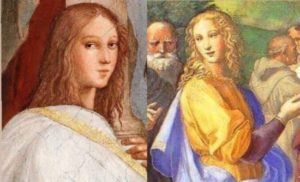
Then, Popes Innocent III (1160-1216) (N° 19), the most powerful pope of the Middle Ages who established the political independence of Rome) and Sixtus IV (1414-1471) (N° 21, Francesco della Rovere by name) rub shoulders with religious figures such as the Dominican Savonarola (instigator in 1494 in Florence of a political revolution (return to the Republic) and moral revolution (rechristianization) or, the painter Fra Angelico (N° 1), contemporary of Savonarola, admired for his frescoes and his sublime paintings, accompanied by Dante Alighieri (N° 20), whose Divine Comedy (with hell, purgatory and paradise) had an influence on theology in the Middle Ages, Donato Bramante (N° 3), the famous architect of St. Peter’s Basilica, not forgetting Pico della Mirandola (N° 6), (mistaken for Francesco Maria della Rovere) who, with his hair blowing in the wind, is pointing towards the Trinity in a light and graceful wiggle. On the right, masons (N° 22), who build churches, bend forward. If on the right, behind the figures, the white marble foundations (Z), allude to the new St. Peter’s Basilica whose reconstruction Julius II has just launched, on the left, a village church (Q) reminds us that Christianity must penetrate the daily life of the humble.
C. PHILOSOPHY
(“SCHOOL OF ATHENS”)
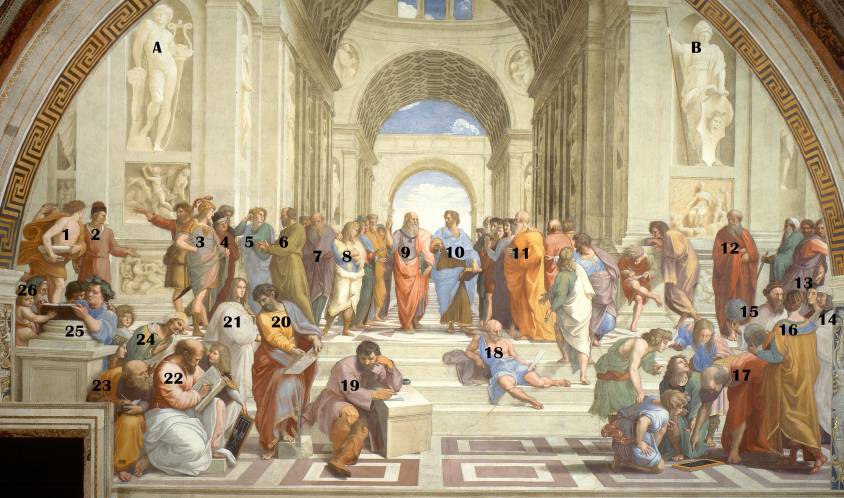
A. Apollo, B. Pallas Athena
Philosophy (« School of Athens »).
1. Porphyry, 2. Plotinus, 3. Alcibiades, 4. Crito, 5. Phaedo of Elis, 6. Socrates, 7. Isocrates, 8. Parmenides,
9. Plato, 10. Aristotle, 11. ?; 12. ?, 13. Apelles of Cos (Raphael), 14. Protogenes (Sodoma), 15. Strabo,
16. Ptolemy, 17. Hippocrates of Chios, 18. Diogenes of Sinope, 19. Heraclitus of Ephesus, 20. Anaximander of Milèt, 21. Pico della Mirandola, 22. Pythagoras, 23. Boethius, 24. Avicenna, 25. Epicurus, 26. Metrodorus.
A beautiful central view perspective shows a get together of 58 Greek and other thinkers in an ideal temple. No chiaroscuro effect disturbs the balance of the colors and the clarity of the composition.
The American thinker Lyndon LaRouche (1922-2019), during his visit to the Vatican, marveled at the graceful harmony that radiates from this work. It could not help but resonate with a concept LaRouche developed throughout his life: that of the « simultaneity of eternity »; the poetic idea that « immortal » ideas continue their dialogue in a place beyond material time and space.
According to historians, Raphael, faced with the Herculean task of creating this series of portraits, and lacking reliable visual data about the figures to be portrayed, sent one of his assistants to Greece to collect indications and provide him with documentation to meet the challenge.
Small detail: the event doesn’t take place in Athens or Greece, but in Rome. The architecture is clearly inspired by the church of Sant’Andrea of Mantua, renovated shortly before his death by Leon Battista Alberti (1404-1472) and by Bramante‘s plans for the reconstruction of St. Peter’s Basilica in Rome. It is Rome set to become the new Athens.

Although the steps can be found in the preparatory drawings, the large arches with their coffered vaults, typical of the dome of the Roman Pantheon, do not appear. Another probable source of inspiration is the arches, also with coffered vaults, the Basilica of Maxentius and Constantine, built in Rome at the beginning of the 4th century to reaffirm the power of the beauty of the Eternal City.
It is not excluded that Bramante himself, who had made a tromp-l’oeil using this type of pattern in the apse of the church of Santa Maria presso San Satiro in Milan, designed them in person. With three arches (tetrad) and seven rows of caissons, Pythagorean numerology is never far away.
Visually, the ensemble is divided in two. The audience is on the same level as the foreground, a paved parterre behind which a very wide staircase leads to a raised forecourt. For the viewer, a slightly cavalier perspective reinforces the monumental dimension of the figures on the upper level. This setting is inevitably reminiscent of a theater stage.
The actors, arriving from the old world, can enter the stage on one side, under the statue of the Greek god Apollo (A), god of light, and leave on the other, towards the new world, under the statue of Pallas Athena (B), which became Minerva in Roman times, protector of the Arts, to exchange ideas with each other, address the audience or climb the stairs and leave through the back.
In the center of the square and in the center of a perspective with a central point of view, Plato (N° 9) and Aristotle (N° 10) don’t confront each other but move forward, side by side, towards the viewers (and the Triumphant Church on the opposing wall).
The first one, with the Timaeus in his hand, points a finger towards the sky, meaning that beyond the visible, a higher principle exists. The second one extends his arm and his hand horizontally underlining that all truth comes to us from the testimony of the senses, while carrying the Ethics with the other arm.
Strangely, these are the only two books in the stanza whose names appear in Italian (Timeo, Etica) and not in Latin. As the art critic Eugenio Battisti (1924-1989) observed:
If we (…) examine the titles of the works respectively held by Plato and Aristotle, we see the philosopher of the Academy holding the Timaeus, that is to say the most Aristotelian and the most systematic of his works and the Stagirite, the Nicomachean Ethics, that is to say the most Platonic of his works.

The colors of the clothes of the two philosophers symbolize the four elements: Plato is dressed in red (fire) and purple (ether); Aristotle in blue (water) and yellow (earth).
If the whole fresco cuts the world in two between Platonists and Aristotelians, both walk together towards what is in front of them and behind the spectator who looks: towards the fresco of Theology with the Trinity in the center without forgetting the monstrance and the imposing altar on which is marked « JV-LI-VS PON TI CUS ». How generous of the Church to welcome so many pagans into its midst!

Raphael however communicates a great sense of movement. In the same way that the Dutch painter Rembrandt, in his 17th century masterpiece The Company of Captain Frans Banning Cocq, known as The Night Watch, broke with the formal representations of the dignitaries of the city guilds, Raphael here drew a line under the frozen and static representations of the series of « great men » often decorating the palaces and libraries of the great princes and lords in the style of his master Perugino.
His fresco, like Leonardo’s Last Supper in Milan, is organized as a sequence of small groups of three or four people conversing with a great thinker or each other, never out of sync with what is happening around them. In this sense, Raphael translated into images, and thus made accessible to the eyes of the spectators, that harmonic unity transcending the multiple so sought after by the commissioners.
Raphael and Inghirami did not hesitate to use portraits of people living in their time to represent historical figures. In addition to themselves, there are their patrons, colleagues and other personalities whom they hoped to please or charm.
In the foreground, four groups are shown.

On the left, Epicurus (N° 25), here with the features of Inghirami writing the setting of the play. Born in Samos like Pythagoras, he wears here, not a crown of laurels, reward given to great orators, but a crown of oak leaves, symbols that we find in the coat of arms of pope Julius II.
Some historians believe that Inghirami was a Dionysian follower of Orphism, another pre-Socratic current. Dionysus is indeed the brother of Apollo and according to some, their teachings are one and the same.
As mentioned above, shortly after Raphael’s death (1520), Cardinal Jacopo Sadoleto published a treatise in which Inghirami defends rhetoric and denies any value of philosophy, his main argument being that everything written is already in the mystical and mythological texts of Orpheus and his followers.
In Rome, the scholars of the time knew Epicurus mainly through their readings of Cicero for whom Epicurus was not a debauchee but someone who sought the noblest pleasure. Cicero had a friendship with an Epicurean philosopher, a certain Phaedrus, as it happens the nickname of Inghirami…
Finally, on the extreme left, there is an old bearded man, the Greek thinker Metrodorus (N° 26), disciple of Anaxagoras and for whom it is « the acting spirit » that organized the World. In front of him, a newborn baby. Together they could symbolize the birth of truth (the child) and wisdom (the old man) and experience.
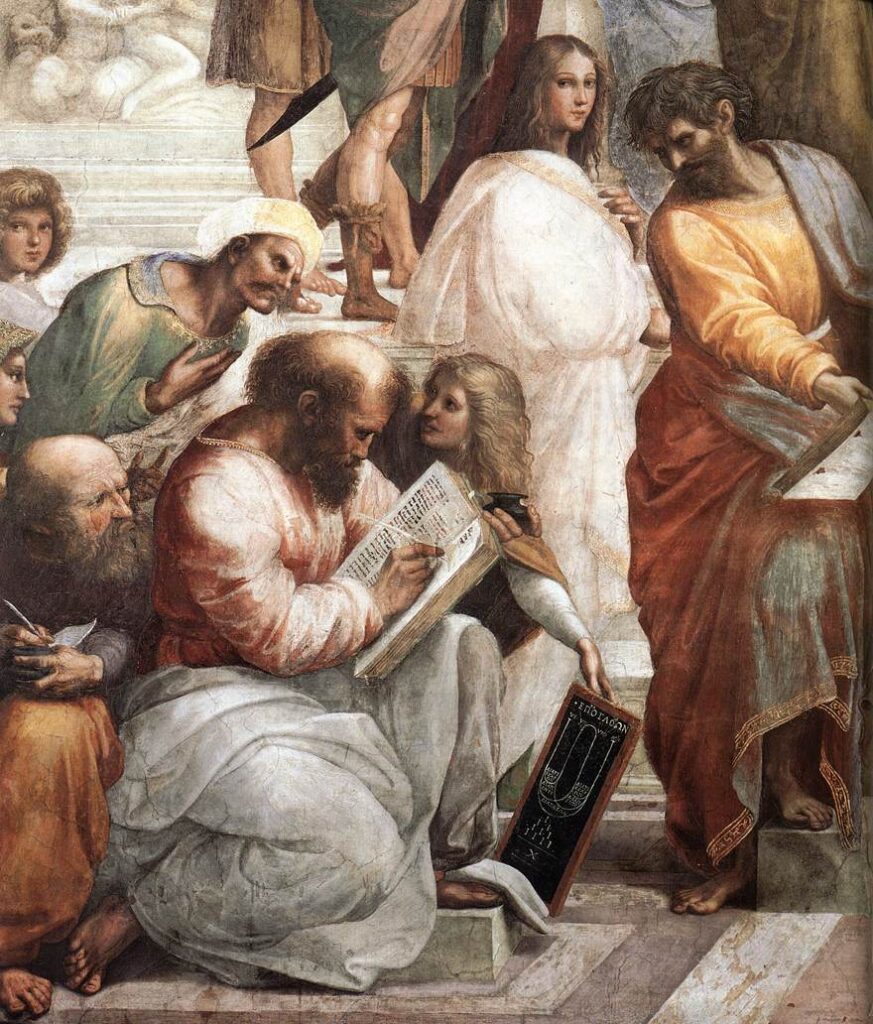
Next to him, a little more in the center, the imposing figure of Pythagoras (N° 22) (whom the Italian historian Georgio Vasari mistook for the evangelist Saint Matthew), seated with a book, an inkwell and a pencil, writing surrounded by visibly intrigued people. Behind him, seated on the left, an old man, representing Boethius (N° 23), Roman author, in the sixth century, of a treatise on music, the first part of which evokes « the harmony of the spheres », tries to look at what he is writing in his book. Without capturing a moment of potential transformation, as Leonardo knew how to do, the scene is obviously inspired by his unfinished painting, the Adoration of the Magi.
At his feet, a black slate with the famous Tetraktys and a diagram of musical intervals (see our section in this article on Pythagoras).
Since it is totally unthinkable that it is Averroes (banned from the Church, as said, by Aquinas), the turbaned man who seems to admire him could be Avicenna (Ibn Sina) (N° 24). This Persian physician, influenced by the thought of both Hippocrates and Galen, in his Qanûn (of Medecine), operates a vast medico-philosophical synthesis of Aristotle‘s logic (which he corrects) and neo-Platonism, compatible with monotheism.
It could also be Al Fârâbi (872-950), another Arab scientist and musician who sought to reconcile faith, reason and science with the philosophy of Plato and Aristotle, whose translations from Greek into Arabic he had made. Avicenna admired him and the title of one of Al Fârâbî’s works leaves no ambiguity: The Harmony of the Opinions of the Two Sages: Plato the Divine and Aristotle.
Moreover, given his position on the side of the Platonists, although he wears a white turban, it is totally excluded that he is Averroes (Ibn Rushd), an author struck down by Aquinas (see the paintings showing The Triumph of Saint Thomas) and then by the Neoplatonists of Florence for having denied the immortality of the individual soul.
More in the center of the fresco, two isolated figures immersed in their thoughts. The first, on the left, appears to have been added later by Raphael and is not in his drawing. The man is dozing on a cube, a Pythagorean volume par excellence. It is thought to be Heraclitus of Ephesus (No. 19) (an Ionian pre-Socratic for whom « there is nothing permanent but change ») with the features of Michelangelo. This sculptor fascinated Raphael, not only for his gifts in drawing, anatomy and architecture, but also for his spirit of independence from a pope he considered tyrannical.
It should be noted that the Moses that Michelangelo sculpted for the tomb of Julius II is said to be looking at him with anger because the artist captured the moment when Moses, coming down from Mount Sinai with the Tables of the Law, noticed that the Hebrew people had returned to worshiping idols, such as « the Golden Calf ». Irritated by this return to idolatry, Moses broke the Tables of the Law.

One detail raises questions: Anaximander of Miletus places his right foot on a cubic block of marble whose volume seems to be eight times smaller than the one on which Heraclitus of Ephesus rests. However, to solve the problem of Delos (the duplication of the volume of the cube) it is necessary to wait for the Pythagorean and friend of Plato, Archytas of Taranto.
Anaximander of Miletus (N° 20) (and not Parmenides), also a representative of the Ionian school, stands behind Heraclitus and seems to contest the demonstration of Pythagoras (representative of the so-called « Italian » school). Behind him, a young man with long hair, looks at the spectator. Dressed in a white toga, an attribute of the Pythagoreans, he is once again Pico della Mirandola (N° 21), triumphant and surrounded by Pythagoras and two of his disciples. Legend has it that Raphael portrayed Hypatia of Alexandria (c. 370-415), a mathematician who headed the Neoplatonist school in Alexandria. When one of the cardinals examined the painting and knew that the woman depicted was Hypatia, he is said to have ordered that she be removed from it. Raphael is said to have obeyed, but replaced her with the effeminate figure of a nephew of Pope Julius II, Francesco Maria Della Rovere, future Duke of Urbino…
If this is really Pico della Mirandola, it would be a superb piece of praise, for appearing in both Philosophy and Theology, the two images of Pico, reminiscent of the kneeling angel looking at the viewer while pointing at St. John the Baptist in Leonardo’s Madonna of the Rocks, can contemplate each other!
The second isolated figure, nonchalantly spread out on the stairs, is the cynical and hedonistic philosopher Diogenes of Sinope (N° 18), here presented as an ascetic, but in the Aristotelian tradition.
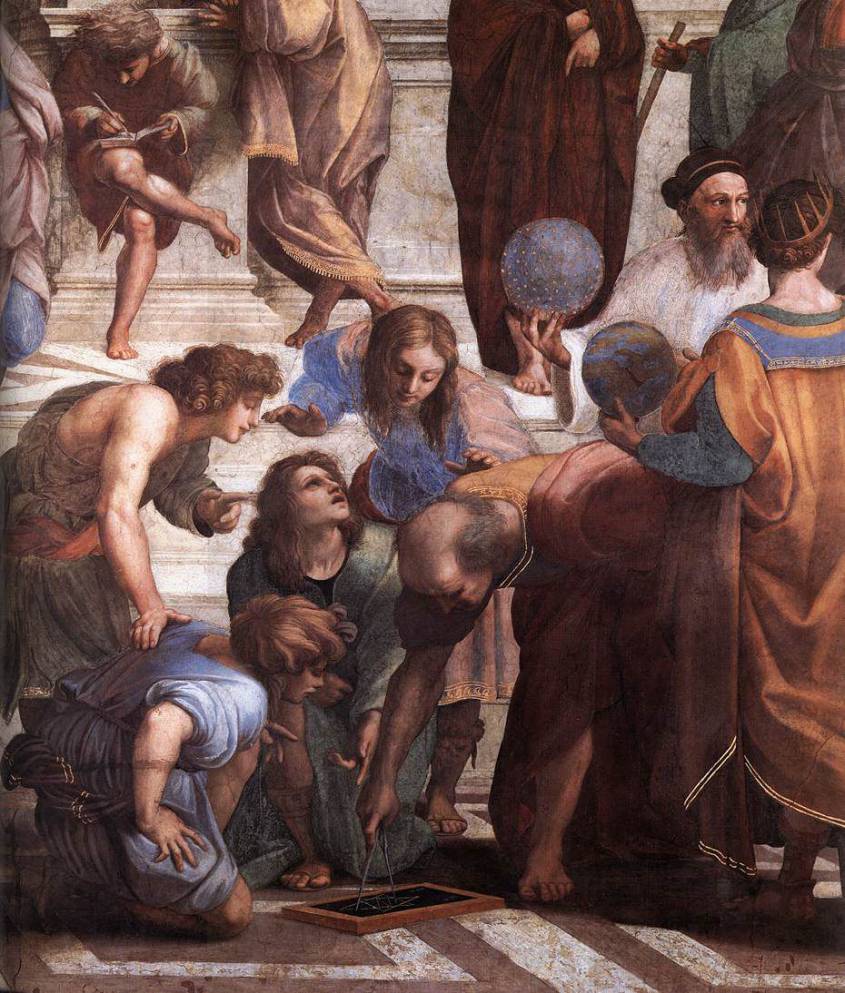
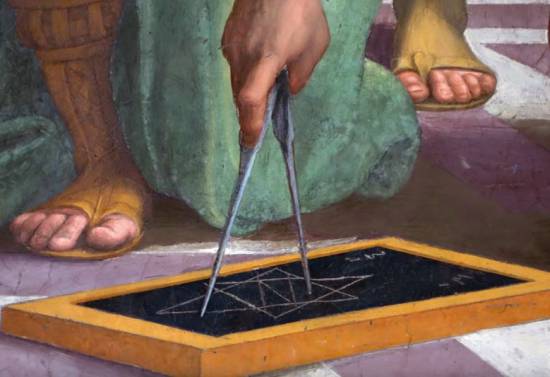
Then, in the center right, an inspiring group of young people, amazed by their discoveries and exchanging their complicit glances with their comrades, around a surveyor who is examining or drawing with a compass parallel lines inside a hexagonal star on a slate laid on the ground.
This is an illustration of a theorem that neither Euclid (an Aristotelian) nor Archimedes mentioned, although the identity of one or the other is attributed to this figure in the guise of the architect Donato Bramante.
It could be, it is my conviction, the geometer Hippocrates of Chios (N° 17) of which Aristotle speaks in great good. He wrote the first mathematics textbook, entitled The Elements of Geometry. This work precedes Euclid’s Elements by a century. Unless we are talking about the architect Leon Battista Alberti, whose church in Mantua may have inspired Bramante and after all, author, in 1435, of De Pictura, a treatise (of Aristotelian spirit) on perspective.
However, in 1485, in his treatise on architecture De re Aedificatoria, Alberti, in a passage (IX, 5) that may have been of interest to the author of the fresco, stressed that:
“Beauty consists in a harmony and in an agreement of the parts with the whole, in accordance with determinations of number, proportionality and order such as the harmony requires it, that is to say the absolute and sovereign law of the nature.”
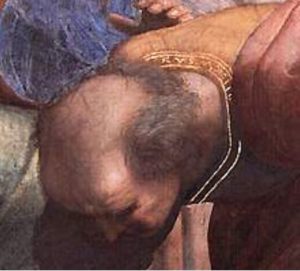
Finally, to add to the mystery, on the collar of the tunic of this figure can be read: « R.V.S.M. » (Raphael Vrbinas Sua Manu), meaning « By the Hand of Raphael of Urbino »).
For what the surveyor is addressing on the slate is the role played by the diagonals of the hexagon. The answer is provided by the geometrical composition, in the form of a hexagon, which underlies the entire construction of the perspective of the fresco.
The diagonals show a beautiful complementarity between the arithmetic mean and the harmonic mean (see authors diagram below).
It is a masterly demonstration in the field of the visible, of the concept structuring the whole theme of the work: complementarity, the foundation of universal harmony.
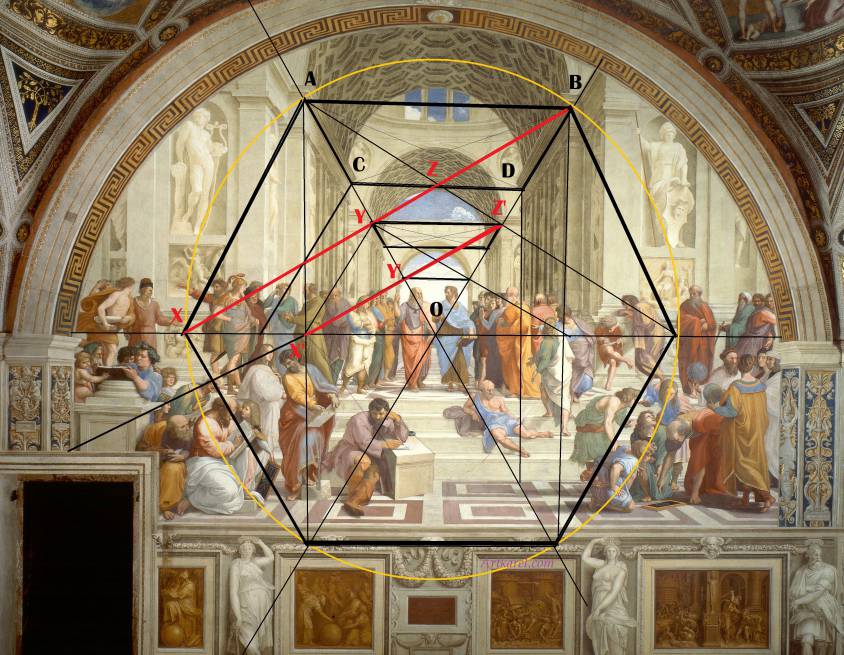
Credit: Karel Vereycken
On the right, the geographers Ptolemy (No. 16) and Strabo (No. 15) (in the guise of Baldassare Castiglione, the head of the Pope’s army and a friend of Raphael’s?), who is identified without real evidence with Zoroaster but to whom Pico della Mirandola indeed refers, stand face to face. The first shows the Earth as a sphere, the second a globe of the Heavens.
Finally, on the far right of the first register, with the features of Raphael, the legendary painter of the court of Alexander the Great, Apelles of Cos (N° 13). It should be remembered that, during his lifetime, Raphael was nicknamed « the Apelles of his time ». Next to him, his rival, the Greek painter Protogenes (N° 14) in the guise of Raphael’s colleague, the sulfurous but virtuoso fresco artist Sodoma. Coming from the world of the craftsmen, it is a question here of marking the entry of two painters-decorators into « the court of the big guys » and making their first steps in the world of philosophy.
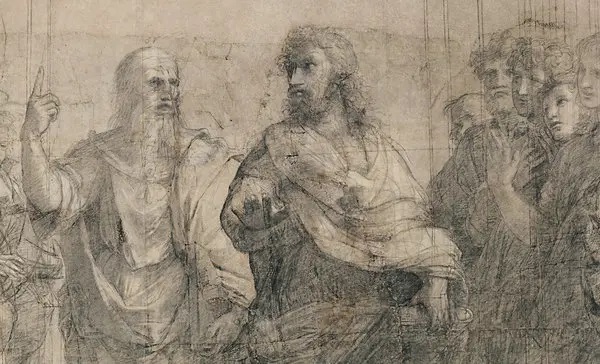
On the steps, the central subject, as we have said, Plato and Aristotle. Plato‘s features in the fresco have nothing to do with any supposed portrait by Leonardo da Vinci. Leonardo was born in 1452 and was only 56 years old when the fresco was painted. Raphael is said to have used the image of a bust of Plato discovered in Athens in the ruins of the ancient academy. In reality, the famous drawing of an old man (Turin), supposed to be a self-portrait of Leonardo and resembling the image of Plato in the School of Athens, has been proven to date from the 19th Century.
In the crowd to the left of Plato is Socrates (no. 6), his teacher, whose face was known to everyone from Roman statues. The identification of the other figures remains largely hypothetical. One thinks of the speakers of Plato‘s dialogues. Close to Socrates, his old friend Crito (N° 4). Behind Socrates, the Athenian intellectual Isocrates (N° 7) who had withdrawn from political life and although close to Socrates, set himself up as Plato‘s rival. Close to the latter, the five interlocutors of Plato‘s dialogue, Parmenides. Among them, Parmenides (N° 8), considered at the origin of the concept of the One and the multiple, and the pre-Socratic thinker Zeno of Elaea, known for his philosophical paradoxes.
The Athenian general (here dressed as a Roman soldier) Alcibiades (N° 3) and the young man in blue could be Phaedo of Elis (N° 5) or Xenophon, both listening to Socrates counting on his fingers, a gesture suggesting his famous dialectic.
All around the Greek thinkers, other figures are stirring. Behind general Alcibiades, a figure (perhaps a librarian) holds back another running figure, begging him not to disturb the ongoing exchanges between philosophers and scientists.
At the far left, a man with a hat enters the stage. It could be Plotinus (N° 2), a founding figure of Neoplatonism admired by cardinal Bessarion, accompanied by Porphyry (N° 1), another Neoplatonist who brought his biography of Pythagoras as a messenger from the ancient world.
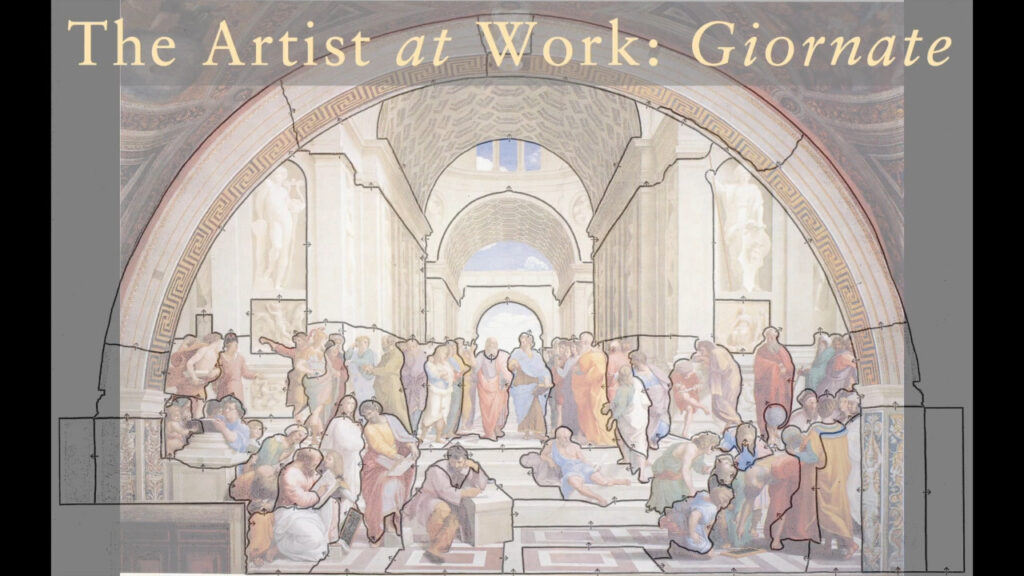
Here the giornata of the School of Athens.
D. JUSTICE
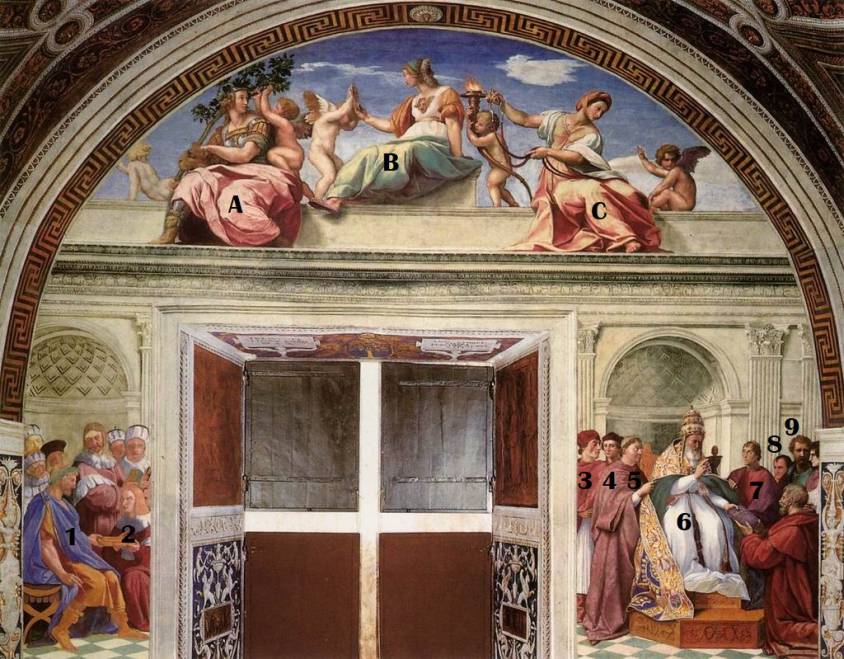
A. Fortitude, B. Prudence and C. Temperance.
1. Justinian, 2. Tribonian, 3. pope Paul III, 4. Antonio Del Monte,
5. pope Leo X, 6. pope Gregory IX (Julius II), 7. pope Clement VII.
On top, in the lunette (half moon), the three virtues represented would be Fortitude (A), Prudence (B) and Temperance (C). Together with Justice, they constitute the four cardinal (profane) virtues. The central female figure, holding a mirror, refers to Prudence. On the left, Fortitude holds an oak branch, an allusion to the della Rovere family from which Julius II, the pope who commissioned the frescoes, descended.
Below, once again, complementarity is at work. On the left, painted by Lorenzo Lotto, the Roman emperor Justinian I (N° 1) receives the Pandects (the civil law) from the Byzantine jurist Tribonian (N° 2).
On the right, in the guise of Julius II, Pope Gregory IX (N° 6) promulgates the Decretals; a masterly sum of canon law which he had ordered to be compiled and published in 1234.
On his right (thus on the left of the spectator), one sees a cardinal, in purple dress, having the features of the cardinal Jean de Médicis, future pope Leo X (N° 5). The two other cardinals behind him would be Alessandro Farnese, the future pope Paul III (N° 3), and Antonio Del Monte (N° 4). And to his left (right for the viewer) a cardinal representing Cardinal Julius de Medici, the future Pope Clement VII (N° 7). With your image immortalized on a fresco in the right place, your career to become pope would seem to be better engaged!
The fact that Julius II is represented wearing a beard allows to date the fresco beyond June 1511. Indeed, the pontiff, who left Rome beardless to wage war, then let his beard grow and vowed not to shave it off until he had liberated Italy. He returned to Rome in June. Historians point out that the prominence of the pope’s portrait indicates how the theme of the decoration of the Chambers was transformed, around 1511, into that of the glorification of the papacy. Hence, in this way “Justice” becomes the right of Julius II to impose « his » justice.
E. POETRY
(« PARNASSUS”)

The poets:
1. Alcaeus of Mytilene, 2. Corinna, 3. Petrarch, 4. Anacreon, 5. Sappho, 6. Ennius, 7. Dante, 8. Homer, 9. Virgil, 10. Statius (Poliziano), 11. Apollo, 12. Tebaldeo, 13. Boccaccio, 14. Tibullus, 15. Ariosto,
16. Propertius, 17. Ovid, 18. Sannazaro, 19. Pindar.
The nine muses:
A. Thalia, B. Clio, C. Euterpe, D. Calliope, E. Polyhymnia, F. Melpomene, G. Terpsichore, H. Urania. I. Erato.
A window reduces the space available for the fresco to a large lunette where the characters are divided into small groups on a semi-circular line.
The underlying idea here, taken from St. Thomas, is that truth is made accessible to man, either by Revelation (Theology) or by Reason (Philosophy). For the Neoplatonic school, this truth manifests itself to our senses through Beauty (poetry and music).
The scene painted here takes place near Delphi, at the top of Parnassus, the sacred mountain of Apollo and home of the Muses of Greek mythology.
The large window around which the fresco is organized offers a view, beyond the cortile (small circular temple) of Bramante, on the hill of Belvedere (Mons Vaticanus), where shows were given and where, in ancient times, Apollo was honored, which earned him the name of Apolinis.
Apollo is the patron of musicians: « It is through the Muses and the archer Apollo that there are singers and citharists », says Hesiod. He even inspires nature: when he passes by, « the nightingales, swallows and cicadas sing ». His music soothes the wild animals and moves the stones. For the Greeks, music and dance are not only entertainments: they allow to heal men by tuning the discords that eat away at their souls and thus to bear the misery of their condition.
At the top of the hill, seven laurels. Near the Castalia spring, Apollo (N° 11), crowned with laurel leaves and in the center of the composition, is tuning around him the nine muses (A to I) playing on his lyre.
On the left side Calliope (D), the one « who has a beautiful voice » and represents the epic poetry, and on the right, Erato (I), « the lovable one » who represents the lyric and erotic poetry as well as the nuptial song. Each presides over the tuning of the other’s chorus: on the left, behind Calliope, Thalia (A) (« the flourishing, the abundant »), Clio (B) (« who is famous » and represents history) and Euterpe (C) (« the joyful » who represents music). Finally, just behind Erato, Polyhymnia (E) (« the one who says many hymns » and represents rhetoric, eloquence and pantomime), Melpomene (F) (« the singer » who represents tragedy and song); Terpsichore (G) (« the charming dancer ») and Urania (H) (« the celestial one » who represents astronomy).
And you don’t have to be Pythagoras to count 7 laurels on the mountain and remember that nine muses plus Apollo make… ten.
As one of the square frescoes on the ceiling reminds us, Apollo had triumphed over Marsyas in a fight to seize the lyre, considered as the divine instrument capable of leading souls to heaven, better than the flute which only excites the lower passions. By detaching the man from his immediate material concerns, the victorious lyre allowed to arouse the divine love in men. In addition, the Romans knew of a seven-stringed lyre, a Pythagorean legacy, the number seven referring to the seven heavenly bodies orbiting the central fire.
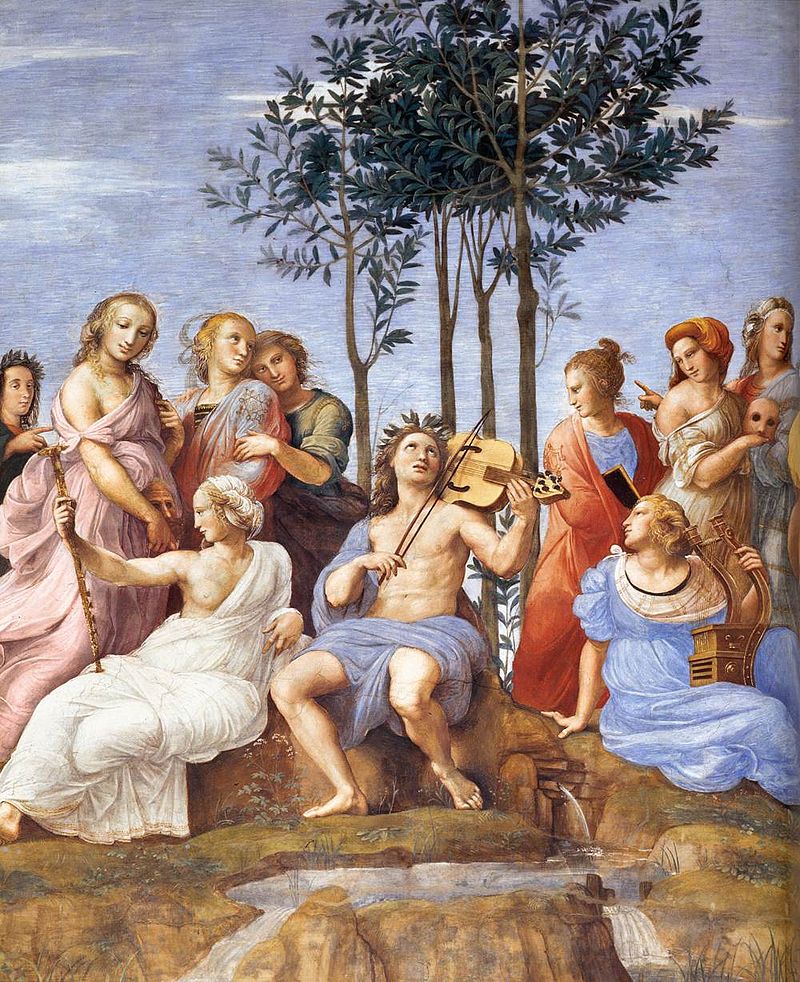
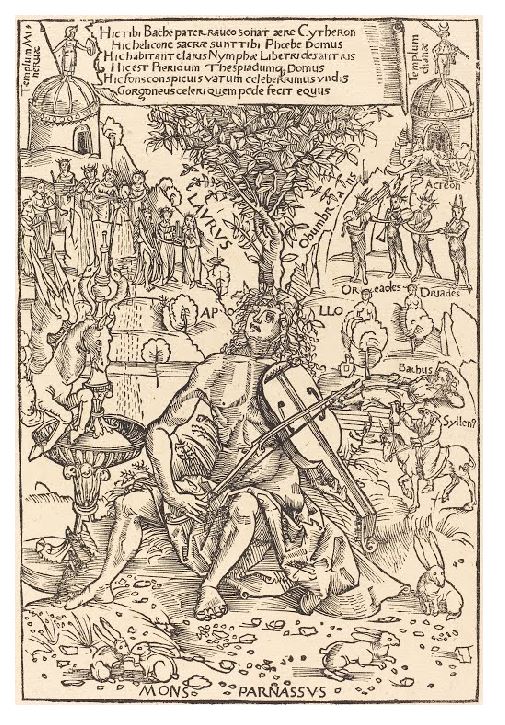
However, strangely enough, Apollo is not holding a traditional four-stringed lyre, but a lira da braccio. If Apollo plays here the lyre with arms, the muses Calliope, Erato and the sibyl Sappho hold lyres identical to those of the sarcophagus known as « of the Muses » of the Museo delle Terme in Rome.
In many representations of the 16th century, the lyre is played by a group of angels or mythological characters, such as Orpheus and Apollo, but also King David, Homer or the Muses. Among its interpreters, we can count Leonardo da Vinci. The instrument is essentially designed like a violin, but with a wider fingerboard and a flat bridge that allows for chordal playing. The lyre generally has seven strings: four like a violin, augmented by an additional low string (making five), and two strings beyond the fingerboard, which are not played but serve as a drone and resonate in the octave. Now, Raphael, in order to create a perfect harmony with the number of muses around Apollo, will increase the number of strings from seven to nine, that is to say seven adjustable plus two drones. This detail concerning the lyre seems to have been modified in time. Indeed, an engraved reproduction, from 1517, probably from drawings prior to the fresco, or from its preliminary project, by Marcantonio Raimondi, reveals a state quite different from what we see today.

The composition is less dense and highlights, like the School of Athens, several groups of three figures each. What is striking at first is that the ancient lyre played by Apollo with his fingers rests on his thigh, while in the present version, Apollo vibrates the strings of his lira da braccio with a bow, while looking up to the sky, in accordance with the fresco on the ceiling where are inscribed the words of Virgil: « Inspired by the spirit » (NVMINE AFFLATVR).
All around, eighteen poets are divided into several groups. The identification of some is unequivocal, that of others more doubtful. They are all chained to each other by gestures and looks, forming a kind of continuous crescent.
At the top left, the father of Latin poetry Ennius (N° 6), seated, listens raptly to the song of Homer (N° 8), while Dante (N° 7), further back, looks at Virgil (N° 9) who turns towards him, the Roman poet Statius (N° 10), in the guise of Poliziano, at his side. The latter was a disciple of the florentine Neoplatonist Marsilio Ficino. To represent the historical figures, Raphael drew inspiration from Roman statuary. For the face of Homer, for example, he adopted the dramatic expression of the Laocoon, which he had found in Rome in 1506.
At the bottom left are the Greek poet Alcaeus of Mytilene (N°1), the Greek poetess Corinna (N° 2), Petrarch (N° 3) as well as the Greek poet Anacréon (N° 4). In the final version, two characters who leave the frame came to enrich the composition. On the left, the sibyl Sappho (N° 5) as indicated by a tablet. Considered the first poetess of ancient Greece, she lived in the seventh and sixth centuries BC. According to the Homeric Hymns, it is her who would have built the first lyre to accompany the poetic recitation. The only woman in entire fresco is painted with a monumentality that is reminiscent of Michelangelo in the Sistine Chapel.
Sappho is the counterpart of Pindar (N° 19), and not Horace as is claimed, considered one of the greatest lyric poets of Greece and for whom Apollo was the symbol of civilization. Pindar is here in conversation with the Italian poet Jacopo Sannazaro (N° 18), dressed in blue and standing, and above them Ovid (N° 17).
On the right, on the side of the mount, besides Pindar, Sannazaro and Ovid, five other poets and orators : Antonio Tebaldeo (N° 12), with his back turned towards Apollo and under the features of Baldassare Castiglione ? ), Boccaccio (N° 13), behind, Tibullus (N° 14), Ariosto (N° 15), Propertius (N° 16), under the features of the cardinal poet very « Petrarquist » Pietro Bembo, a friend of Inghirami and enemy of Erasmus, and at his sides two unknown poets said « poets of the future judging the past ».
The identification of these characters remains largely hypothetical and controversial. To arrive at satisfactory results, it would be necessary according to the historian Albert Chastel, to find precise correspondences between the nine muses, nine classic poets and nine modern, in addition to the grouping by poetic genre.
After the death of Julius II, Pope Leo X made the Stanza della signatura his music room, replacing the books of his predecessor (which were moved to the large library on the lower floor) with intarsiae. Leo X will also have the pavement completed.
F. THE MOSAIC ON THE FLOOR
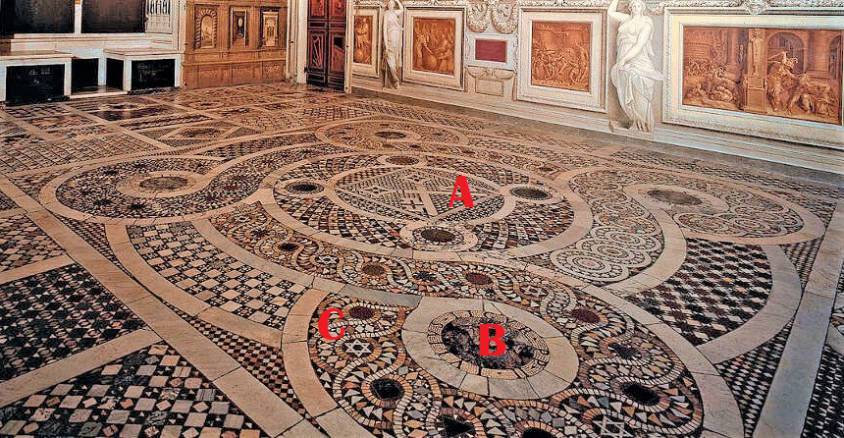
A. Coat of arms of the pope, B. Spiral arm, C. Star of David, reference to the Jewish heritage.
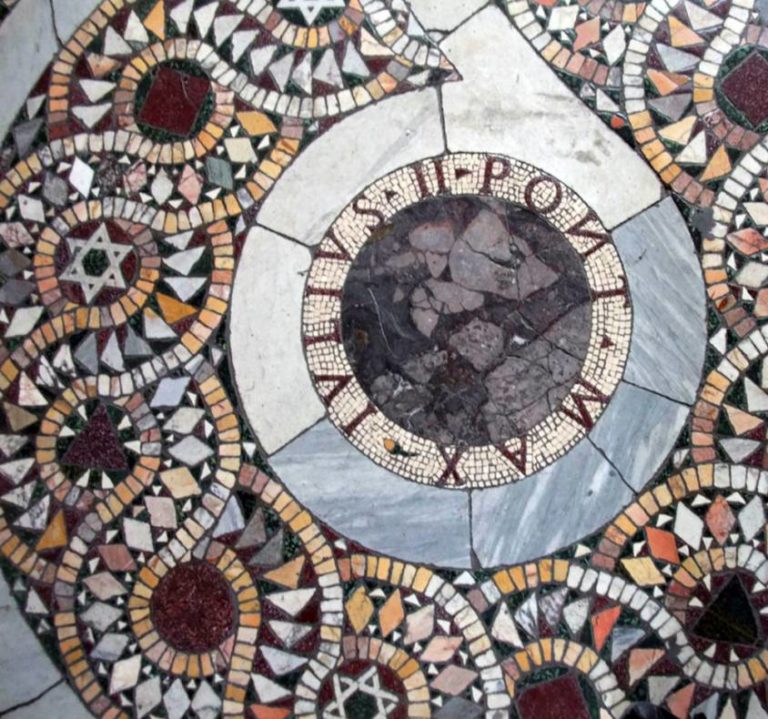
The mosaic decorating the floor is said to be « cosmatesque », after the name of Cosmati, an old family of craftsmen and specialized in mosaics with four colors. Some materials come from Roman ruins, the green marble of the Peloponnese in Greece, the porphyry of Aswan in Egypt, and the yellow marble of North Africa. The white marble comes from the famous marble quarries of Carrara where Michelangelo chose his materials.
As on the ceiling, in the center of the room the coat of arms of the pope (A), this time inside a square (his earthly reign) inscribed in a circle (his theological mission). This first circle is surrounded by four spiral arms, each of which creates a new circular motif (B). This pattern is believed to be of Jewish origin. The Star of David (C) appears several times in this creation vortex. The doctrine of the four worlds, described in cabalistic cosmology, underlines their dynamic unity.
After all, for Giles de Viterbe, the recent discovery of Jewish mystical writings was of the same importance as the discovery of America by Christopher Columbus. Let us recall that for Julius II, like Plato and Pythagoras, Moses, whom Michelangelo sculpted for his tomb, already announced the later triumph of the Church of Rome which would, under his direction, synthesize them.
Conclusion
Thus, the whole theme of the « Chamber of the Signature » finds its full coherence with the idea of harmony and concordance. But when we look more closely, we see that it is only a question of « complementarity » at the level of forms and in the service of a temporal power disguised as a divine mission. Raphael, a talented painter, submitted to this by providing the product for which he was paid. He would end up painting things increasingly decadent by submitting to the pagan whims of the papal banker Agostino Chigi for the decoration of his villa, the Farnesina.
With the « Chamber of the Signature », we are far from the famous « coincidence of opposites » dear to Pythagoras, Plato, Nicholas of Cues and today Schiller Institute’s President Helga Zepp-LaRouche, which allows, in an uncompromising search for truth and for the love of humanity, to overcome paradoxes and solve a great number of problems from a higher point of view.
By piling up allegories and symbols, if it impresses, this masterly work ends up suffocating us. By the rules of its composition, it can only sink into the theatrical and the didactic. In a universe purged of the slightest irony or surprise, no real metaphor will be able to awaken us. And although Raphael tried to bring some life into it, the spectator is fatally left with a vast sediment of fossilized ideas, as dead as the most glorious ruins of the Roman Empire.
Brief bibliography:
- Julius II, Ivan Cloulas, Fayard, Paris 1990;
- Léon X et son siècle, Gonzague Truc, Grasset, Paris, 1941;
- Une histoire des empires maritimes, Cyrille P. Coutensais, CNRS, 2013;
- L’Humanisme, l’Europe de la Renaissance, André Chastel and Robert Klein, Editions Skira, Geneva, 1995;
- L’Arétin ou l’insolence du plaisir, Bertrand Levergeois, Fayard, Paris, 1999;
- Giorgio Vasari, l’homme des Médicis, Grasset, Paris, 1995;
- Marsile Ficin et l’Art, André Chastel, Droz, Geneva, 1996 ;
- Raphael and the Pope’s librarian, Nathaniel Silver, Ingrid Rowland, Paul Holberton Publishing, 2019;
- Raphael’s Stanza della Signatura, Meaning and Invention, Christiane L. Joost-Gaugier, Cambridge University Press, 2002;
- Pythagoras and Renaissance Europe, Finding Heaven, Christiane L. Joost-Gaugier, Cambridge University Press, 2009;
- Raphael, Stephanie Buck and Peter Hohenstatt, Könemann, 1998;
- The Intellectual Background of the School of Athens: Tracking Divine Wisdom in the Rome of Julius II, Ingrid D. Rowland, 1996;
- Pagans in the Church: The School of Athens in Religious Contex, Timothy Verdon, 1996;
- Raphael’s School of Athens, Marcia Hall, Cambridge University Press, 1997;
- Raphael, Konrad Oberhuber, Editions du Regard, Paris, 1999;
- L’énigme de la Segnatura, Raphael and Sodoma, André-Charles Coppier, Paris, 1928;
- Raphael, John Pope-Hennessy, Harper & Row, London, 1970;
- Who was Raphael, Nello Ponente, Editions Skira, Geneva, 1967:
- Lives and doctrines of the illustrious philosophers, Diogenes Laërtius, La pochothèque, Paris, 1999;
- Erasmus and Italy, Augustin Renaudet, Editions Droz, Paris, 2000 ;
- Erasmus among us, Léon Halkin, Fayard, 1987 ;
- Comment la folie d’Erasme sauva notre civilisation, Karel Vereycken, 2005 ;
- The egg without shadow of Piero della Francesca, Karel Vereycken, 2007;
- Albrecht Dürer against neo-platonic melancholy, Karel Vereycken, 2007.
NOTES:
* For an in-depth treatment of the subject, see Karel Vereycken, Albrecht Dürer against Neo-Platonic Melancholy, 2007.
**We can see here where certain sects, notably Rudolf Steiner’s Anthroposophists, draw their inspiration. Some still insist on demonstrating that Pythagoras, who believed in the transmigration of souls and therefore their possible reincarnation in animals or plants, was a vegetarian. Diogenes Laertius tells us that one day, « passing by someone who was mistreating his dog, it is said that he [Pythagoras, in a joking tone] was moved by compassion and addressed the individual with these words: ‘Stop and do not strike again, for it is the soul of a man who was my friend, and I recognized him by hearing the sound of his voice’ « . A whole series of authors ended up falling into numerology and irrational esoteric mumbo-jubo, in particular Francesco Zorzi, Agrippa of Nettesheim and Paracelsus.
Moderne Devotie en Broeders van het Gemene Leven, bakermat van het humanisme


Ce même texte en français
Op 10 september 2011, gaf Karel Vereycken van het Schiller Institute, de volgende presentatie voor een kleine groep vrienden van de LaRouche Studiegroep Nederland.
Het huidige globale financiële systeem is failliet en zal in elkaar zakken over de komende dagen, weken en maanden, als er niets gedaan wordt om het rotte economische paradigma van vrijhandel, globalisatie en monetarisme te verdelgen.
De weg uit de crisis betekent onmiddellijk brugpensioen voor Obama et de splitsing van banken (Glass-Steagall Act) als hefboom om terug een echt krediet systeem op te bouwen, in tegenstelling tot een geldsysteem. Het gaat erom echte investeringen te bemiddelen in de schepping van fysieke en menselijke rijkdom via grootschalige infrastructuur projecten en de creatie van hooggekwalificeerde en welbetaalde banen.
Kan dat gedaan worden? Ja, dat kan, maar de grootste uitdaging is niet de politieke uitdaging. De echte uitdaging die ons toekomt, is het leggen van de grondvesten van een nieuwe renaissance, een fundamentele wending, weg van het groene en malthusiaanse pessimisme, naar een cultuur die er naar streeft de creatieve vermogens van elke persoon, hier, in Afrika en elders, volledig te doen opbloeien.
Was dat ooit gedaan in verleden? Ja, en vooral vanwaar ik hier spreek, beroerd door een grote emotie. Misschien omdat ik het privilege heb een zeker inzicht te bezitten over de rol van enkele leidende figuren die in de XIVde eeuw Zwolle tot “neuronenversneller” van de Europese cultuur hebben gemaakt.
Vergun me het plezier om hier in het kort de geschiedenis te schetsen van een beweging van lekenbroeders en onderwijzers, de Broeders en Zusters van het Gemene Leven, die in feite de peetvaders zijn van onze geliefde Erasmus van Rotterdam.
Zoals heel dikwijls, begint alles met een persoon die beslist een einde te maken aan zijn eigen tekortkomingen, en daarom oprijst als een natuurlijke leider. Je wilt een leidinggevende persoon worden? Begin met je eigen boel op te kuisen vooraleer je gaat preken bij anderen!
Geert Groote, de stichter

De geestelijke vader van de Broeders is Geert Groote, geboren in 1340 als zoon van een rijke textielhandelaar van Deventer, in die tijd, zoals Zwolle, Kampen en Roermond, een rijke handelsstad van de Hanze liga.
In 1345, na de internationale financiële krach, woekert de pest over heel Europa en bereikt onze gewesten in 1449-50. Meer dan 50 % van de bevolking verliest het leven en Groote, volgens sommige bronnen, verliest beide ouders.
Groote walgde voor de schijnheiligheid van de hordes van flagellanten die door de straten trekken. In plaats van openlijke zelfkastijding meent hij dat innerlijke boetedoening belangrijker is.
Groote heeft aanleg voor studeren en wordt snel naar Parijs gestuurd. Als hij 18 is, geeft men hem de titel van Magister Artium normaal alleen maar toereikbaar aan studenten ouder dan 20. Hij blijft acht jaar in Parijs maar maakt waarschijnlijk enkele uitstapjes naar Keulen en Praag.
Gedurende die periode assimileert hij alles wat men weten moest en kon op het gebied van Wijsbegeerte, Theologie, Geneeskunst, Kerkelijk Recht en Astronomie. Volgens sommigen leert hij Grieks, Latijns en Hebreeuws en beschouwd als een van de meest erudiete personen van zijn tijd.
Vervolgens krijgt hij een prebende van de kapittels van Aken (1368) en Utrecht (1371-1374). Op zevenentwintigjarige leeftijd wordt hij als diplomaat naar Keulen en naar het hof in Avignon in Frankrijk gestuurd om met paus Urbanus V een verschil te regelen tussen Deventer en de bisschop van Utrecht.
Groote’s hoofd, vol met kennis en successen, wordt groter en groter. Zijn beste vrienden, bewust van zijn talenten, zeggen hem vriendelijk op te passen en zich los te werken van de obsessie van het aardse paradijs. De eerste is Guillaume de Salvarvilla, de koormeester van Notre Dame in Parijs. De andere is Heinrich Eger von Kalkar (1328-1408) met wie hij studeerde in Parijs en die nu de nieuwe prior was van het Kartuizerklooster van Monnikshuizen bij Arnhem.
In 1372 is Groote doodziek, maar de priester van Deventer weigert hem, zolang hij niet afstand doet van zijn boeken over zwarte kunst, de laatste sacramenten toe te dienen. Vrezend voor zijn leven, verbrandt Groote koortsig al deze boeken op de markplaats van Deventer. Nu voelt hij zich stukken beter en begint te genezen. Hij beslist ook afscheid te nemen van het luxe leventje met erebanen waar hij weinig voor hoefde te doen en die hem veel geld opleverde.
Na deze bekering neemt Groote keiharde resoluties. In zijn Besluiten en voornemens schrijft hij:
Mijn leven wil ik ordenen op de eer en verheerlijking en de dienst van God en op het heil van mijn ziel. Geen enkel tijdelijk goed: noch zingenot, noch eer, noch tijdelijke goederen, noch wetenschap zal ik stellen boven het heil van mijn ziel… Mijn eerste voornemen is niet langer mijn hoop te vestigen in, of in de toekomst naar het verlangen van aardse winst; want hoe meer ik zal bezitten des te hebzuchtiger ik zal worden; en in tweede instantie, volgens de regels van de primitieve kerk, kan men niet tegelijkertijd winst halen uit meerdere voordelen [zowel uit het wereldlijke als het geestelijke]… Onder de wetenschappen van de heidenen, dient hun morele filosofie het minst vermeden te worden – want ze is dikwijls van groot nut en voordelig voor eigen studie en om anderen te beleren. Dat is zo omdat de wijste onder hen, zoals Socrates en Plato, alle filosofie doortrokken tot morele beschouwingen, en wanneer zij diepe onderwerpen aanspraken deden zij dat op figuurlijke en lichte wijze, met een klemtoon op hun moreel aspect…
Hij trekt zich terug bij de Kartuizers in Monnikshuizen. Maar na drie jaar zegt zijn voormalige schoolkameraad en vriend, de prior Eger van Kalkar aan Groote: “U kunt veel meer goeds doen door in de wereld te gaan preken, waarvoor God U groot talent heeft gegeven, dan hier te blijven in het klooster”.
Vooraleer aan de slag te gaan, doet Groote in 1378 een laatste reis naar Parijs om daar de boeken te kopen die hij nodig heeft. Volgens Pomerius maakte Groote die reis met zijn vriend van Zwolle, de toen al vermaarde schoolmeester Joan Cele (circa 1350-1417).
Jan van Ruusbroec, bron van inspiratie
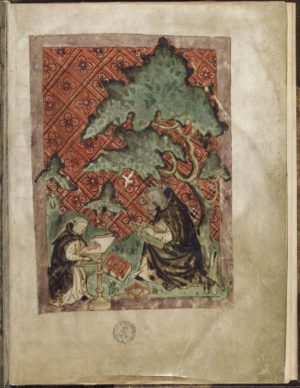
Onderweg bezoeken ze Jan van Ruusbroec (1293-1381), de Vlaamse mystieker en prior van Groenendaal, een kluis aan de rand van het Zoniënwoud bij Brussel. Groote trachtte eerst diens originele geschriften “te verbeteren” maar schreef later in een brief: “Voor tijd en eeuwigheid zou ik ‘des priors voetschabel’ willen zijn, zo sterk is mijn ziel in liefde en eerbied met hem verenigd”. (Nota 1)
Terug in Deventer, spits Groote zich toe op studeren en preken. Eerst meld hij zich in 1379 bij zijn bisschop om tot diaken te worden gewijd. Als diaken krijgt hij het recht te prediken in heel het bisdom Utrecht (ruwweg het huidige Nederland boven de grote rivieren, met uitzondering van de Groningse Ommelanden).
Grote gaat al predikend rond door de Nederlanden en verzamelt vele volgelingen om zich heen. Zijn roem spreidt zich snel over de Lage landen en van overal komt men naar hem luisteren. Hij preekt eerst in Deventer, dan in Zwolle, Kampen, Zutphen en later in Amsterdam, Haarlem, Gouda, Delft en verder. Zijn succes was zo groot dat er binnen de kerk wel wat jaloersheid ontstond. Anderzijds is het ook begrijpelijk dat de wanorde binnen de westerse kerk, namelijk grote schisma tussen 1378 en 1417, Groote’s inspanningen bewerkstelligden.
Al vanaf 1374, schenkt hij het huis van zijn ouders aan een groep arme vrouwen die er samen willen gaan wonen en voorziet hen van een reglement: het eerste zusterhuis van de ???? is in Deventer geboren. Hij noemt hen de Zusters van het Gemene Leven, een concept ontwikkeld door Ruusbroec in verschillende van zijn werken zoals in de slotparagraaf van Vanden Blinckenden Steen:
Die mensche die ute deser hoocheit van Gode neder-ghesent wert inde werelt, hi es volder waerheit, ende rijcke van allen doechden. Ende hi en soeket sijns niet, maer Des-gheens eere diene ghesonden heeft. Ende daer-omme es hi gherecht ende warechtich in alle dinghen. Ende hi heeft eenen rijcken melden [milden] gront, die ghefondeert es inde rijcheit Gods. Ende daeromme moet hi altoes vloeyen in alle die-ghene die sijns behoeven; want die levende fonteyne des Heilich Gheests die es sine rijcheit diemen niet versceppen en mach. Ende hi es een levende willich instrument Gods daar Gode mede werct wt Hi wilt ende hoe Hi wilt; ende des en dreecht hi hem nit ane, maar hi gheeft Gode die eere. Ende daarom blijft hi willich ende ghereet alles te doene dat God ghebiedt; ende sterc ende ghenendich alt te dogene ende te verdraghene dat God op hem gestaedt. Ende hier-omme heeft hi een ghemeyn leven; want hem es scouwen [contemplatie] ende werken even ghereet, ende in beiden is hi volcomen.
Florens Radewijns, de doener

Gedurende een van zijn eerste preken, rekruteert Groote Florens Radewijns (1350-1400). Geboren in Utrecht, studeerde deze in Praag waar ook hij Magister Artium werd op achttienjarige leeftijd. Groote stuurt hem eerst naar Worms om daar tot priester gewijd te worden.
In 1380 neemt Groote zelf met een groepje van tien leerlingen zijn intrek in het huis van Radewijns in Deventer. Dit huis zou later als ‘Heer Florenshuis’ of ‘Rijke Fratershuis’ bekend komen te staan: het eerste broederhuis. Het werd de uitvalsbasis van veel van Geert Groote’s activiteiten.
Wanneer Groote sterft in 1384 van de pest beslist Radewijns, de beweging die Groote uit te bouwen tot de Broeders en Zusters van het Gemene leven.
Al snel noemen ze zich de Devotio Moderna (Moderne Devotie).
Boeken en begijnhoven


Een aantal sterke overeenkomsten bestaan er met de Begijnen die in het begin van de XIIIde eeuw ontstonden. (Nota 2)
De eerste begijnen waren onafhankelijke, alleenwonende, geestelijk diepbewogen vrouwen (zonder man noch regel) die in de wereld het geweldige avontuur aandurfden van een persoonlijke verhouding met God. (Nota 3)
Ze verlangden geen geloften, geen klooster en geen speciale band met de hiërarchie. Ze leefden niet van aalmoezen maar werkten zelf voor hun dagelijkse kost.
Nog meer dan voor de Begijnen staan boeken centraal in alle activiteiten van de Broeders en Zusters van het Gemene Leven.
Het overschrijven en maken van boeken is een voorname bron van inkomsten die tegelijkertijd het goede woord aan de grote massa kan brengen.
De Broeder- en Zusterhuizen spitsen zich toe op onderwijs en hun priesters of preken. Dankzij hun scriptorium en drukkerijen zal hun geestelijke literatuur en ook hun muziek zich ver verspreiden.
Congregatie van Windesheim
Om de beweging tegen ongerechte kritiek te beschermen, richt Radewijns een klooster op van reguliere kanunniken die de regel volgen van Augustinus. In Windesheim, tussen Zwolle en Deventer, op een stukje land van Berthold ten Hove, een van hun leden, wordt een klooster opgebouwd. Een tweede klooster, ditmaal voor vrouwen, komt er in Diepenveen bij Arnhem. De bouw van Windesheim nam meerdere jaren tijd in beslag en verschillende broeders leefden daar tijdelijk in hutten op de werf.
Toen in 1399 Johannes van Kempen, die ook bij Groote had gewoond in Deventer, de eerste prior werd van het klooster Agnietenberg bij Zwolle, kreeg de beweging een nieuw elan. Van Zwolle, Deventer en Windesheim, zwermde de nieuwe leden uit over de lage landen en de rest van noord-Europa om overal nieuwe godshuizen te vestigen.

In 1412 kende de congregatie 16 kloosters en hun aantal rees tot 97 in 1500: 84 mannen- en 13 vrouwenpriorijen. Bovendien bestonden er talrijke kloosters van kanunnikessen, die niet formeel tot het kapittel van Windesheim behoorden, maar die een Windesheimer als rector hadden. Groenendaal en vele andere kloosters maakten vanaf 1394 deel uit van de Congregatie van Windesheim, slechts erkend door de bisschop van Utrecht in 1423.
A Kempis, Cusanus en Erasmus


Johannes van Kempen was natuurlijk de broer van de wereldberoemde Thomas a Kempis (1379-1471) die, na lange jaren leiding van de Broeders van het Gemene Leven, op 92 jarige leeftijd stierf in het klooster Agnietenberg van Zwolle. Behalve een relaas over het leven van Groote en de opkomst van de beweging schreef hij de Imitatione Christi (In navolging Christus), na de Bijbel, het meest gelezen boek ter wereld.
Zowel Rudolf Agricola (1444-1485) als Alexander Hegius (1433-1498), twee markante professors van Erasmus van Rotterdam en onvergelijkbare meesters van het Latijn, het Grieks en het Hebreeuws, werden in Deventer door de Broeders opgeleid en in Zwolle door Thomas a Kempis.
Ook Nicolaus Cusanus (1401-1464), die Agricola beschermde en na zijn dood, via een Bursa Cusana geld gaf om wezen en arme studenten op te leiden, werd mogelijkerwijs door de Broeders opgeleid. Wanneer Cusanus in 1451 naar de Nederlanden reist om daar de scheefgegroeide situaties recht te trekken, bezoekt hij de streek met Dionysius de Karthuizer (van Rykel) (1402-1471), een volgeling van Ruusbroec aan wie hij de opdracht geeft deze taak af te ronden. Geboren in Limburg, volgde ook Dionysius de Karthuizer school in Zwolle. (Nota 4)
Wessel Ganzevoort
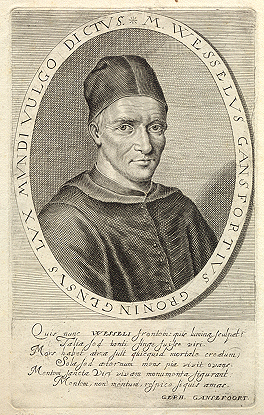
Een andere uitzonderlijke figuur was Wessel Ganzevoort (1419-1489) die samenwerkte met de Griekse kardinaal Bessarion, zelf een intieme medewerker van Cusanus voor het Oecumenische concilie van Ferrare-Firenze.
Gansfoort werd opgeleid in de door de Broeders geleide Sint Maartensschool van Groningen alvorens verder te studeren aan de Latijnse School van Groote’s vriend Joan Cele in Zwolle. Ook de eerste Nederlandse paus, Adrianus VI, werd opgeleid aan de Zwolse Latijnse school alvorens te studeren onder Hegius in Deventer. Vooraleer hij naar Rome ging, stond deze paus open voor de ideeën van Erasmus.
In een brief verzonden van Deventer schrijft Hegius aan Ganzevoort, wie hij de Lux Mundi (het licht der wereld) noemt:
Ik stuur U, zeer eerwaarde heer, de Homiliën van Johannes Crysostomus. Ik hoop dat hun lectuur U mag behagen. Gezien gouden woorden U altijd meer plezier deden dan gouden geldstukken. Ik ben, zoals u weet, in Cusanus’s bibliotheek geweest. Daar vond ik veel boeken die me helemaal onbekend waren… (…) Vaarwel, en als U wilt dat ik voor U iets doe, geef me een teken en beschouw de zaak als gedaan.
Rembrandt van Ryn

Een blik op de vorming van Rembrandt bewijst dat ook hij een later product was van al deze inspanningen. In 1609 gaat Rembrandt, amper drie jaar oud, naar de basisschool waar jongens en meisjes leren lezen, schrijven en rekenen.
In de zomer beginnen de lessen om zes uur ’s morgens en om zeven in de winter. De lessen worden beëindigd om zeven uur ’s avonds. De lessen beginnen met bidden, het bespreken van passages uit de Bijbel en het zingen van psalmen. Het is daar dat Rembrandt een elegant handschrift ontwikkelt en meer dan een basisbegrip krijgt over godsdienst.
Gedurende die jaren trachten de Nederlanden te overleven. Het twaalfjarige bestand wordt gebruikt om het algemene goed to ontwikkelen en Nederland wordt één van de eerste landen waar iedereen de kans krijgt om te leren lezen, schrijven en rekenen.
Deze universele educatie voor zowel rijk als arm, zij het met enige tekortkomingen, was het geheim van de “Gouden Eeuw” en de belezenheid van Nederlandse immigranten in Amerika zal een eeuw later ook een voorname rol spelen gedurende de Amerikaanse revolutie.
Hoewel de meeste kinderen het secundair onderwijs aanpakten op twaalfjarige leeftijd, begon Rembrandt zijn opleiding op de Latijnse School van Leiden op zevenjarige leeftijd!
Daar leerde men, buiten retorica, logica en kalligrafie, niet alleen Grieks en Latijns maar ook Engels, Frans, Spaans of Portugees. In 1620, wanneer Rembrandt veertien jaar oud is, schrijft hij in als student aan de universiteit gezien toen geen wet jonge talenten kon weerhouden.
Als vak kiest hij niet Theologie, Rechten, Wetenschap of Geneeskunst, maar… Literatuur. Wilde Rembrandt Griekse en Hebreeuwse filologie en misschien Koptisch of Arabisch aan zijn brede cultuur toevoegen?
Men beseft dus, dat de Nederlanden, België inbegrepen, met Ruusbroec en Groote en later met Erasmus en Rembrandt, in een niet zo ver verleden, een bakermat was voor het soort humanisme dat de mensheid tot de grootste mogelijkheden kan verheffen. Hier falen om onze beweging uit te breiden is dus onmogelijk.

VOETNOTEN:
1. Geert Groote vertaalde in het Latijn op zijn minst drie van Ruusbroec’s werken die hij waarschijnlijk in Monnikshuizen voor het eerst had ontdekt. Hij stuurde het boek over het Tabernakel naar de cisterciënzers van Altencamp en naar zijn vrienden in Amsterdam. Toen de Brulocht werd aangevallen, nam hij persoonlijk de verdediging op van Ruusbroec. Dankzij het gezag van Groote werden de werken van Ruusbroec overvloedig gekopieerd en zorgvuldig bewaard. Ruusbroec’s leer werd gevulgariseerd in de geschriften van de Moderne Devotie en vooral in de Navolging van Christus.
2. In het begin van de XIIIde eeuw werden de begijnen beschuldigd van ketterij en vervolgd, behalve in de Bourgondische Nederlanden. In Vlaanderen werden ze vrijgesproken en kregen ze een officieel statuut. In feite genoten zij de bescherming van twee belangrijke vrouwen: Johanna en Margareta van Constantinopel, gravinnen van Vlaanderen. Zij organiseerden de stichting van de begijnhoven van Leuven (1232), Gent (1234), Antwerpen (1234), Kortrijk (1238), Ieper (1240), Rijsel (1240), Zoutleeuw (1240), Brugge (1243), Douai (1245), Geraardsbergen (1245), Hasselt (1245), Bergen (1248), Anderlecht (1252), Breda (1252), Diest (1253), Lier (1258), Tongeren (1257), Mechelen (1258), Haarlem (1262) en in 1271 deponeerde Jan I, graaf van Vlaanderen, persoonlijk de statuten van het Groot Begijnhof van Brussel. In 1321 schatte de Paus het aantal begijnen op 200.000.
3. Het poëtisch Platonisme van de Antwerpse begijn Hadewijch heeft een onmiskenbare invloed gehad op Jan van Ruusbroec.
4. Het eerste boek gedrukt in Vlaanderen door Erasmus’ vriend Dirk Martens, was Dionysius’ werk Een spiegel van de bekering van de zondaars in 1473.
Bruegel, Petrarca and the « Triumph of Death »


By Karel Vereycken, april 2020.
The Triumph of Death? The simple fact that the heir to the throne of England, Prince Charles, and even the UK Prime Minister Boris Johnson, have tested positive to the terrifying coronavirus currently sweeping the planet, tells something to the public.
As some commentators pointed out (no irony) it “gave a face to the virus”. Until then, when an elderly person or a dedicated nurse died of the same, it “wasn’t real”.
Realizing that these “higher-ups” are not part of the immortal Gods of Olympus but are mortals as all of us, brings to my mind “The Triumph of Death”, a large oil painting on panel (117 x 162 cm, Prado, Madrid), generally misunderstood, painted by the Flemish painter Peter Bruegel’s the elder (1525-1569), and thought to be executed between 1562 and his premature demise.
In order to discover, beyond the painting, the intention of the painter’s mind, it is always useful, before rushing into hazardous conclusions, to briefly describe what one sees.
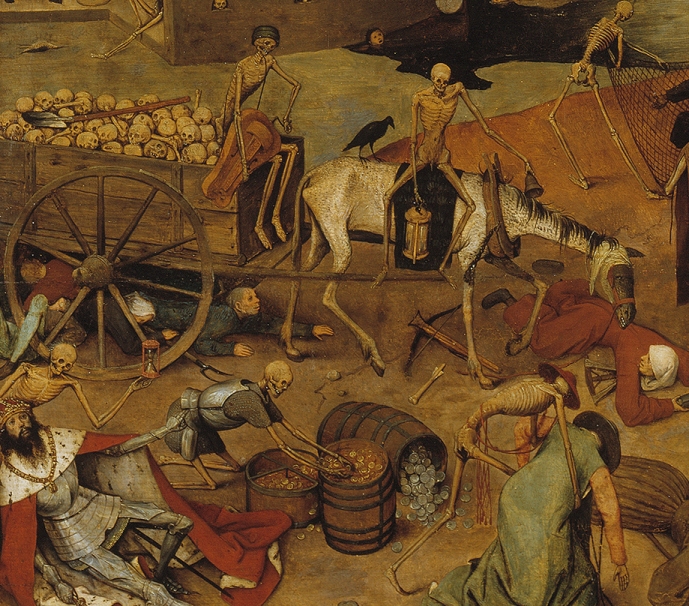
What do we see in Bruegel’s « Triumph of Death« ? On the left, a skeleton, symbolizing death itself, holding a sand-glass in its hand, carries away a dead King. Next to him, another skeleton grabs the vast amounts of money no one can take with him into the grave. Death is driving a chariot. Below the charriot some people are crawling on their knees, hoping to remain unnoticed.
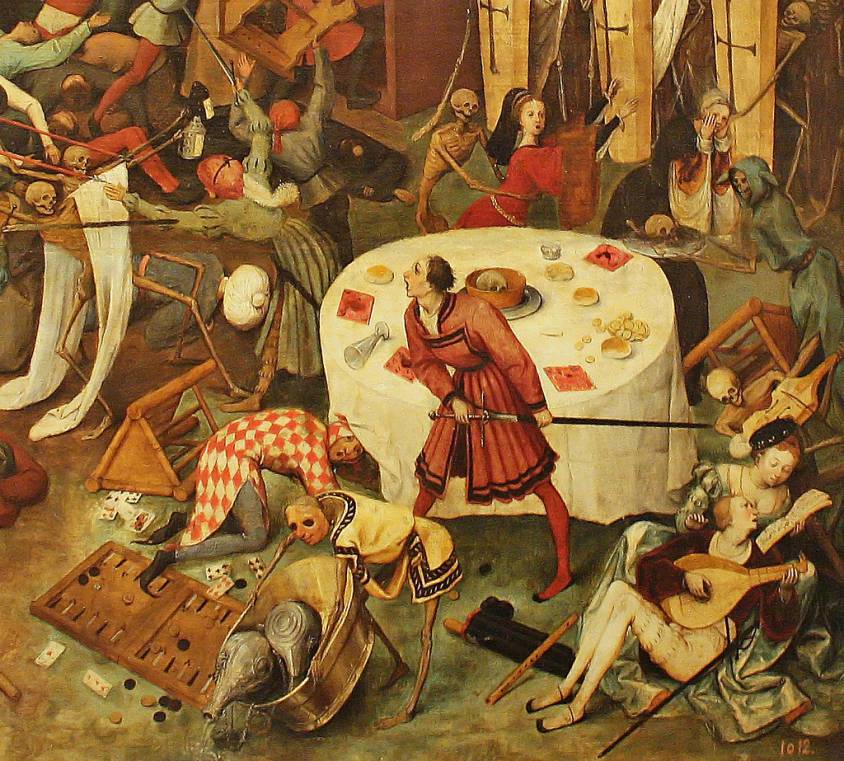
On the right, at the forefront, people are gambling and amusing themselves. A skeleton playing a musical instruments joins a prosperous young couple engaged in a musical dialogue and clearly unaware that Death is taking over the planet.
The message is simple and clear. No one can escape death, poor or rich, young or old, king or peasant, sick or healthy. When the hour comes, or at the end of all times, all mortals return to the creator since “physical” death triumphs over all of them.
Immortality
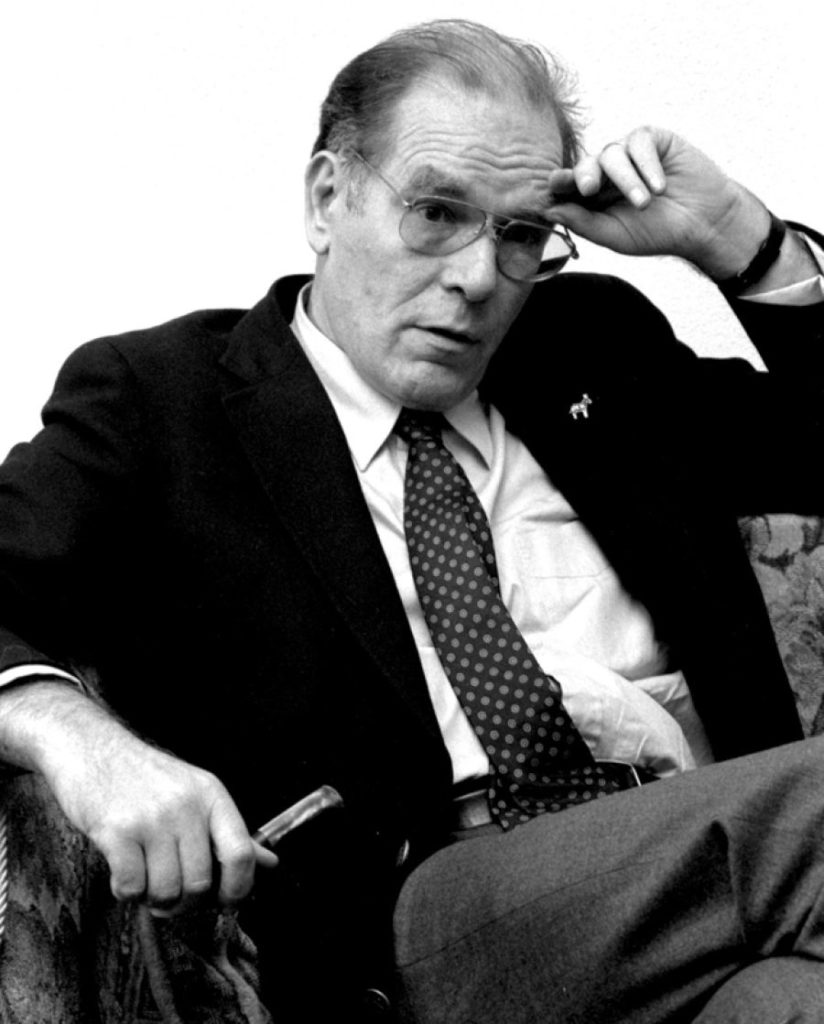
American thinker Lyndon LaRouche (1922-2019), in his speeches and writings, used to remind us, with his typical loving impatience: all human wisdom starts by a personal decision to acknowledge a fact proven without contest: we are all born and each of us, sooner or later, will die. So far, our bodies have all been proven mortal.
The duration of our mortal existence on the clock of the universe, he reminded, is less than a nanosecond.
Therefore, knowing this boundary condition of our mortal existence, we, each of us, have to make a personal sovereign decision: how will I spend the talent of my life ? Will I spend that talent chasing the earthly pleasures of the flesh, or dedicate my life to defending the truth, the beautiful and the good, to the great benefit of humanity as a whole, living in past, present and future ?
In 2011, in a discussion, LaRouche explained what he meant by saying that humanity has the potential to become an “immortal” species:
I live; as long as I live, I may generate ideas.
These conceptions give mankind a chance to move forward.
But then the time will come when I will die.
Now, two things happen: First of all, if these creative principles,
which have been developed by earlier generations,
are realized in the future, that means that mankind is an immortal species. We are not personally immortal;
but to the extent that we’re creative, we’re an immortal species.
And the ideas that we contribute to society
are permanent contributions to the human society.
We are therefore an immortal species,
based on mortal beings. And the key thing in life is to grasp that connection.
To say that we’re creative and die,
doesn’t tell us the story. If we, in our own lives, who are about to die,
can contribute something that is permanent, which will outlive our death, and be a benefit to mankind in future times, we have achieved the purpose of immortality.
And that is the crucial thing.
If people can actually face, with open minds, the fact that we’re each going to die—but look at it in the right way,
then we are impassioned to make the contributions,
to discover the principles, to do the work that is immortal.
Those discoveries of principle which are immortal, which pass on from one generation to the other. And thus, the dead live in the living;
because what the dead do, if they have done that in their lifetime, they are alive, not as in the flesh, but they’re alive in principle.
They’re part, an active part, of human society.
Christian humanism
LaRouche’s outlook, the “moral” obligation to live a “creative” existence on Earth in the image of the Creator, was deeply rooted in the philosophical outlook of both the Platonic and the Judeo-Christian tradition, whose happy marriage gave us the beautiful Christian humanism which, in the early XVth Century, ignited an unprecedented explosion, on a mass-scale and of unseen density of economic, scientific, artistic and cultural achievements, later qualified as a “Renaissance”.
In Plato’s Phaedon, Socrates develops the idea that our mortal body is a constant impediment to philosophers in their search for truth: “It fills us with wants, desires, fears, all sorts of illusions and much nonsense, so that, as it is said, in truth and in fact no thought of any kind ever comes to us from the body” (66c). To have pure knowledge, therefore, philosophers must escape from the influence of the body as much as is possible in this life. Philosophy (Literally “The love of wisdom”) itself is, in fact, a kind of “preparation for dying” (67e), a purification of the philosopher’s soul from its bodily attachment.
Also the Vulgate’s Latin rendering of Ecclesiastics 7:40 stresses: « in all thy works be mindful of thy last end and thou wilt never sin”. This passage finds expression in the christian ritual of Ash Wednesday, when ashes are placed upon the worshippers’ heads with the words: “Remember Man that You are Dust and unto Dust You Shall Return.”
Is this a morbid ritual? No, it is a philosophy lesson. Christianity itself, as a religion, cherishes God’s own son made man, Jesus, for having renounced to his mortal life for the sake of mankind. It put Jesus’ death at the center. And in the XIVth century, Thomas a Kempis (1380-1471), one of the leading intellectuals and founders of the Brothers of the Common Life, wrote that every Christian should shape his life in the “Imitation of Christ”. Both Nicolaus of Cusa (1401-1464) and Erasmus of Rotterdam (1466-1536) were powerfully influenced and trained by this intellectual current.
Concedo Nulli
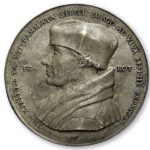
Erasmus’ personal armory was the juxtaposition of a skull and a sand-glass, referring to death and time as the boundary conditions of human existence.
In 1519, his friend, the Flemish painter and goldsmith Quentin Matsys (1466-1530) forged a bronze medal to the honor of the great humanist.
On one side of the medal there is an efigee of Erasmus and a Latin inscription informs us that this is “an image taken from life”. At the same time we are told in Greek, « his writings will make him better. known »
The reverse side of the medal shows solemn inscriptions surrounding an unusual image. At the top of a pillar that stands in rough, uneven ground, emerges the head of a young man with a stubbly chin and wild, flowing hair. Like Erasmus on the other side of the medal, he seems to have a faint smile upon his face. On either side of the head are the words “Concedo Nulli”– “I yield to no one.” On the pillar is inscribed Terminus, the name of a Roman god who presided over boundaries. Again bilingual quotations surround a profile. On the left, in Greek, is the instruction, « Keep in mind the end of a long life. » On the right, in Latin, is the stark reminder, « Death is the ultimate boundary of things. »
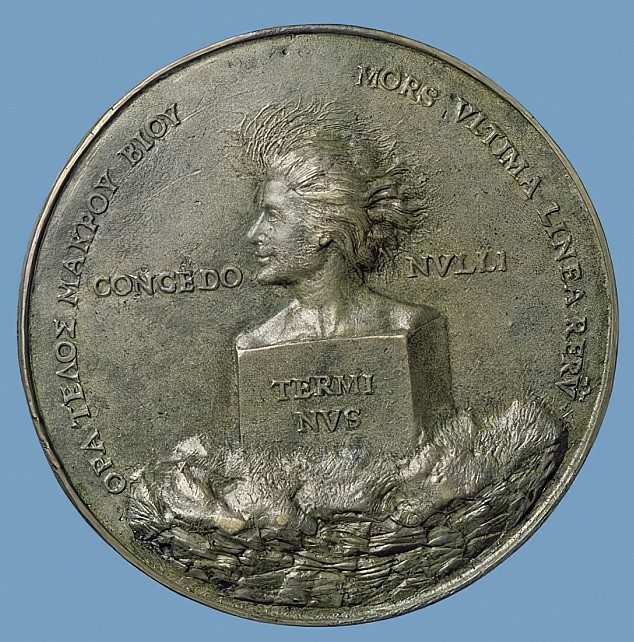
Adapting as his own motto “I yield to no one”, Erasmus took the great risk of using such a daring metaphor. Accused of intolerable arrogance by his sycophants, he underlined that “Concedo Nulli” had to be understood as death’s own statement, not his own. And who could argue with the assertion that death is the terminus that yields to no one?
Mozart, Brahms and Gandhi
Centuries later, the great humanist composer, Wolfgang Amadeus Mozart, was the exact opposite of a morbid cynic. Revealing his inner mindset, Mozart once said that the secret of all genius, was love for humanity: “neither a lofty degree of intelligence nor imagination nor both together go to the making of genius. Love, love, love, that is the soul of genius”.
But on April 4, 1787, Mozart wrote to his father, Leopold, as he lay dying :
I need hardly tell you how greatly I am longing
to receive some reassuring news from yourself.
And I still expect it ; although I have now made a habit of being prepared in all affairs of life for the worst.
As death, when we come to consider it closely,
is the true goal of our existence,
I have formed during the last few years such close relations with this best and truest friend of mankind,
that his image is not only no longer terrifying to me,
but is indeed very soothing and consoling !
And I thank God for graciously granting me
the opportunity (you know what I mean)
of learning that death is the key
which unlocks the door to our true happiness.
I never lie down at night
without reflecting that –young as I am– I may not live to see another day.
Johannes Brahms 1865 German Requiem, quotes Peter 1:24-25 reminding us that
“For all flesh is as grass,
and all the glory of man as the flower of grass.
The grass withereth, and the flower thereof falleth away.
But the word of the Lord endureth for ever.”
Also Mahatma Gandhi, expressed, in his own way, somthing similar, about how one has to live simultaneously with mortality and immortality:
« Live as if you were to die tomorrow.
Learn as if you were to live forever. »
Memento Mori and Vanitas
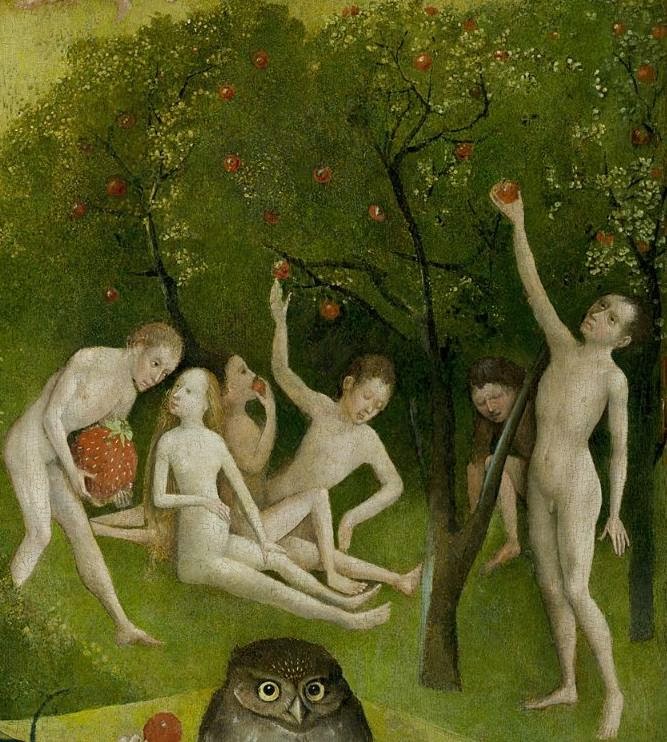
Just as Hieronymus Bosch’s (1450-1516) painting of the “Garden of Earthly Delights” (Prado, Madrid), where the great Dutch master uses the metaphor of naked humans incessantly chasing delicious fruits, calls on the viewer to become aware of his close-to-ridiculous, animal-like attachment to earthly pleasures and calls on his free will and his sens of humor to free himself, Bruegel’s “Triumph of Death” painting, on a first level, is fundamentally nothing else than a complex Memento Mori (Latin “remember that you must die”).
With this painting, Bruegel pays tribute to his intellectual godfather’s motto Concedo Nulli, that is, as Erasmus did in his writings, Bruegel paints the ineluctability of death, not by praising its horror, but with the aim of inspiring his fellow citizens to walk into immortality. In the same way Erasmus’ « In praise of folly » was in fact an inversion of his praise of reason, Brueghel’s « Triumph of Death » was conceived as a triumph of (immortal) life.
For the Catholic faith, the aim of a Memento Mori was to remind (and eventually terrorize) the believer that after death, he or she might end up in Purgatory or worse in Hell if they did not respect the Church and her rites. With the invention of oil painting in the early XVth century, panel paintings of this genre for private homes and small chapels were considered aesthetic objects crafted for the sake of religious and philosophical contemplation.
Hence, starting with the Renaissance, the Memento Mori painting became a much demanded artifact, re-branded in the following centuries as “Vanitas”, Latin for « emptiness » or « vanity ». Especially popular in Holland and then spreading to other European nations, Vanitas paintings typically represented assemblages of numerous symbolic objects such as human skulls, guttering candles, wilting flowers, soap bubbles, butterflies and hourglasses.
Iconography
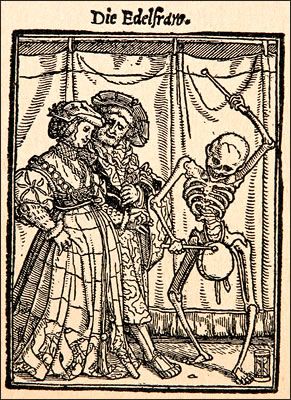
A first source is of course, the famous designs and woodcuts executed by Erasmus intimate friend and illustrator of his “In Praise of Folly”, Hans Holbein the Younger (1497-1543), for his satirical “Dance of Death” (1523), which –breaking with the way the “Dance macabre” was used before by the Flagellants and other madmen to desensitize the population in order to push them into a fatalistic retreat of the outer world– introduces the new philosophical dimension that Bruegel will develop.

The close-to-embarassing anamorphosic representation of a giant skull in Holbein’s work « The Ambassadors » (1533), demonstrates his profound understanding of the Memento Mori metaphor.
Erasmus’ friend Albrecht Dürer‘s engraving « Knight, Death and the Devil » (1513), or his « Saint Jerome in his study » (1514) (with skull and hourglass) are two other examples.
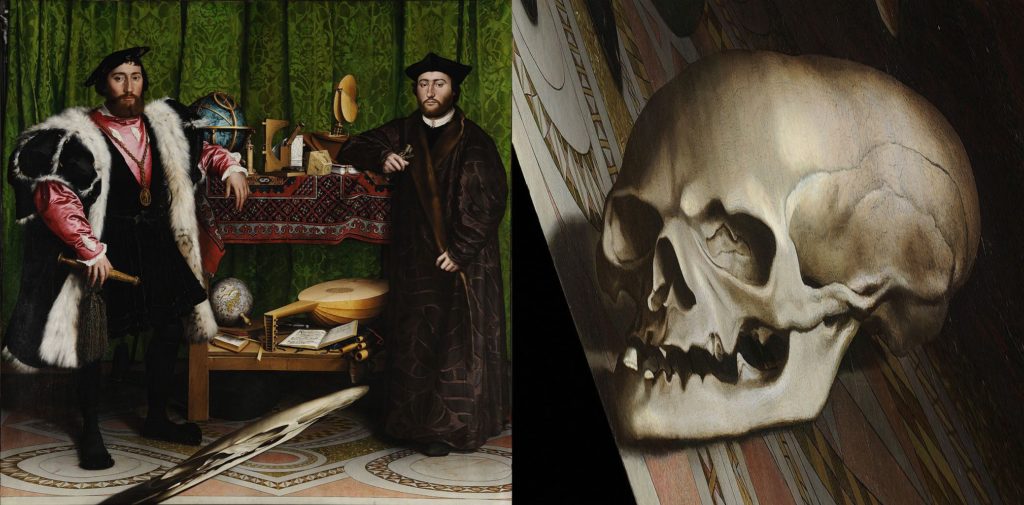
Bruegel and Italy
Ironically, Peter Bruegel the elder has always been presented as a painter of the Northern School who was completely closed to the “Italian” Renaissance.
The reality is that while rejected the transformation of the Renaissance into a form of mannerism in the XVIth century, he took most of his inspiration directly from two Italian Renaissance sources.

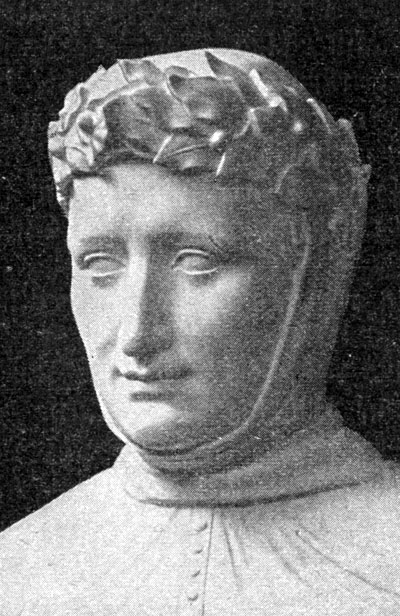
First, of course, the image of Death riding a horse, and even a group of persons such as the young couple engaged in their musical embrace, appear incontestably as taken from the Triumph of Deat”, a vast fresco from 1446 which decorated the walls of the Palazzo Sclafani in Palermo, Sicily. Bruegel’s trip to Southern Italy is a well documented fact.
The second source, which undoubtedly also inspired the painter of the fresco, is a series of allegorical poems known as “I Trionfi” (“The Triumphs”: Triomph of Love, of Chastity, of Death, of Fame, of Time and of Eternity), composed by the great Italian poet Francesco Petrarca, most likely following the “Black Death”, a pandemic outbreak which, starting with the 1345 banking crash, decimated a vast portion of the population of Europe.
Petrarca’s genius was precisely to offer to those terrified with the very idea of having to face their physical mortality, a philosophical answer to their anxiety.
As a result, his Trionfi became rapidly popular, not only in Italy but all over Europe. And for most painters, working on Petrarca’s themes became part of their common repertoire.
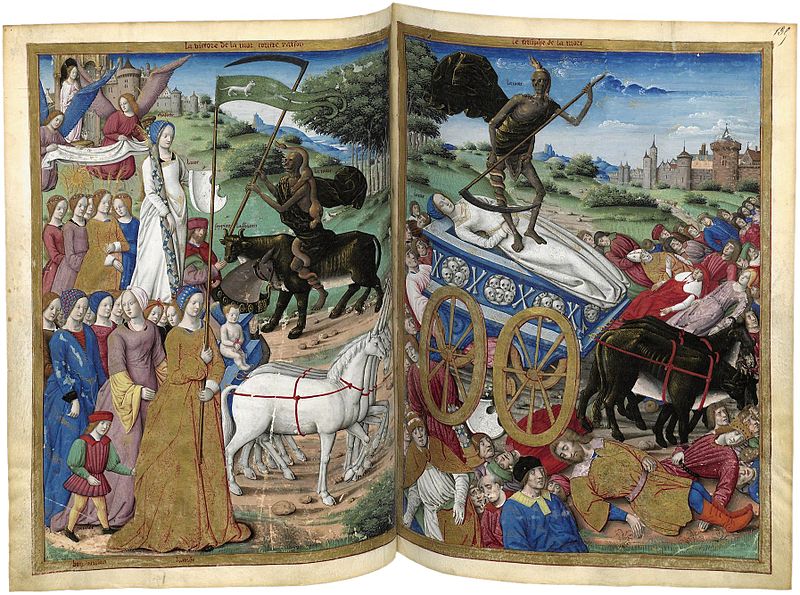
To conclude, here is an excerpt (English) of the poem, where Petrarca blasts the mad lust of Kings and Popes for wealth, pleasure and earthly power. In the face of death, he stresses, they are worthless. Petrarca’s wording fits to the detail the images used by Bruegel in his painting The Triumph of Death :
(…) afar we might perceive
Millions of dead heap’d on th’ adjacent plain;
No verse nor prose may comprehend the slain
Did on Death’s triumph wait, from India,
From Spain, and from Morocco, from Cathay,
And all the skirts of th’ earth they gather’d were;
Who had most happy lived, attended there:
Popes, Emperors, nor Kings, no ensigns wore
Of their past height, but naked show’d and poor.
Where be their riches, where their precious gems,
Their mitres, sceptres, robes, and diadems?
O miserable men, whose hopes arise
From worldly joys, yet be there few so wise
As in those trifling follies not to trust;
And if they be deceived, in end ’tis just:
Ah! more than blind, what gain you by your toil?
You must return once to your mother’s soil,
And after-times your names shall hardly know,
Nor any profit from your labour grow;
All those strange countries by your warlike stroke
Submitted to a tributary yoke;
The fuel erst of your ambitious fire,
What help they now? The vast and bad desire
Of wealth and power at a bloody rate
Is wicked,–better bread and water eat
With peace; a wooden dish doth seldom hold
A poison’d draught; glass is more safe than gold;
Whether Bruegel, who saw undoubtedly the fresco in Palermo during his trip in the 1550s, had read Petrarca’s poem remains an open question. It can be said that many of his direct friends were familiar with the Italian poet.
In Antwerp, the painter was a frequent guest of the Scola Caritatis, a humanist circle animated by one Hendrick Nicolaes, where Brueghel met poets, translaters, painters, engravers (Cock, Golzius) mapmakers (Mercator), cosmographers (Ortelius) and bookmakers such as the Antwerp printer Christophe Plantijn, who’se renowned printing shop would print Petrarca’s poetry.
Also in Antwerp, indicating how popular Petrarca’s poetry had become in the Low Countries and France, the franco-flemish Orlandus Lassus (1532-1594) published his first musical compositions, including his madrigals on each of the six Trionfi of Petrarca, among which the « Triumph of Death ».
Conclusion
All evil, Gottfried Wilhelm Leibniz (1646-1716) hoped, can give birth to something good, far bigger and superior to the evil that provoked it. Therefore, we can hope that the current pandemic breakdown crisis will lead some of the leading decision-makers, with our help, to reflect on the sens and purpose of their lives. The worst would be to return to yesterday’s “normalcy” since that kind of “normal” is exactly what drove the planet currently to the verge of extinction.
At last, it should be stressed that in the same way Lyndon LaRouche, by his ruthless (Concedi Nulli) commitment to defend the sacred creative nature of every human individual, contributed to the enduring immortality of Plato, Petrarca, Erasmus and Bruegel, it is up to each of us to carry even further that battle.
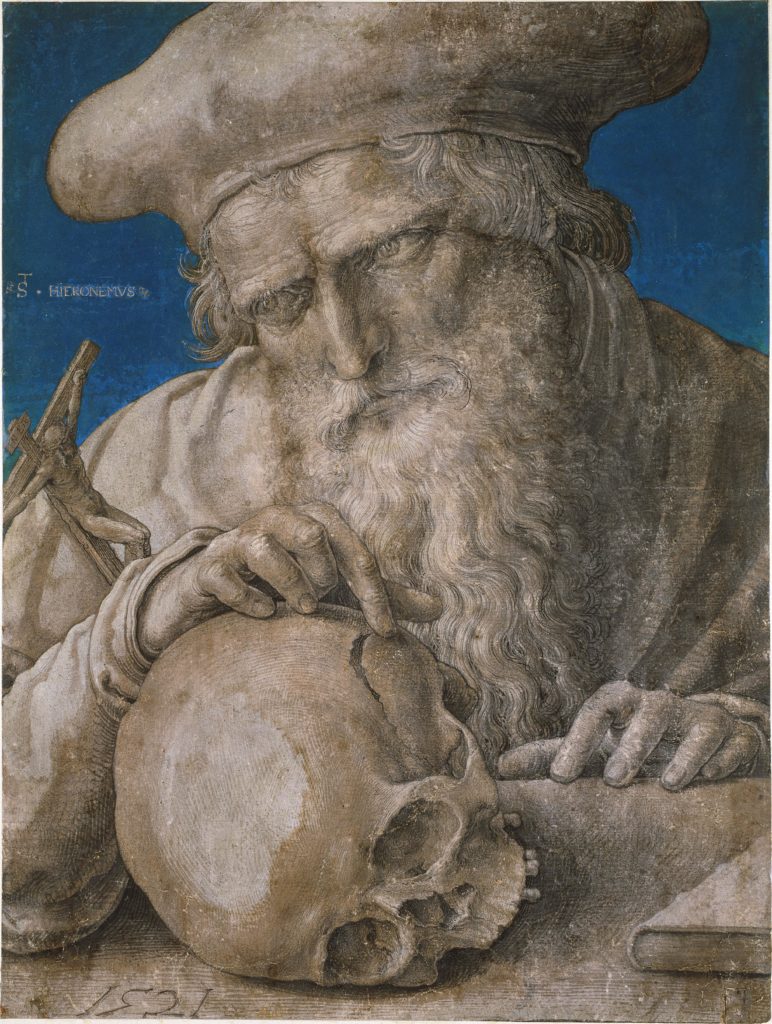
Le « rêve d’Erasme », le Collège des Trois Langues de Louvain


REVUE DE LIVRE :
Le Collège des Trois Langues de Louvain (1517-1797)
Erasme, les pratiques pédagogiques humanistes et le nouvel institut des langues.
Sous la direction de Jan Papy, avec les contributions de Gert Gielis, Pierre Swiggers, Xander Feys & Dirk Sacré, Raf Van Rooy & Toon Van Hal, Pierre Van Hecke.
Edition Peeters, Louvain 2018.
230 pages, 60 €.
__________________________________________________________________

En Belgique, il y a un an, dans la vieille ville universitaire de Louvain, et ensuite à Arlon, une exposition très intéressante a échappé à notre attention.
Réunissant des documents historiques, gravures et manuscrits de la bibliothèque universitaire ainsi que de nombreuses pièces de l’étranger, du 19 octobre 2017 au 18 janvier 2018, l’évènement a voulu, à l’occasion du 500e anniversaire de sa fondation, retracer l’origine et mettre à honneur l’activité du fameux « Collège Trilingue » érigé en 1517 grâce aux efforts du grand humaniste chrétien Erasme de Rotterdam (1467-1536).
Quand on parle de civilisation européenne, c’est bien cette institution, bien que peu connue et de taille modeste, qui en fut l’un des artisans majeurs.
Car tout comme Guillaume le Taciturne (1533-1584), l’organisateur de la révolte des Pays-Bas contre la tyrannie habsbourgeoise, les visionnaires More, Rabelais, Cervantès et Shakespeare s’inspireront de son combat exemplaire, de sa verve et de son grand projet pédagogique.

L’occasion pour les Editions Peeters de Louvain de consacrer à cet anniversaire un beau catalogue et plusieurs recueils, publiés aussi bien en néerlandais, en français, qu’en anglais, réunissant les contributions de plusieurs spécialistes sous l’œil avisé (et passionné) de Jan Papy, professeur de littérature latine de la Renaissance à l’Université de la ville, appuyé d’une « équipe trilingue louvainiste » qui n’a pas épargné ses efforts pour relire attentivement toutes les publications ayant trait au sujet et explorer des sources nouvelles dans diverses archives d’Europe.
L’histoire de cet établissement humaniste en est une non seulement d’une remarquable visée scientifique et pédagogique, mais aussi d’efforts obstinés, voire de combats courageux, couronnés d’un succès international sans précédent. Mettant à profit le legs de Jérôme de Busleyden (1470-1517), conseiller au Grand Conseil de Malines, décédé en août 1517, Érasme s’attela aussitôt à la création d’un collège où des savants de renommée internationale prodigueraient un enseignement public et gratuit du latin, du grec et de l’hébreu. Dans ce collège ‘trilingue’, étudiants-boursiers et professeurs vivaient ensemble.
peut-on lire sur la jaquette du catalogue de plus de 200 pages.
Pour les chercheurs, il ne s’agissait pas de retracer de façon exhaustive l’histoire de cette entreprise mais de répondre à la question :
Quelle fut la ‘recette magique’ qui a permis d’attirer aussi rapidement à Louvain entre trois et six cents étudiants venant de partout en Europe ?
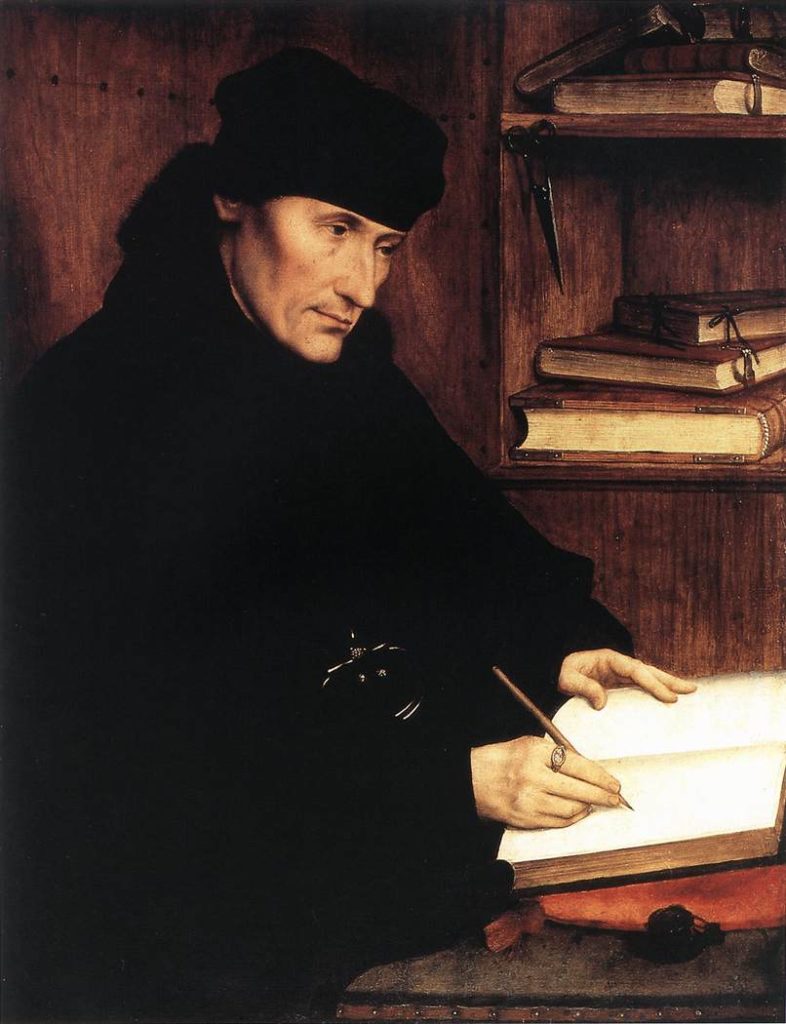
En tout cas, la chose est inédite, car, à l’époque, rien que le fait d’enseigner et en plus gratuitement, le grec et l’hébreu —considéré par le Vatican comme hérétique— est déjà révolutionnaire. Et ceci, bien que, dès le XIVe siècle, initié par les humanistes italiens au contact des érudits grecs exilés en Italie, l’examen des sources grecques, hébraïques et latines et la comparaison rigoureuse des grands textes aussi bien des pères de l’Eglise que de l’Evangile, est la voie choisie par les humanistes pour libérer l’humanité de la chape de plomb aristotélicienne qui étouffe la Chrétienté et de faire renaître l’idéal, la beauté et le souffle de l’église primitive.
Pour Erasme, comme l’avait fait avant lui Lorenzo Valla (1403-1457), en promouvant ce qu’il appelle « la philosophie du Christ », il s’agit d’unir la chrétienté en mettant fin aux divisions internes résultant de la cupidité (les indulgences, la simonie, etc.) et des pratiques de superstition religieuse (culte des reliques) qui infectent l’Eglise de haut en bas, en particulier les ordres mendiants.
Pour y arriver, Erasme désire reprendre l’Evangile à sa source, c’est-à-dire comparer les textes d’origine en grec, en latin et en hébreux, souvent inconnus ou sinon entièrement pollués par plus de mille ans de copiages et de commentaires scolastiques.
Frères de la Vie Commune
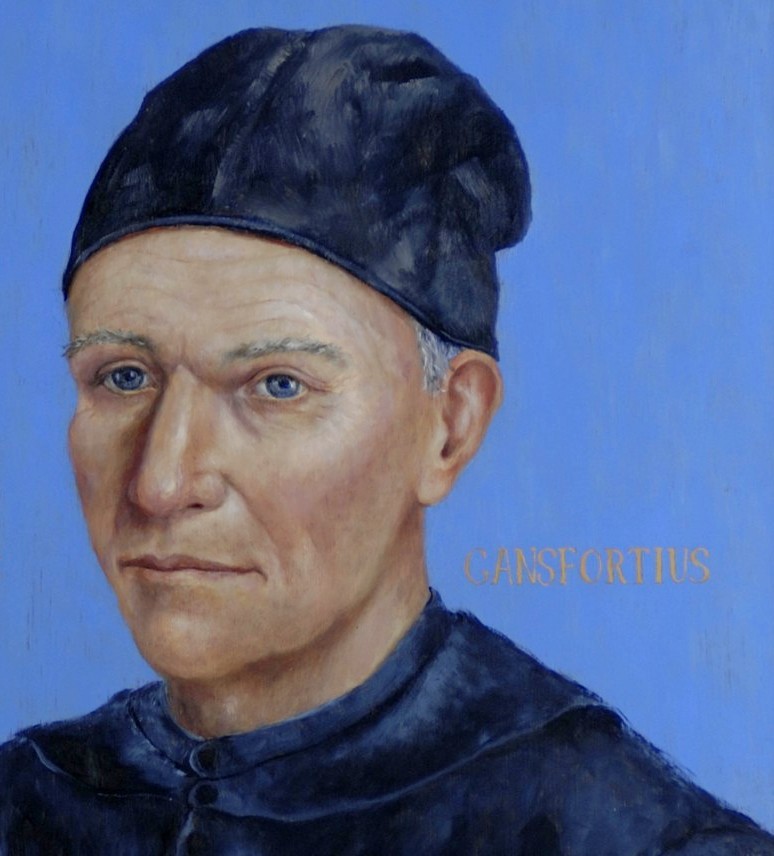
Mes recherches propres me permettent de rappeler qu’Erasme est un disciple des Sœurs et Frères de la Vie commune de Deventer au Pays-Bas. Les figures fondatrices et emblématiques de cet ordre laïc et enseignant sont Geert Groote (1340-1384), Florent Radewijns (1350-1400) et Wessel Gansfort (1420-1489) dont on croit savoir qu’ils maitrisaient précisément ces trois langues.
Le piétisme de ce courant dit de la « Dévotion Moderne », centré sur l’intériorité, s’articule à merveille dans le petit livre de Thomas a Kempis (1380-1471), L’imitation de Jésus Christ. Celui-ci souligne l’exemple personnel à suivre de la passion du Christ tel que nous l’enseigne l’Evangile, message qu’Erasme reprendra.
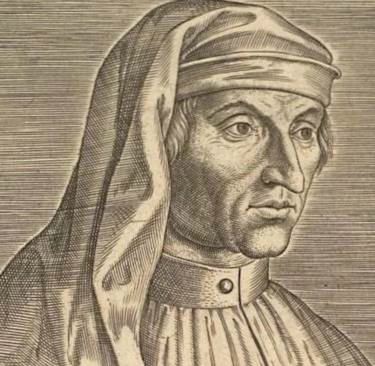
En 1475, le père d’Erasme, qui maîtrise le grec et aurait écouté des humanistes réputés en Italie, envoie son fils de neuf ans au chapitre des frères de Deventer, à l’époque dirigé par Alexandre Hegius (1433-1498), élève du célèbre Rudolphe Agricola (1442-1485), qu’Erasme a eu la possibilité d’écouter et qu’il appelle un « intellect divin ».
Disciple du cardinal-philosophe Nicolas de Cues (1401-1464), défenseur enthousiaste de la renaissance italienne et des belles lettres, Agricola a comme habitude de secouer ses élèves en leur lançant :
Soyez méfiant à l’égard de tout ce que vous avez appris jusqu’à ce jour. Rejetez tout ! Partez du point de vue qu’il faut tout désapprendre, sauf ce que, sur la base de votre autorité propre, ou sur la base du décret d’auteurs supérieurs, vous avez été capable de vous réapproprier.
Erasme reprend cet élan et, avec la fondation du Collège Trilingue, le portera à des hauteurs inédites. Pour ce faire, Erasme et ses amis appliqueront une nouvelle pédagogie.
Désormais, au lieu d’apprendre par cœur des commentaires médiévaux, les élèves doivent formuler leur propre jugement en s’inspirant des grands penseurs de l’antiquité classique, notamment « Saint Socrate », et ceci dans un latin purgé de ses barbarismes. Dans cette approche, lire un grand texte dans sa langue originale n’est que la base.
Vient ensuite tout un travail exploratoire : il faut connaître l’histoire et les motivations de l’auteur, son époque, l’histoire des lois de son pays, l’état de la science et du droit, la géographie, la cosmographie, comme des instruments indispensables pour situer les textes dans leur contexte littéraire et historique.
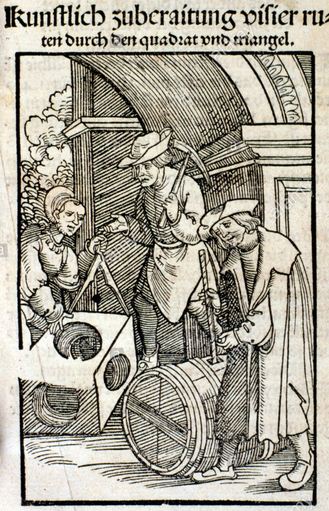
Cette approche « moderne » (questionnement, étude critique des sources, etc.) du Collège Trilingue, après avoir fait ses preuves en clarifiant le message de l’Evangile, se répand alors rapidement à travers toute l’Europe et surtout s’étend à toutes les matières, notamment scientifiques !
En sortant les jeunes talents du monde étroit et endormi des certitudes scolastiques, l’institution devient un formidable incubateur d’esprits créateurs.
Certes, cela peut étonner le lecteur français pour qui Erasme n’est qu’un littéraire comique qui se serait perdu dans une dispute théologique sans fin contre Luther. Si l’on admet généralement que sous Charles Quint, les Pays-Bas et l’actuelle Belgique ont apporté leurs contributions à la science, peu nombreux sont ceux qui comprennent le lien unissant Erasme avec la démarche d’un mathématicien tel que Gemma Frisius, d’un cartographe comme Gérard Mercator, d’un anatomiste comme André Vésale ou d’un botaniste comme Rembert Dodoens.
Or, comme l’avait déjà documenté en 2011 le professeur Jan Papy dans un article remarquable, en Belgique et aux Pays-Bas, la Renaissance scientifique de la première moitié du XVIe siècle, n’a été possible que grâce à la « révolution linguistique » provoquée par le Collège Trilingue.
Car, au-delà de leurs langues vernaculaires, c’est-à-dire le français et le néerlandais, des centaines de jeunes, étudiant le grec, le latin et l’hébreu, accèderont d’un coup, à toutes les richesses scientifiques de la philosophie grecque, des meilleurs auteurs latins, grecs et hébreux. Enfin, ils purent lire Platon dans le texte, mais aussi Anaxagore, Héraclite, Thalès, Eudoxe de Cnide, Pythagore, Ératosthène, Archimède, Galien, Vitruve, Pline, Euclide et Ptolémée dont ils reprennent les travaux pour les dépasser ensuite.

Comme le retracent en détail les œuvres publiées par les Editions Peeters, dans le premier siècle de son existence, le collège dut traverser des moments difficiles à une époque fortement marquée par des troubles politiques et religieux.
Le Collège Trilingue, près du Marché aux poissons, au centre de Louvain, a notamment dû affronter de nombreuses critiques et attaques de la part d’adversaires « traditionalistes », en particulier certains théologiens pour qui, en gros, les Grecs n’étaient que des schismatiques et les Juifs les assassins du Christ et des ésotériques. L’opposition fut telle qu’en 1521, Erasme quitte Louvain pour Bâle en Suisse, sans perdre contact avec l’institution.
En dépit de cela, la démarche érasmienne a d’emblée conquis toute l’Europe et tout ce qui comptait alors parmi les humanistes sortait de cette institution. De l’étranger, des centaines d’étudiants y accouraient pour suivre gratuitement les cours donnés par des professeurs de réputation internationale. 27 universités européennes ont nommé dans leur corps professoral d’anciens étudiants du Trilingue : Iéna, Wittenberg, Cologne, Douai, Bologne, Avignon, Franeker, Ingolstadt, Marburg, etc.
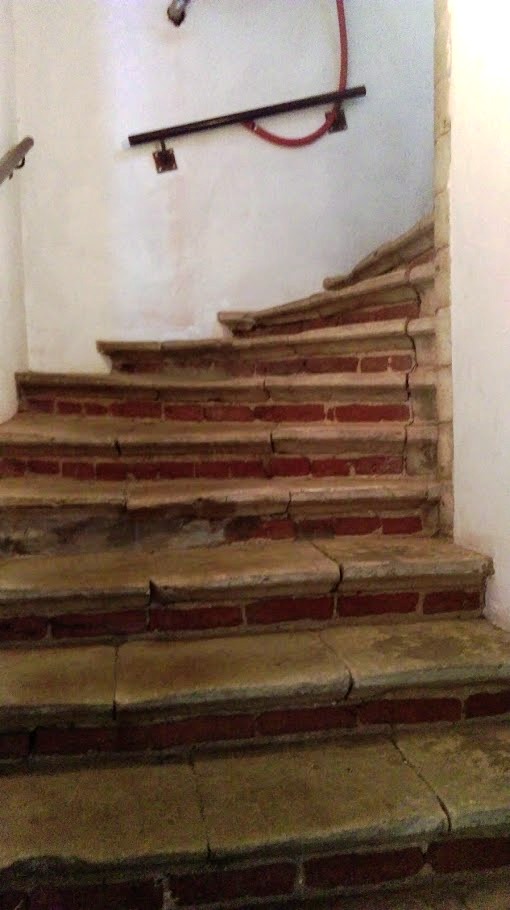
Comme à Deventer chez les Frères de la Vie Commune, un système de bourses permet à des élèves pauvres mais talentueux, notamment les orphelins, d’accéder aux études. « Une chose pas forcément inhabituelle à l’époque, précise Jan Papy, et entreprise pour le salut de l’âme du fondateur (du Collège, c’est-à-dire Jérôme Busleyden) ».
En contemplant les marches usées jusqu’à la corde de l’escalier tournant en pierre (Wentelsteen), l’un des rares vestiges du bâtiment d’alors qui a résisté à l’assaut du temps et du mépris, on imagine facilement les pas enthousiastes de tous ses jeunes élèves quittant leur dortoir situé à l’étage. Comme l’indiquent les registres des achats de la cuisine du Collège Trilingue, pour l’époque, la nourriture y est excellente, beaucoup de viande, de la volaille, mais également des fruits, des légumes, et parfois du vin de Beaune, notamment lorsque Erasme y est reçu.
Avec le temps, la qualité de son enseignement a forcément variée avec celle de ses enseignants, le Collège Trilingue, dont l’activité a perduré pendant longtemps après la mort d’Erasme, a imprimé sa marque sur l’histoire en engendrant ce qu’on qualifie parfois de « petite Renaissance » du XVIe siècle.
Erasme, Rabelais et la Sorbonne
Quitte à nous éloigner du contenu du catalogue, nous nous permettons d’examiner brièvement l’influence d’Erasme et du Collège Trilingue en France.
A Paris, chez les chiens de garde de la bienpensance, c’est la méfiance. La Sorbonne (franciscaine), alarmée par la publication d’Erasme sur le texte grec de L’Evangile de Saint Luc, fait interdire dès 1523 l’étude du grec en France. En Vendée, à Fontenay-le-Comte, les moines du couvent de Rabelais confisquent alors sans vergogne ses livres grecs ce qui incitera l’intéressé à déserter son ordre mais pas ses livres. Médecin, Rabelais traduit par la suite Galien du grec en français. Et, comme le démontre la lettre de Rabelais à Erasme, le premier tient le second en haute estime.
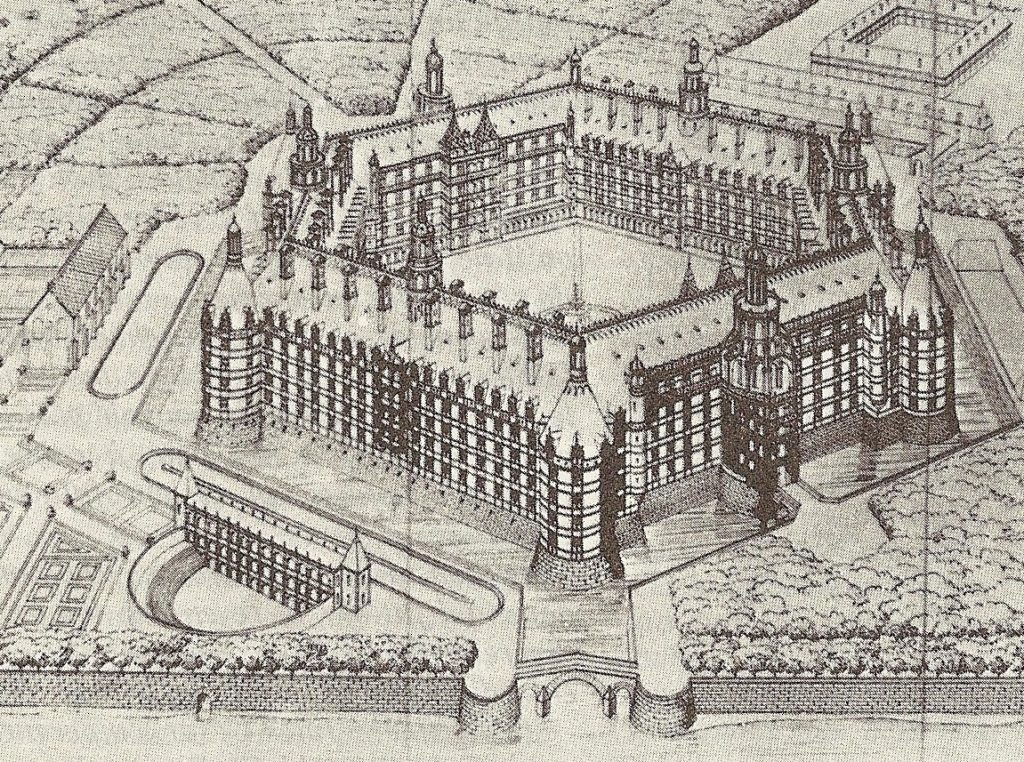
Dans son Gargantua (1534), esquissant les contours d’une Eglise du futur, Rabelais évoque le Collège Trilingue sous le nom d’abbaye de Thélème (Thélème = désir en grec, peut-être une référence à Désiré, prénom d’Erasme), un magnifique bâtiment hexagonal à six étages, digne des plus beaux châteaux de la Loire où l’on puisse retrouver, « les belles grandes librairies, en Grec, Latin, Hébrieu, François, Tuscan et Hespaignol, disparties par les divers estaiges selon langaiges », référence on ne peut plus claire au projet érasmien.

Contre la Sorbonne, en 1530, le Collège Trilingue d’Erasme servira explicitement de modèle pour la création, à l’instigation de Guillaume Budé (ami d’Erasme), du « Collège des lecteurs royaux » (devenu depuis le Collège de France) par François Ier, avec les encouragements de sa sœur Marguerite de Valois reine de Navarre (1492-1549) (grand-mère d’Henri IV), poétesse, femme de lettres et lectrice d’Erasme.
Dans le même élan, en 1539, Robert Estienne est nommé imprimeur du roi pour le latin et l’hébreu, et c’est à sa demande que François Ier fit graver par Claude Garamont une police complète de caractères grecs dits « Grecs du Roi ».
Pour les mettre à l’abri des foudres des sorbonagres et des sorbonicoles, François Ier déclare alors les lecteurs royaux conseillers du roi. A l’ouverture, il s’agit de chaires de lecture publique pour le grec, l’hébreu et les mathématiques mais d’autres chaires suivront dont le latin, l’arabe, le syriaque, la médecine, la botanique et la philosophie. Aujourd’hui, il aurait sans doute ajouté le chinois et le russe.
Ce qui n’empêche pas qu’à peine un an après sa publication, en 1532, Pantagruel, le conte philosophique de Rabelais déchaîne les foudres de la Sorbonne. Accusé d’obscénité, en sus d’apostasie, Rabelais s’en tire de justesse grâce à l’un de ses anciens condisciples, Jean du Bellay (1498-1560), diplomate et évêque de Paris, qui l’emmène à Rome à titre de médecin.
A son retour, les esprits calmés, la bienveillance de François Ier et de Marguerite de Navarre, lui permettent de retrouver son poste à l’Hôtel-Dieu de Lyon.
Si certains historiens de l’Eglise estiment qu’Erasme, à Louvain en particulier, a exagéré et parfois même suscité des réactions hostiles de la part de certains théologiens à son encontre, rappelons tout de même que lors du Concile de Trente (1545-1563), l’œuvre complète d’Erasme, taxée d’hérésie, fut interdite de lecture pour les catholiques et mise à l’Index Vaticanus en 1559 où elle restera jusqu’en 1900 !
Si Thomas More, en qui Erasme voyait son « frère jumeau », a été béatifié en 1886 par le pape Léon XIII, canonisé par Pie XI en 1935 et fait saint patron des responsables de gouvernement et des hommes politiques par Jean-Paul II en l’an 2000, pour Erasme, il va falloir attendre.
Interrogé en 2015 au sujet d’un geste éventuel de réhabilitation en faveur d’un chrétien qui a tant fait pour défendre le christianisme, sa Sainteté le pape François, dans sa réponse écrite, a vivement remercié l’auteur pour ses réflexions.
Reconstruisons le Collège Trilingue !


Dans le catalogue de l’exposition, le professeur Jan Papy retrace également le destin qu’ont connu les bâtiments qui abritaient jadis le Collège Trilingue.
Il mentionne notamment la tentative d’un des recteurs de l’Université Catholique de Louvain, de récupérer l’édifice en 1909, un projet qui échoua malheureusement à cause de la Première Guerre mondiale.
Le bâtiment est ensuite transformé en dépôt et en logements sociaux. « Dans la chapelle du Collège Trilingue, on fume alors le hareng et la salle de cours sert d’usine à glace… »
Aujourd’hui, à part l’escalier, rien n’évoque la splendeur historique de cette institution, ce qui fut forcément ressentie lors des commémorations de 2017.
Jan Papy regrette, bien que l’Université ait célébré les 500 ans avec « tout le faste académique requis », que l’ « on ne peut cependant s’empêcher d’éprouver des sentiments équivoques à la pensée que cette même Université n’a toujours pas pris à cœur le sort de cet institut qu’Erasme avait appelé de ses vœux et pour lequel il avait tant œuvré ».
Les restes du bâtiment, certes, dans leur état actuel, n’ont pas grande « valeur », du point de vue « objectif ». Ce n’est qu’en fonction de l’attention subjective que nous leur attribuons, qu’elles ont une valeur inestimable et précieuse comme témoignage ultime d’une partie de notre propre histoire.

A cela s’ajoute que reconstruire le bâtiment, dont il ne reste pas grand-chose, coûterait à peine quelque petits millions d’euros, c’est-à-dire pas grand-chose à l’aube des milliards d’euros que brassent nos banques centrales et nos marchés financiers. Des mécènes privés pourraient également s’y intéresser.

De notre point de vue, la reconstruction effective du Collège Trilingue dans sa forme originale, qui constitue en réalité une partie du cœur urbanistique de la ville de Louvain, serait une initiative souhaitable et incontestablement « un énorme plus » sur la carte de visite de la ville, de son Université, des Flandres, de la Belgique et de toute l’Europe. N’est-il pas un fait regrettable, alors que tous les jeunes connaissent les bourses Erasmus, que la plupart des gens ignorent les idées, l’œuvre et le rôle qu’a pu jouer un si grand humaniste ?
Des images en trois dimensions, réalisées dans la cadre de l’exposition sur la base des données historiques, permettent de visualiser un bel édifice, du même type que ceux construit par l’architecte Rombout II Keldermans à l’époque (Note), apte à remplir des missions multiples.

Enfin, chaque époque est en droit de « ré-écrire » l’histoire en fonction de sa vision de l’avenir sans pour autant la falsifier. Rappelons également, bien qu’on tende à l’oublier, que la Maison de Rubens (Rubenshuis) à Anvers, un Musée qui attire des milliers de visiteurs chaque année, n’est pas du tout le bâtiment d’origine ! Comme le reconnaît le site du Musée actuel :
La maison de Rubens reste sans doute inchangée jusqu’au milieu du 18e siècle, après quoi elle est entièrement transformée. Les façades sur la rue sont démolies et reconstruites selon le goût de l’époque. La demeure du XVIe siècle est aussi en grande partie remplacée par une bâtisse neuve. Le bâtiment est confisqué par les Français en 1798 et devient une prison pour les religieux condamnés au bannissement. La maison est rachetée par un particulier après l’époque napoléonienne. L’idée de faire de la maison un monument naît dans le courant du XIXe siècle. La Ville d’Anvers en fait l’acquisition en 1937. Les années suivantes seront mises à profit pour rendre autant que possible à la demeure son aspect à l’époque de Rubens. Le musée Maison Rubens ouvre ses portes en 1946. C’est la maison que vous visitez aujourd’hui.
L’annonce officielle d’une reconstruction du bâtiment pourrait éventuellement se faire le 18 octobre 2020, date anniversaire du jour où le Collège Trilingue ouvrait ses portes. Moi j’y serais !
Note: On pense à la Cour de Busleyden et le Palais de Marguerite d’Autriche à Malines ou à la Cour des marquis (Markiezenhof) de Bergen-op-Zoom

